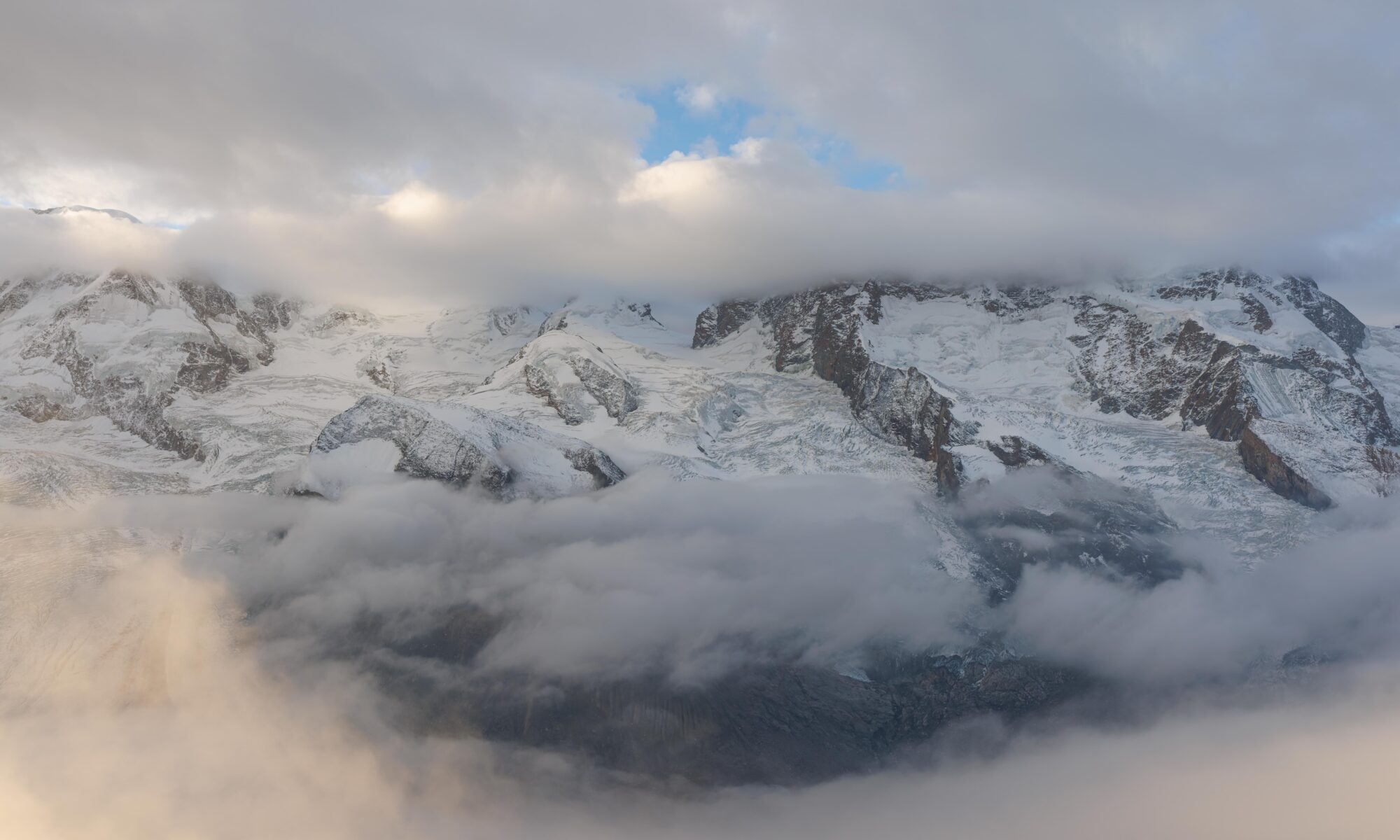After breakfast at the AC Hotel Innsbruck, we took the bus over to Rangger Köpfl in Oberperfuss where we rode three separate gondolas to the top. After enjoying the view, we returned to Innsbruck and visited the Swarovski Kristallwelten next to their factory in Wattens. After returning to Innsbruck again, we visited the river Inn and visited the city’s cathedral.
Morning

Once again, we woke up at the AC Hotel in Innsbruck right before sunrise.

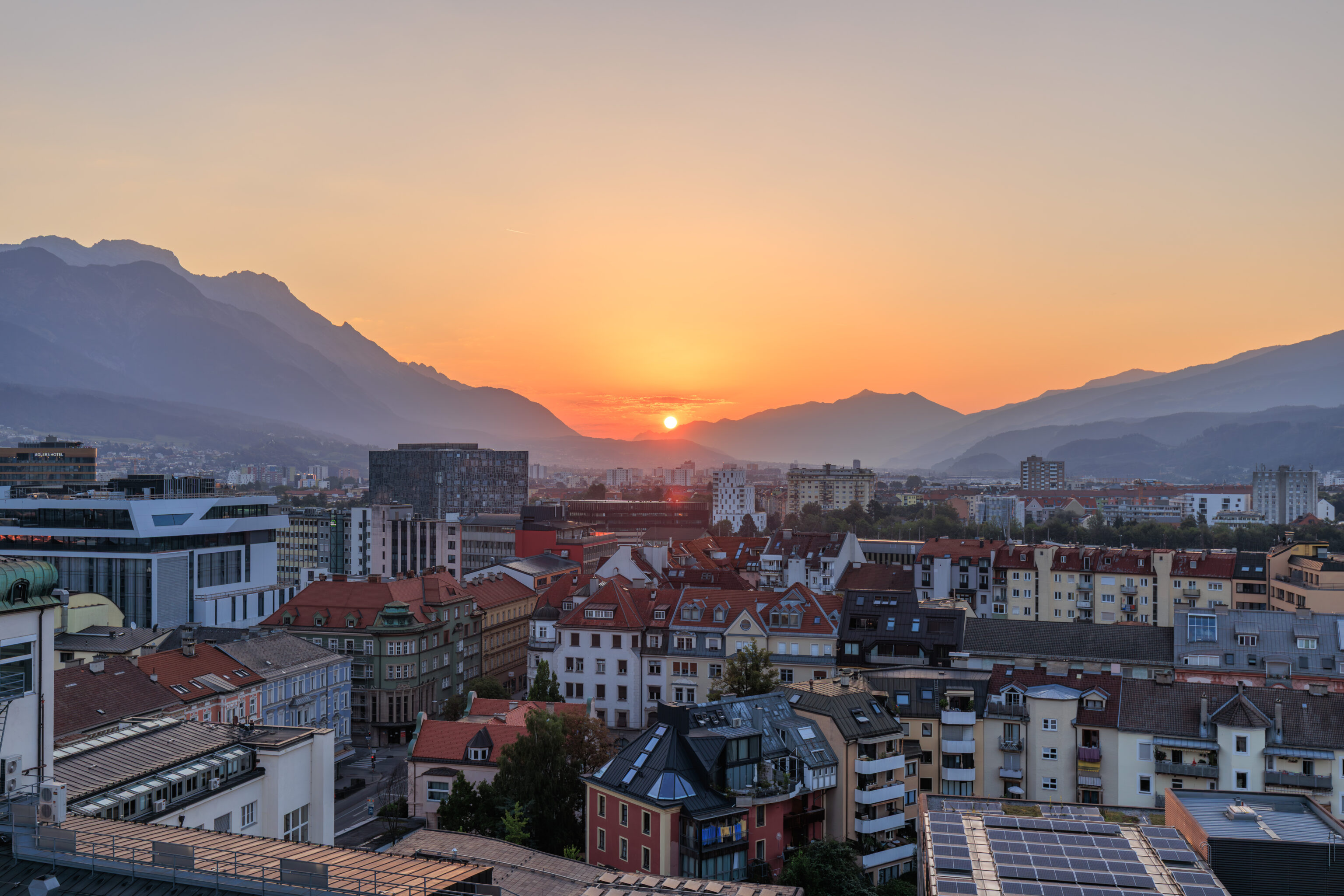
We watched as the Sun rose up and over the mountains to the east.


Breakfast was largely the same as yesterday, except with Nürnberg sausages this time. These sausages are probably the closest to American breakfast sausages.
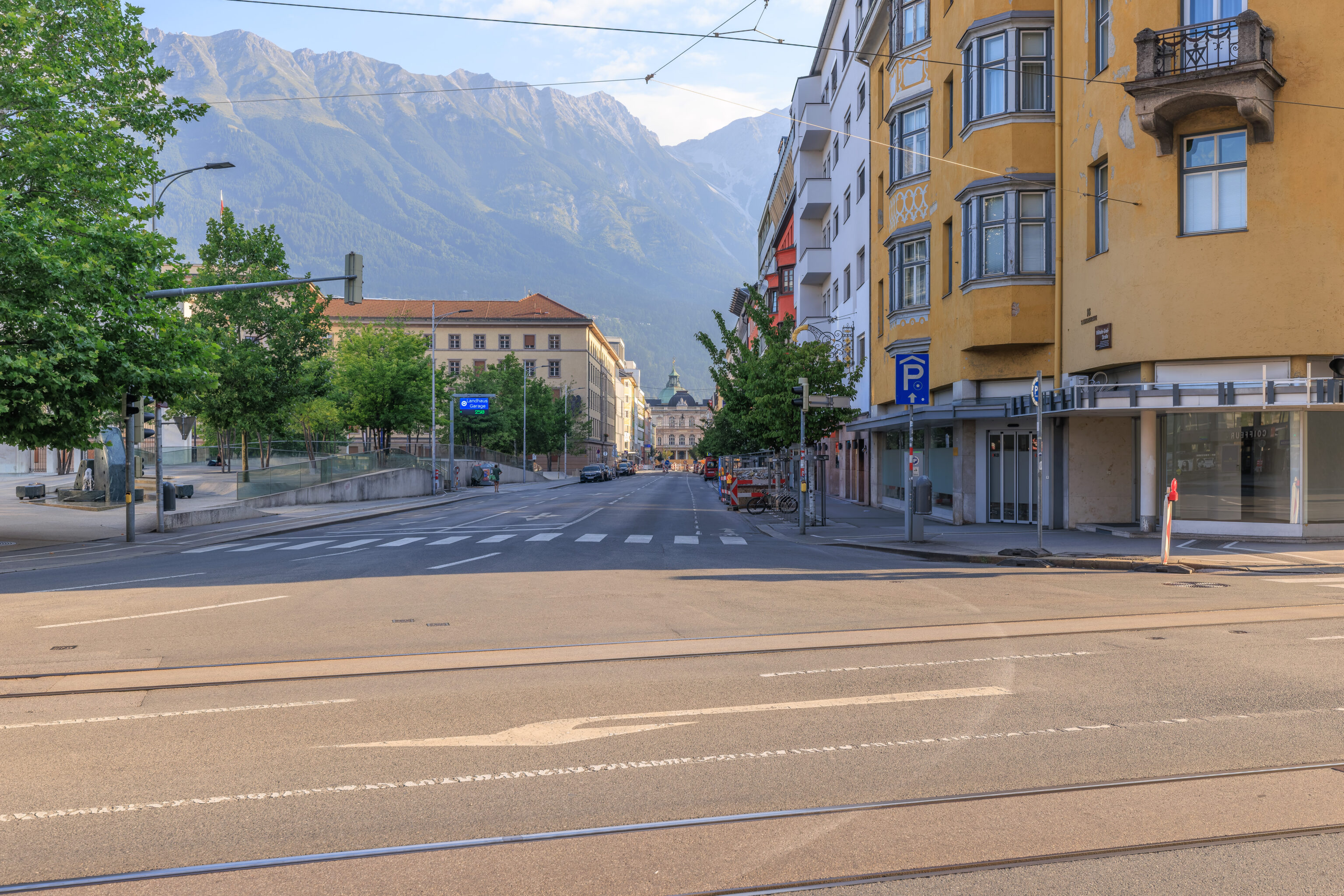
We started to walk over to the train station to catch a bus to Rangger Köpfl in Oberperfuss.
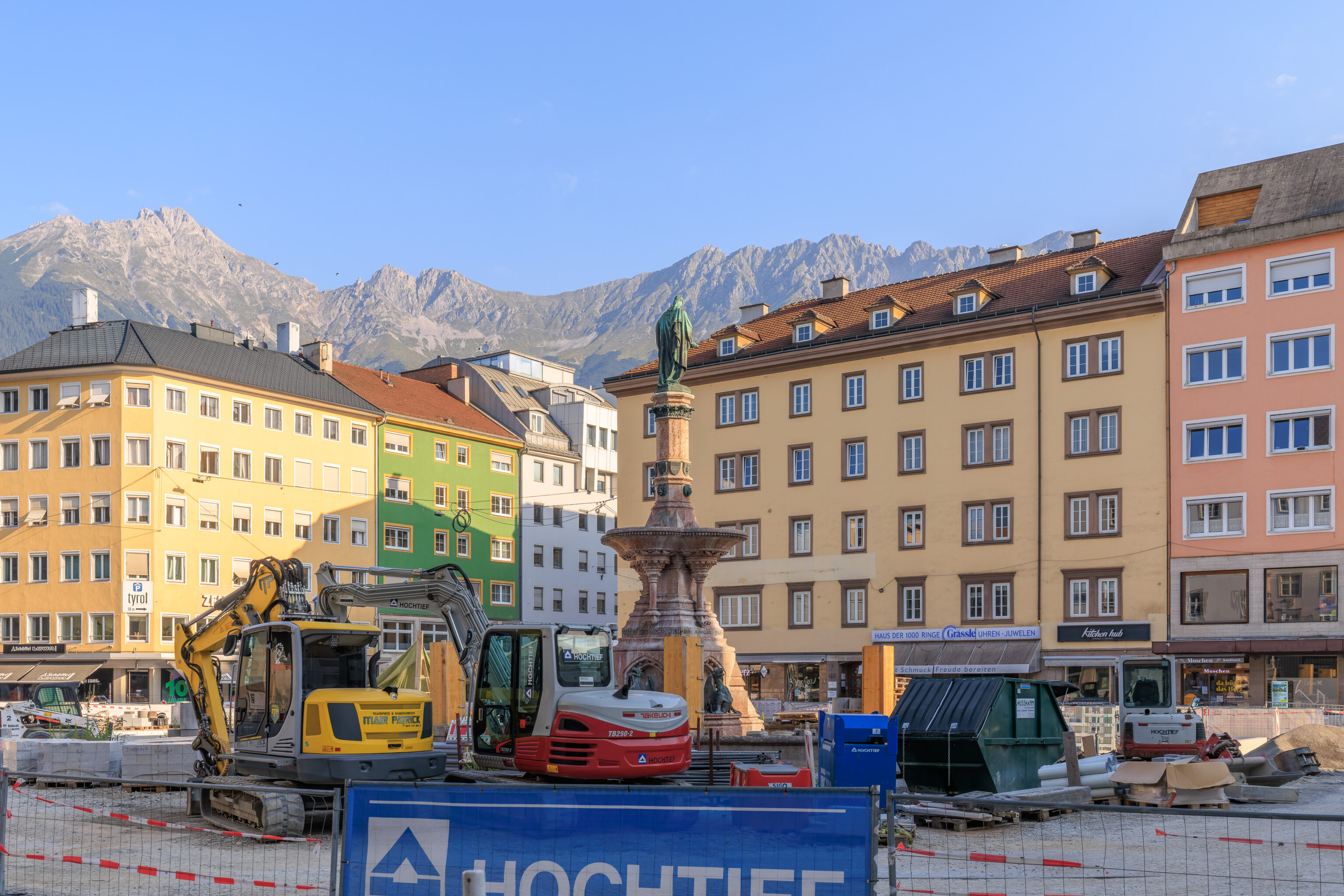
We decided to take a slightly different route one block to the north of the most direct path. We came across a construction site at the Boznerplatz. The fountain in the middle is interesting as it features dragons. Unfortunately, we couldn’t get any closer.
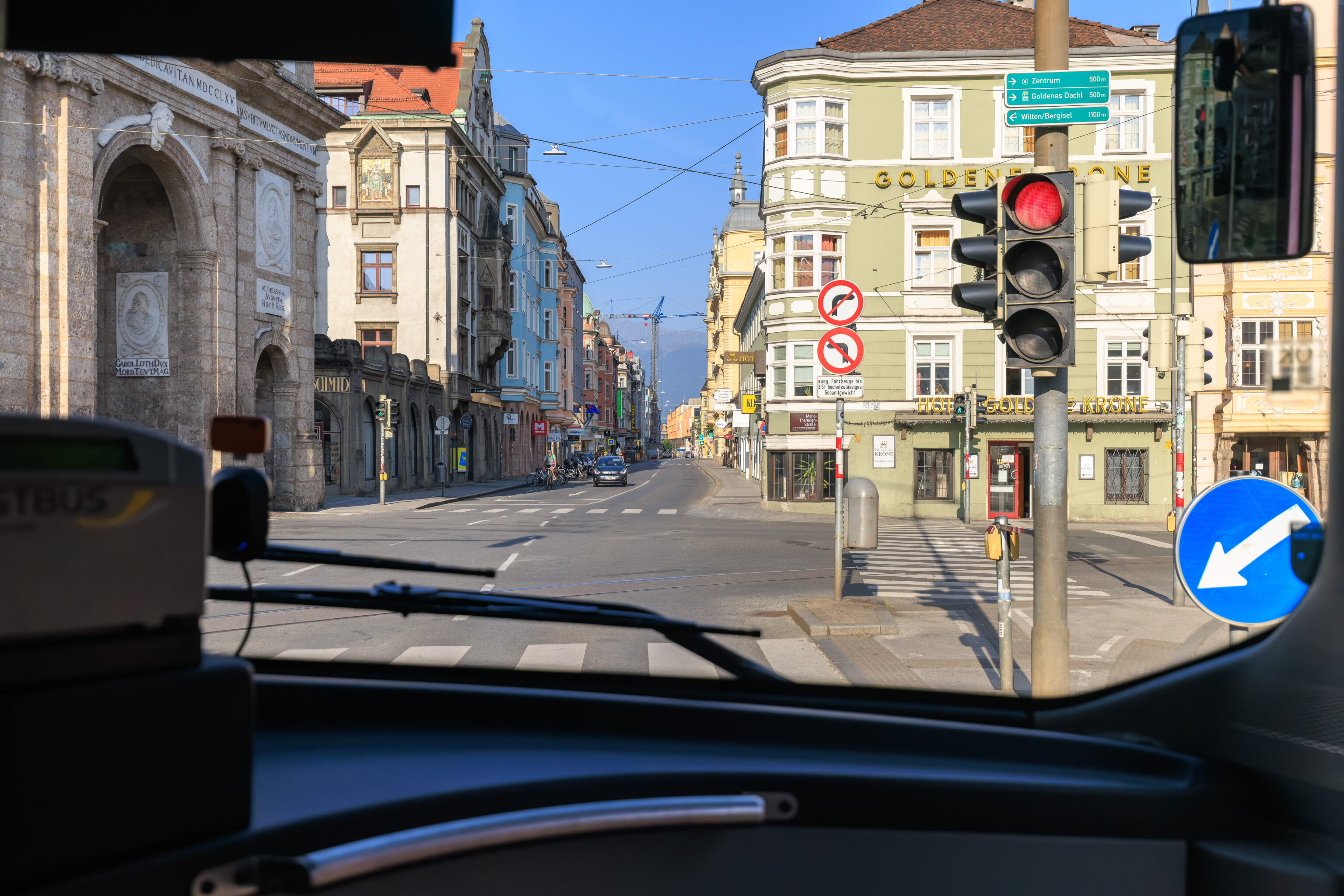
We caught the next 461 bus to Oberperfuss. The entire trip is included with the Innsbruck Welcome Card.
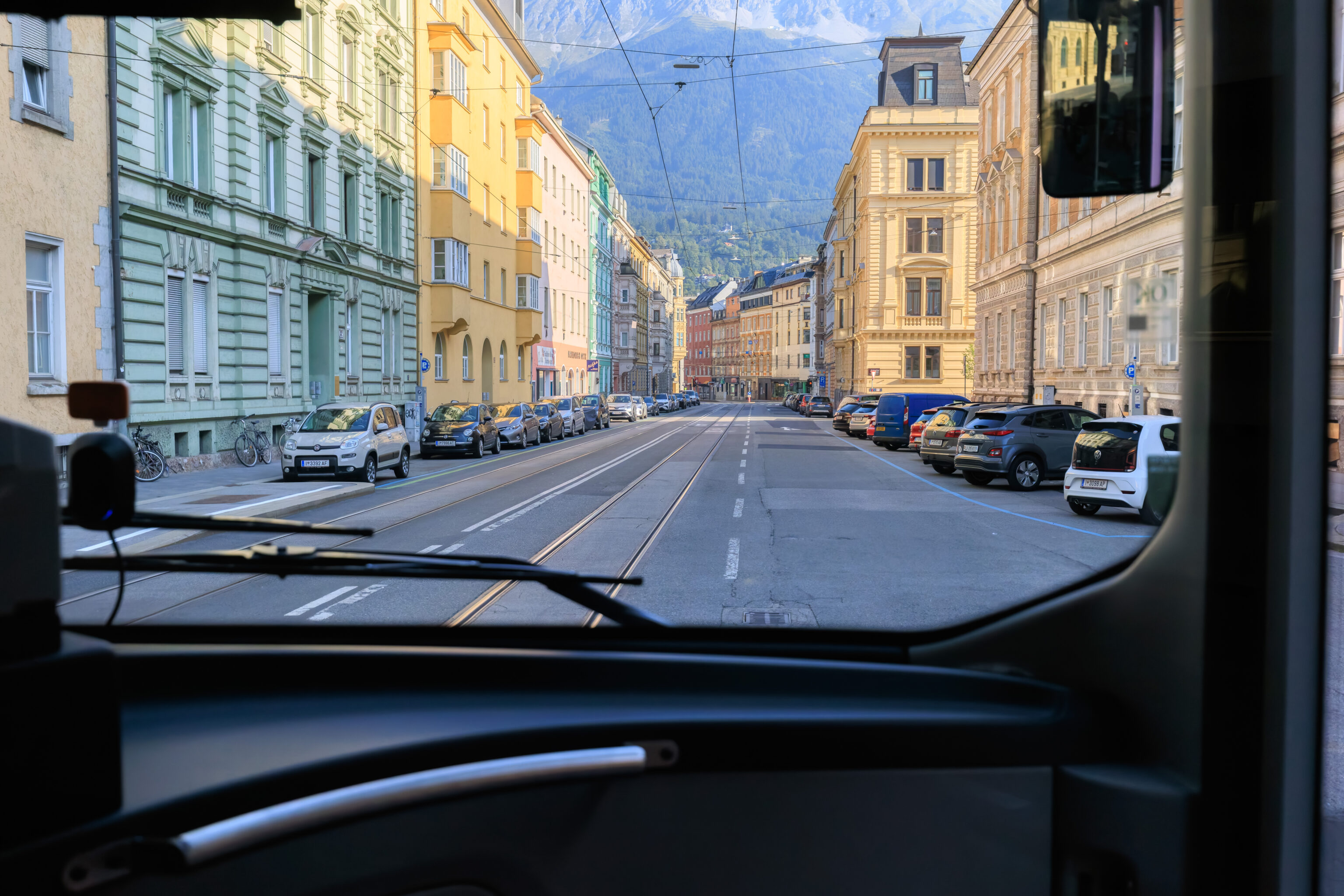

The bus route goes through the city and exits on the west side, roughly following the river Inn through the valley.
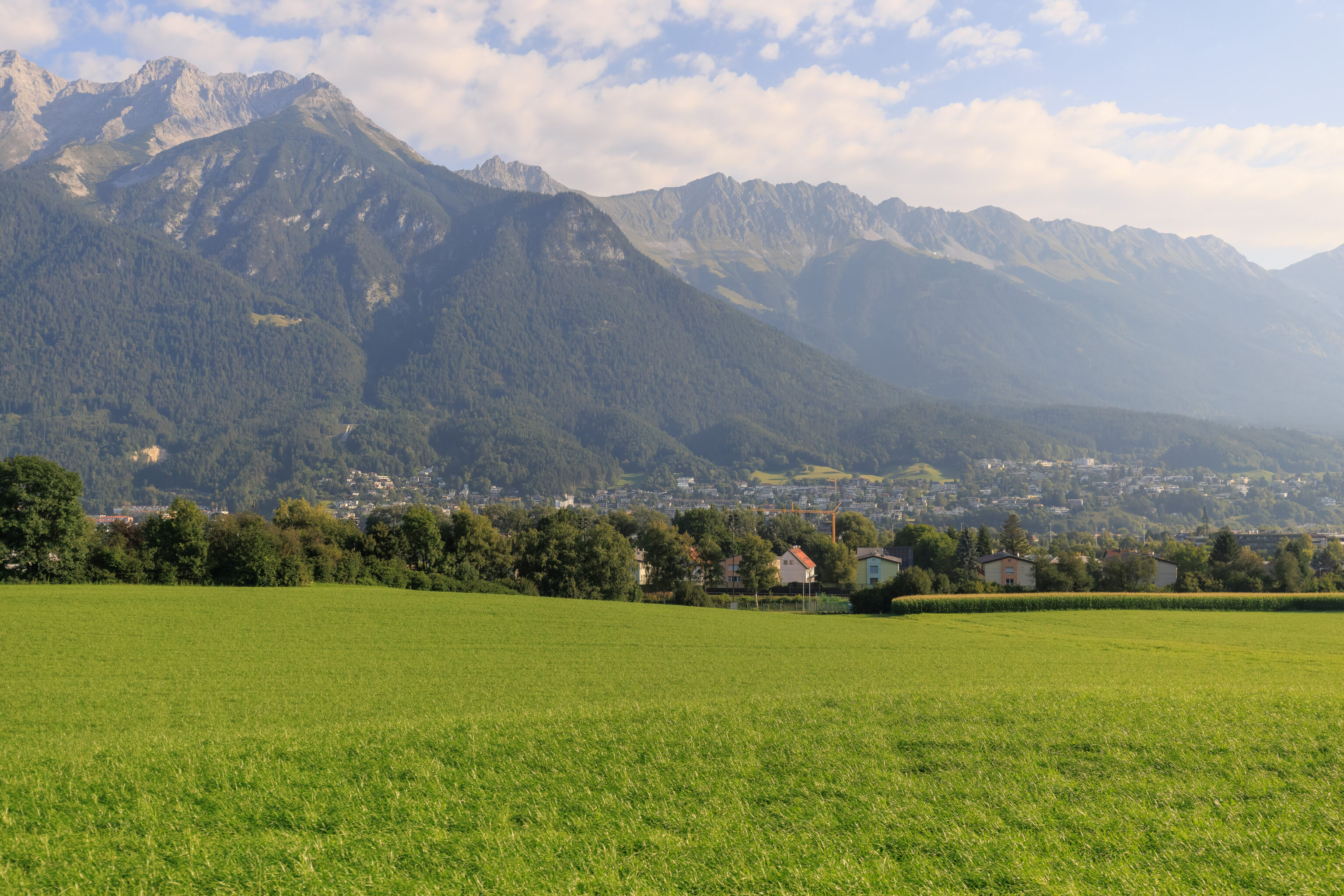

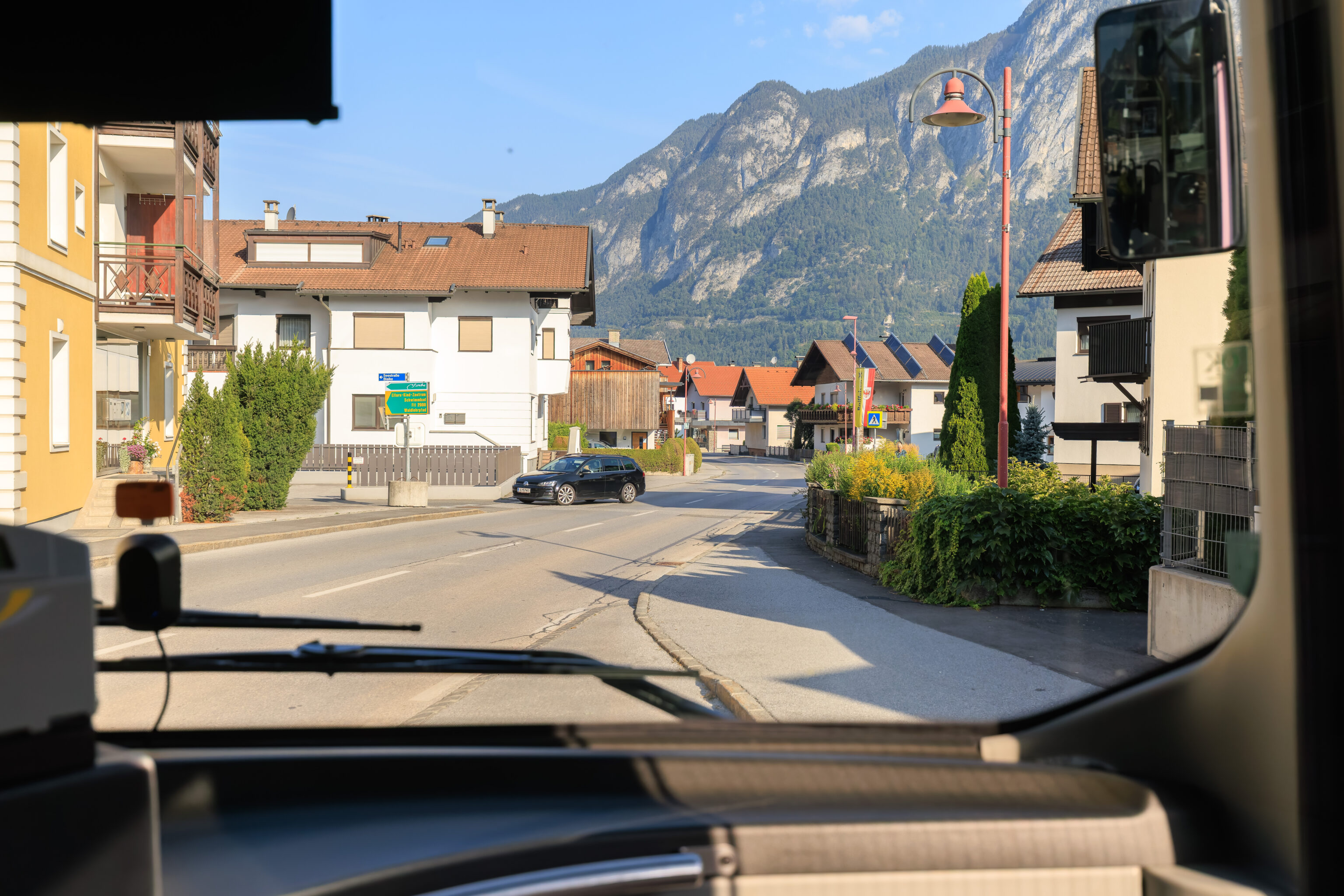
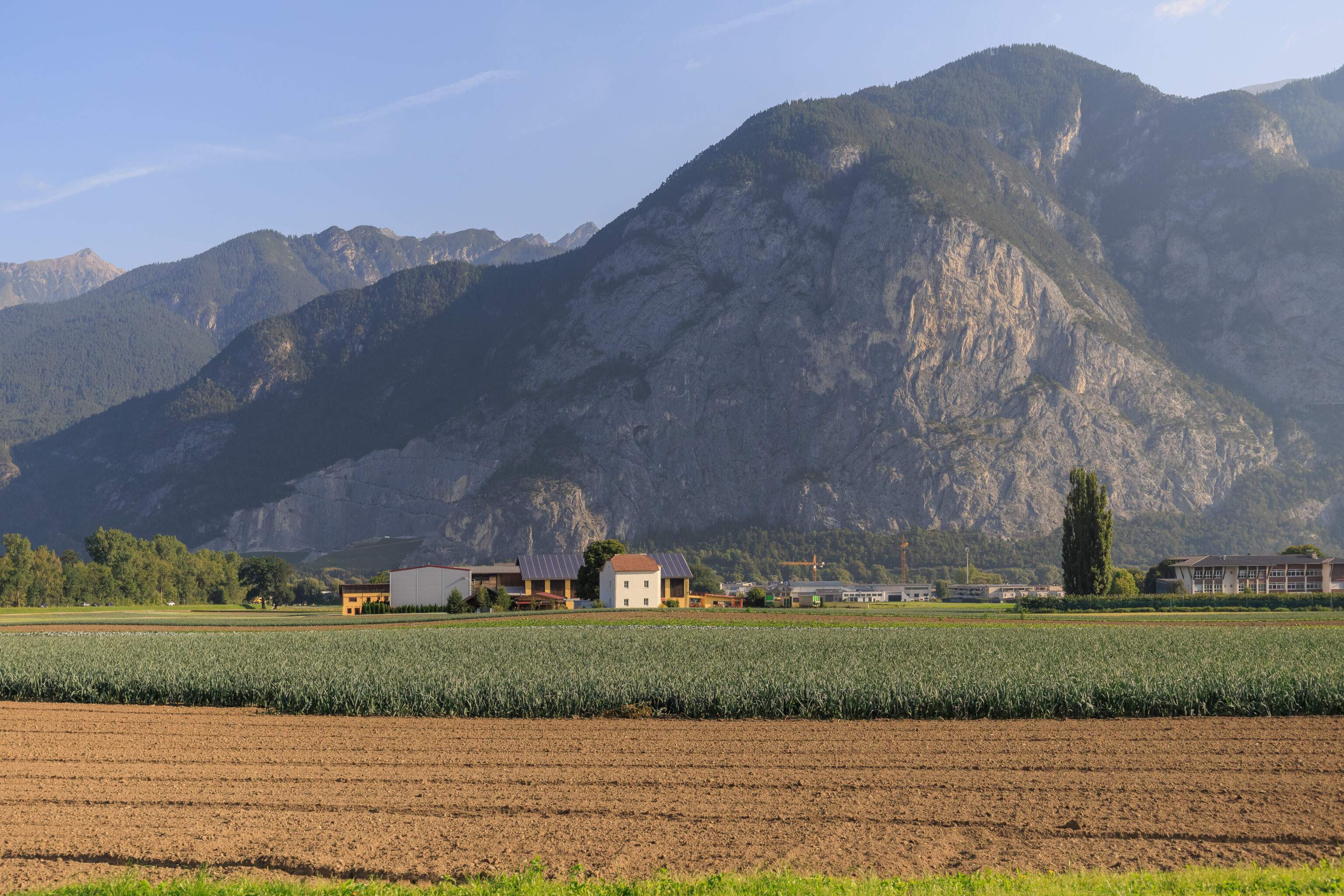

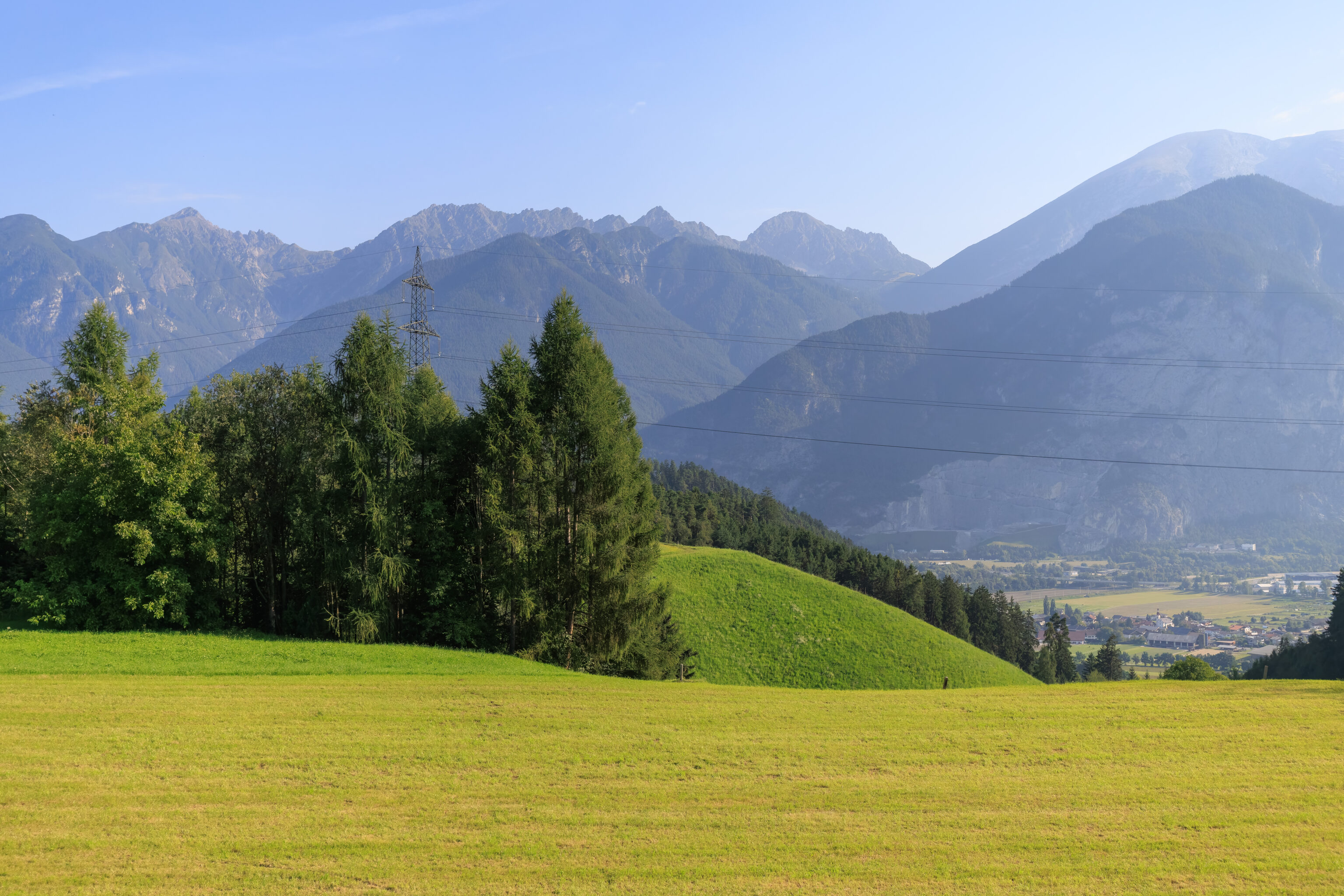
Soon, the scene turns more rural. The route passes through a few small towns on the way.

We even came across an alpaca farm!
Rangger Köpfl

The trip to Rangger Köpfl took about 40 minutes.

This sign, which we saw mid-mountain, has a good map of the area. We plan to go to the very top. The gondola here is included with the Innsbruck Welcome Card Plus. Technically, it mentions that sections I and II are included. It makes no mention of section III. The Bergbahnen Oberperfuss website does mention in German that section III, referred to as PA3, is open on weekends only. So, we’ll see.
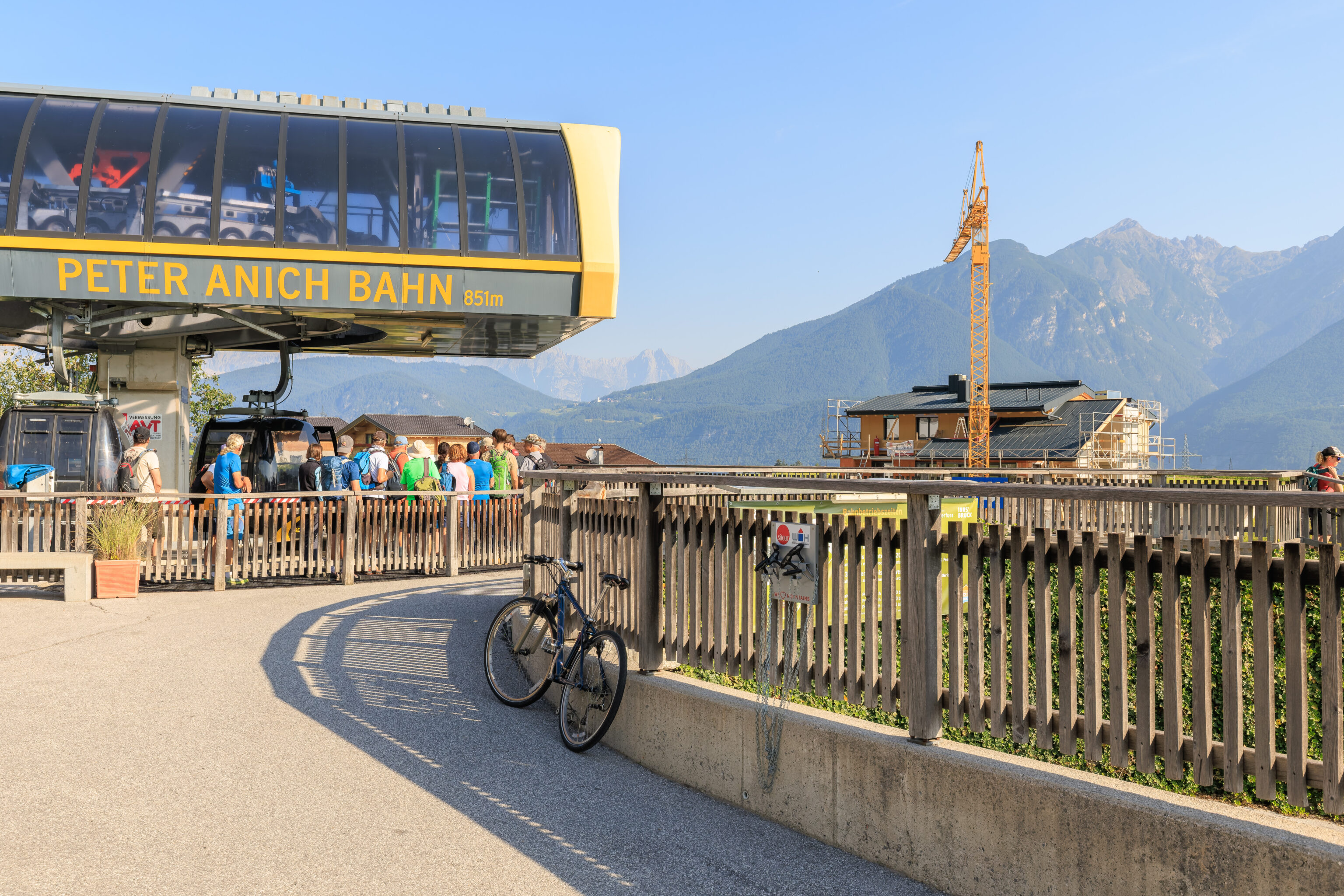
It was busy when we arrived, but only because of all the people who rushed off of the bus. We decided to hang back a bit.

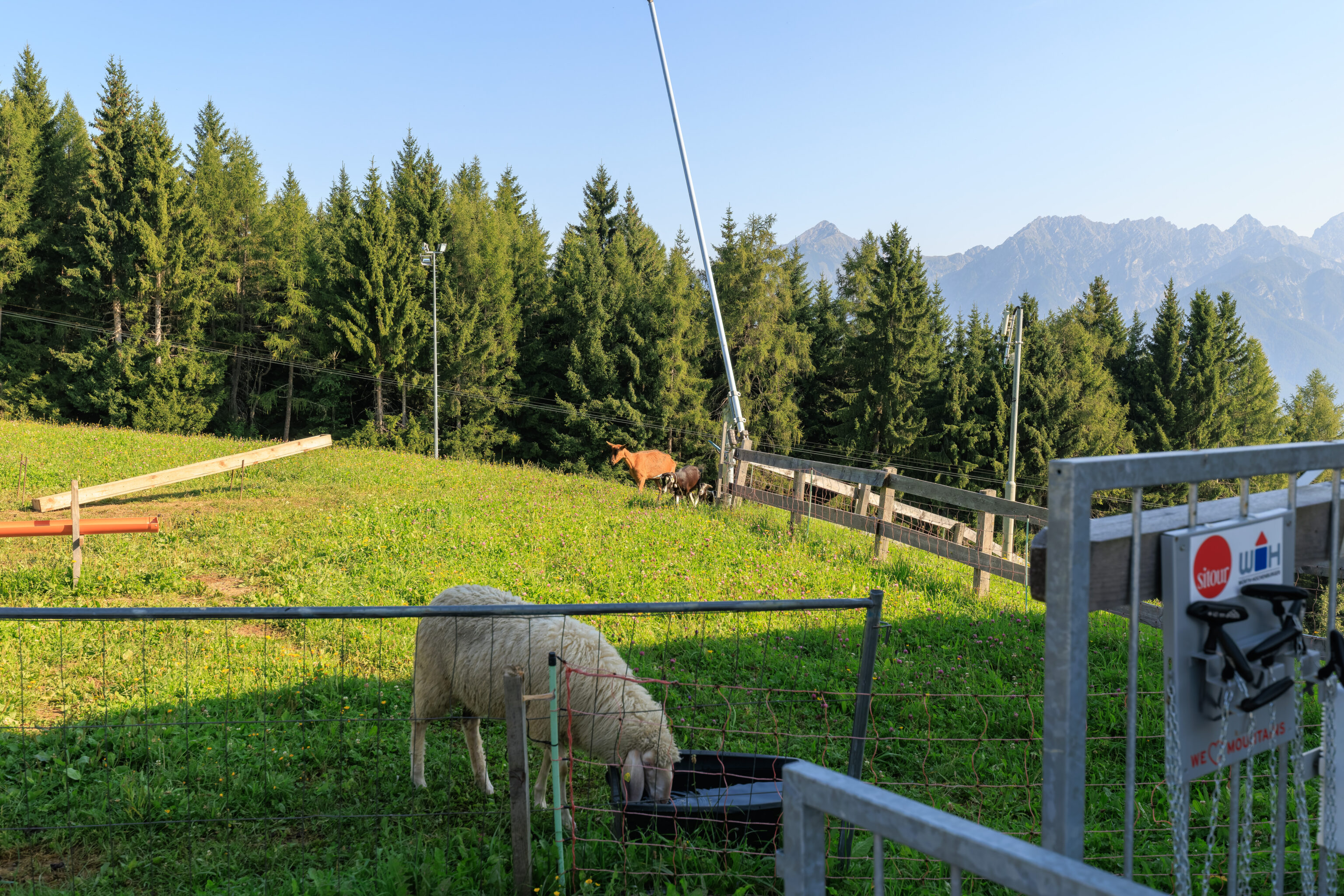
The gondola’s windows turned out to be pretty poor for photography, particularly with the sunlight shining in. The first gondola ended here at Stiglreith at around 1,400 meters in elevation. We saw a few sheep and goats next to the gondola.
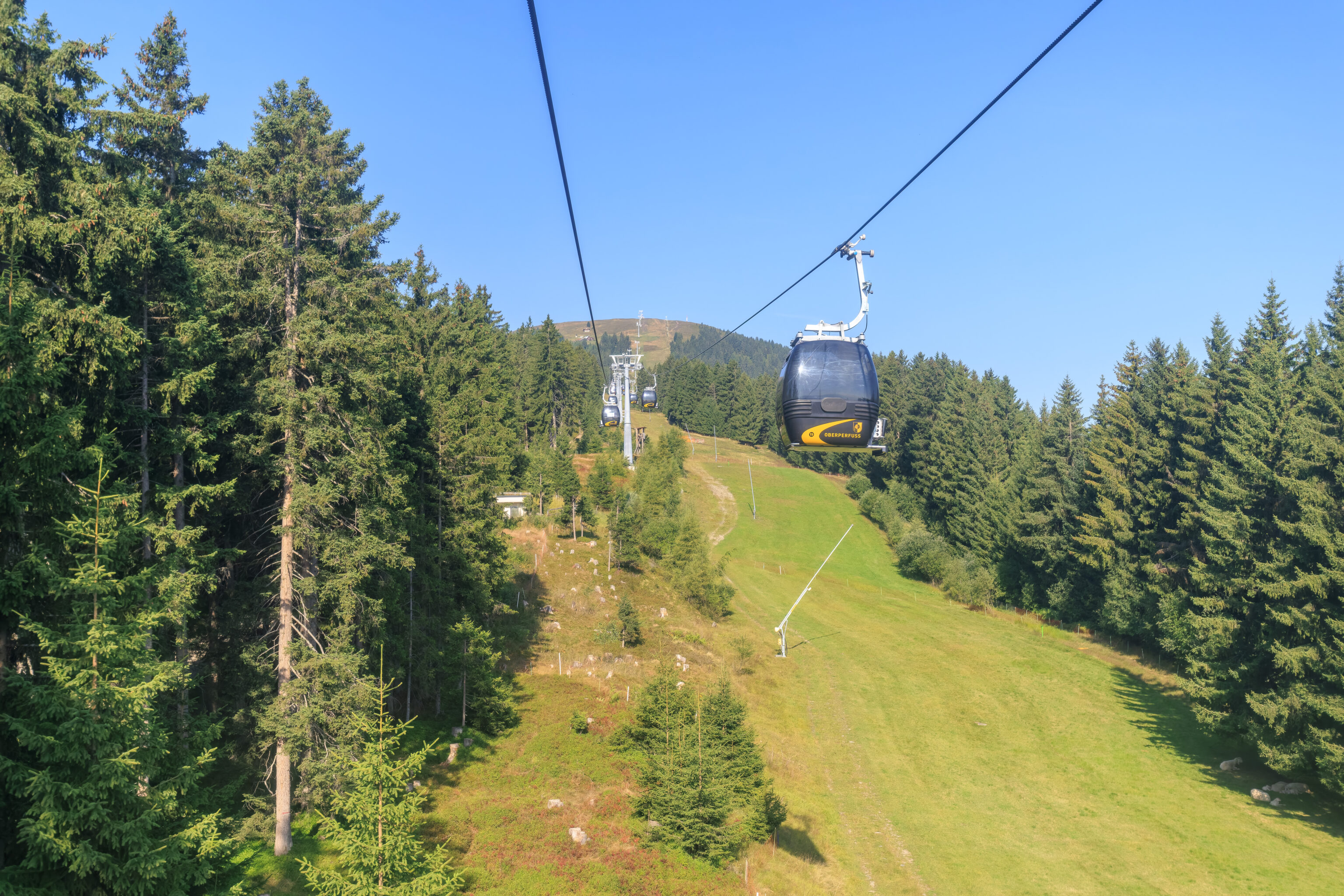

We boarded the next gondola, which took us up to about 1,650 meters. The map that we posted above was seen here next to the gondola. There is a reservoir here as well as various hiking paths.
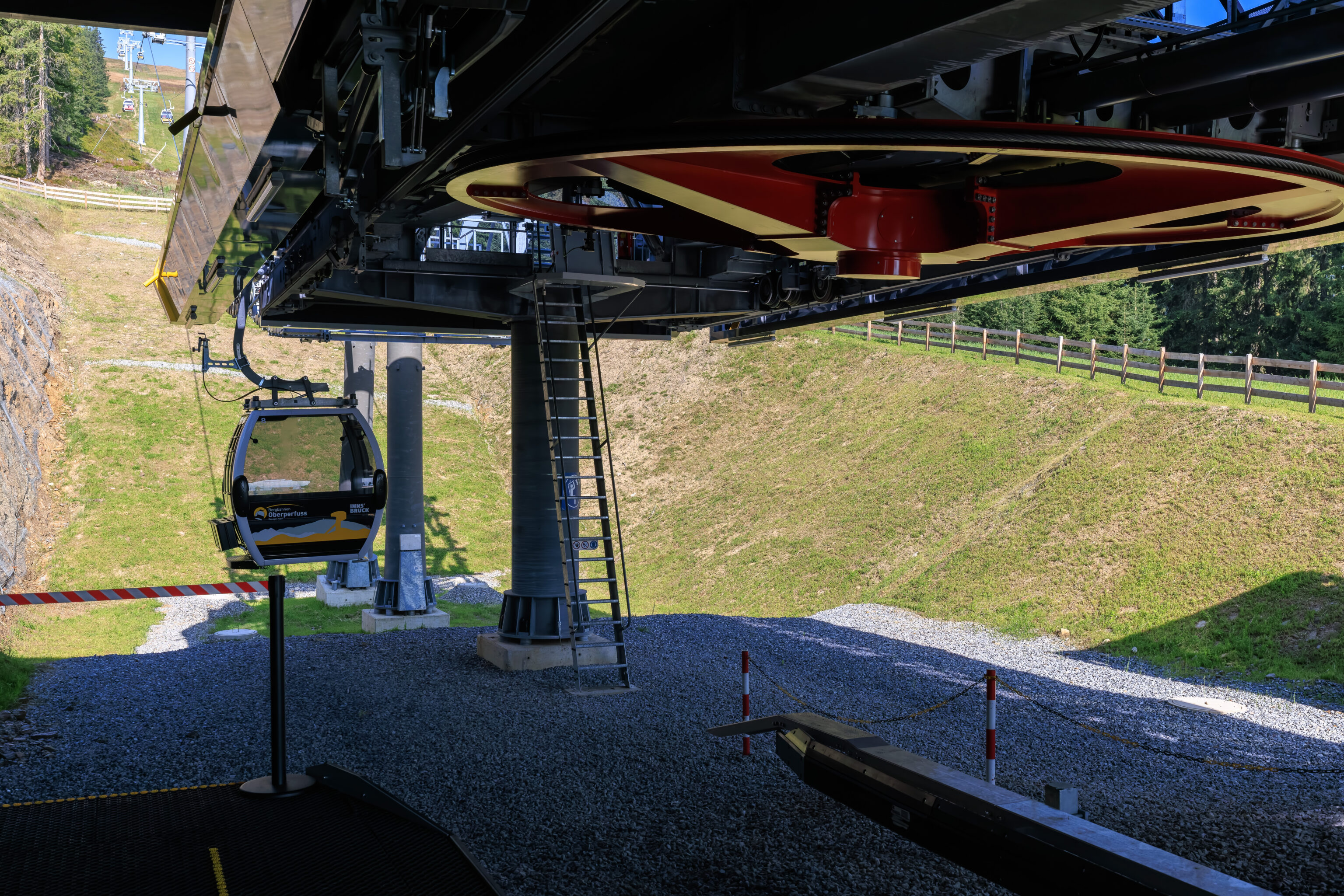
We decided to head up first though. For the first two gondolas, we were able to use our Innsbruck Welcome Cards at the entry gates. However, they did not work here. The staff asked if we had the Welcome Card and let us through.
It turns out that this last gondola is new and opened in January. It operates as a combination chairlift and gondola, though we only saw gondola carriages today. It seems that it replaced an older T-bar surface lift.

We spotted a few more sheep below from the gondola.

The upper gondola station at around 2,000 meters.
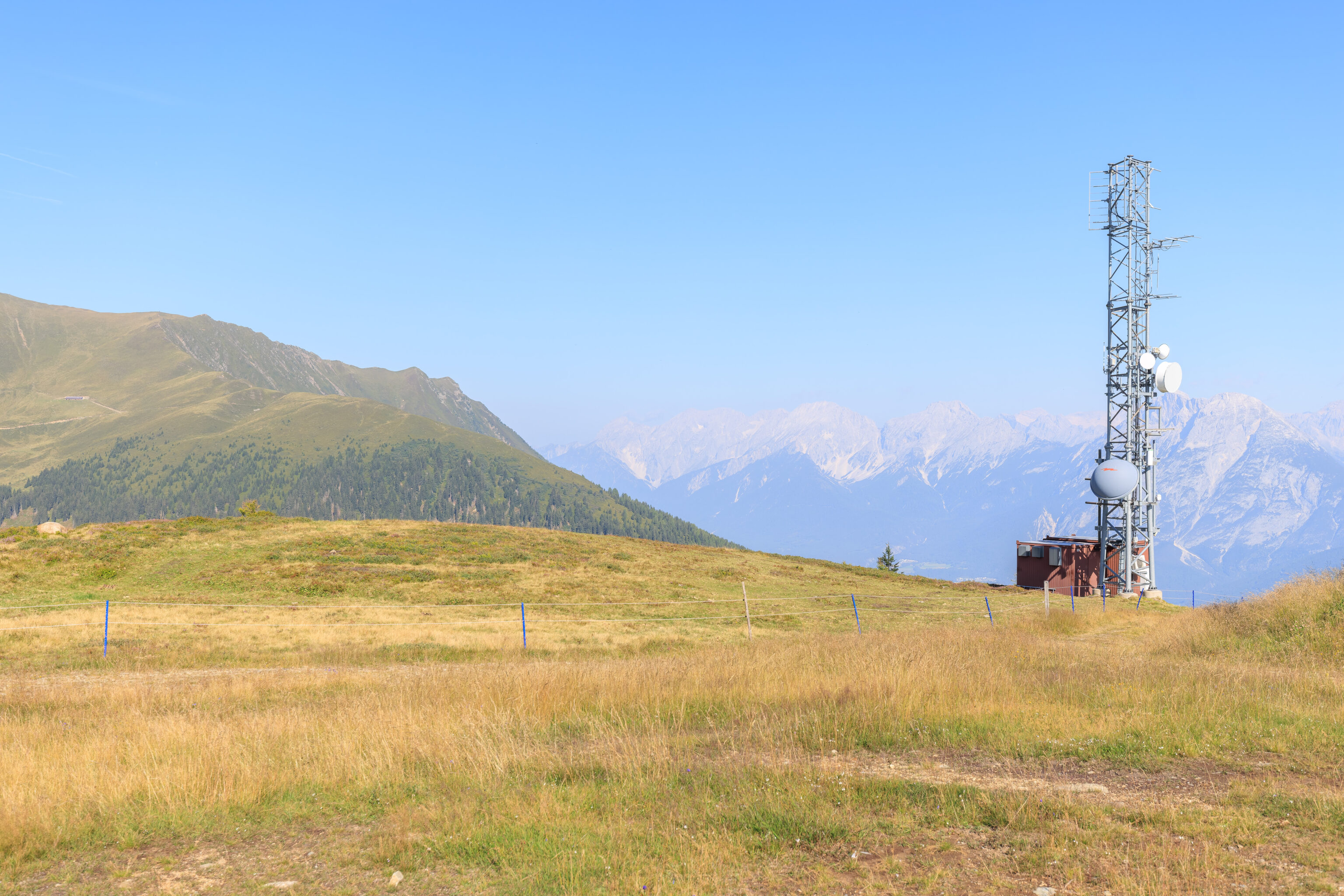
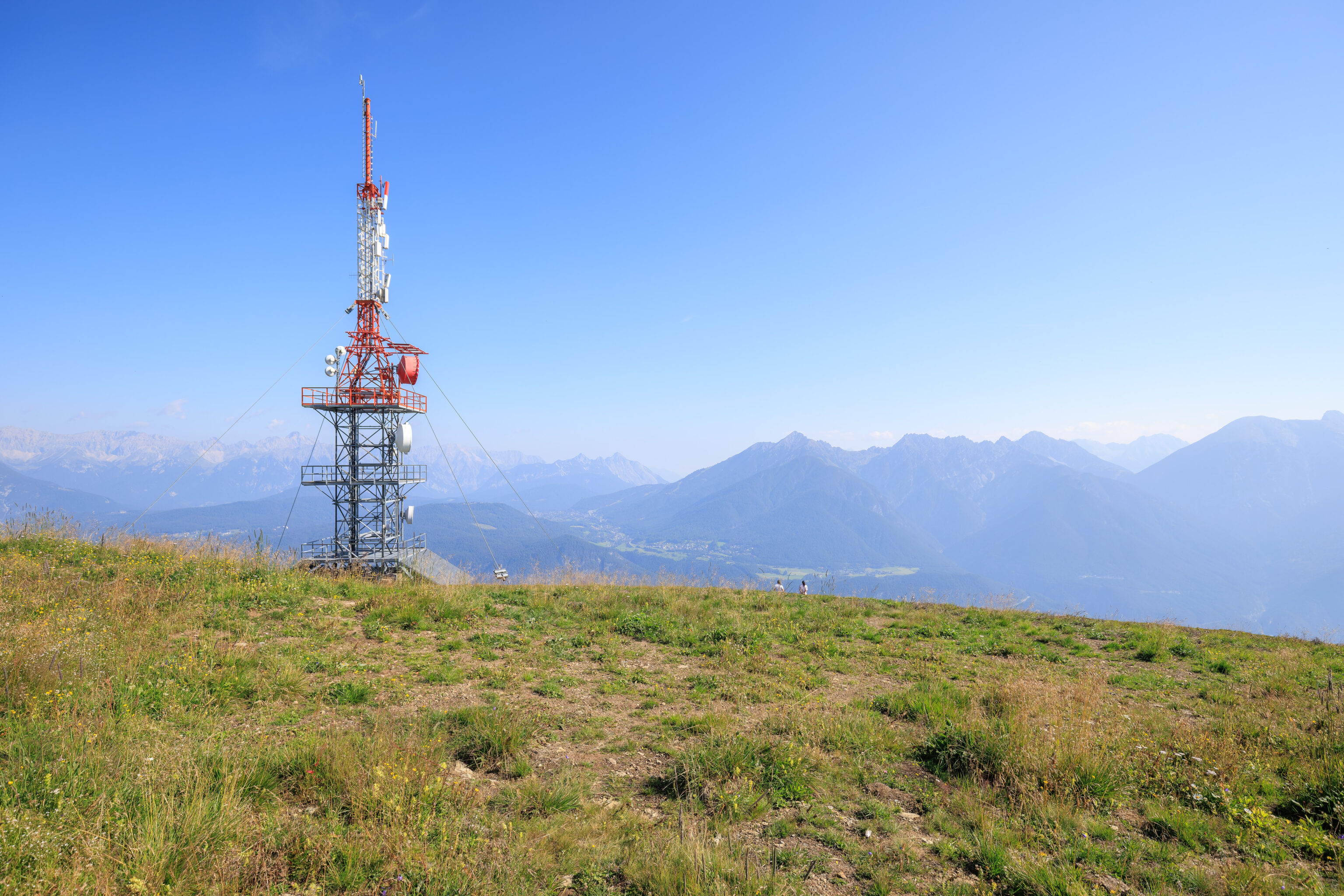
There’s not much at the summit, which is just a short uphill walk from the gondola. We spotted two transmission towers.

Looking back down, we could see a small elevated observation platform as well as what seems to be the towers from the old surface lift.
We actually had walked straight up to the summit area, however, there is actually a slightly less steep path off to the side.
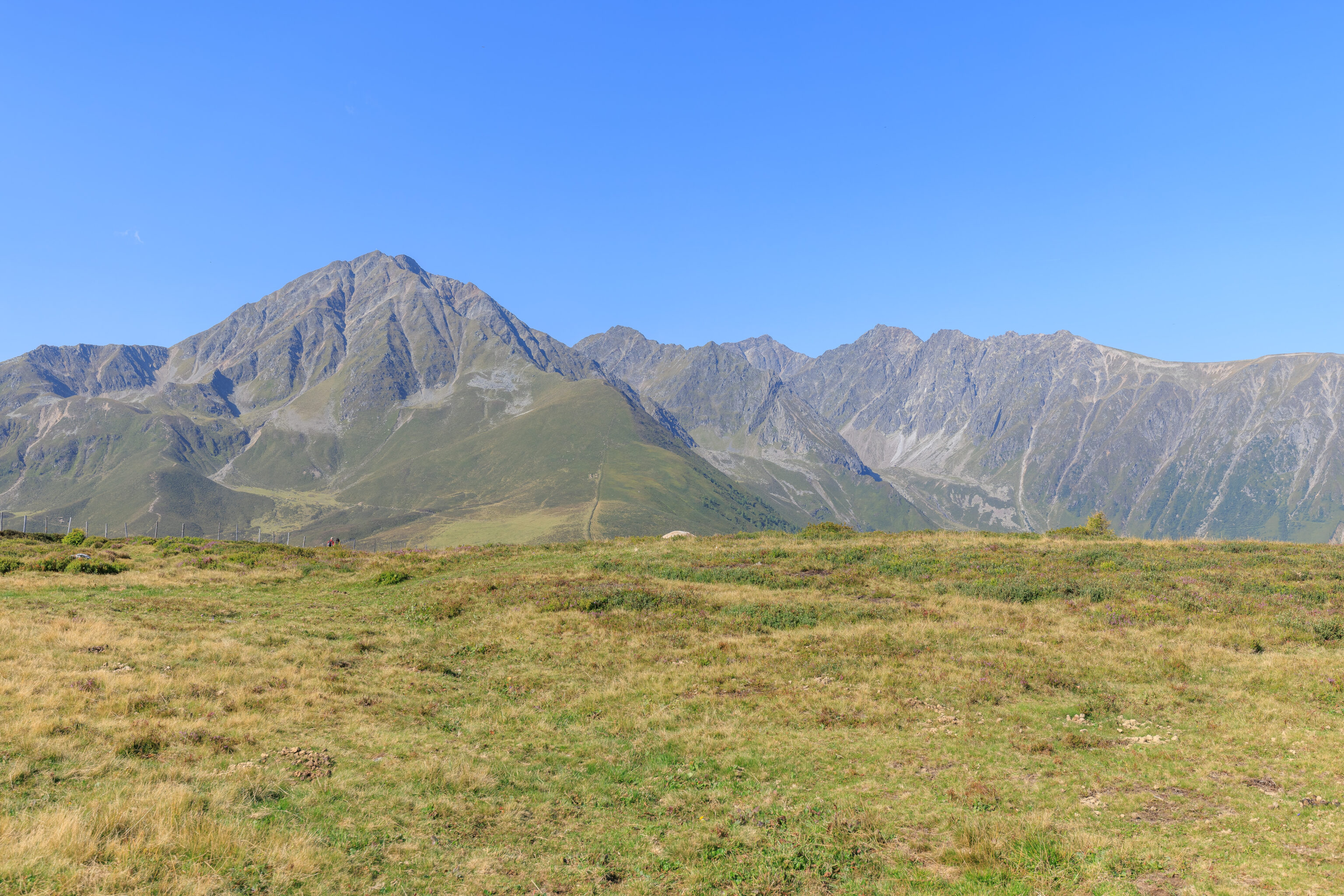
Most people that came here seemed to pass through a gate to hike to the southwest.
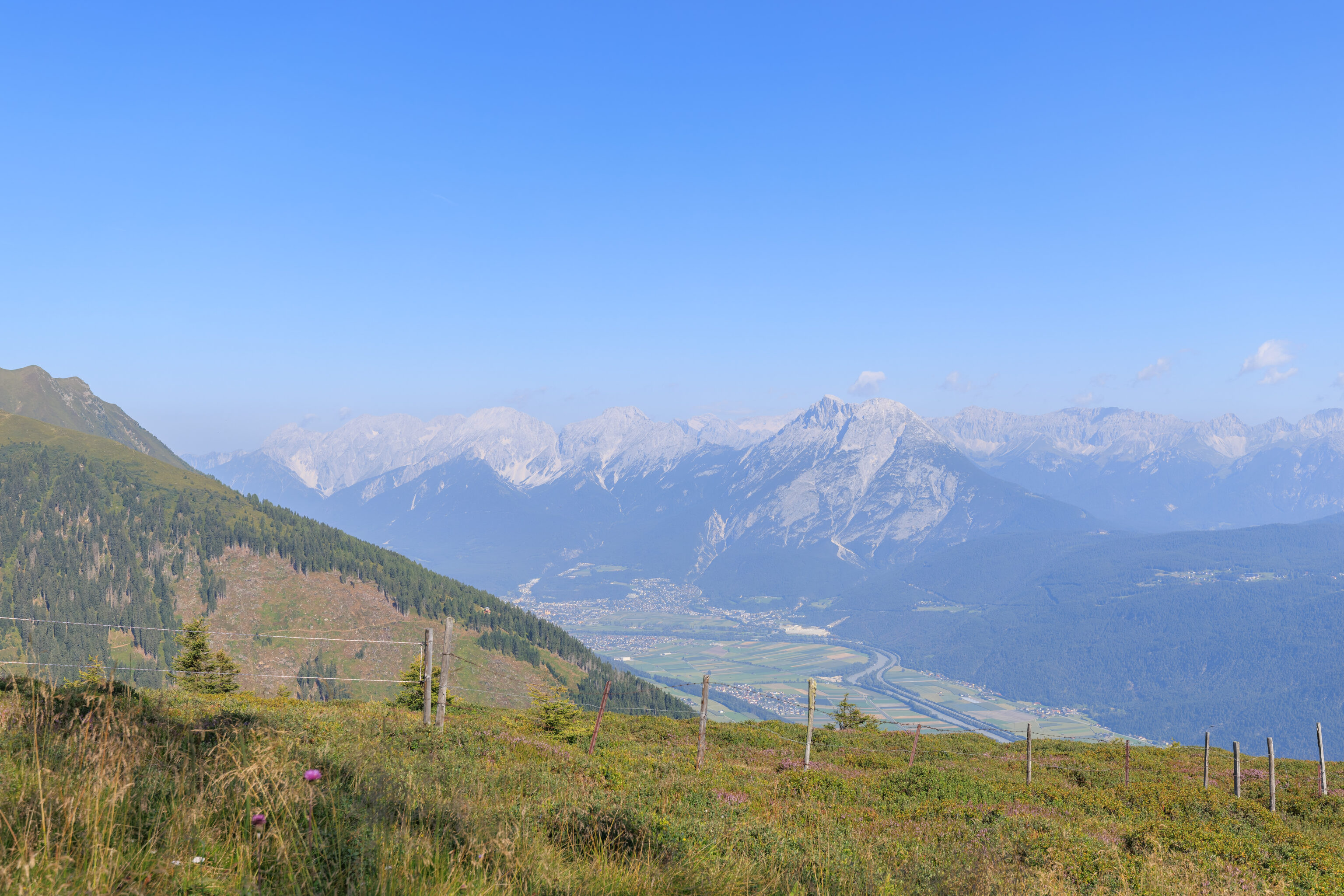
We decided to just walk around the summit area a bit. Walking to the north from the summit, we were able to see down into the valley below.
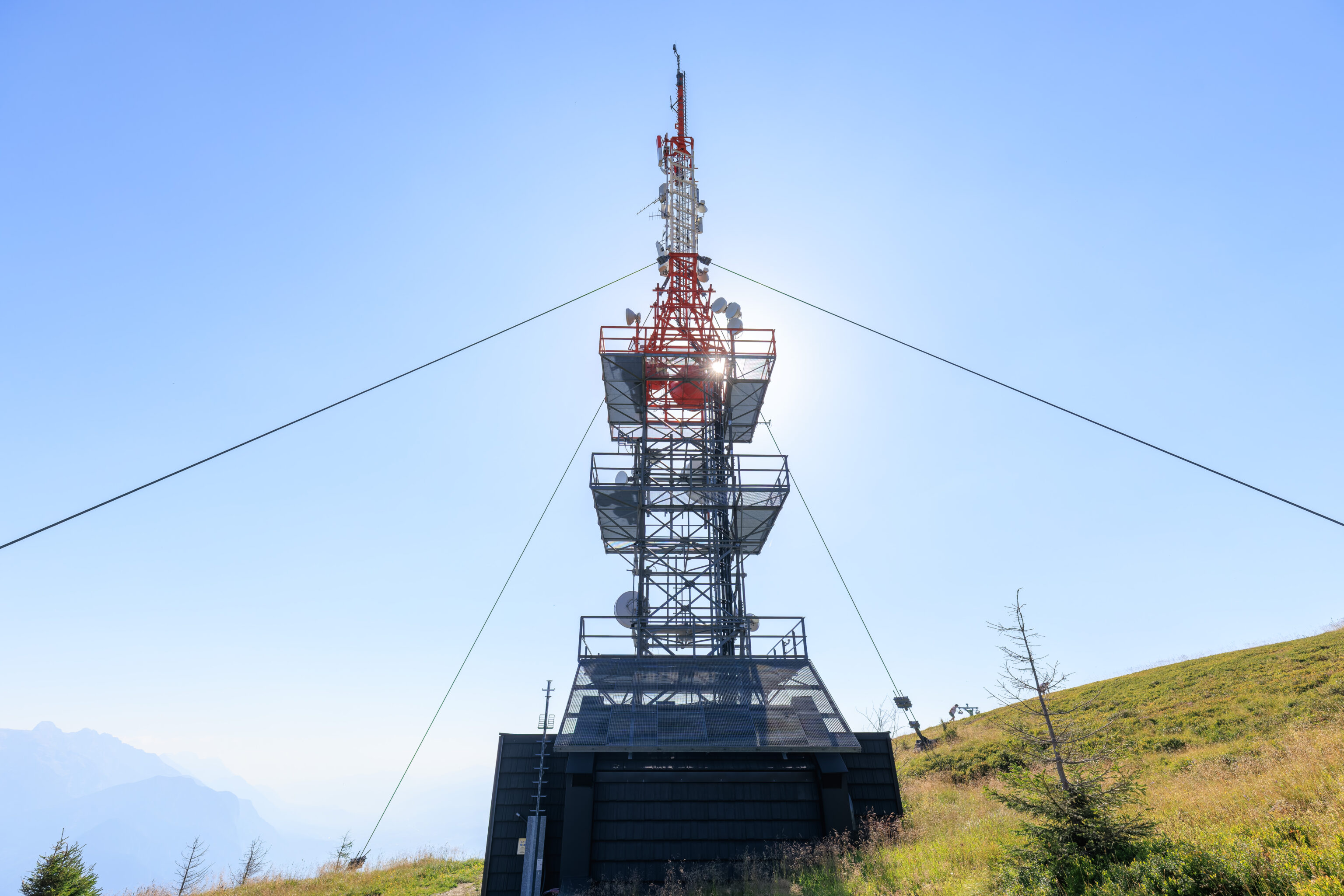
The larger of the two transmission towers provided a bit of shade from the hot sun!

We switched to the telephoto lens to take a look around. We were able to spot the Zugspitze! This peak is at the center of the frame but in the background. It is shared by Germany and Austria and is the highest point in Germany. We visited last year, ascending on the German side and walking over to the Austrian side for lunch.
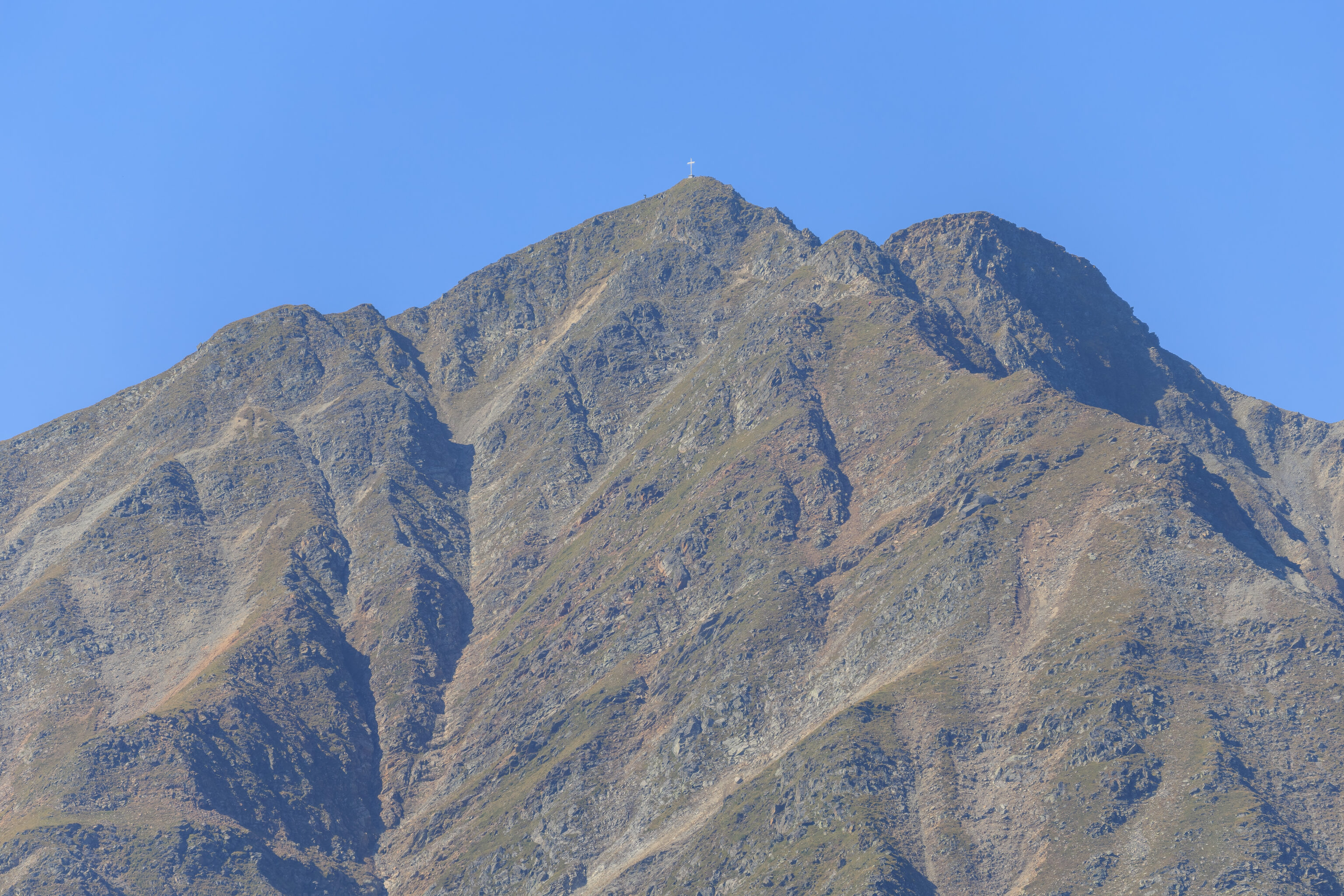
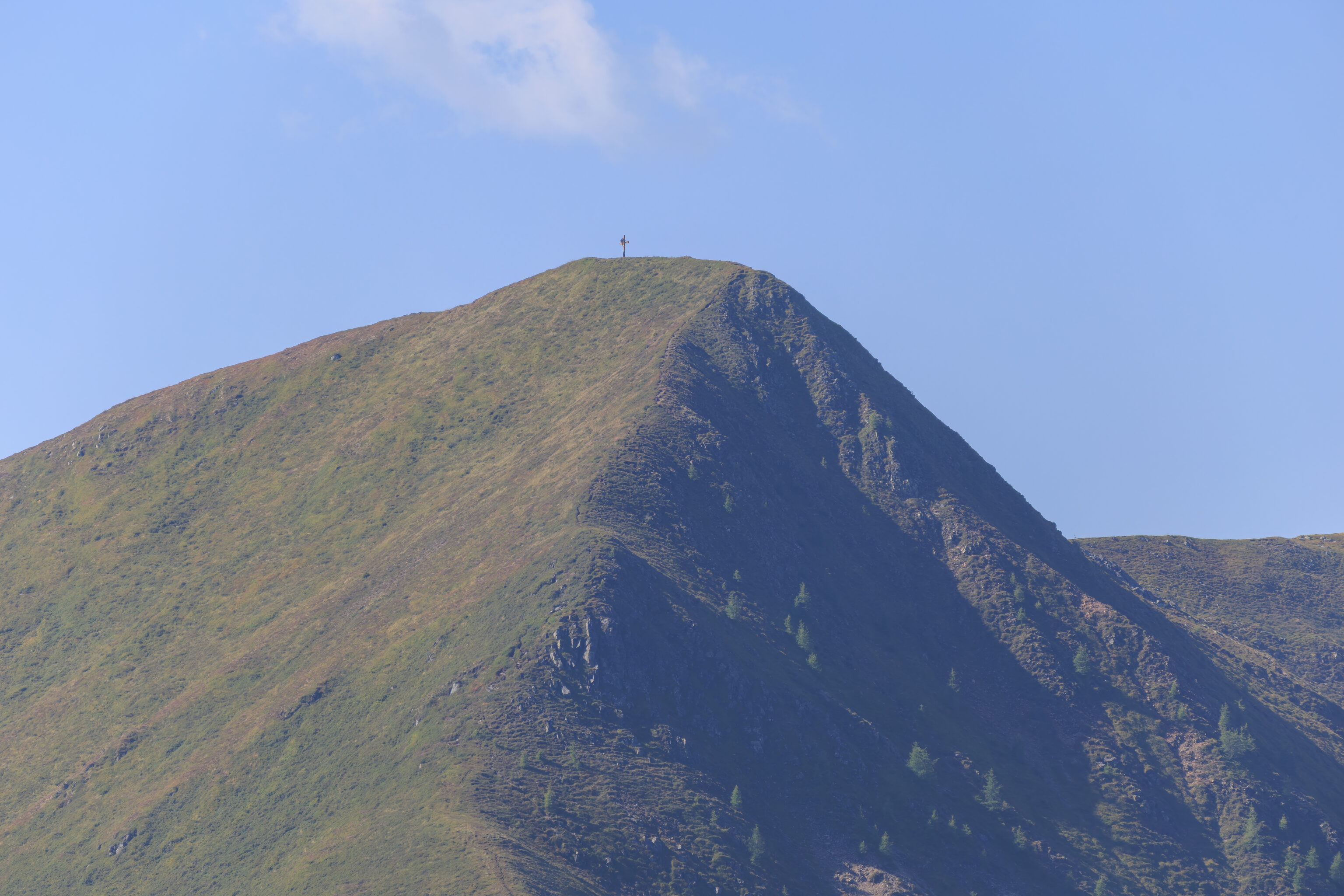

We also looked around at some of the closer mountains.
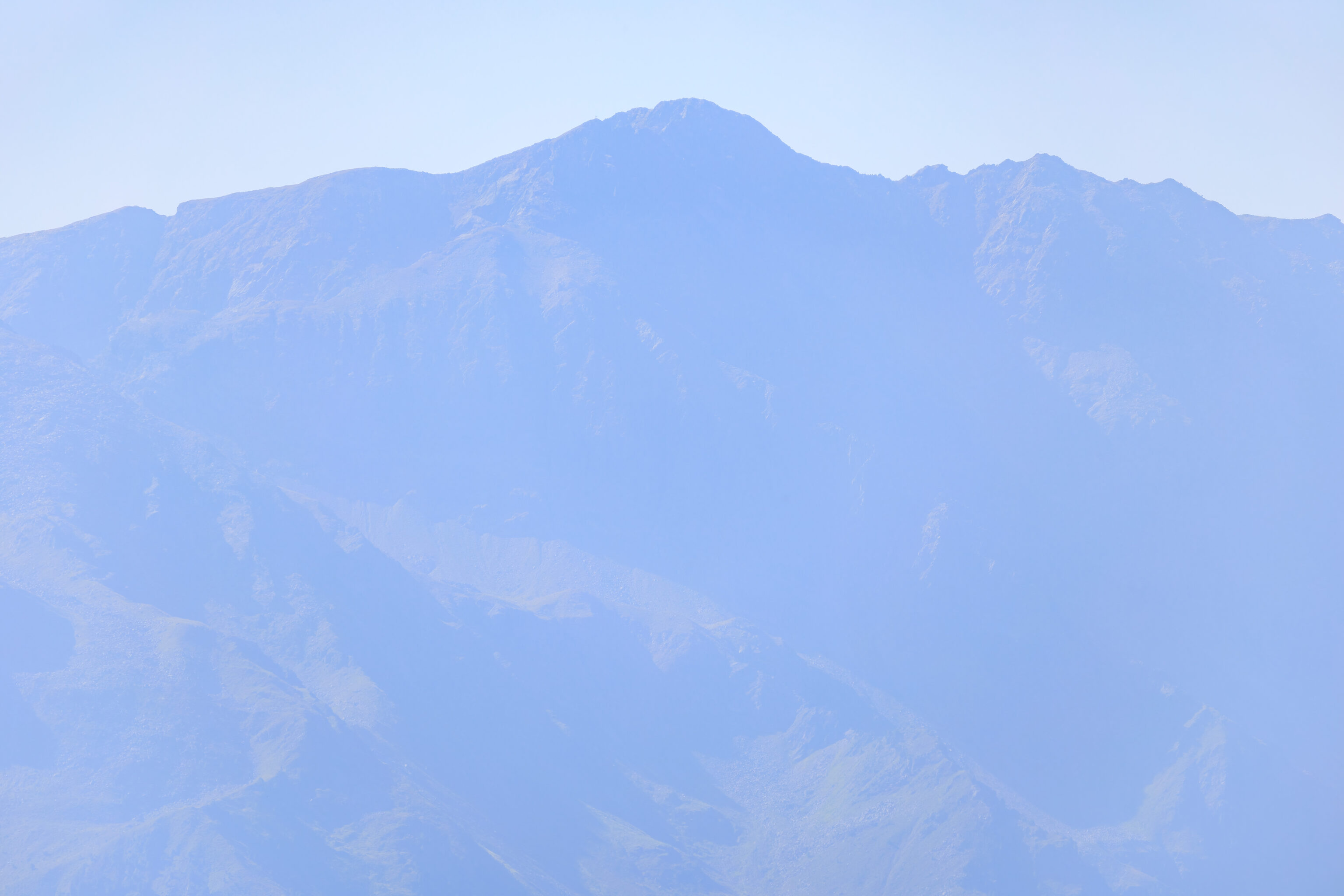

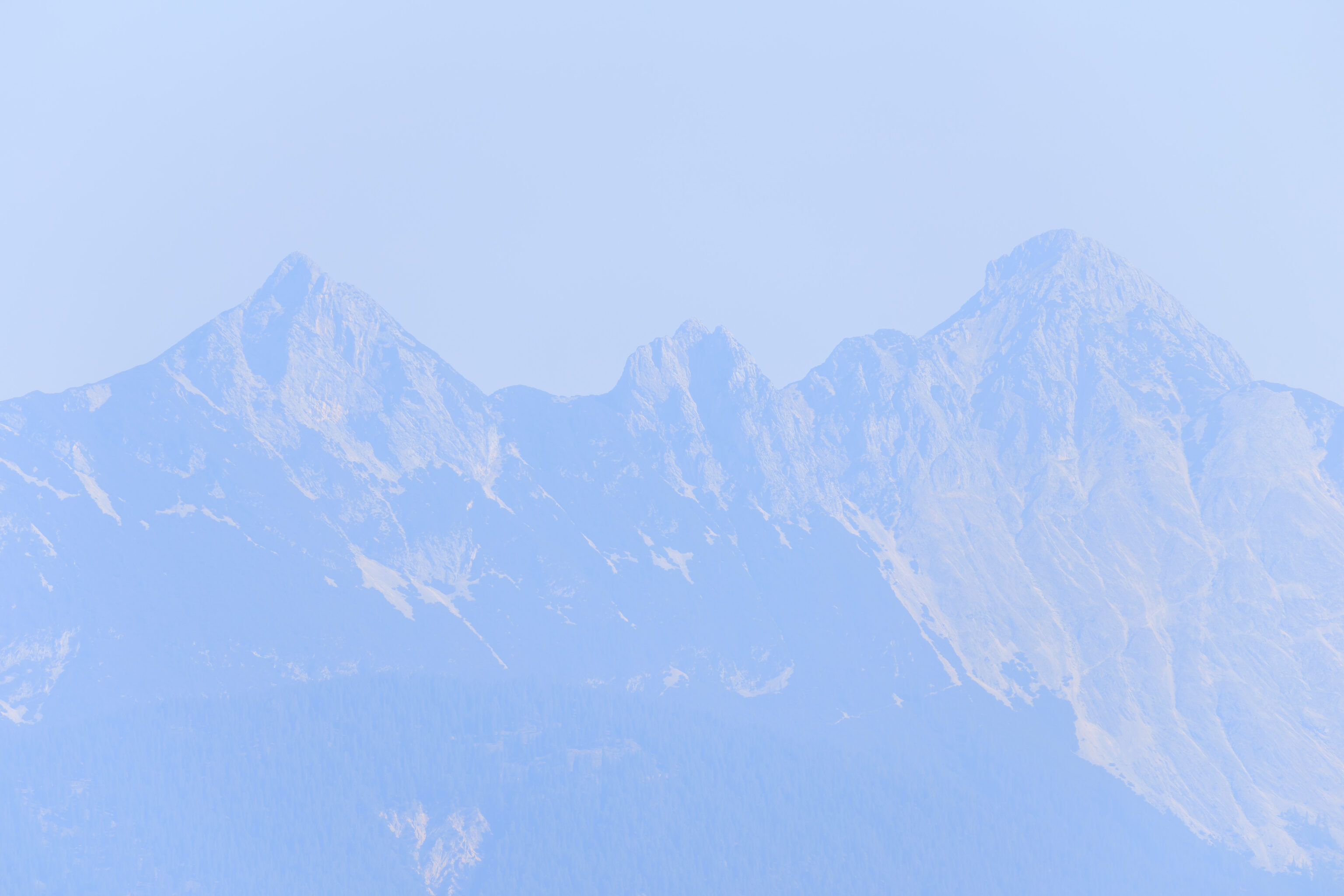
We also looked at some of the peaks that were further away. Unfortunately, it was quite hazy.

The Patscherkofel, which we visited yesterday, should be visible to the east from here. Some heavy dehaze adjustment reveals the summit of the Patscherkofel with the large transmission tower on top as well as the upper gondola station on its west side.

While in Innsbruck, we noticed that aircraft would fly directly overhead the city. The airport’s single runway, seen here, is aligned with the city’s altstadt. We considered flying in to Innsbruck, however, the options were not as good as simply taking the train from Munich.
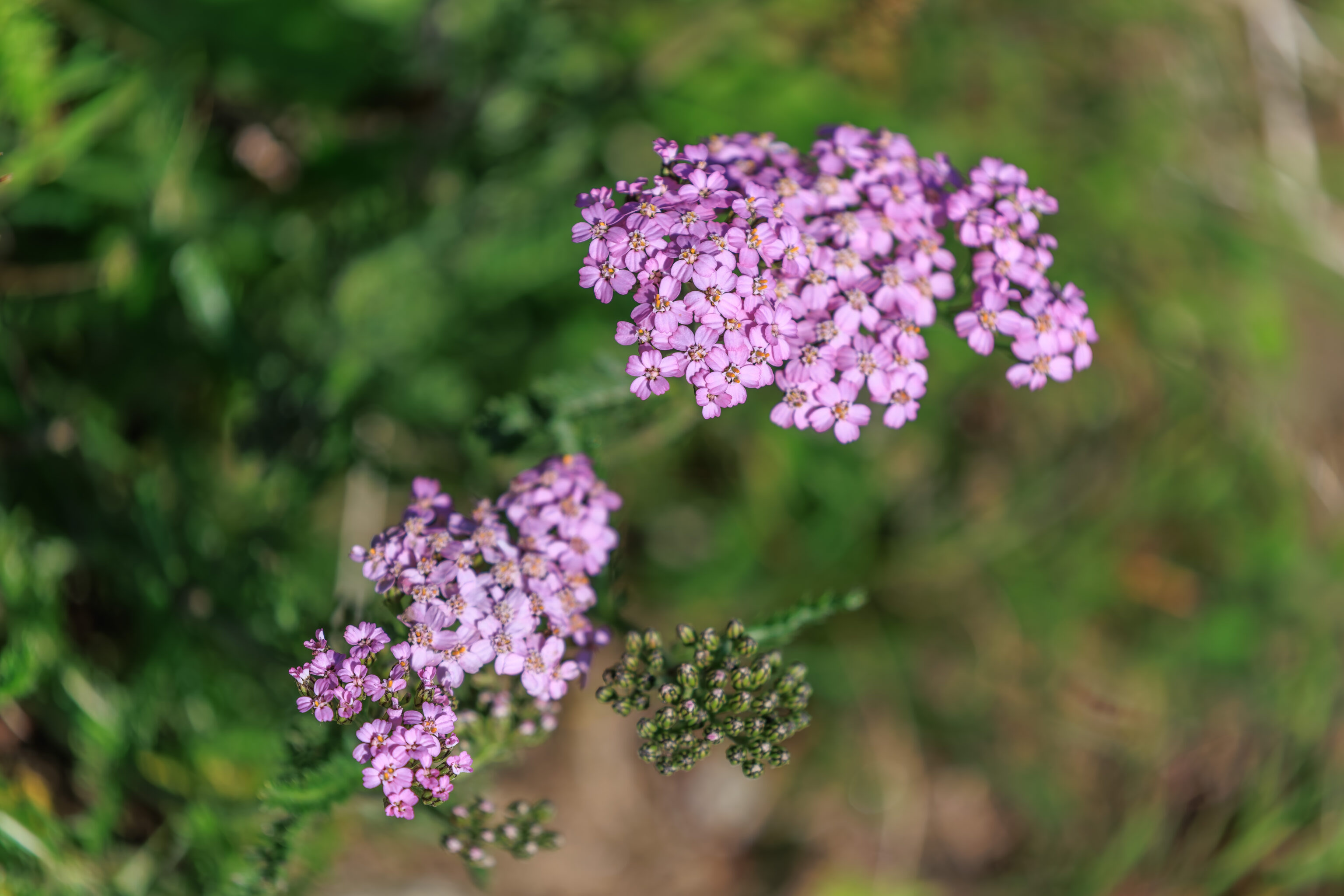
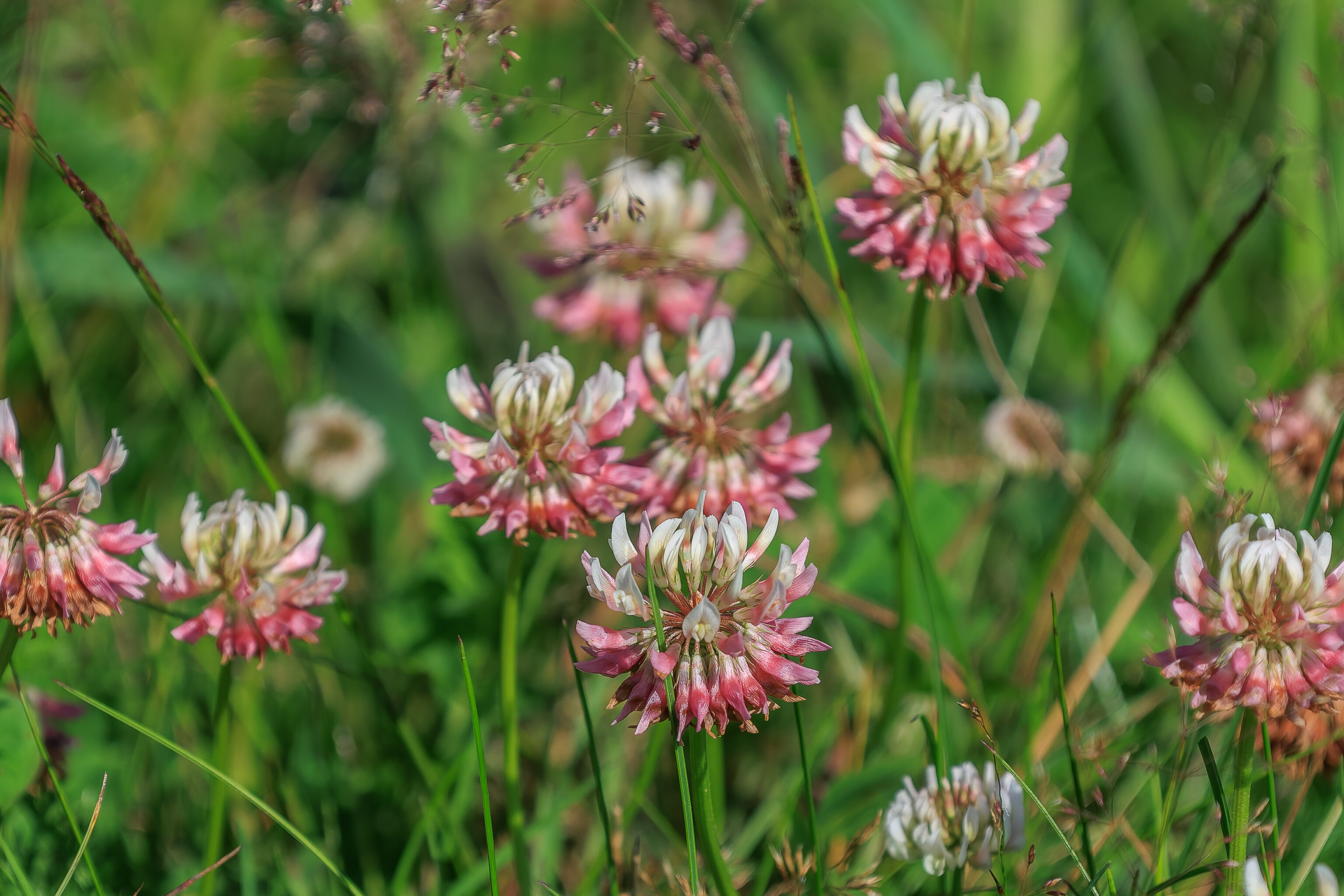

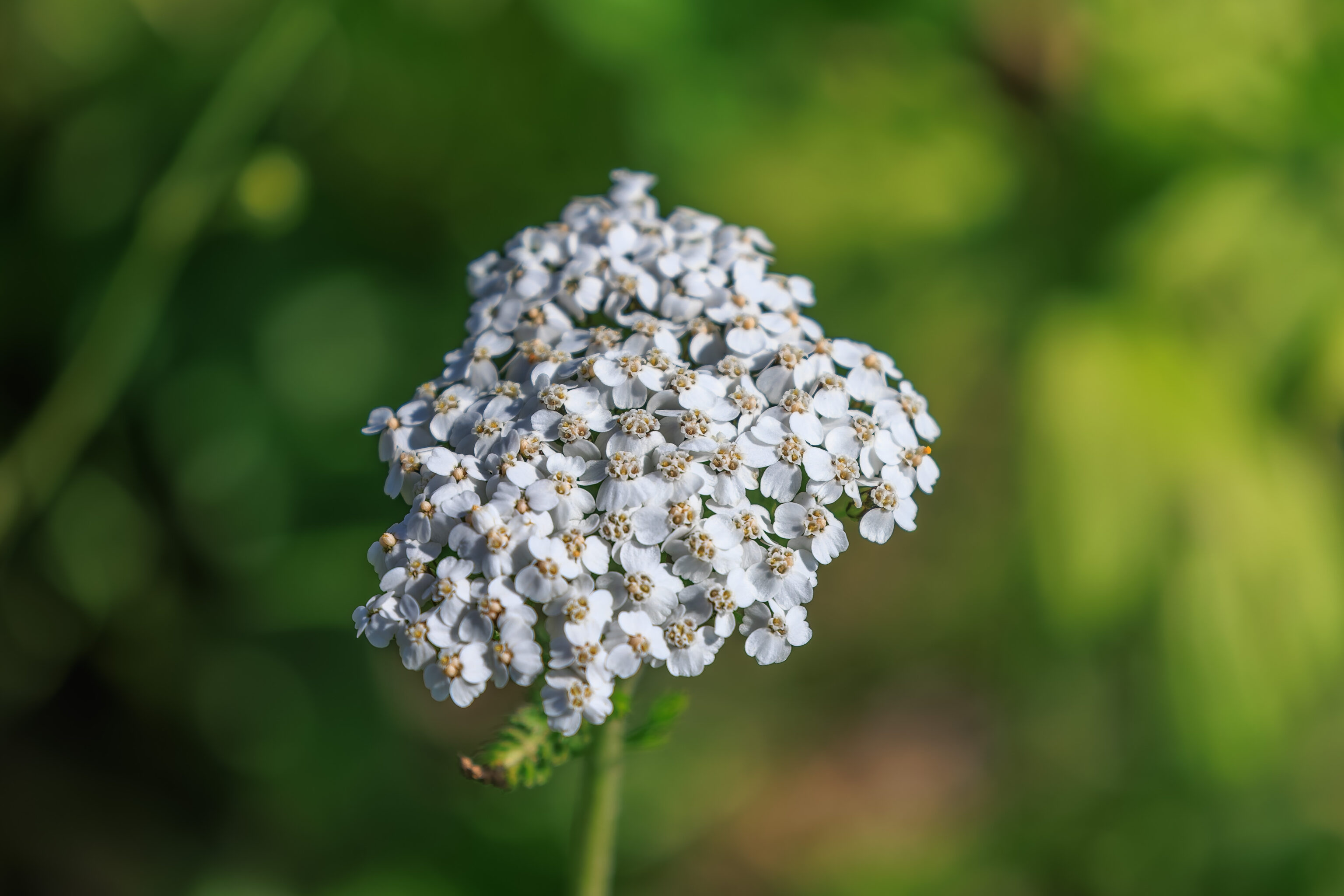
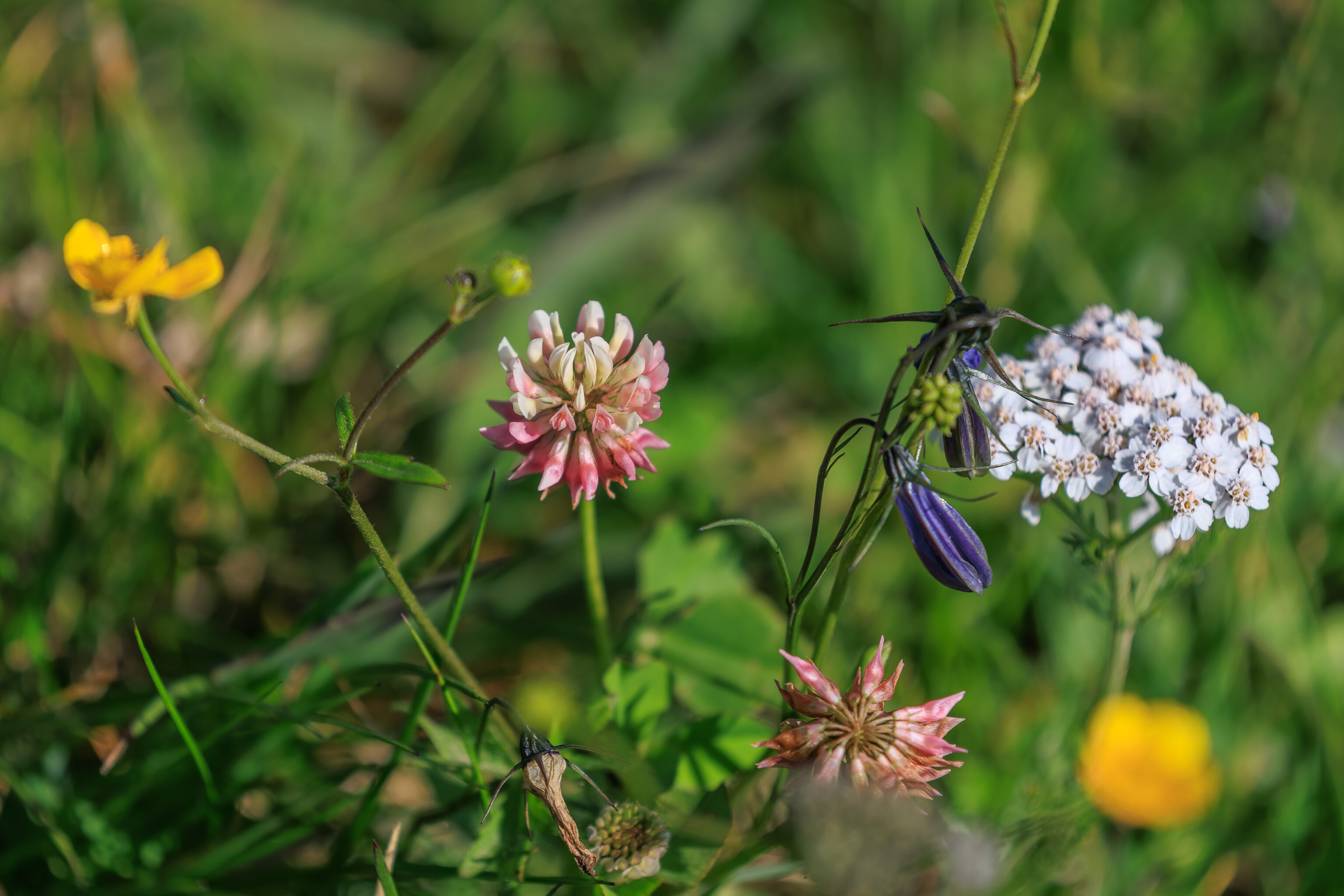

The summit, completely devoid of trees, was covered with various wildflowers. We walked over to the little elevated observation platform to take a look around.
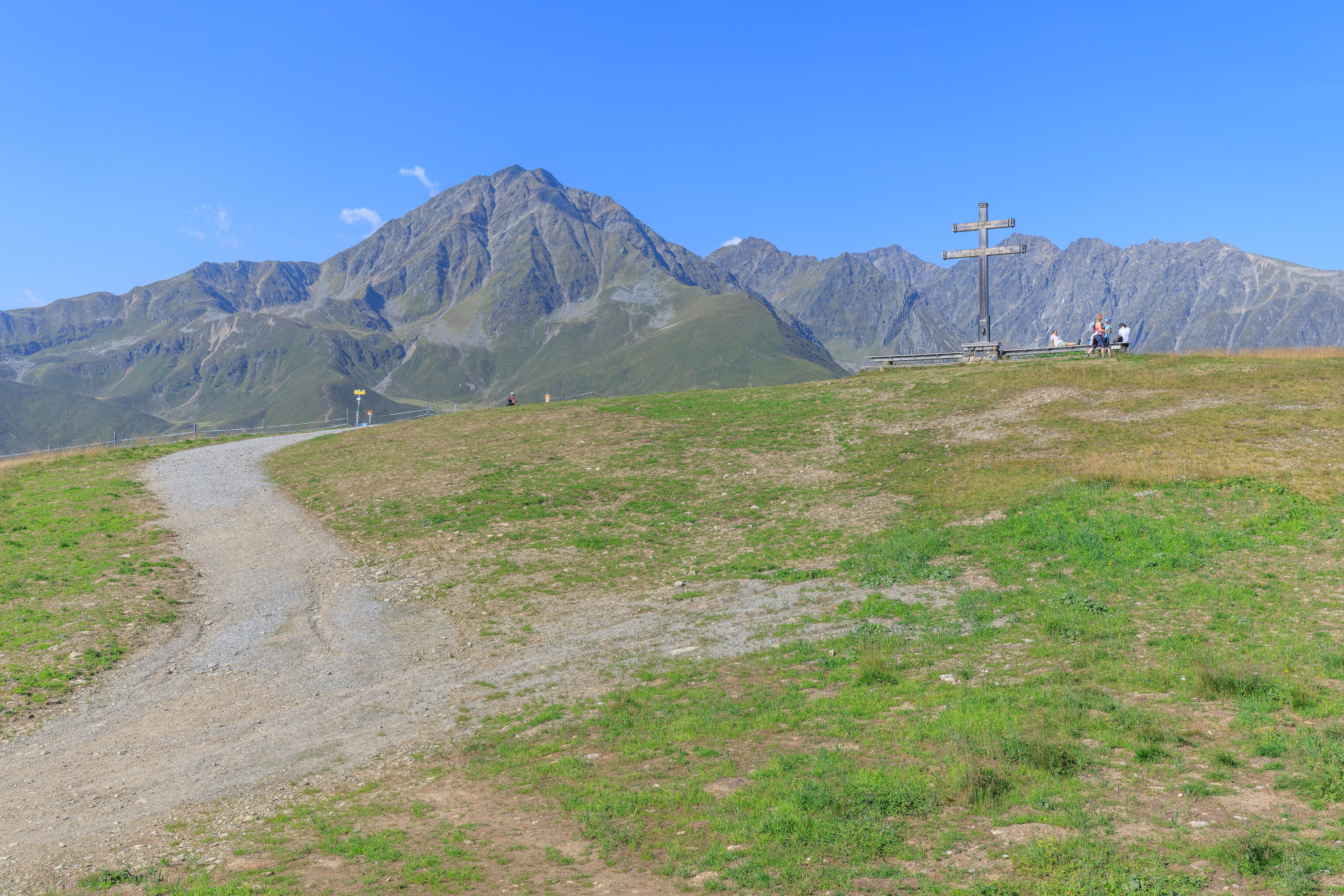

The summit also contains a cross. The German text probably translates to:
GREAT GOD, SO BEAUTIFUL YOU HAVE MADE IT.
OUR BELOVED LITTLE COUNTRY, PROTECT IT FROM HAIL, MUDSLIDES, ATOMIC, AND FIRE.
A post on Klaus Heidegger’s blog suggests that the atomic threat in the list does mean nuclear war.
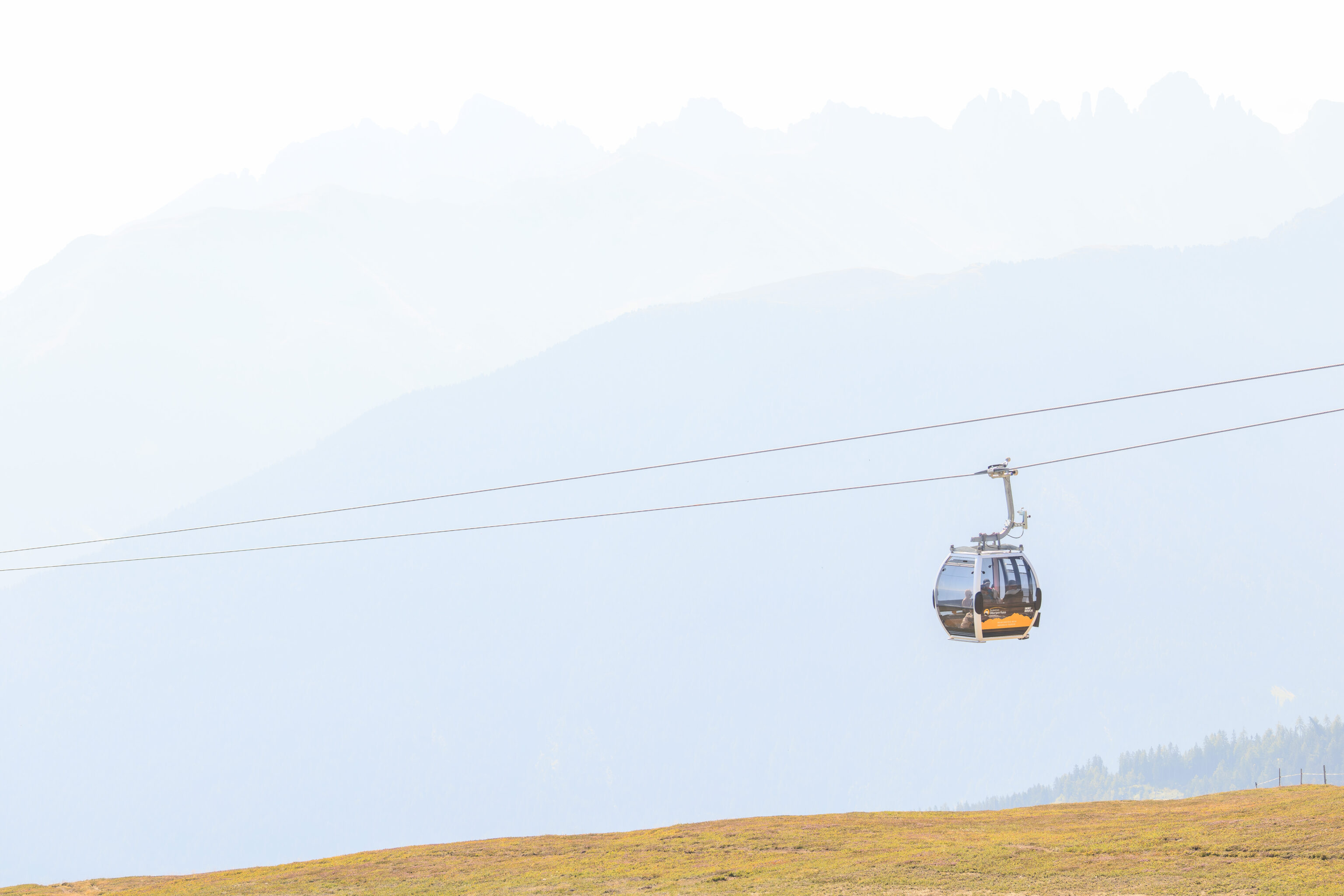
A gondola passing by through a hazy background.
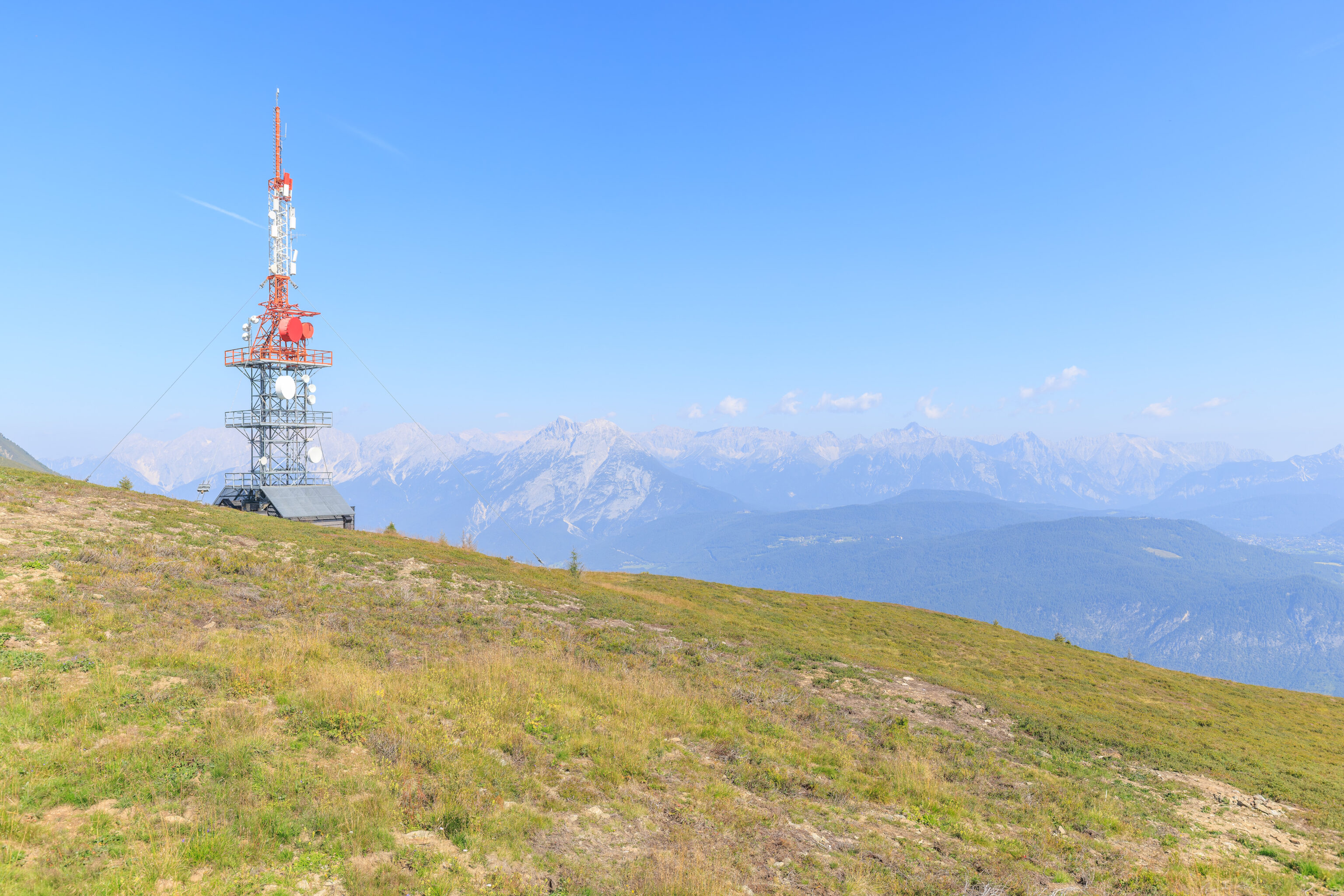
The view looking back at the large transmission tower.
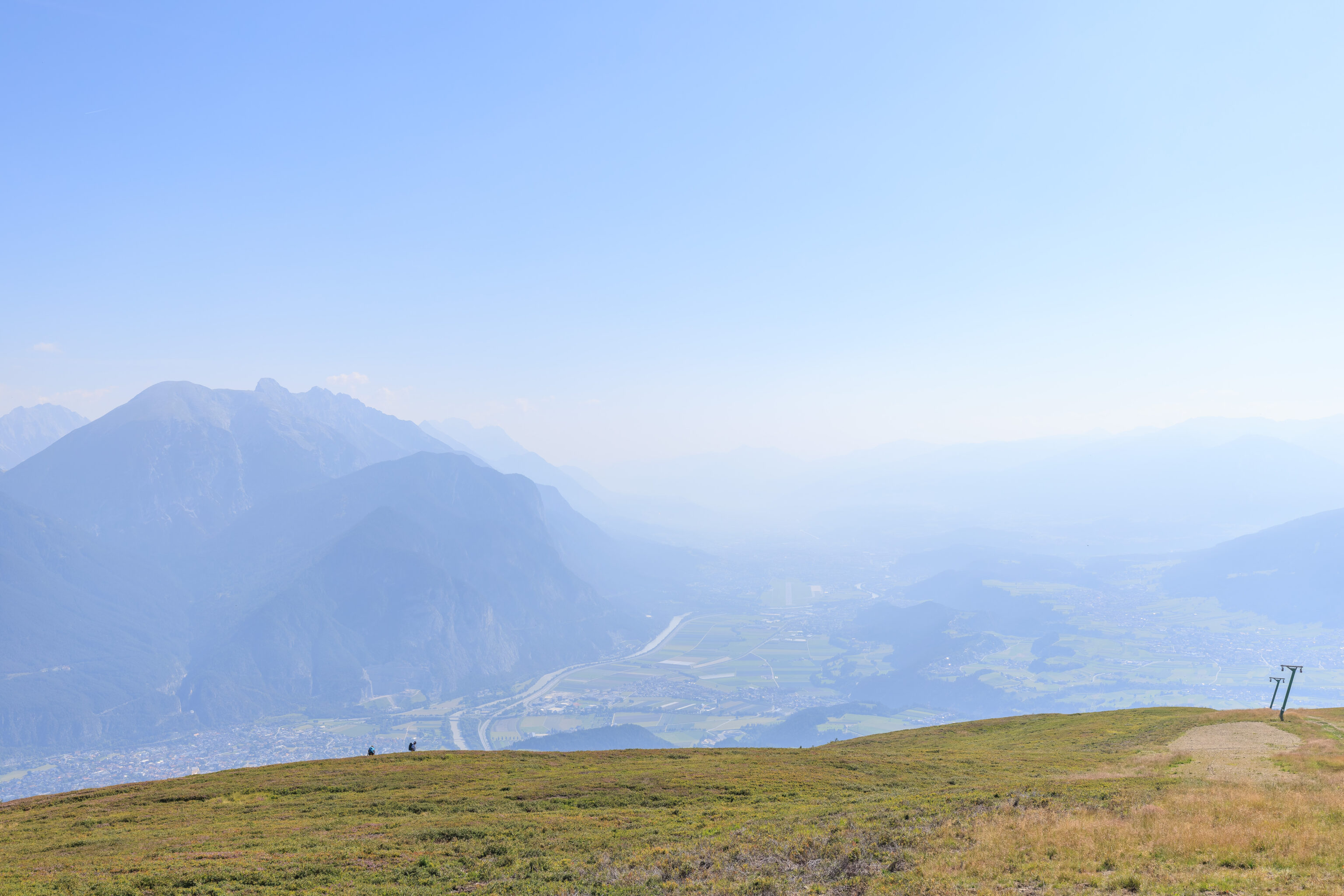
The view downhill, back towards the city.
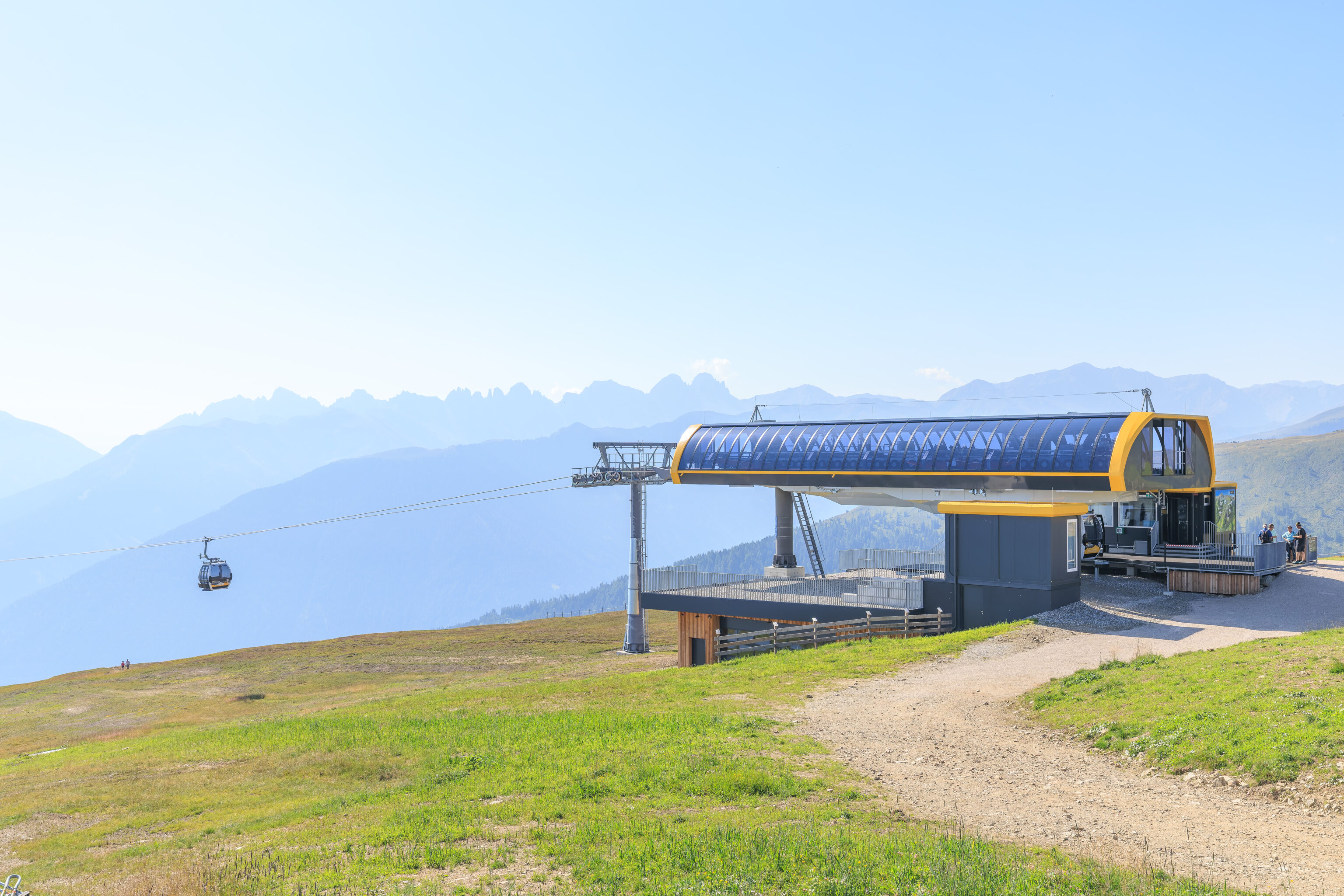
The gondola’s upper station.
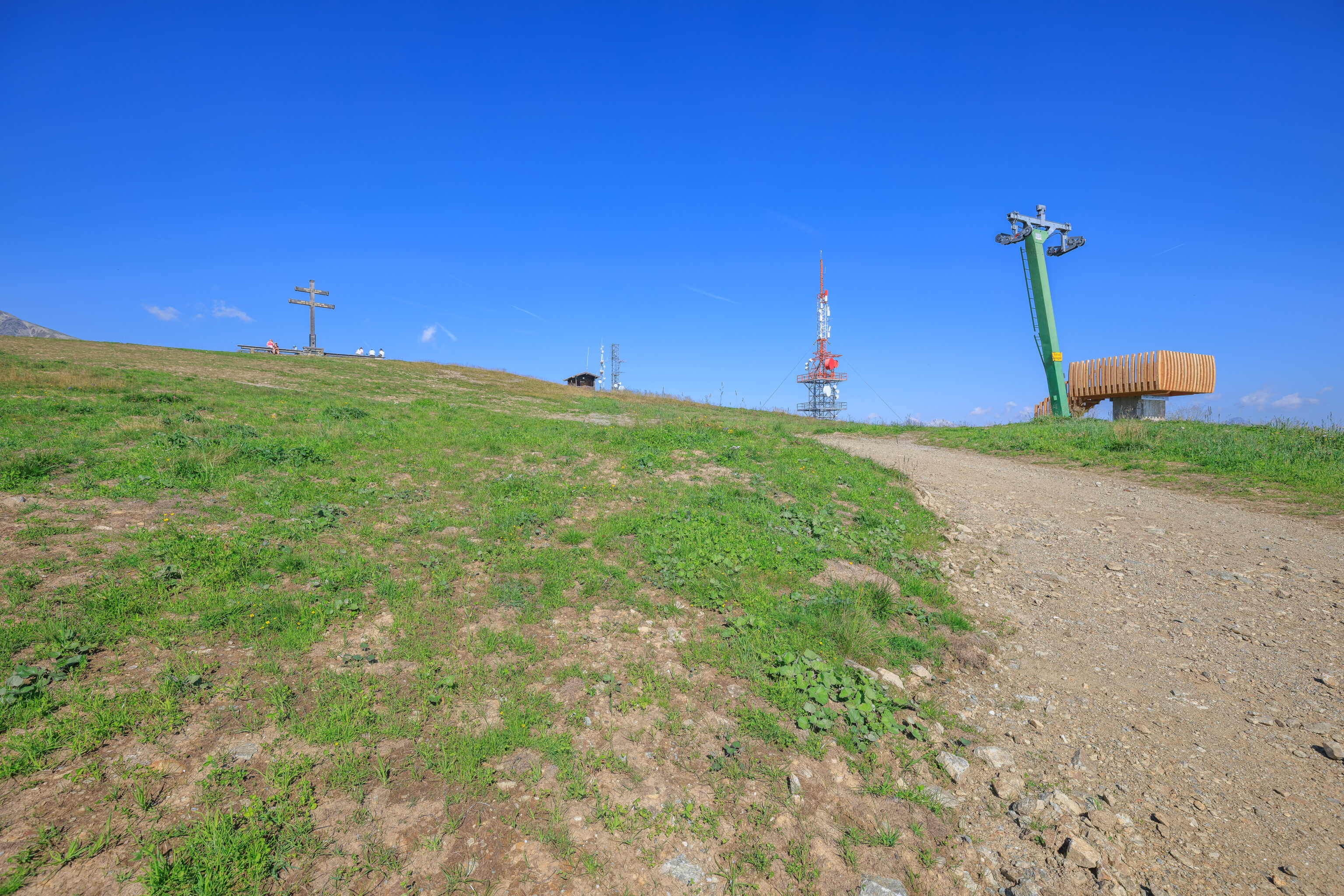
We headed back to the gondola to descend, looking back as we walked down.

While there were people gradually arriving, in general there was no one descending yet.

We decided to go check out the reservoir near the gondola station. It is also the start, or end, of the Sagenweg (Legend Trail).

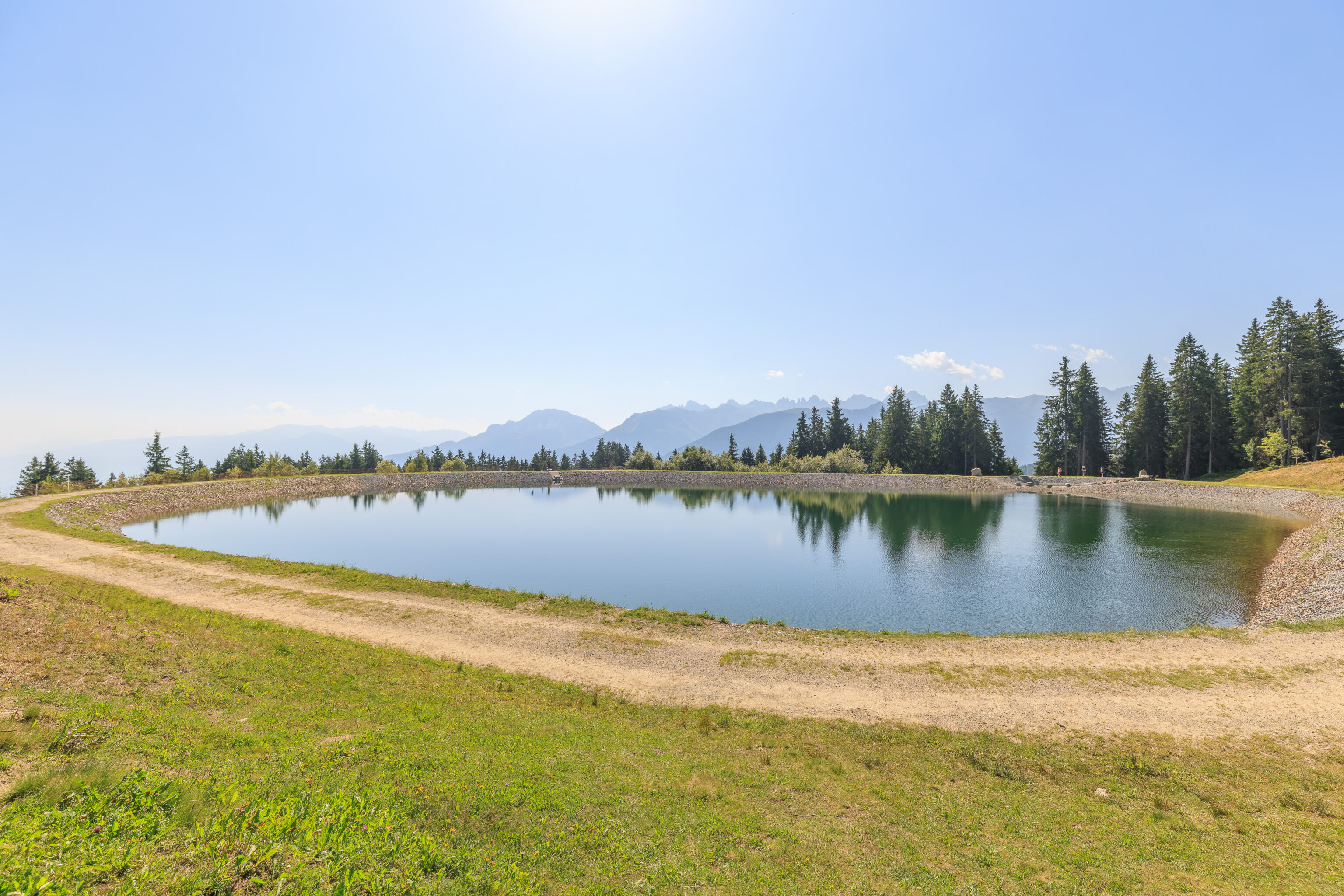
We relaxed on some chairs in the shade near the reservoir for awhile before moving on.
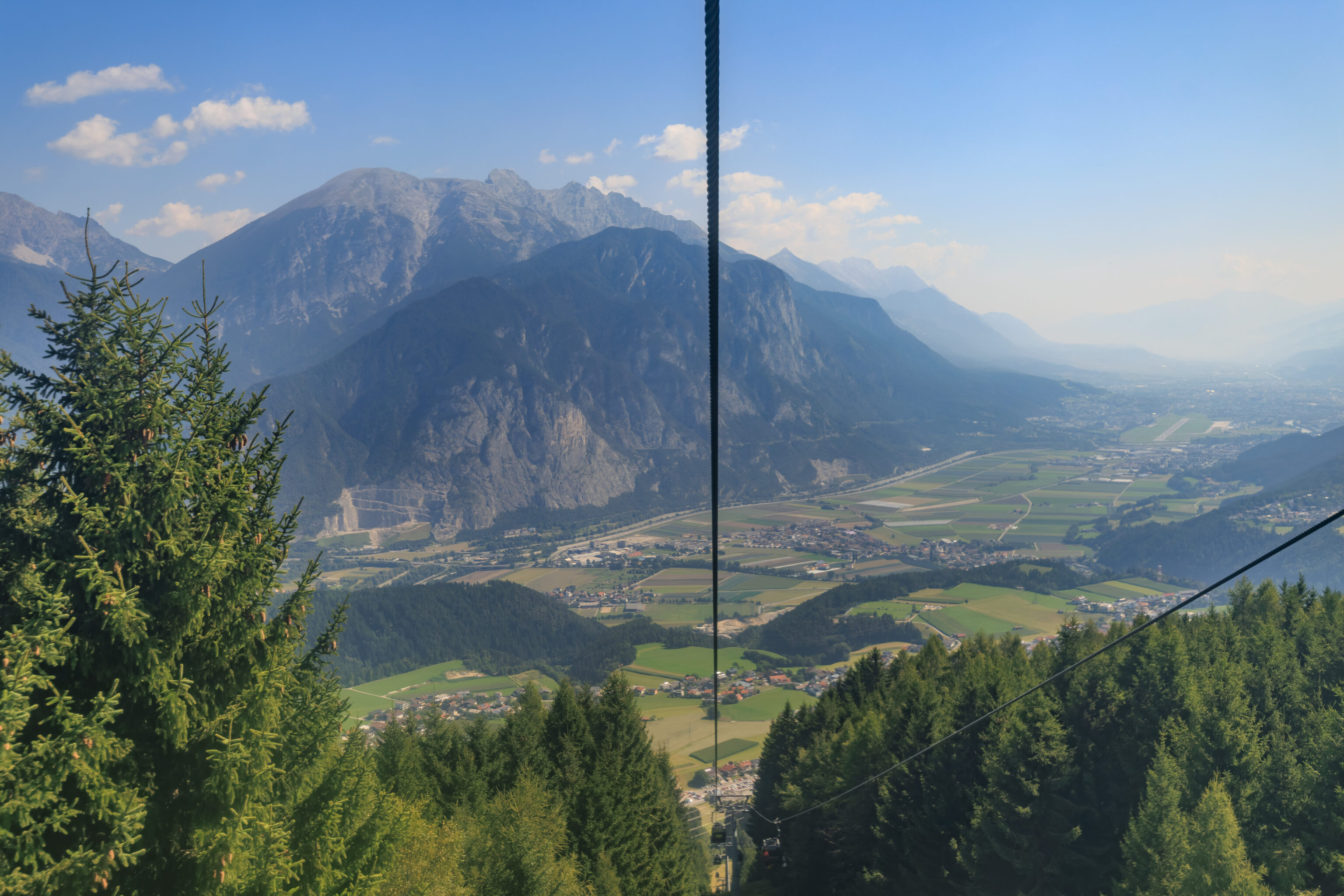
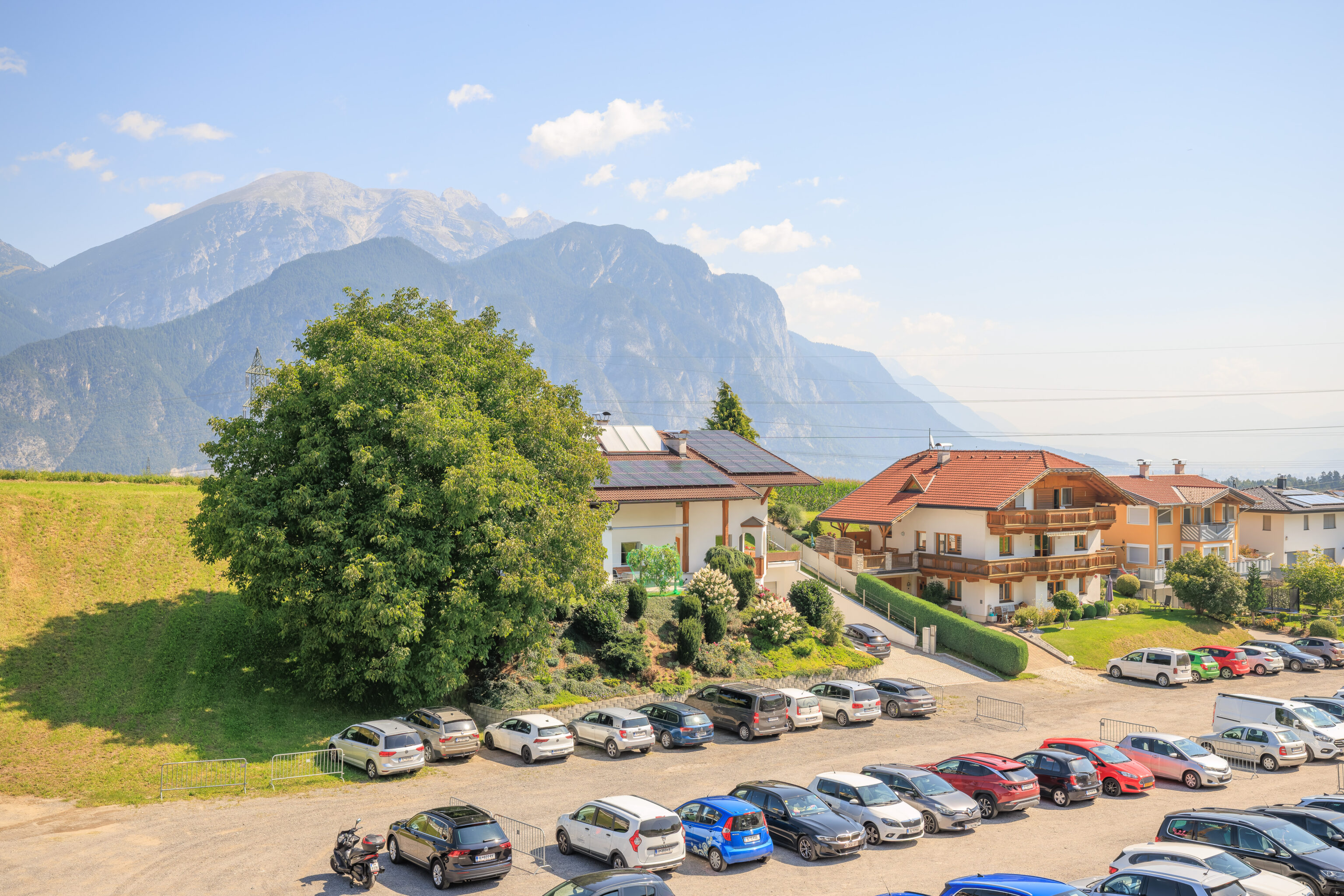
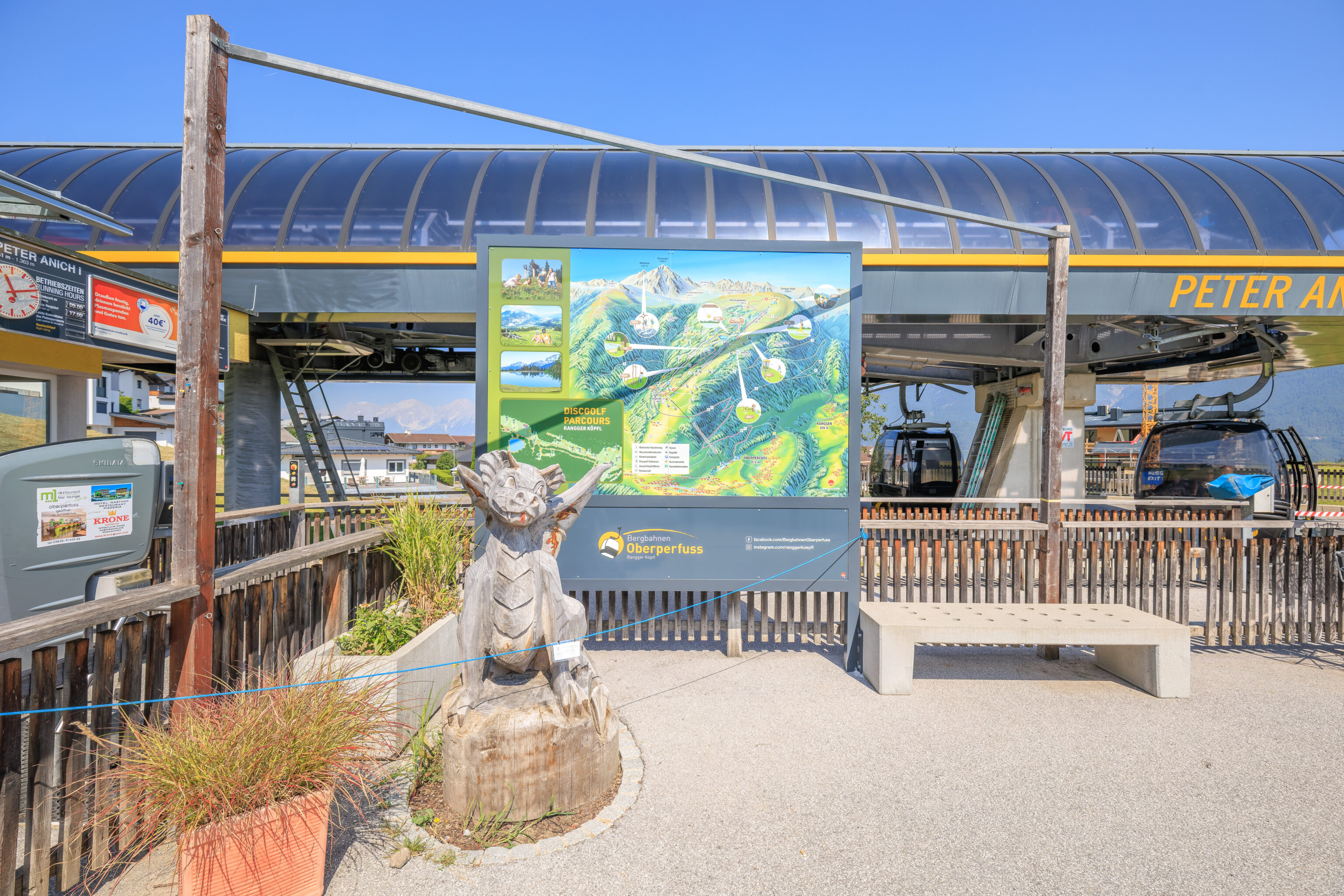
We then decended back down to the base station.
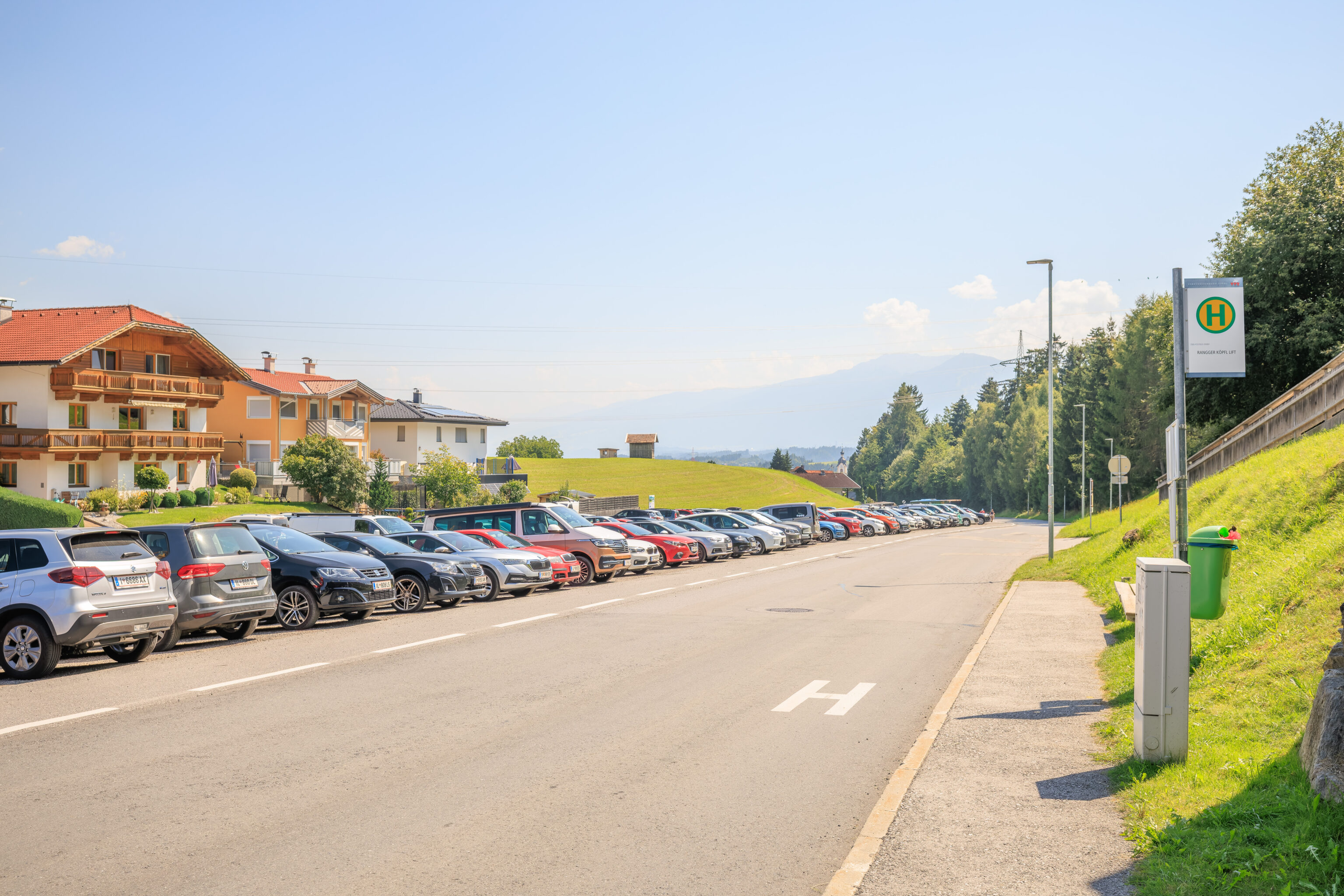
We had a bit of confusion with this bus stop here. The H on the ground is German for halt, specifically, this is a bushalt, or bus stop. Only one side of the road is marked. While we were walking down, we saw a bus drive by. It was numbered as the bus we wanted to catch but it was very early.
We continued waiting and no bus came. Was that actually the bus? And is the bus stop for the opposite direction actually here? Typically, there is an H on both sides of the road when the bus stops on both sides.
In this photo, there is a bus parked at the far end of the parking lot. Was the bus stop for the opposite direction there? We went to take a look but there was nothing at all there. We then saw a bus speed by.
We eventually figured out that this bus stop is the last stop for some busses on some routes. The busses stop in the parking lot in between runs. After studying the schedule on the bus stop sign, we decided to simply take the next bus that arrived as they all would go to a train station at some point.
Unfortunately, while multiple bus routes do stop here, service is effectively just once per hour so we had a bit of a wait.
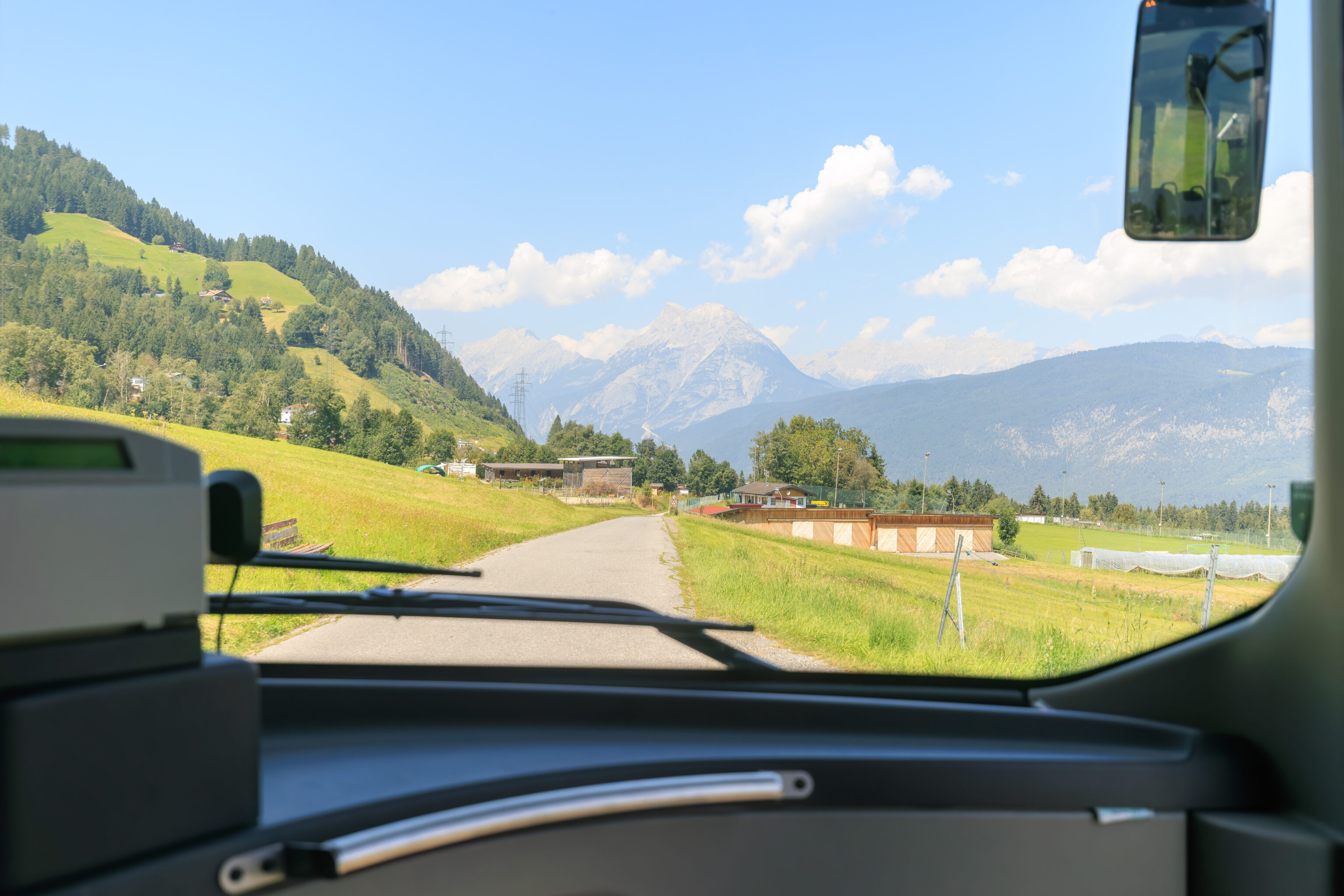
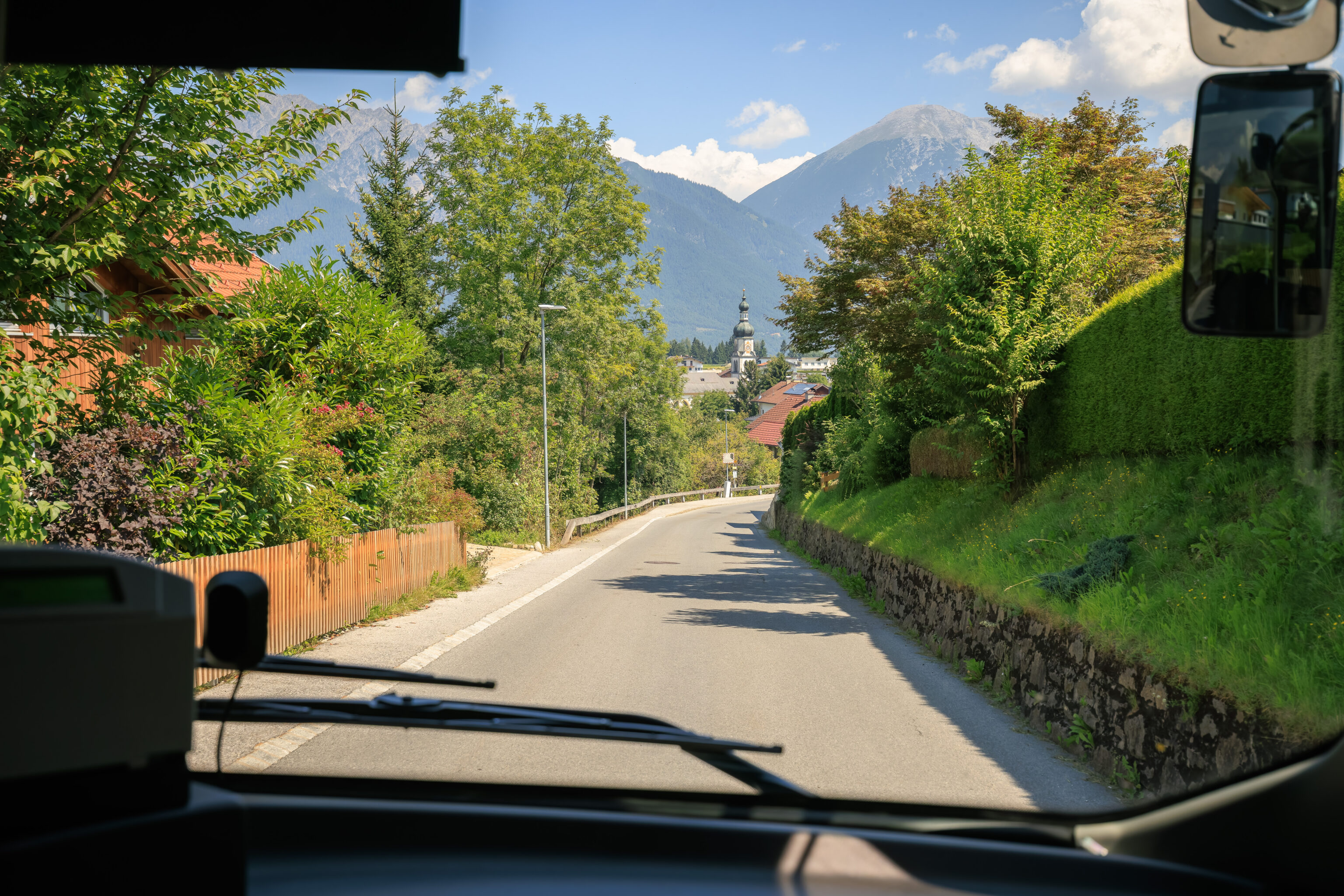
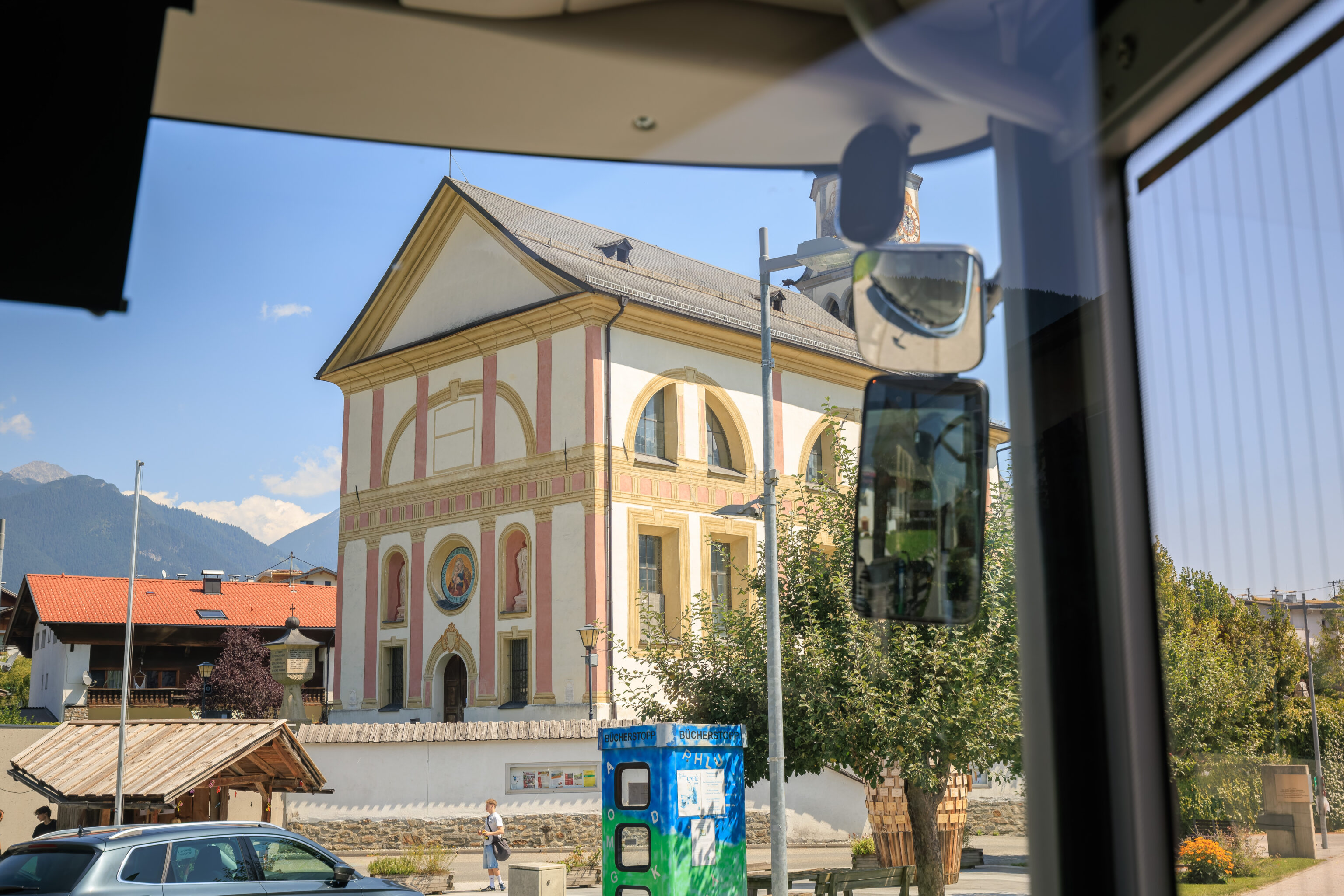

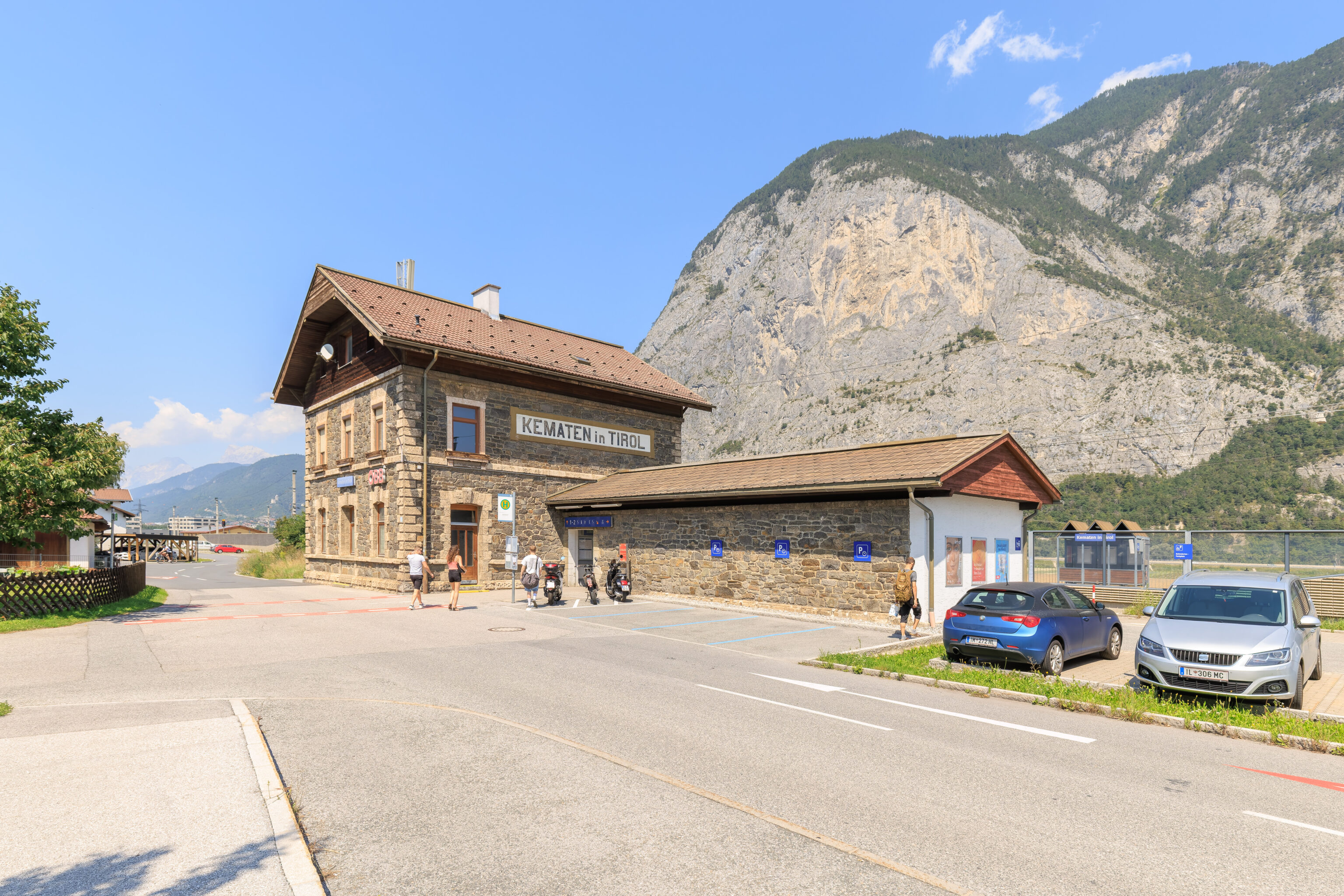
We took the next bus to the train station at Kematen in Tirol.
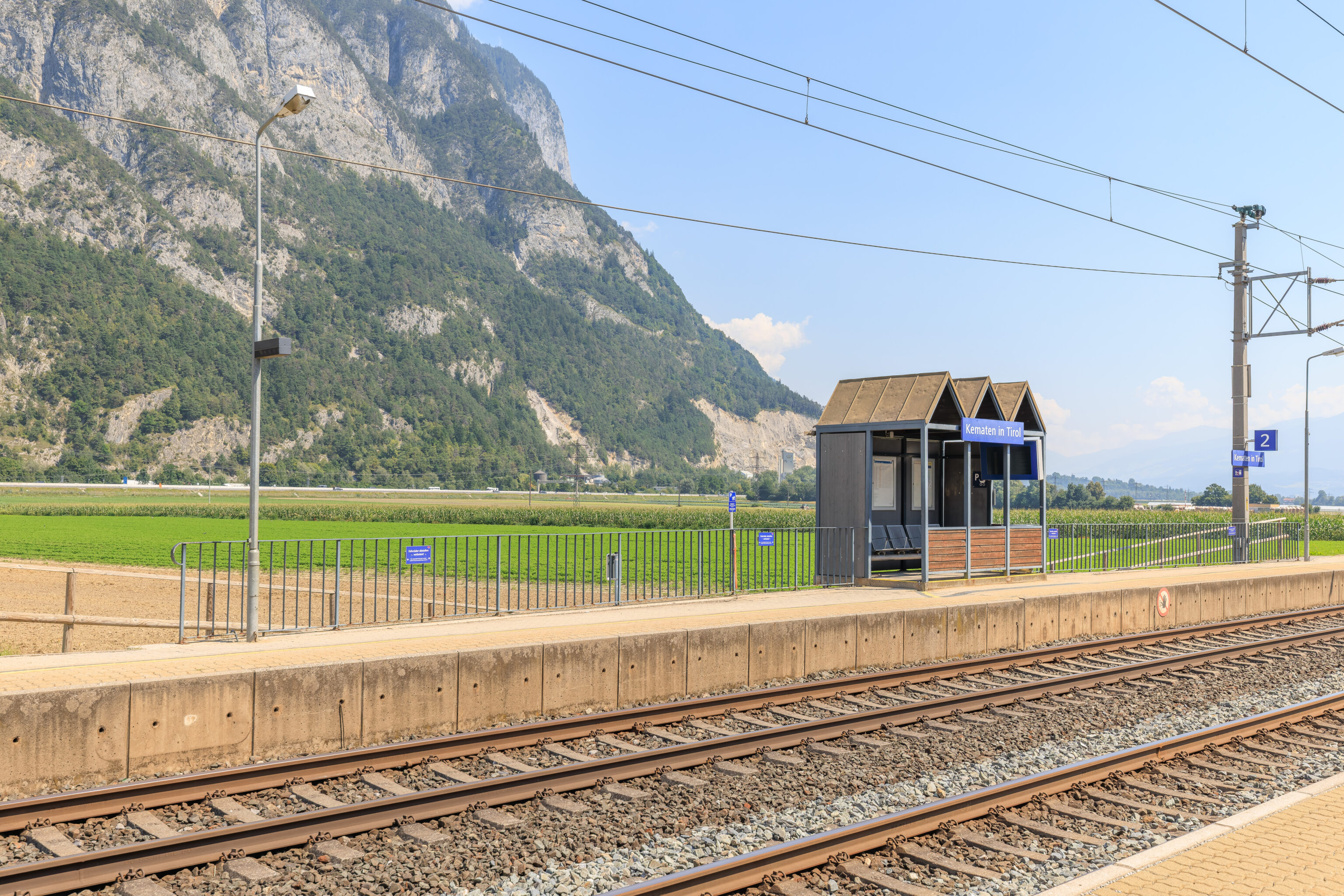
The station was a pretty basic two platform station.
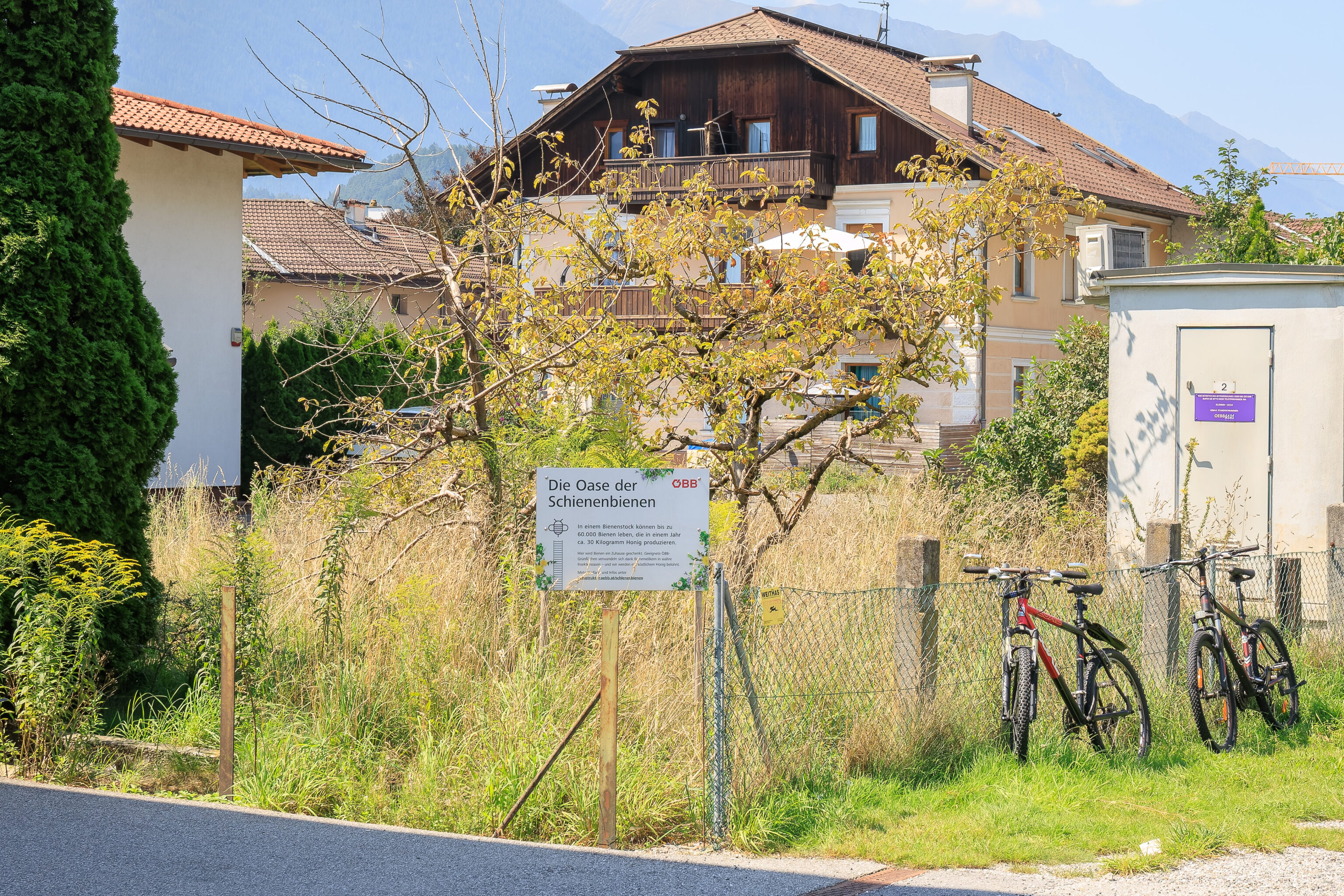
It did have an interesting feature though. The ÖBB had installed a bee garden! The sign explains:
The Oasis of the Railroad Bees
Up to 60,000 bees can live in one hive, producing approximately 30 kilograms of honey per year.
Here, bees are given a home. Thanks to the bee colonies, suitable ÖBB green spaces are transformed into true insect sanctuaries – and we are rewarded with delicious honey.
Information and details at infrastruktur.oebb.at/schienenbienen

Soon, the next train arrived. This station is only served by the S-Bahn line S4.
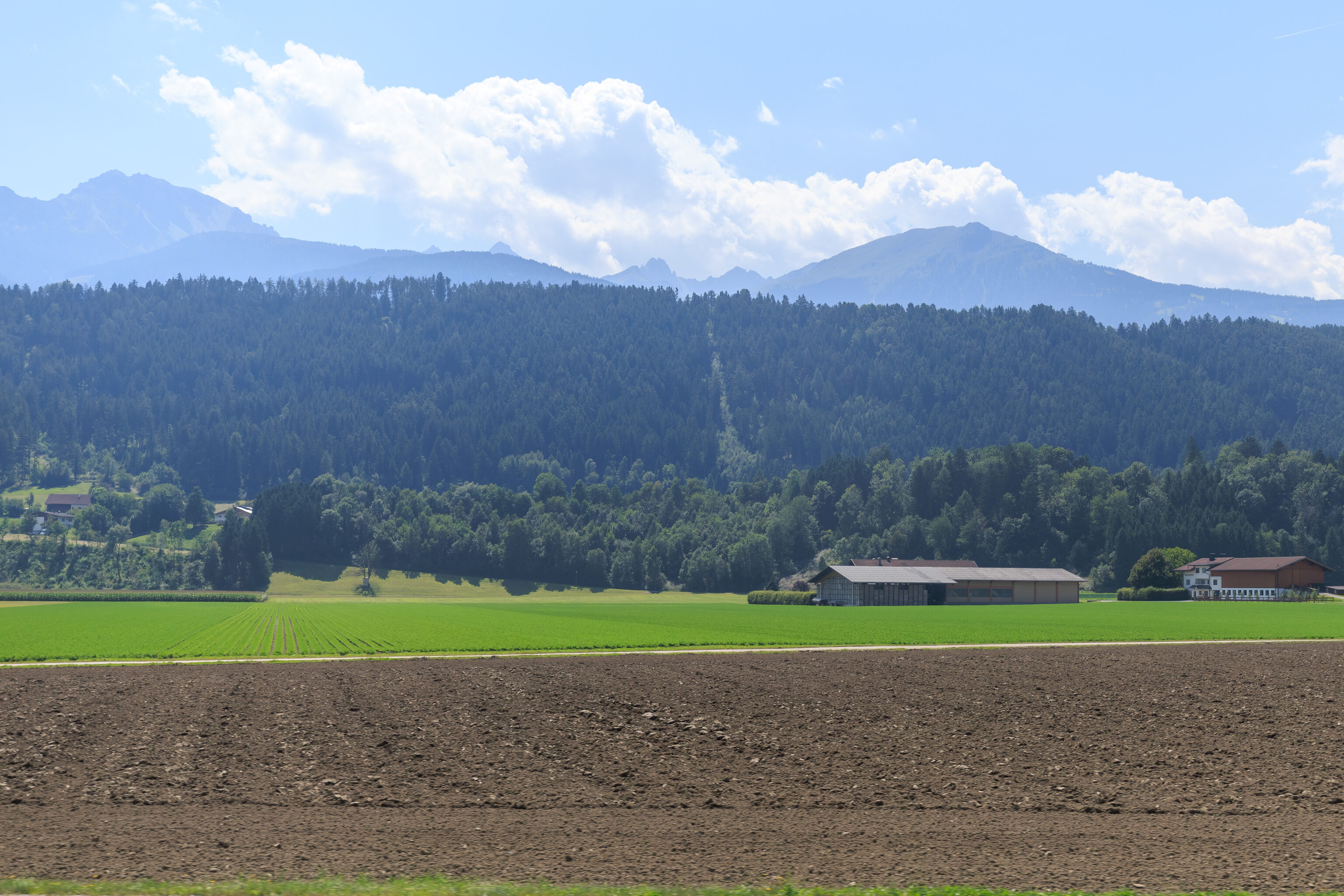
The train is much faster than the bus. The trip to back to Innsbruck only took a few minutes.
Swarovski Kristallwelten
After returning to Innsbruck, we decided to take the next bus to the Swarovski Kristallwelten (Swarovski Crystal Worlds).
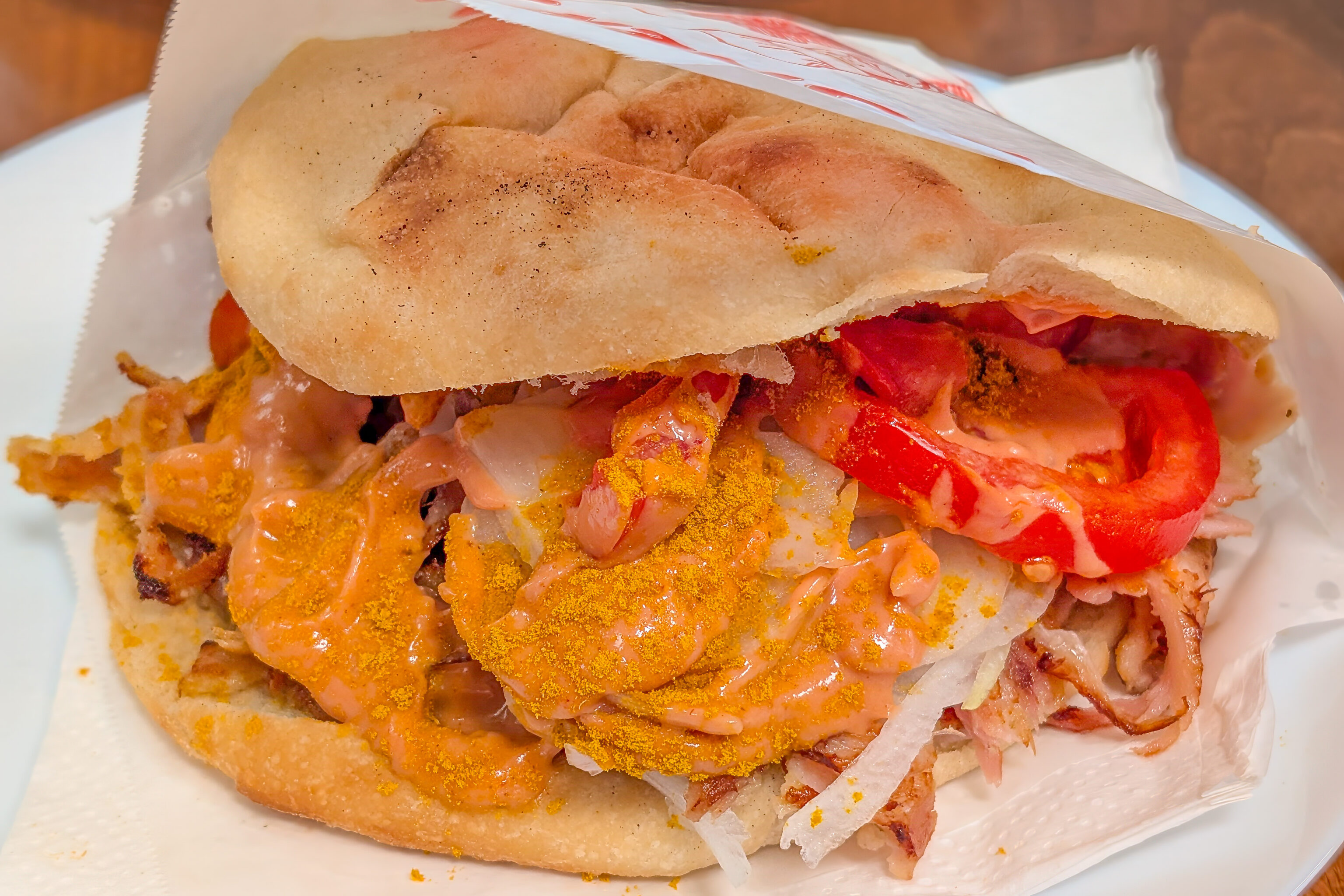

But first, we decided to have a quick lunch as there was time before the next bus. It had to be something quick though so we decided to get döner nearby. It took us a few minutes to find the Elfi Bistro Cafe, which was on the southern end of the train station.
We got their regular döner as well as the Elfi döner, which was described as being curry flavored. It was more of a sweet sauce, definitely not what we’d consider curry. Both were very satisfying, even though they definitely weren’t the best döners that we’ve had.
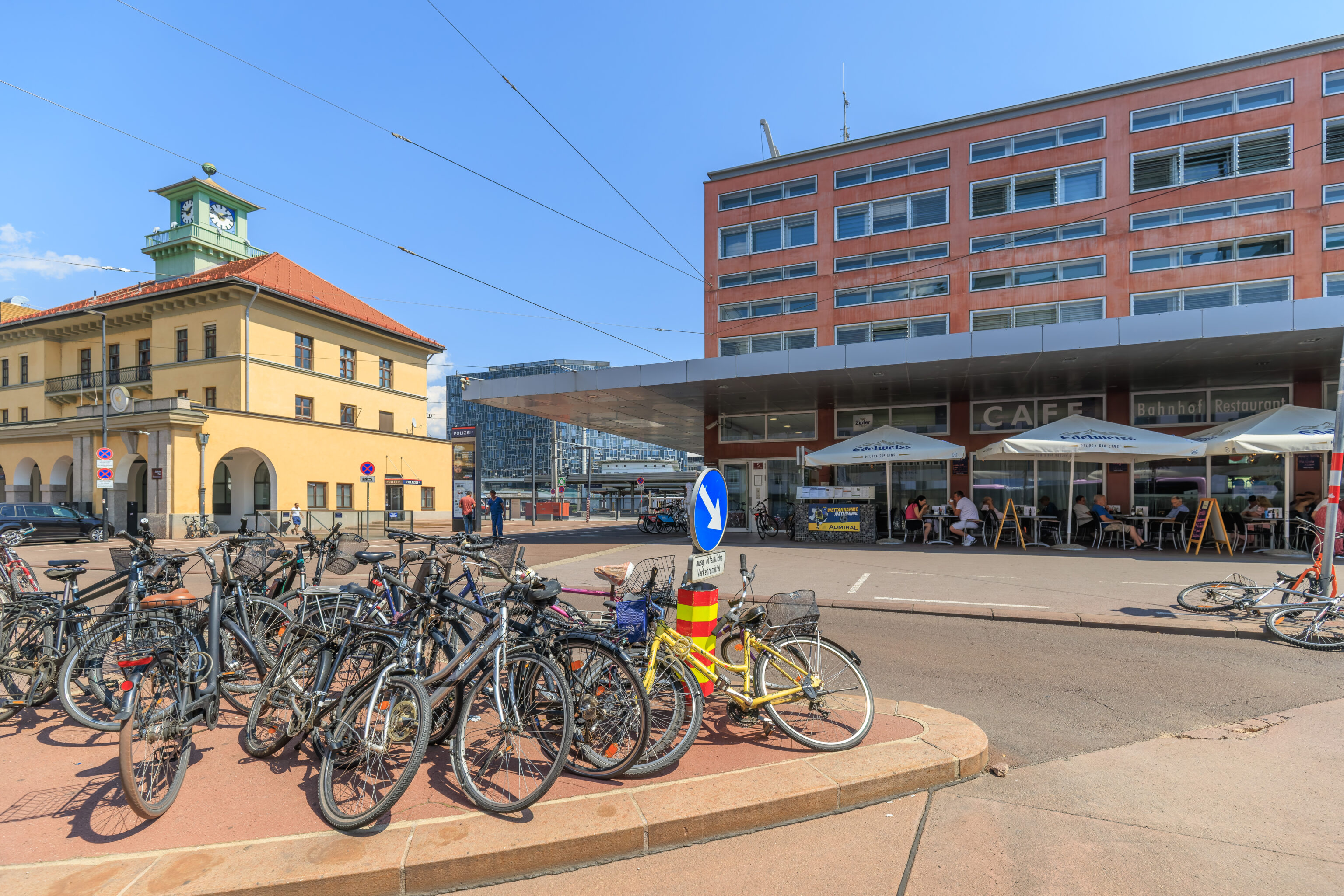
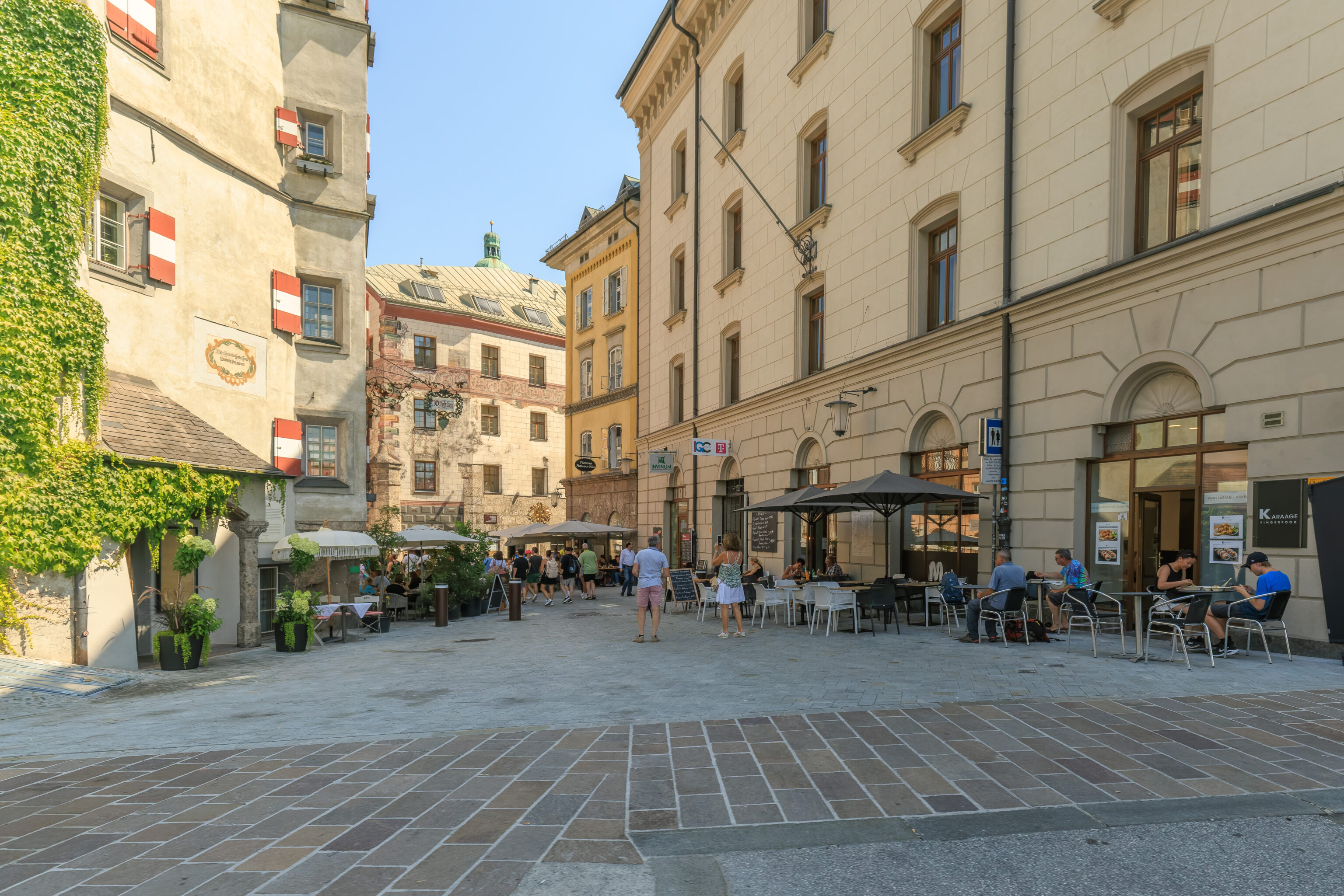
There are a few different ways to get to the Swarovski Kristallwelten. We opted to take the 650 bus which departs from the Innsbruck Hauptbahnhof, runs through the city, and follows the river Inn to the east.
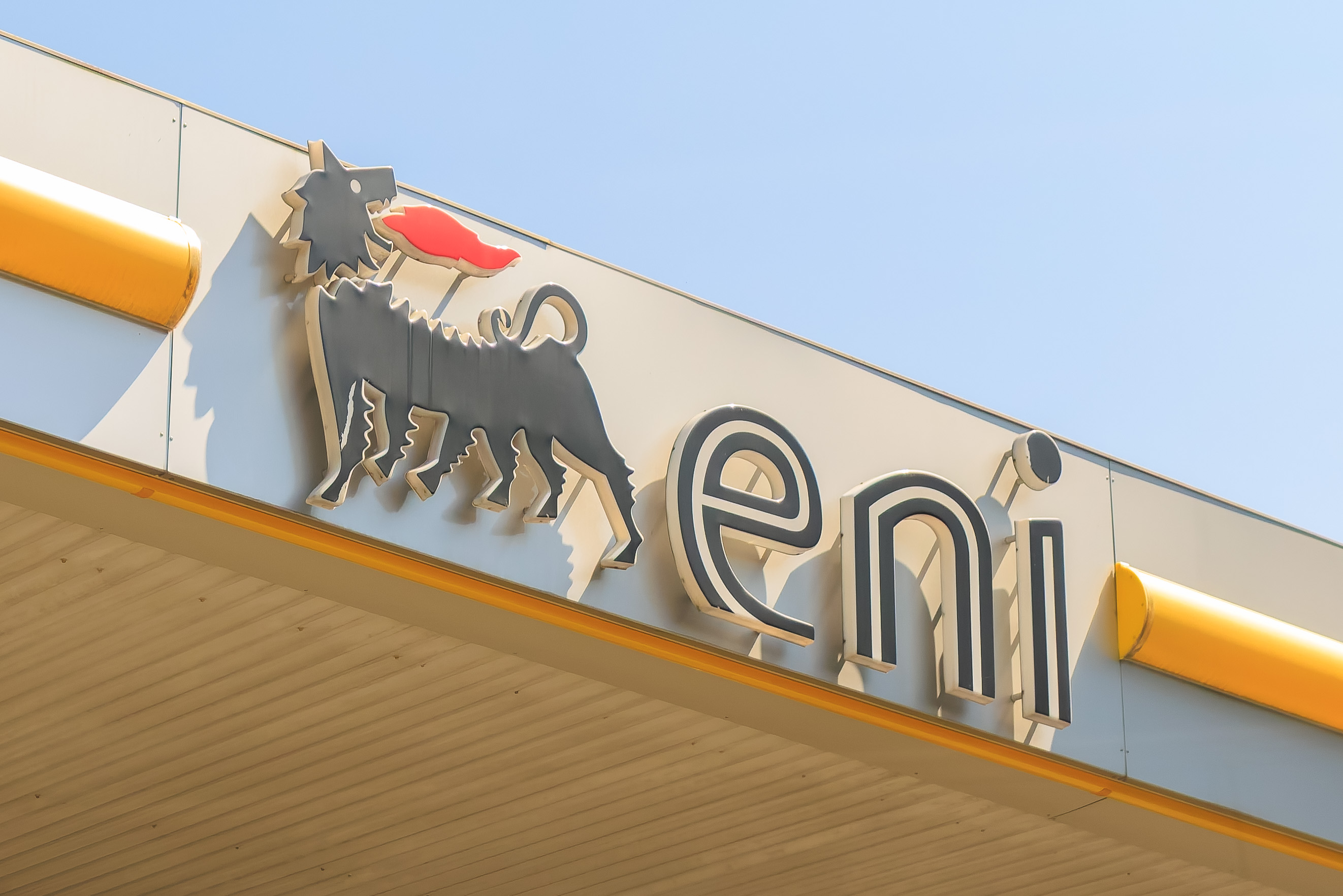
We passed by this gas station, which we’ve noticed before, perhaps in Rome? Eni is an Italian company from Rome with an interesting fire-breathing wolf logo with six legs. Wikipedia explains this logo as an imaginary six-legged dog symbolizing the four wheels of a car and the two legs of its driver. Sure. At least it is interesting and recognizable enough that we remembered and noticed it.

We were surprised to pass by bus stop advertisement for the Creamy Wasabi Beef and Creamy Wasabi Chicken burgers at McDonald’s.
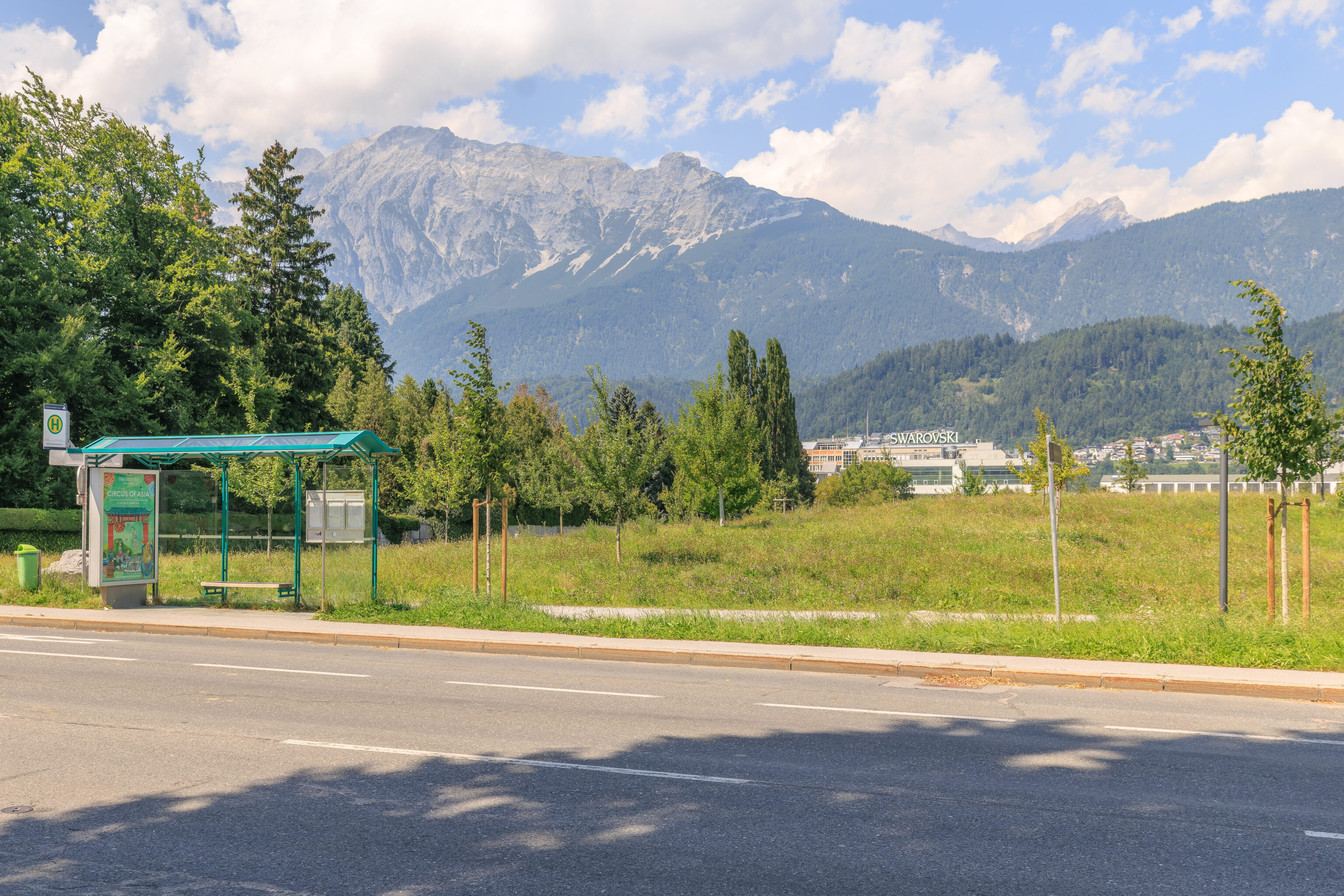
We arrived at the Wattens Kristallwelten bus stop at around 2:25pm.
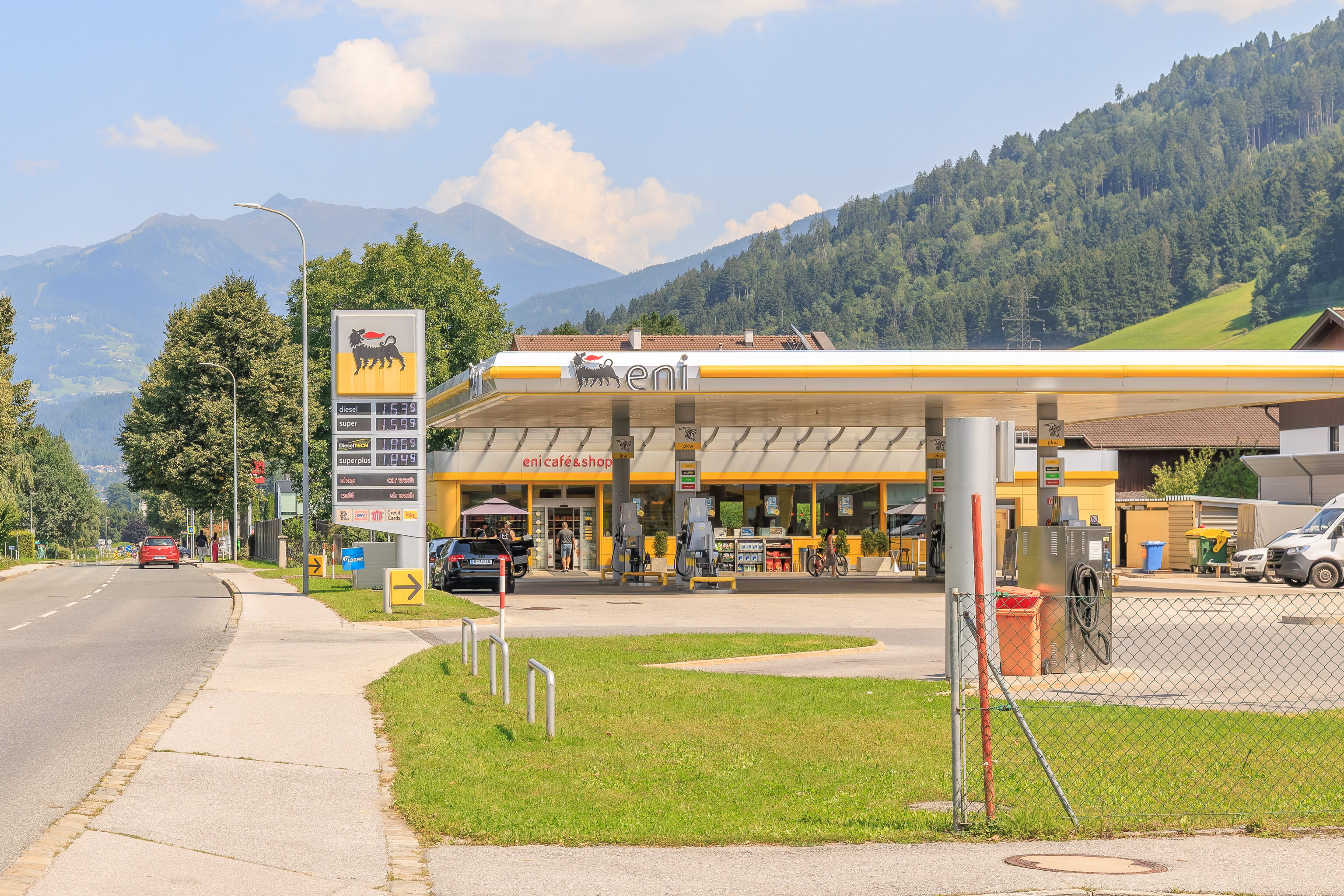
We decided to walk east first before crossing the road to enter the Kristallwelten. There was another Eni gas station here near the bus stop.
It turns out that Swarovski recently redeveloped the southern part of the Kristallwelten and there is no longer an entrance here.

This is how it looks on Google Maps, which is outdated.


Interestingly, with one specific Google Account, I was able to get a satellite image of the area when construction was taking place. It isn’t clear how Google Maps decides what imagery to present as viewing the same place when logged out or with other accounts shows an older image.

The pedestrian entrance is by the bus stop through a mostly empty field. It seems that this was formerly a farm that was converted to parkland as a result of this redevelopment.
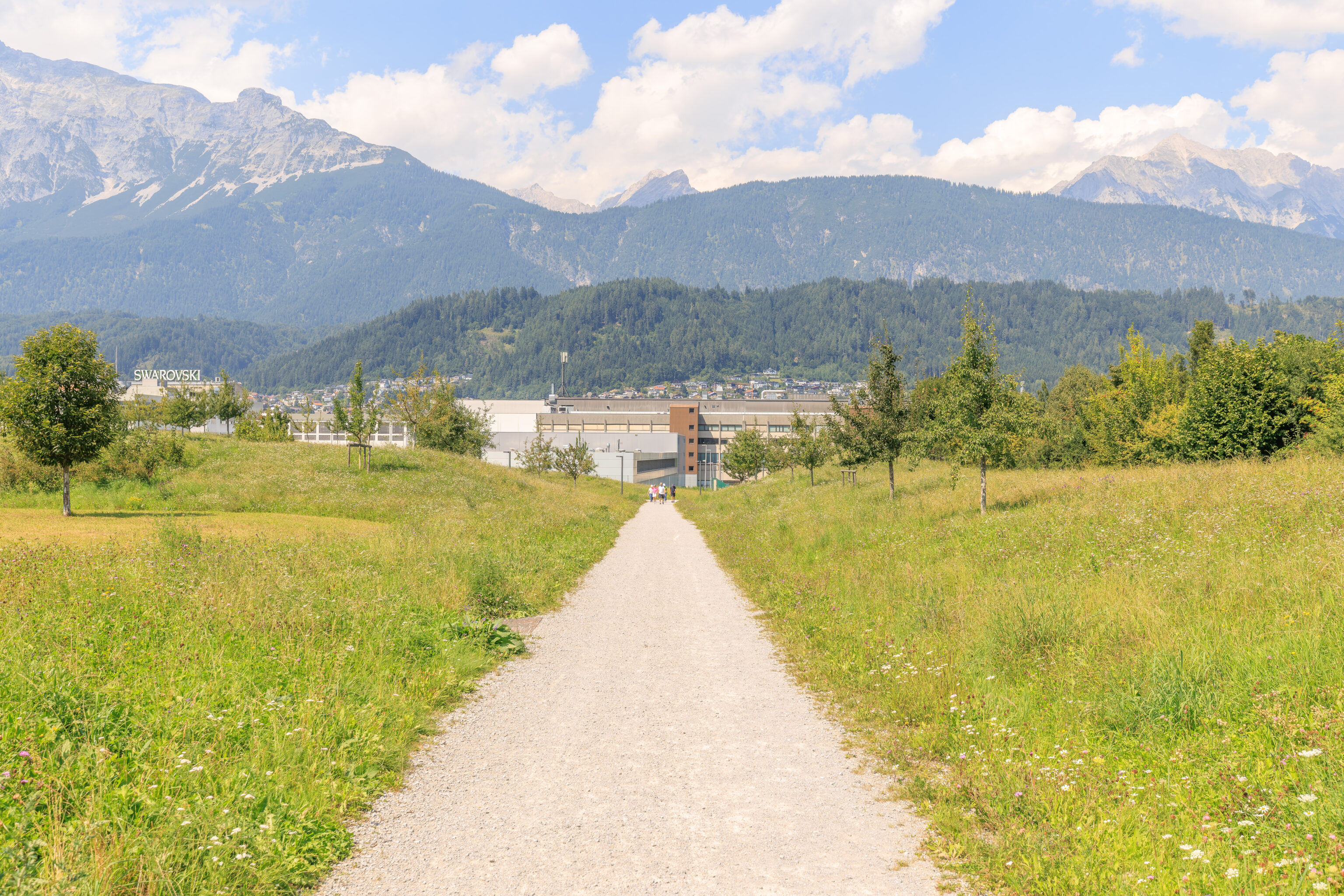
We could see the Swarovski factory directly ahead as we walked to the north. It was unfortunately very hot and there was no shade available here.
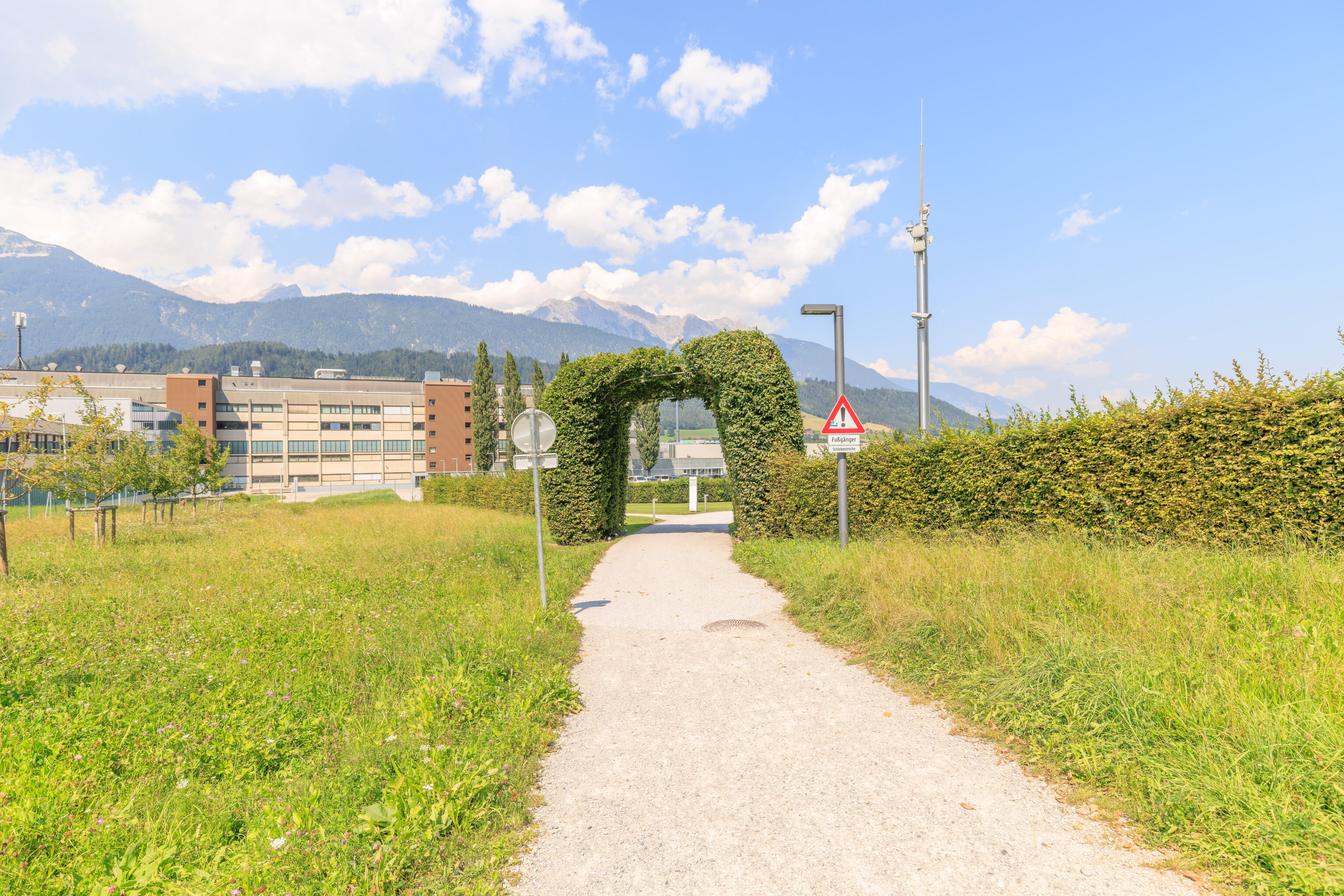
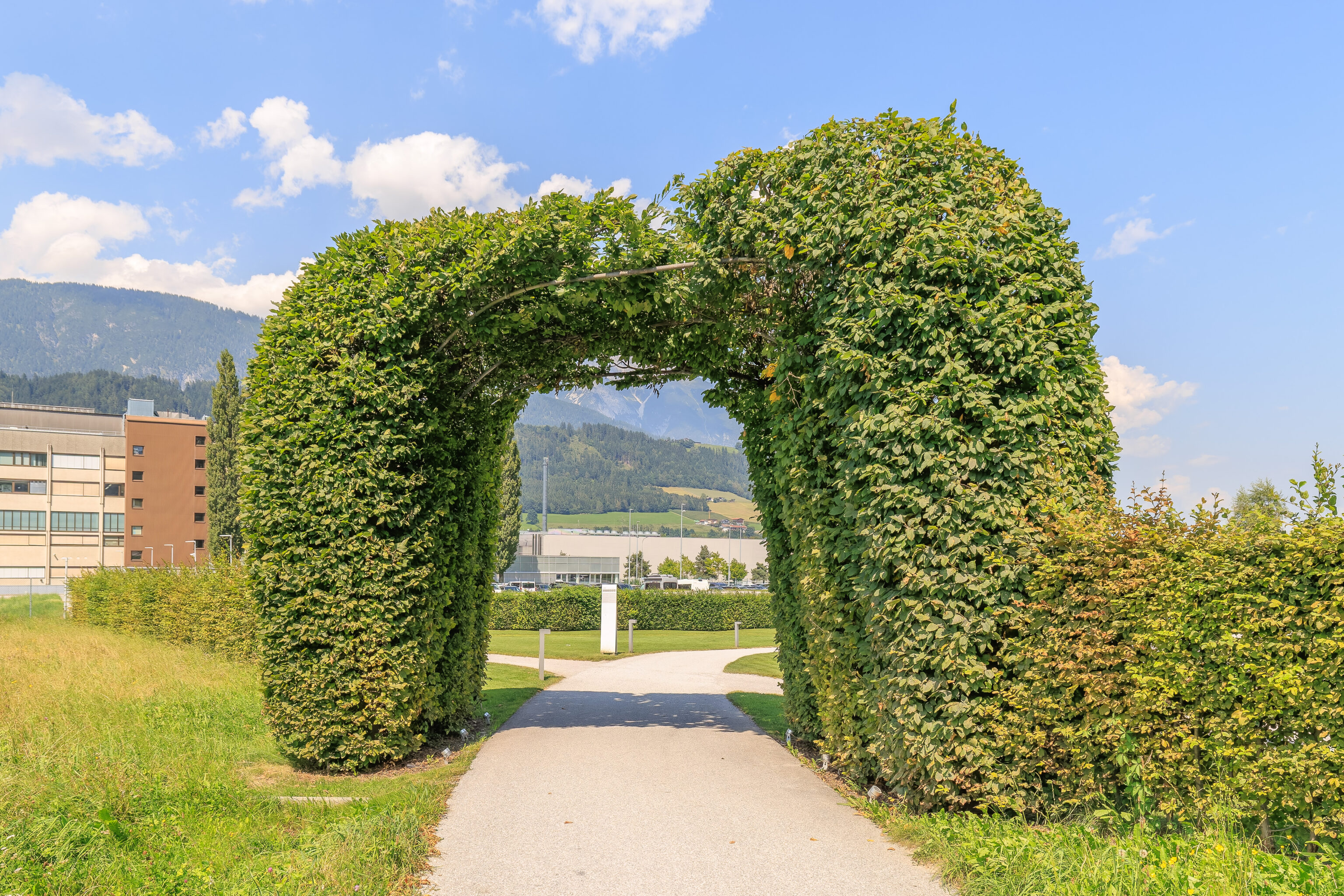
As we kept on going, the path curved a bit to the right revealing a canopied entrance.

We walked in, finally arriving at the Kristallwelten.
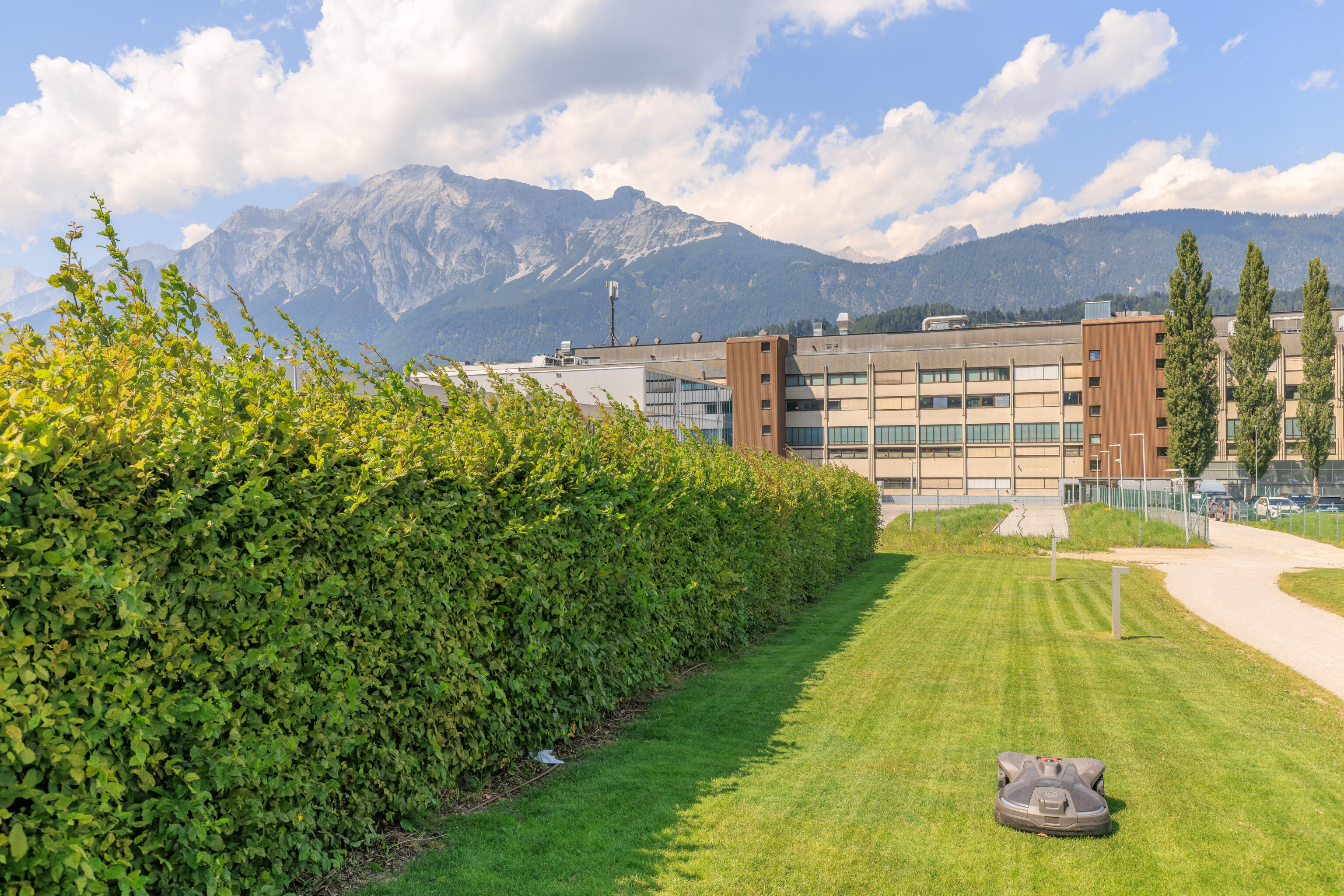
Looking to our left, we could see the mountains in the background, factory buildings, and a robotic lawn mower mowing some lawn that didn’t need to be mowed!

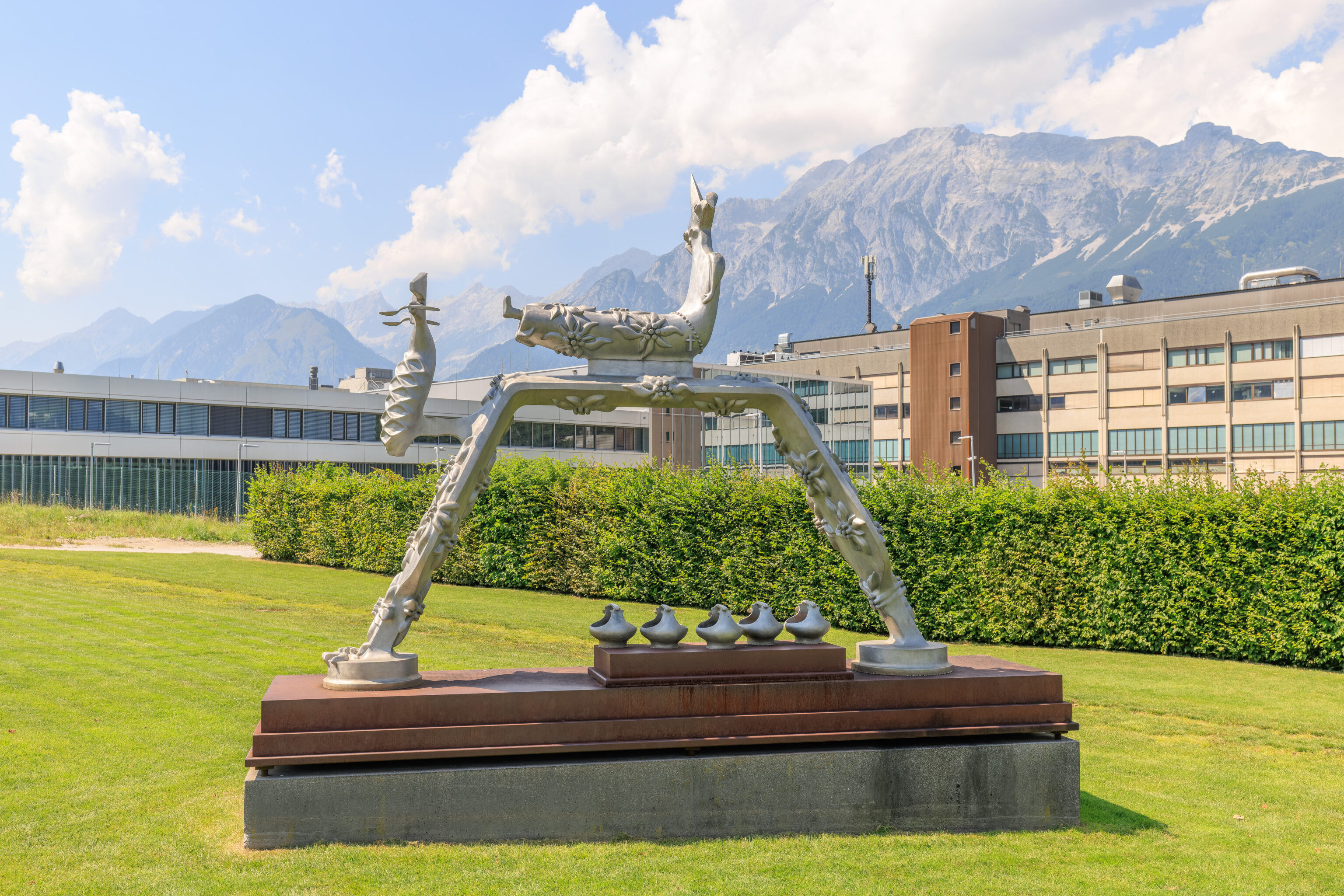
There were a few sculptures like this one. A sign here identifies this sculpture:
BRUNO GIRONCOLI
UNTITLED, 2003
ALUMINIUM CASTING
Bruno Gironcoli was born in 1936 in Villach, Carinthia. He studied art and headed the School of Sculpture at the Academy of Fine Arts in Vienna from 1977 to 2010. Large sculptures that resemble futuristic machines are characteristic for Bruno Gironcoli. Abstract aspects combine with figural elements to create a surreal, almost extraterrestrial expressive image.
The Gironcoli Museum, erected in his lifetime in the park of Schloss Herberstein, a castle in Styria, is dedicated to Gironcoli, who died in 2010.
Blease do not climb on the artwork.


One of the main exterior features of the Kristallwelten is this giant outdoor head on the side of the museum building. The entrance is off to the side. However, the ticket office is not here. We found it in a separate building to the northeast.

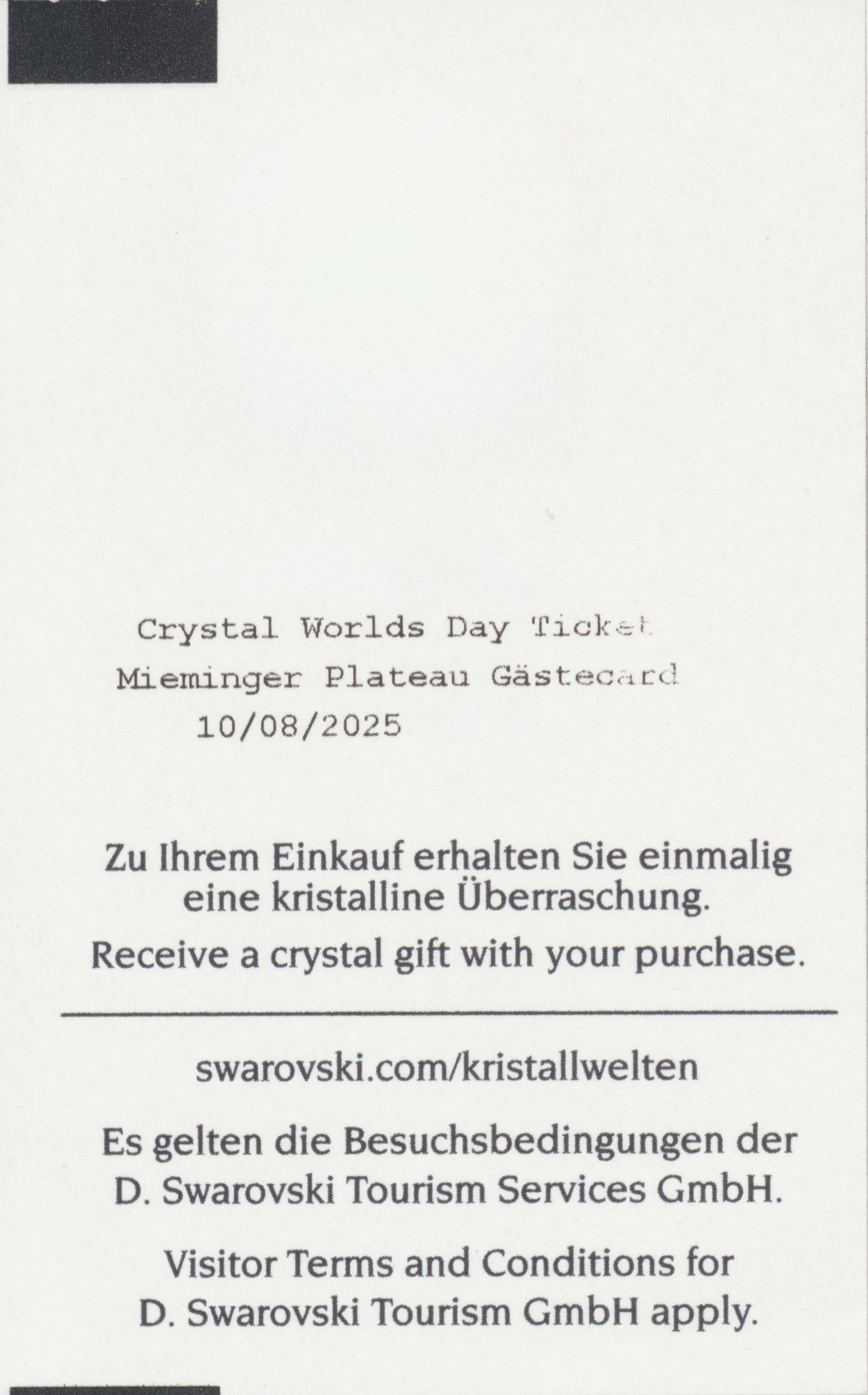
We bought a pair of tickets from the ticket office. There is a small €2 discount for holders of the Innsbruck Welcome Card.
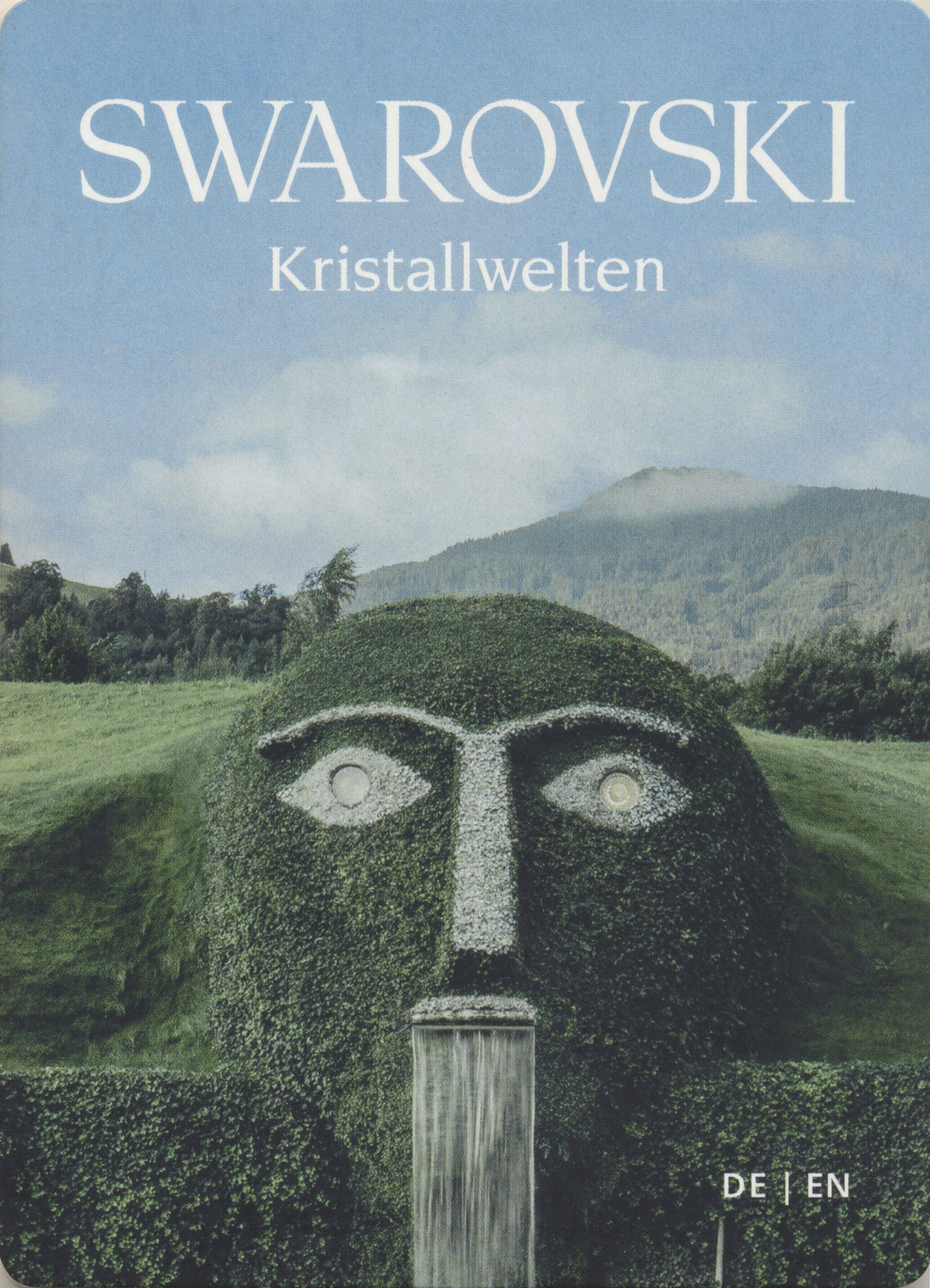
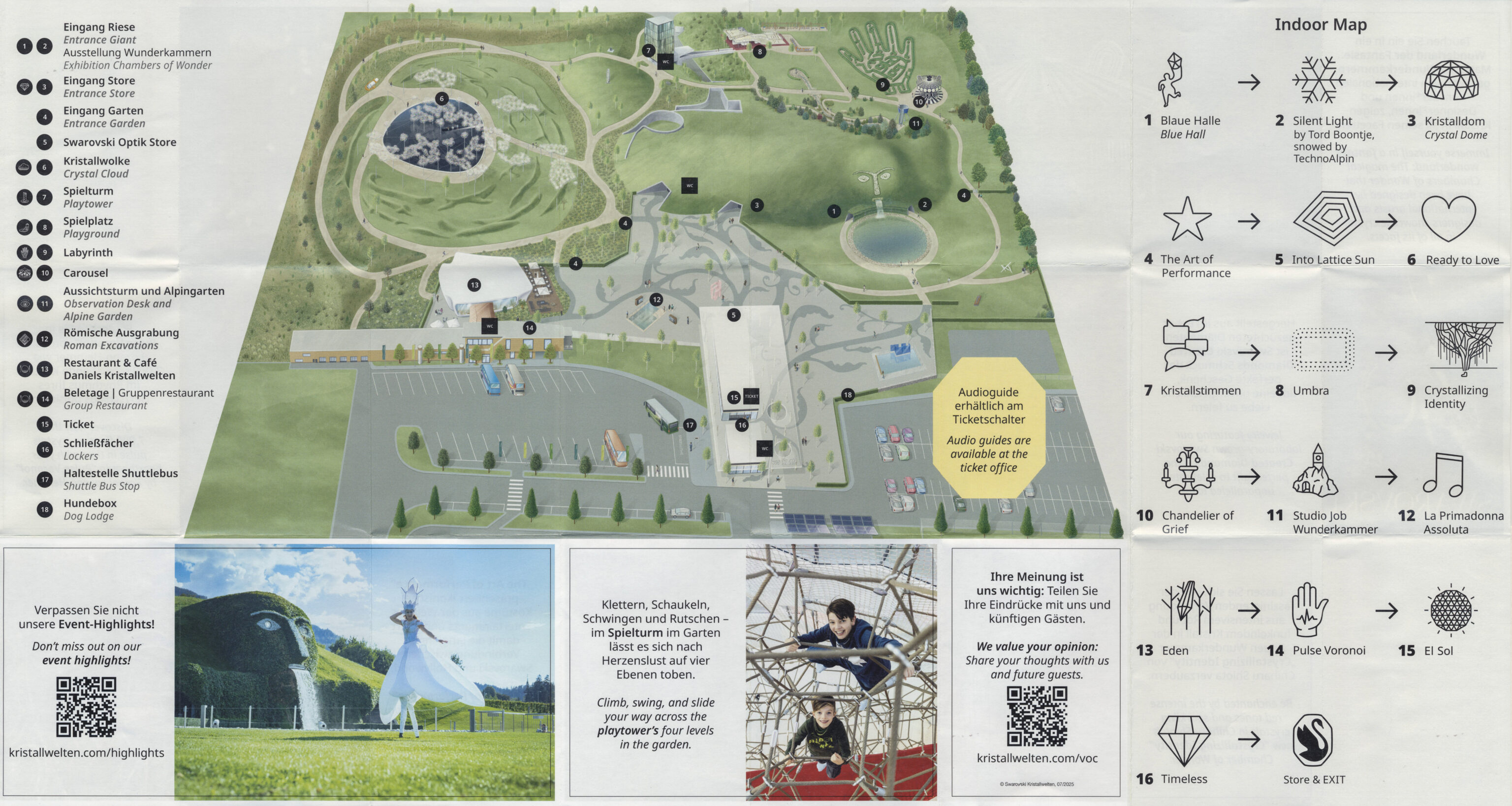
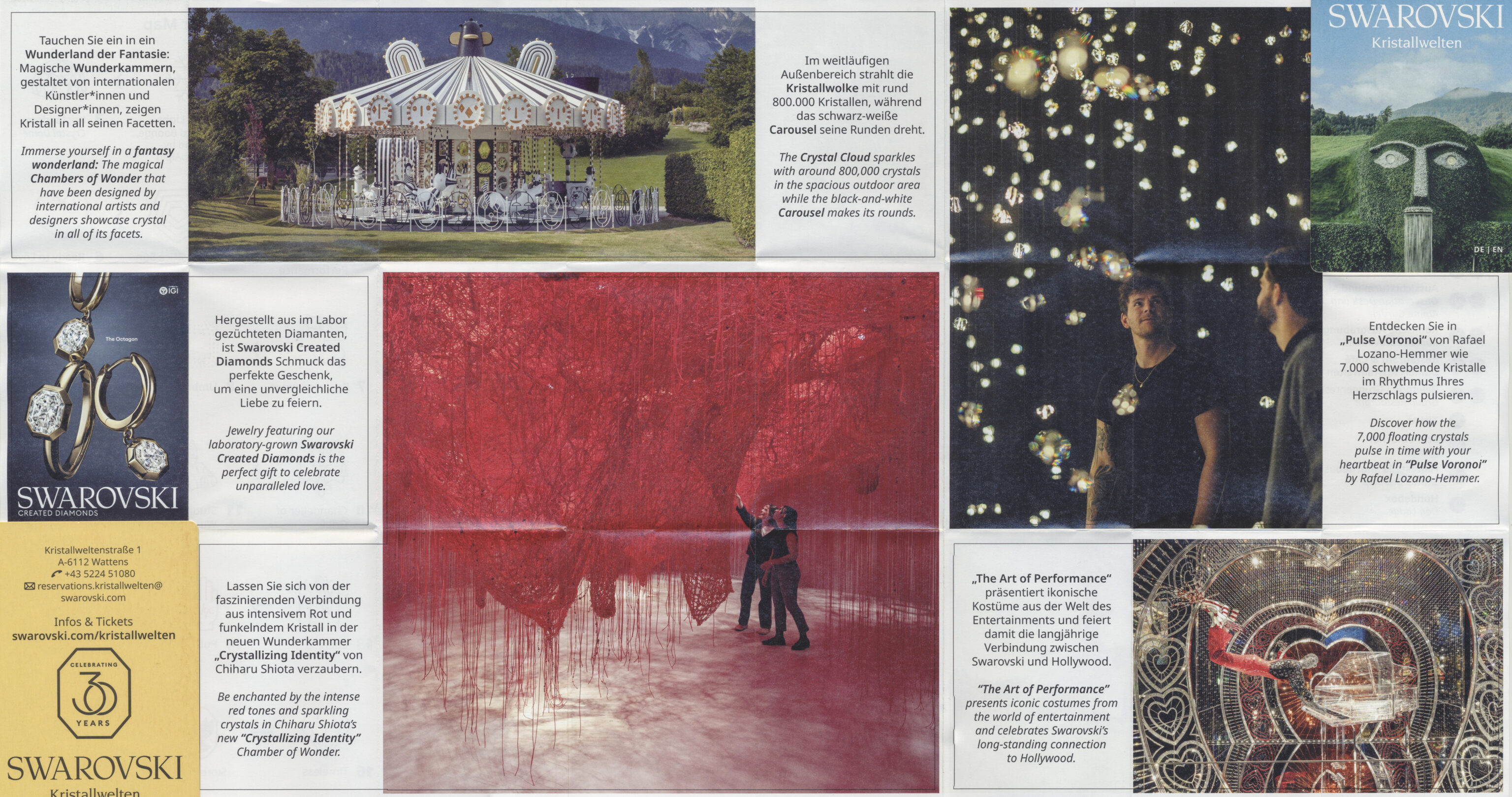

A map was provided.

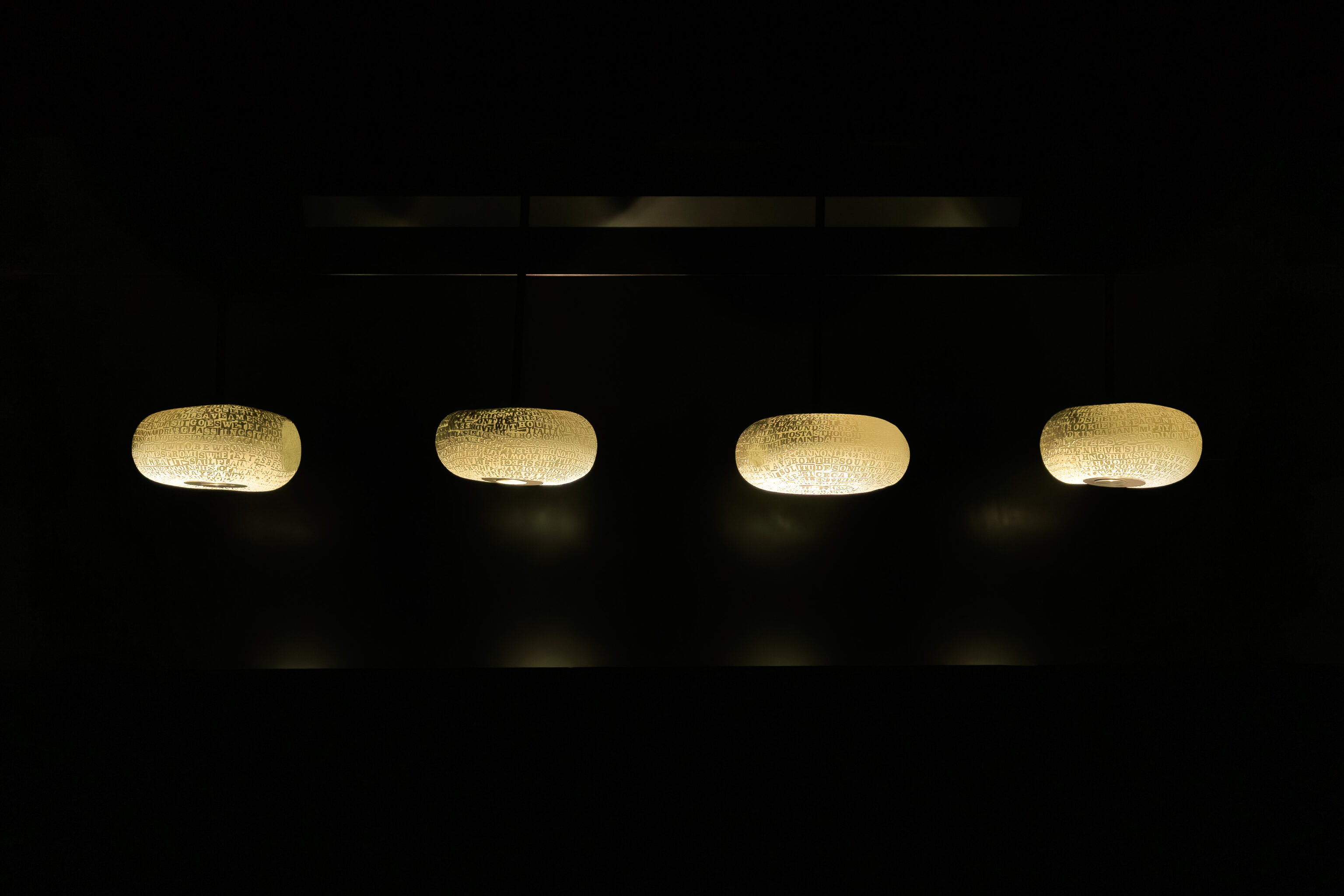
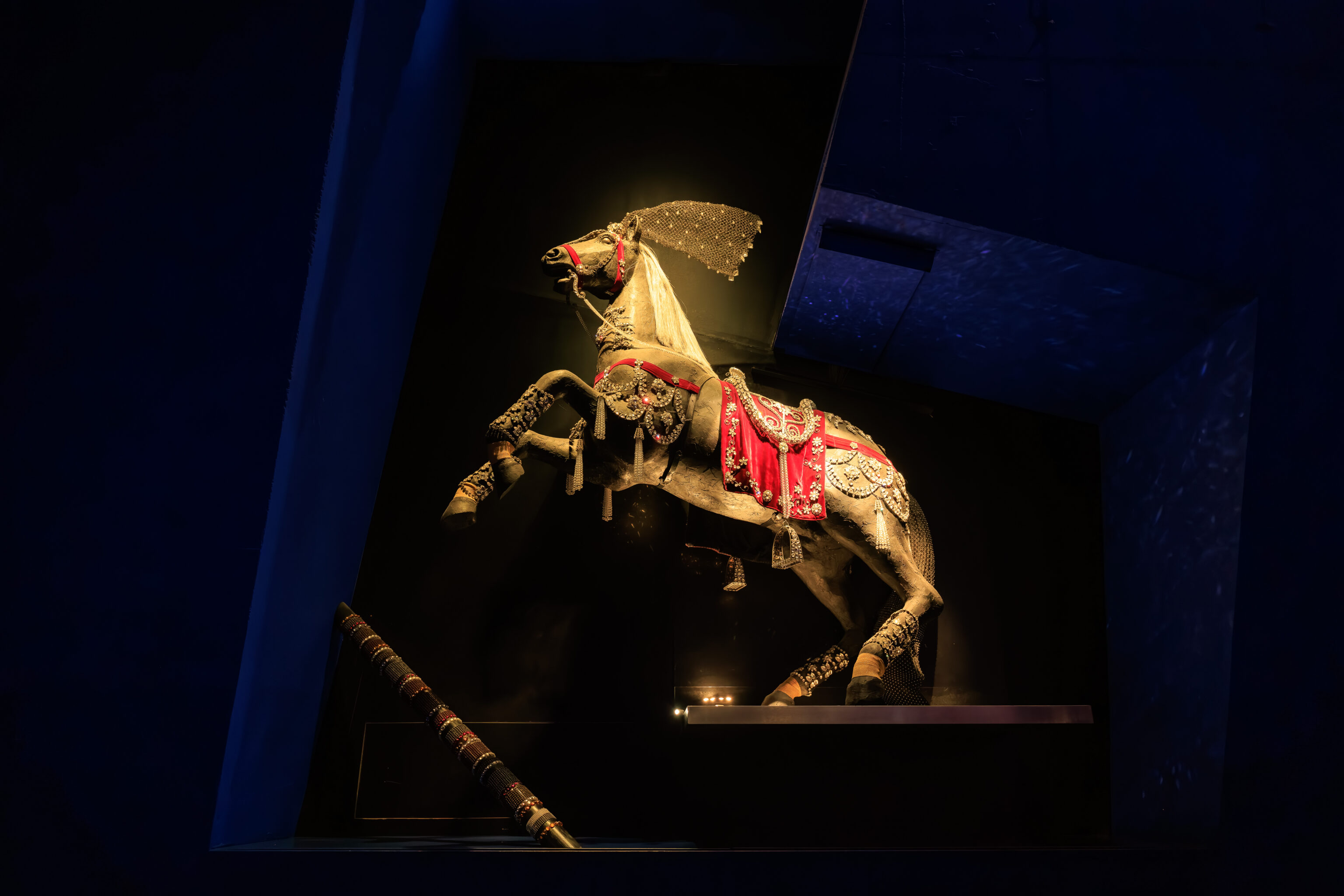
The first room, the Blue Hall, was rather dark and contained various crystal related displays around the room.
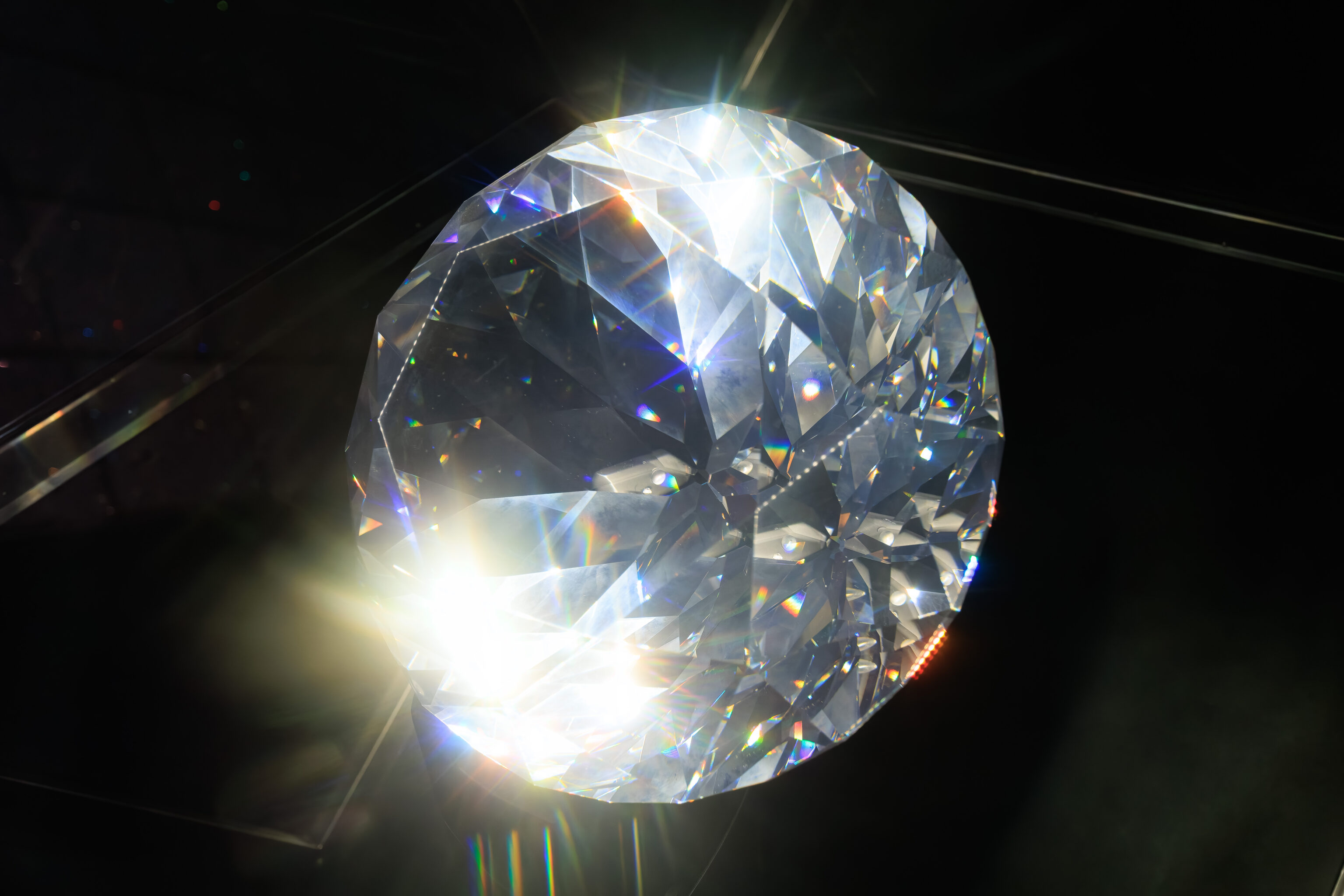
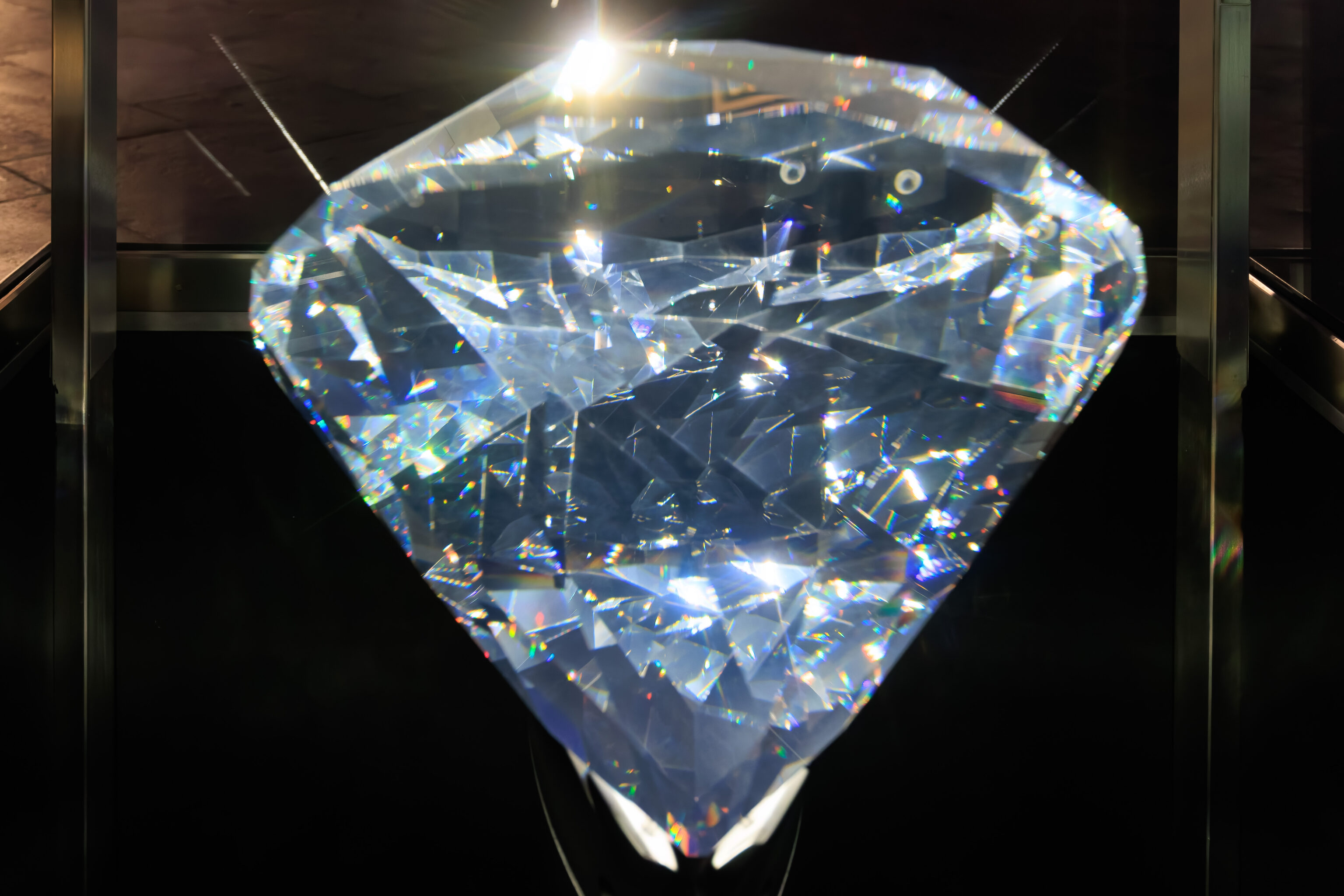
The most impressive was this huge crystal, the largest hand cut crystal in the world!
Centenar
Größter von Hand geschliffener Kristall der Welt
mit 100 Facetten (310.000 Karat). / Largest hand-cut
crystal in the world with 100 facets (310,000 carats).
KUNSTLER / ARTIST
Swarovski
JAHR / YEAR
1995

One wall was filled with various crystals, mostly clear but some colored.
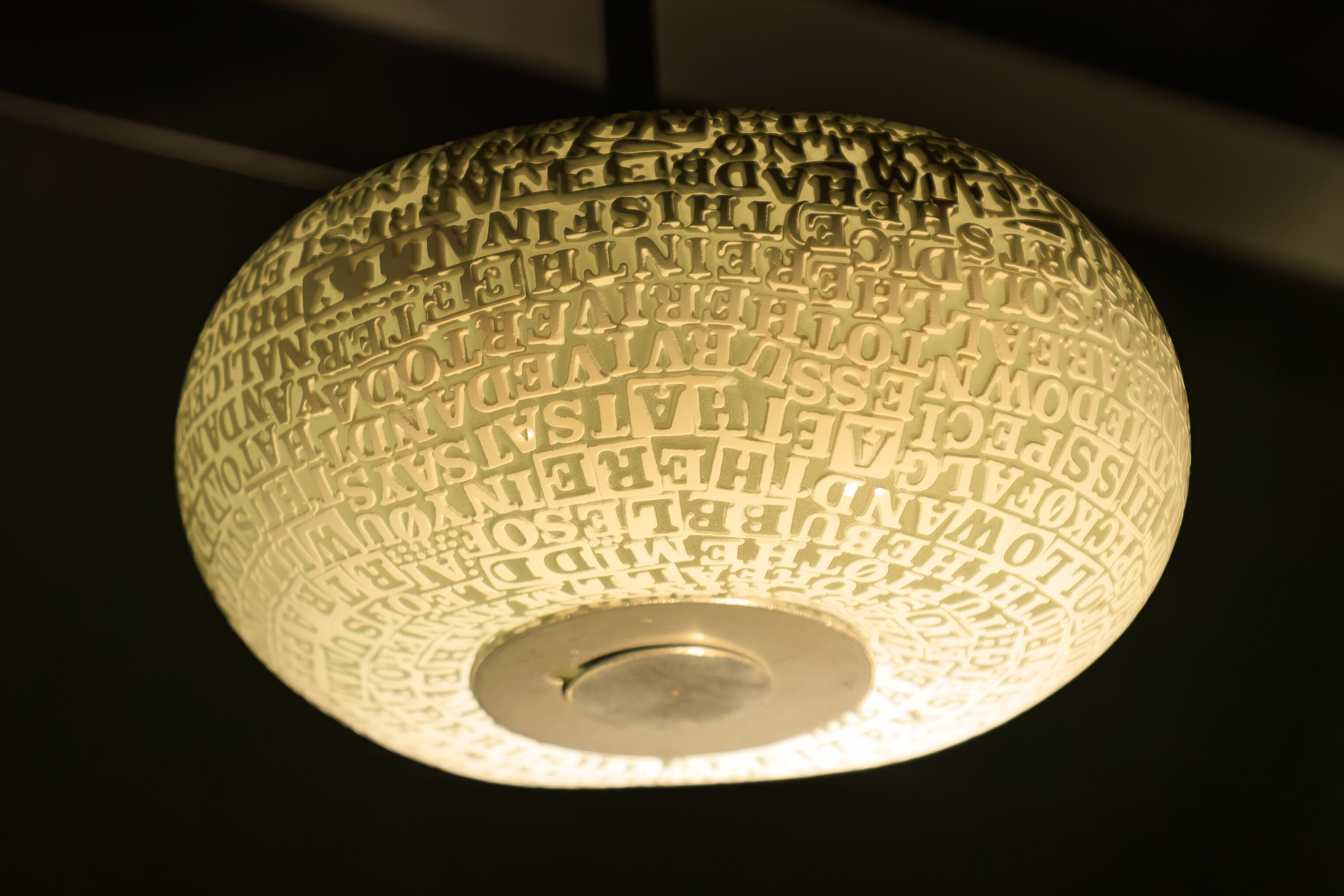
This is upside-down. Is it supposed to be upside-down?

This melting clock is based on Salvador Dali‘s melting clocks, originally from painting The Persistence of Memory and more specifically the sculpture Melting Clock on Hanger.

This hallway had what sort of appeared to be crystal icicles.

Looking down through some windows, we could see a winter scene.
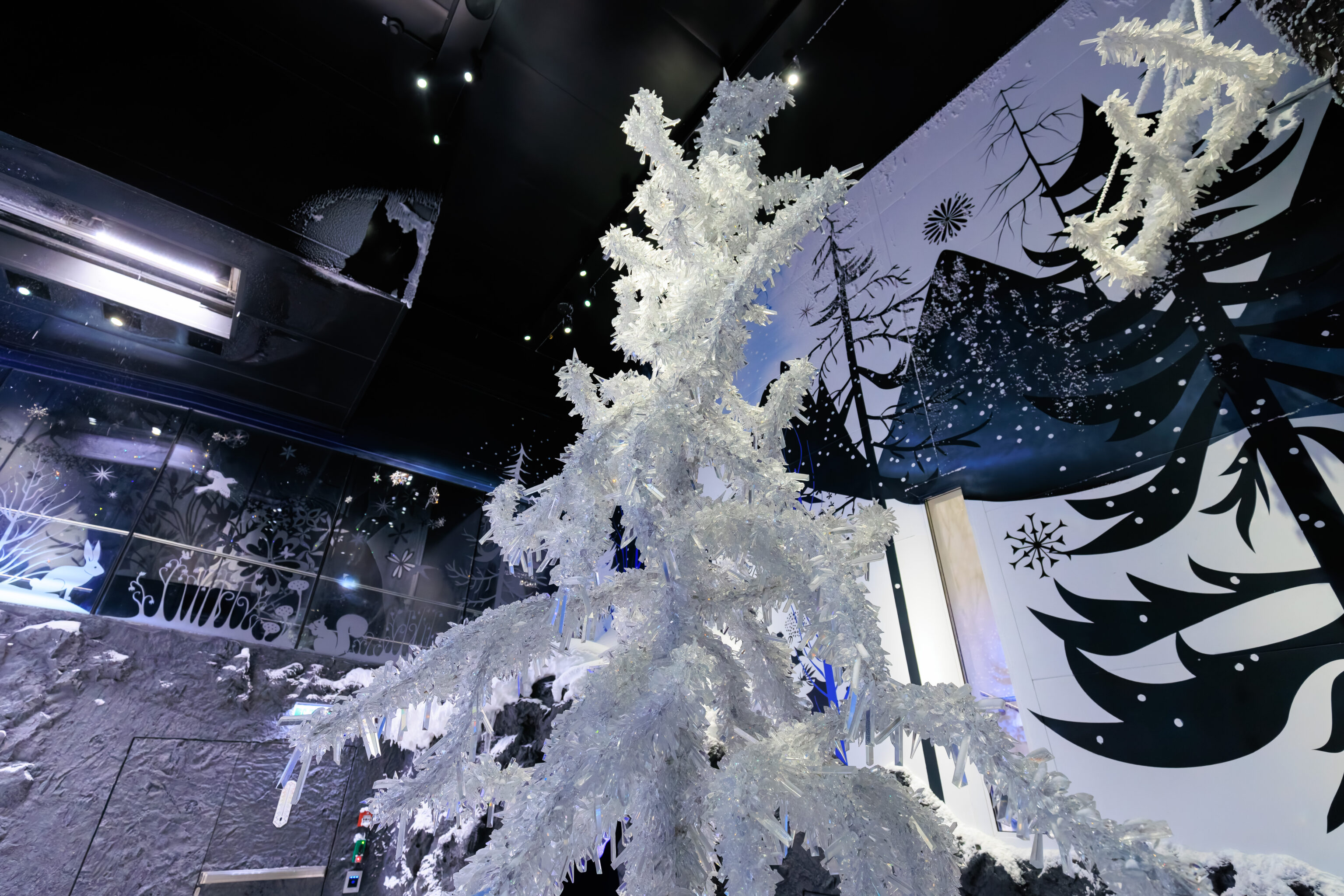
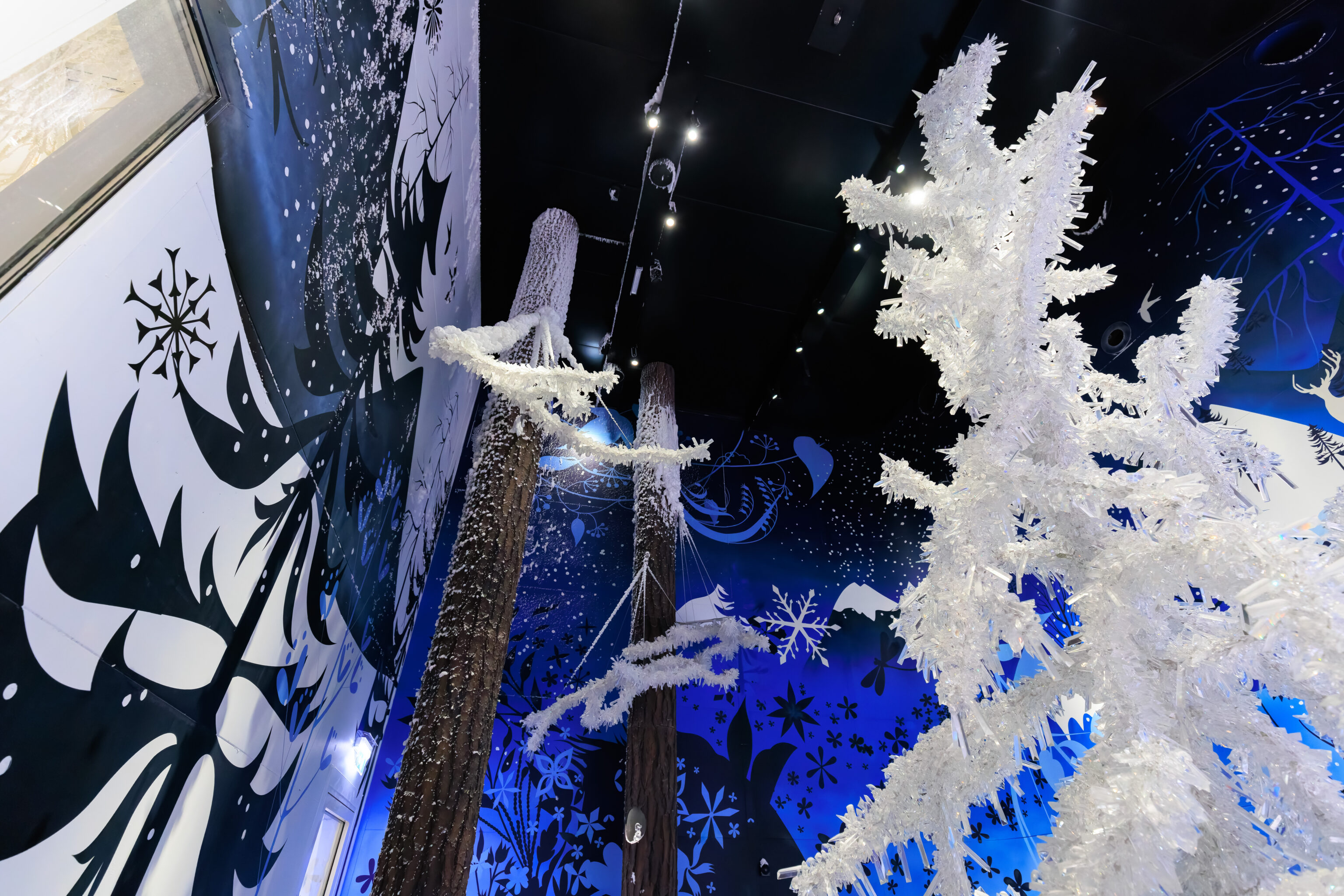
The route led to this room, the Chamber of Wonder. The tree at the center of the room is named Silent Light. The snow in the room was real, or at least, real in the sense that man-made snow at a ski area is real snow, and it was cold. Very cold given that it was blazing hot outside and we were dressed for summer!

There were some crystal branches off to the side as well as some displays.

We even found an owl!


Continuing on, the next room contained the Crystal Dome. As the name suggests, it is a geodesic dome based on Buckminster Fuller‘s domes. Like the one that we visited in Montreal, except much smaller!
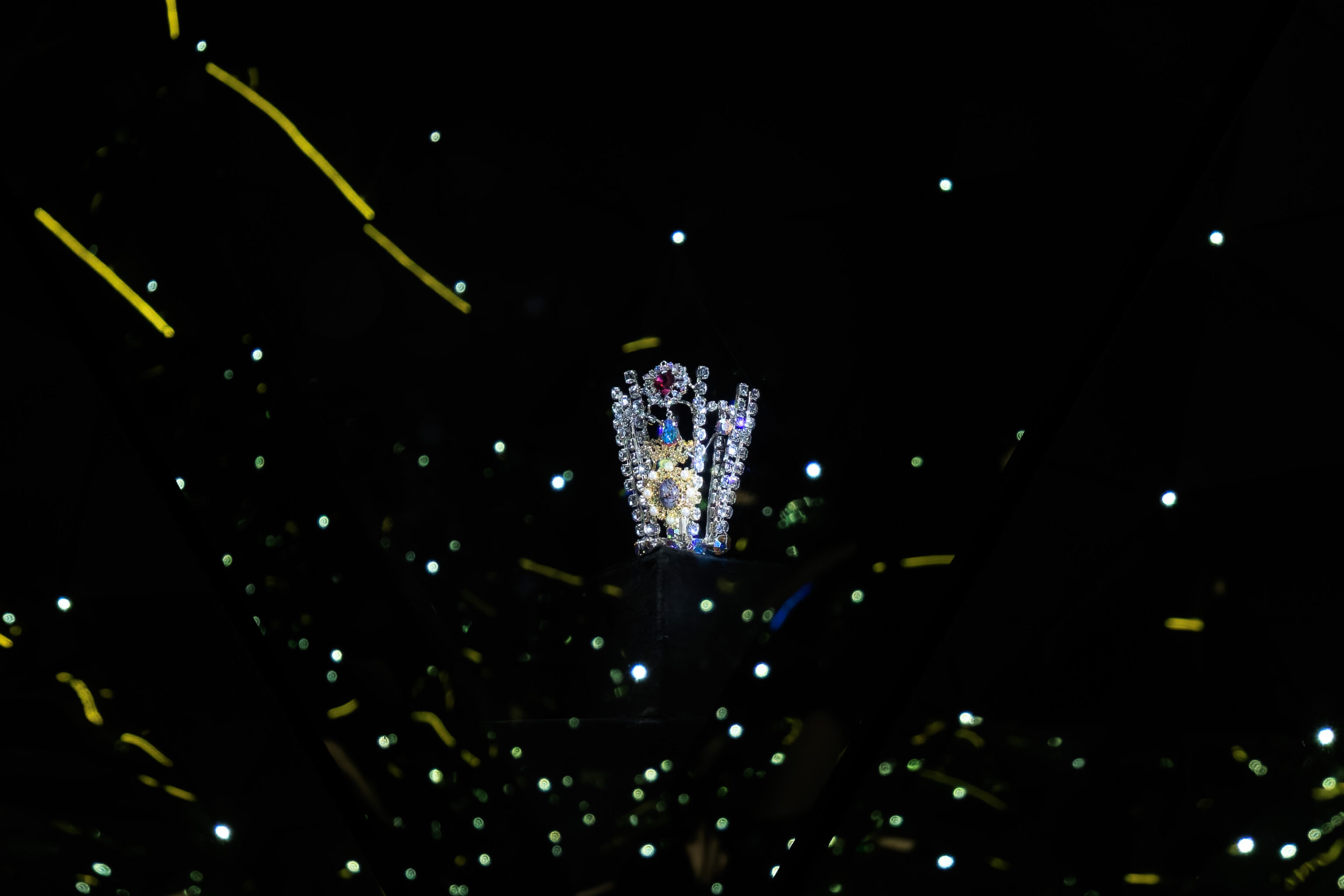
The lighting within the dome was constantly changing. At times, compartments would become visible exposing some small crystal item within. Such as this crown.
We recorded a bit of video showing what it was like and also showing how the crystal item completely disappears from view.


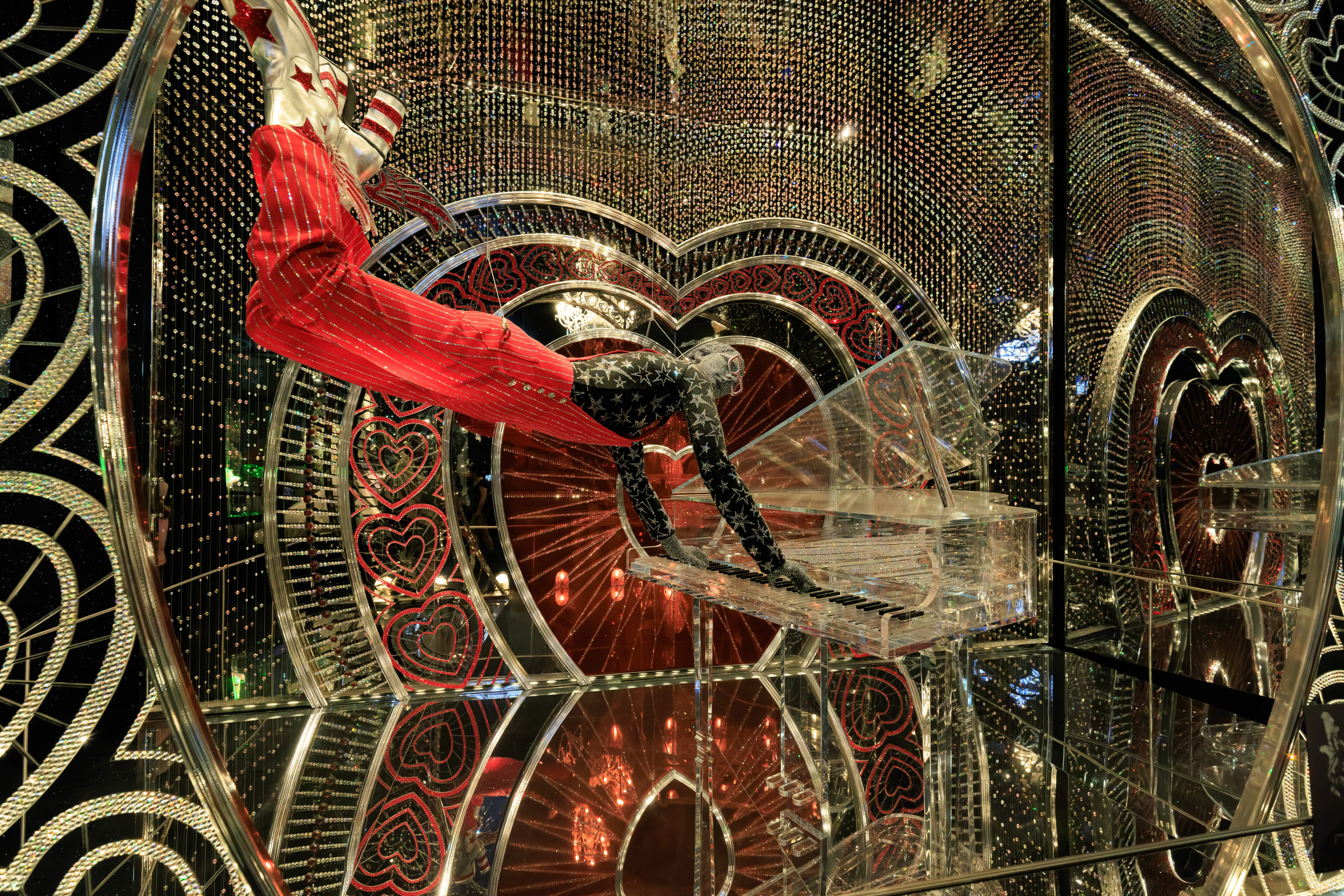
The Art of Performance displays originals as well as replicas of outfits and such which include Swarovski crystals. We only photographed a few of the collection that looked interesting and were easily photographed.
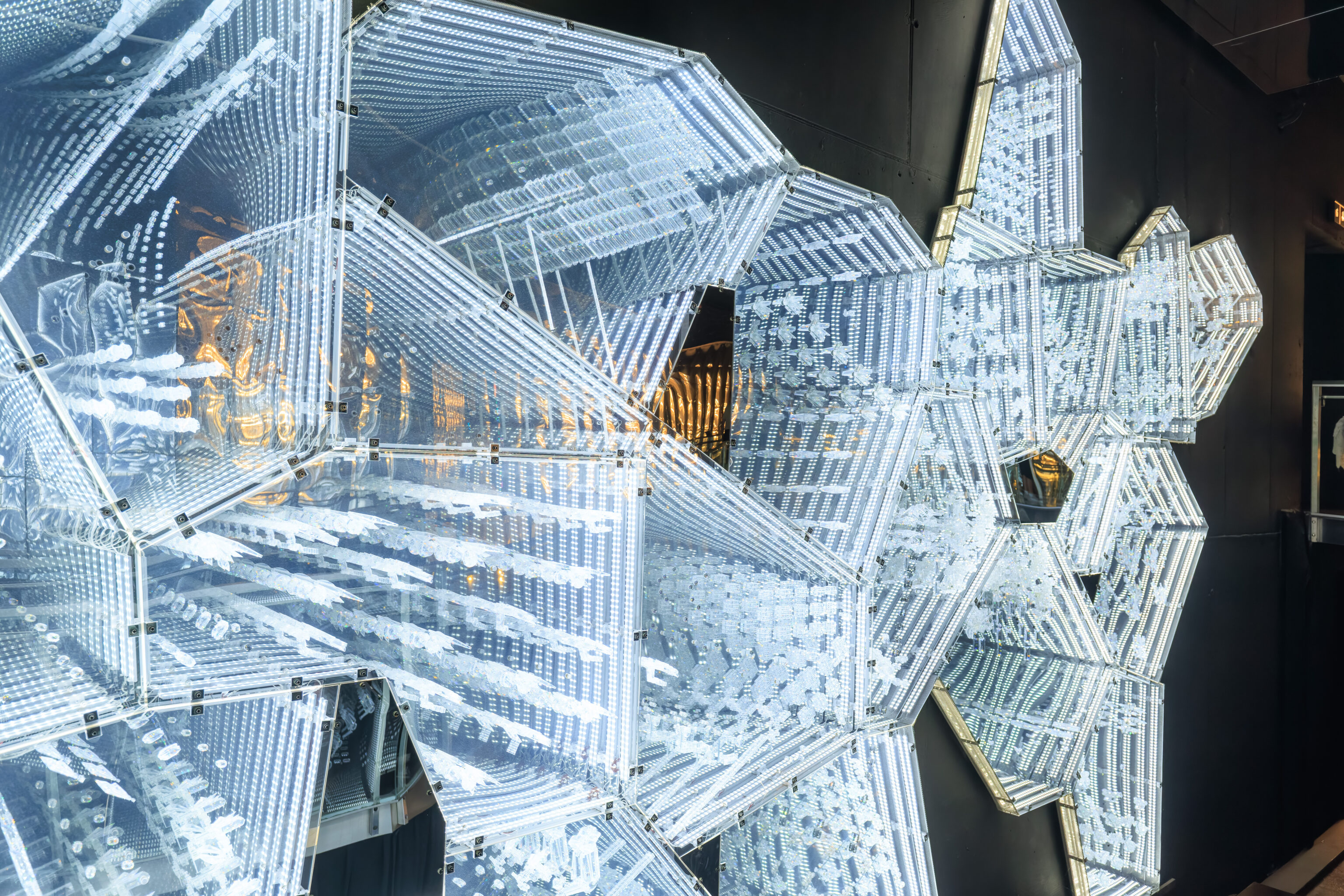
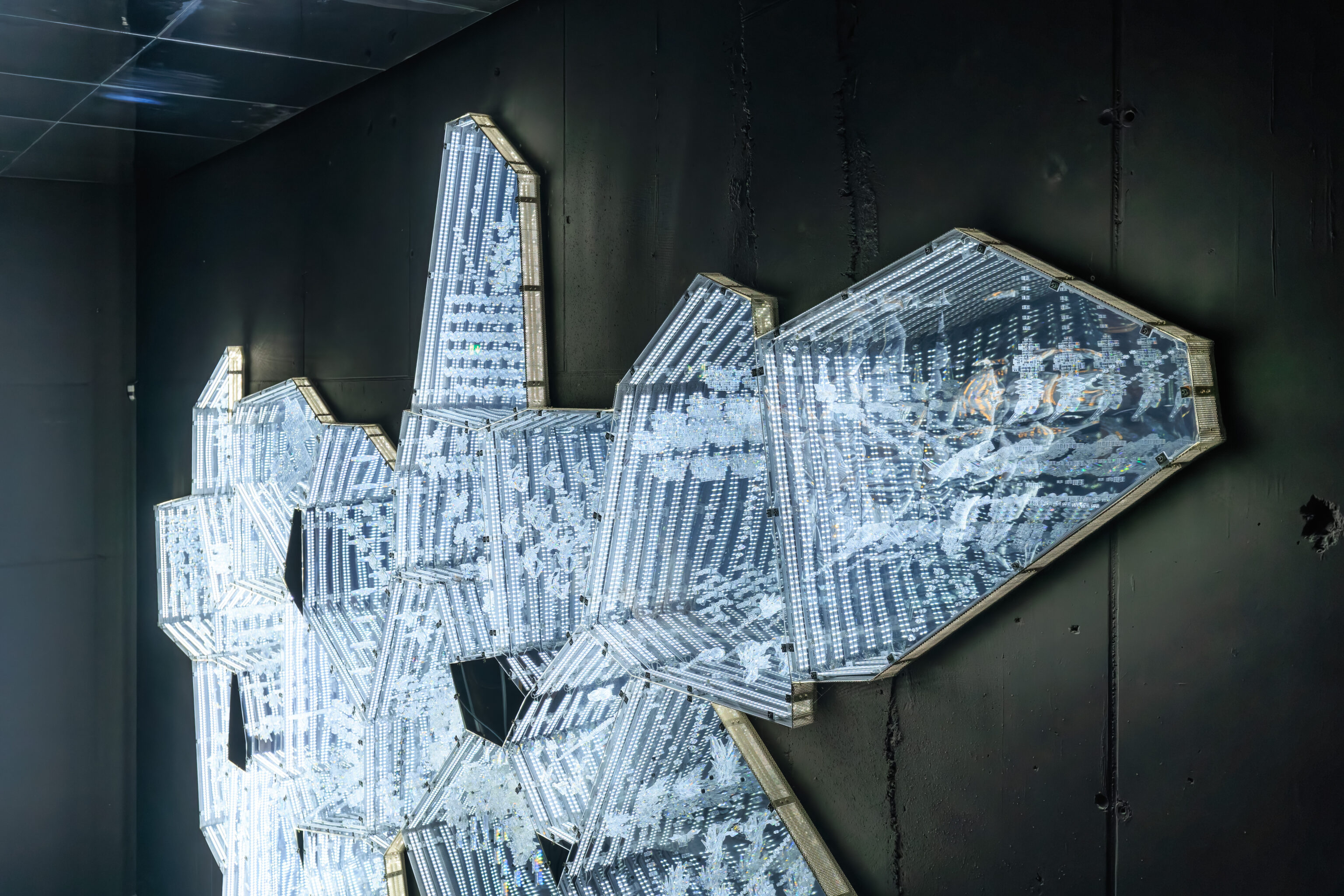


These displays were part of the Into Lattice Sun by Korean artist Lee Bul.

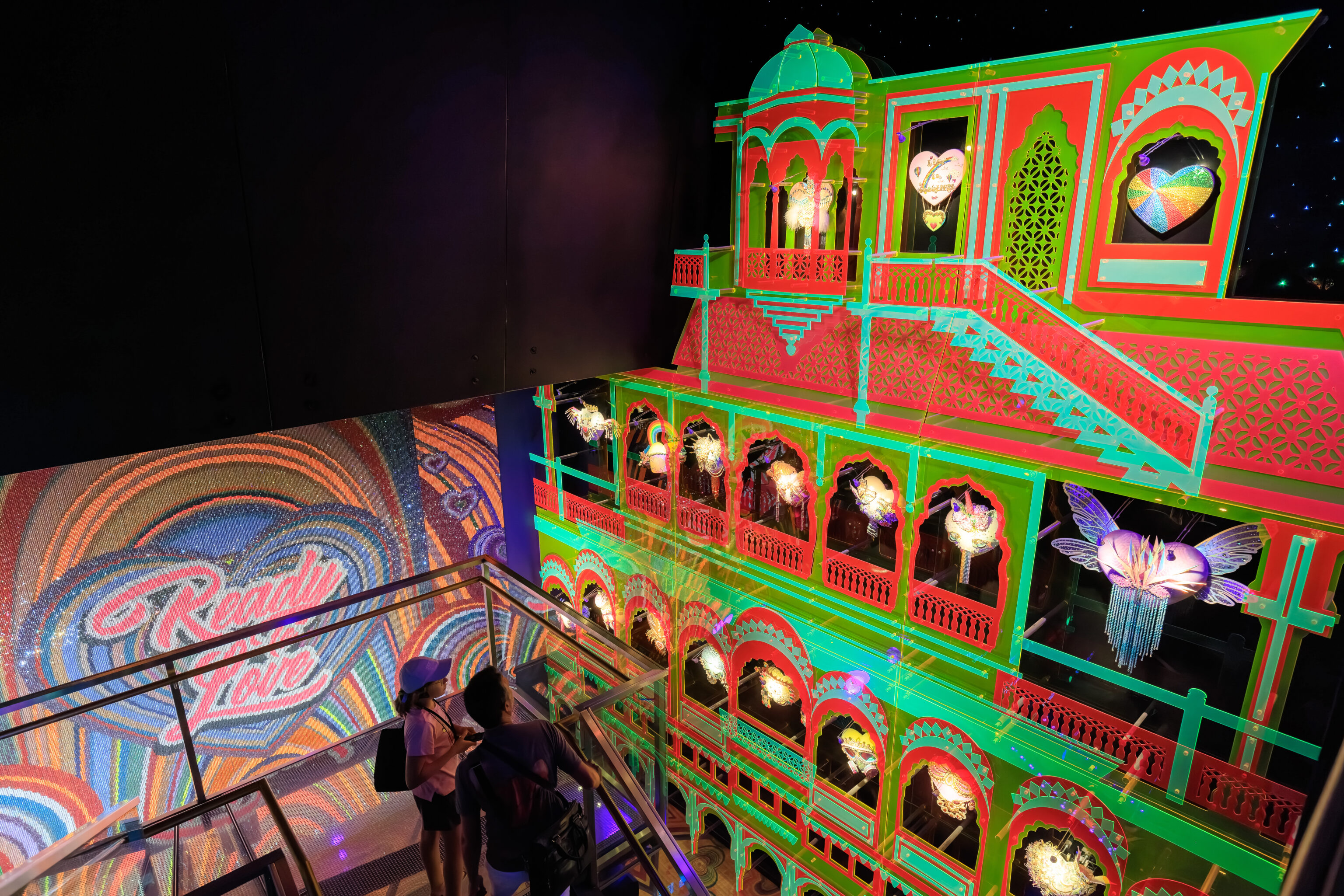
We then passed through Ready to Love when walking up to the floor above.

This exhibit, Kristallstimmen, or Crystal Voices, was interesting. It is best depicted in the video below:
The way it works is that when a person walks below one of the lighted crystals above, the crystals around it darken to basically highlight where the person is. The crystal also will play a sound recording by a Swarovski employee. The recordings, by 3,000 different people, include more than 50 languages.
The wall here seems like the other side of the crystal wall that we saw at the very first room.
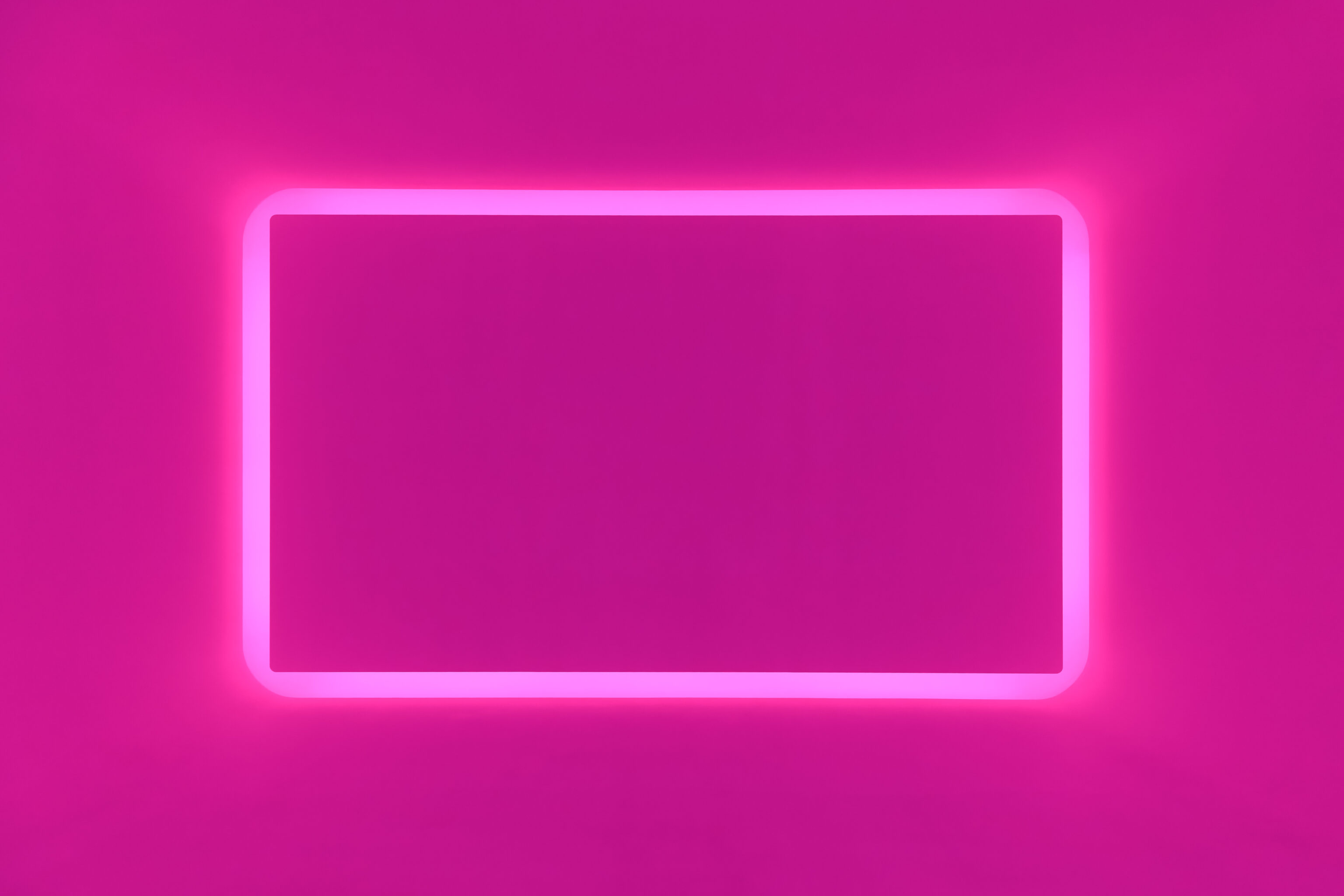
This room, Umbra, was pretty simple. Just an illuminated rectangle with rounded corners. It turns out that the whole thing changes color.
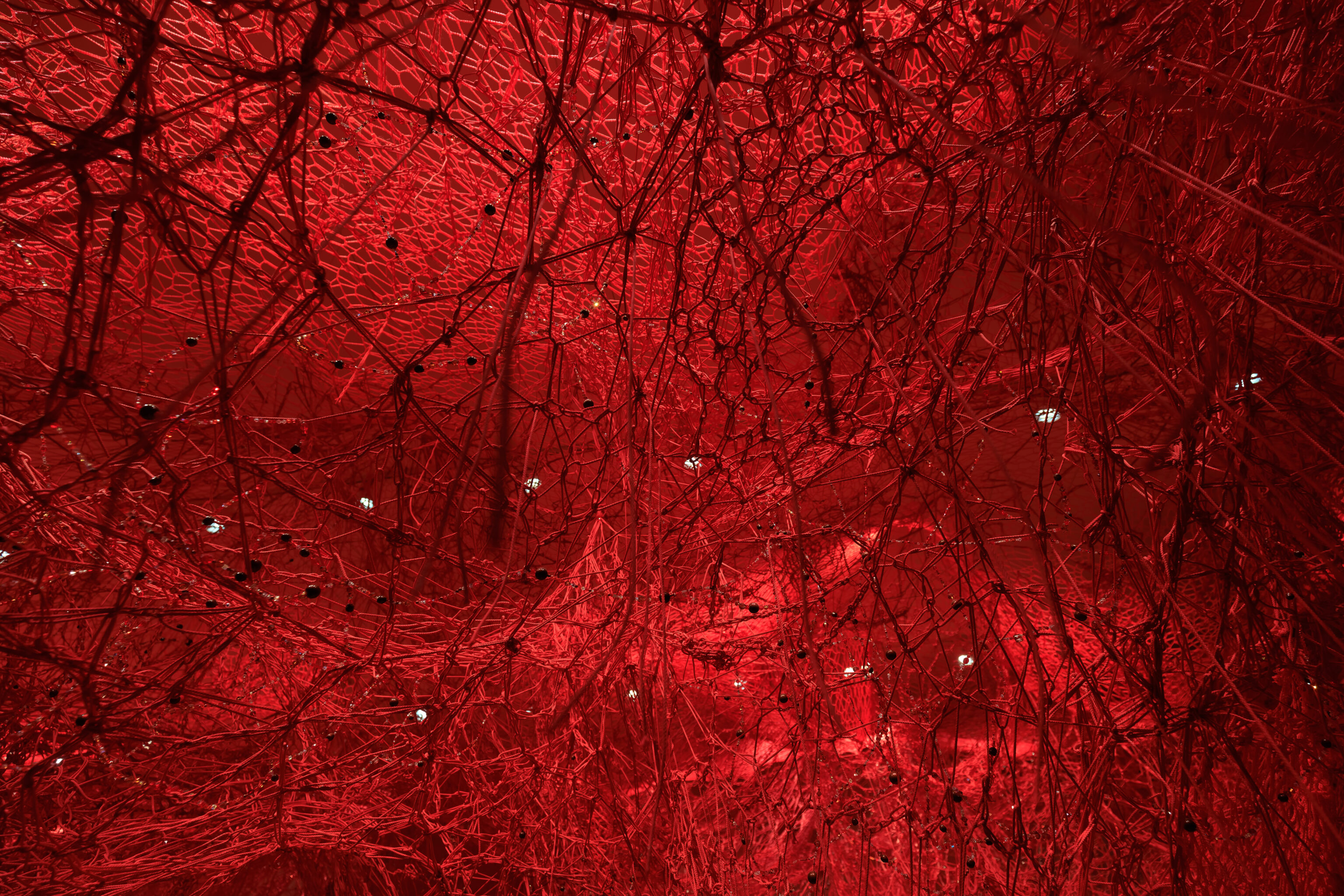


This room, Crystallizing Identity by Japanese artist Chiharu Shiota, was kind of weird. It is described as being a depiction of the Japanese version of the red thread of fate. It is a matchmaking legend that if two people are destined to meet, they are connected by an invisible red thread.
All these red threads from afar seemed a bit more like blood vessels than the actual red threads that they are.
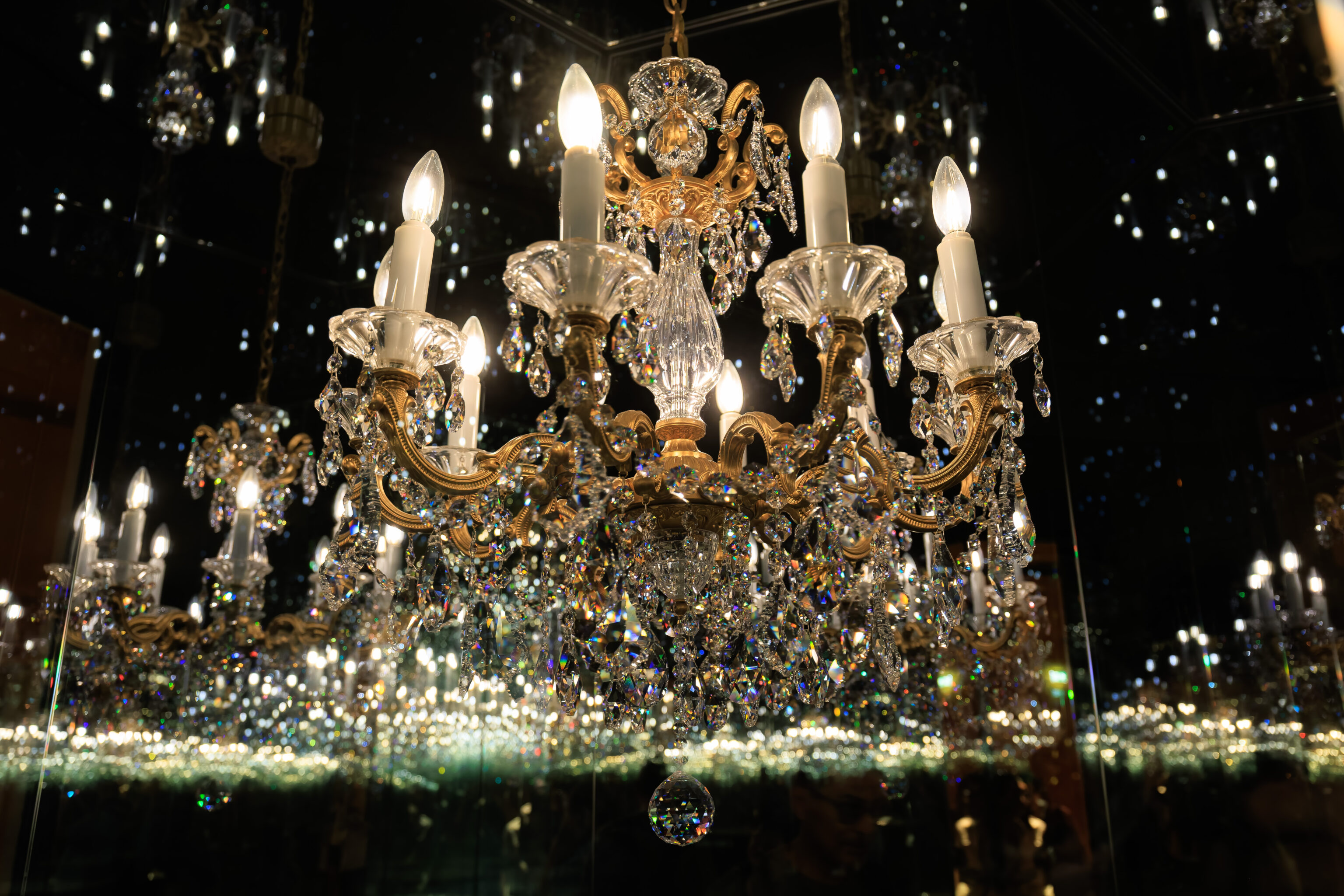
This room, Chandelier of Grief by Japanese artist Yayoi Kusama, was in the center of a mirrored room. This creates an appearance of chandeliers in all directions.
A brief clip of the chandelier rotating.
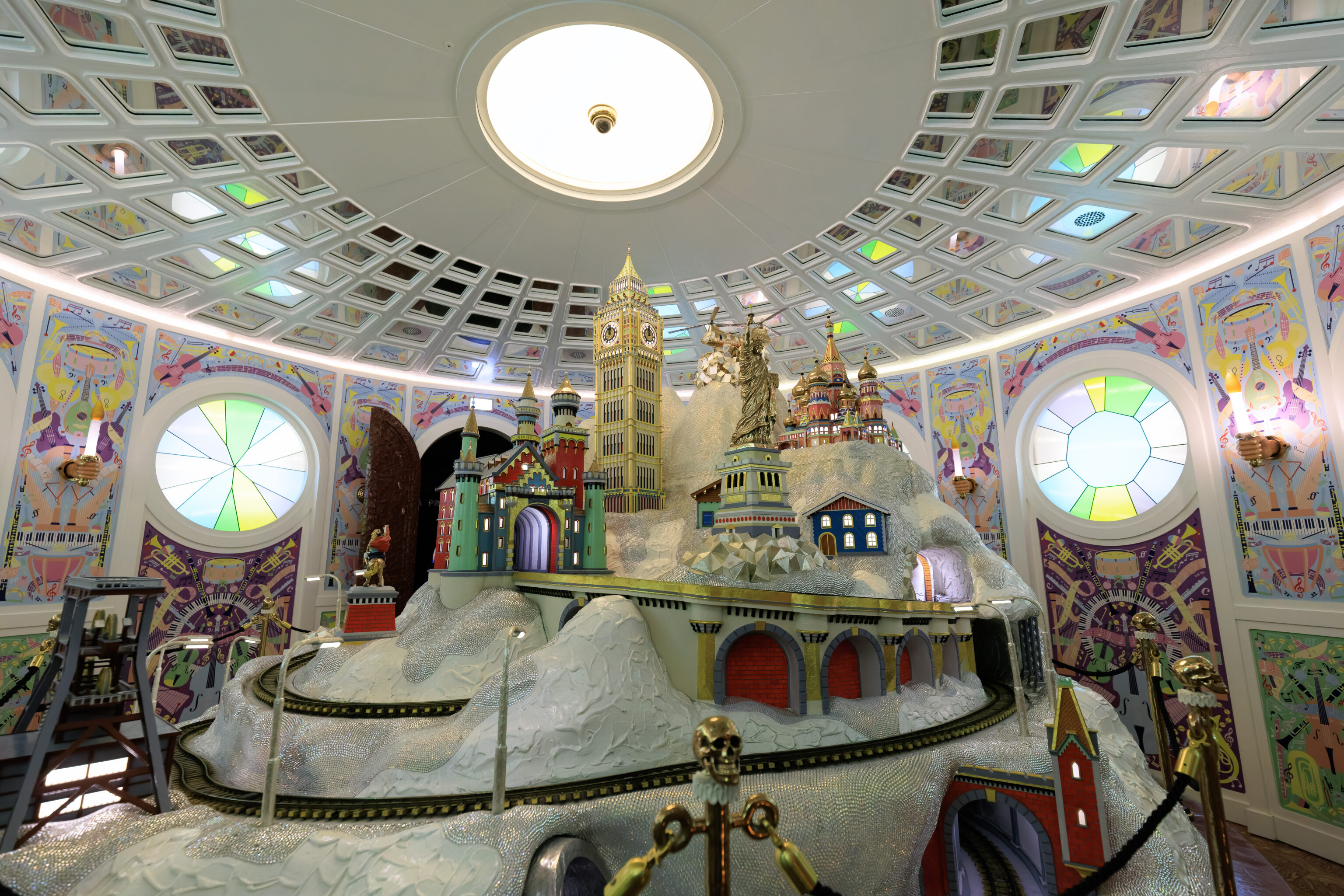
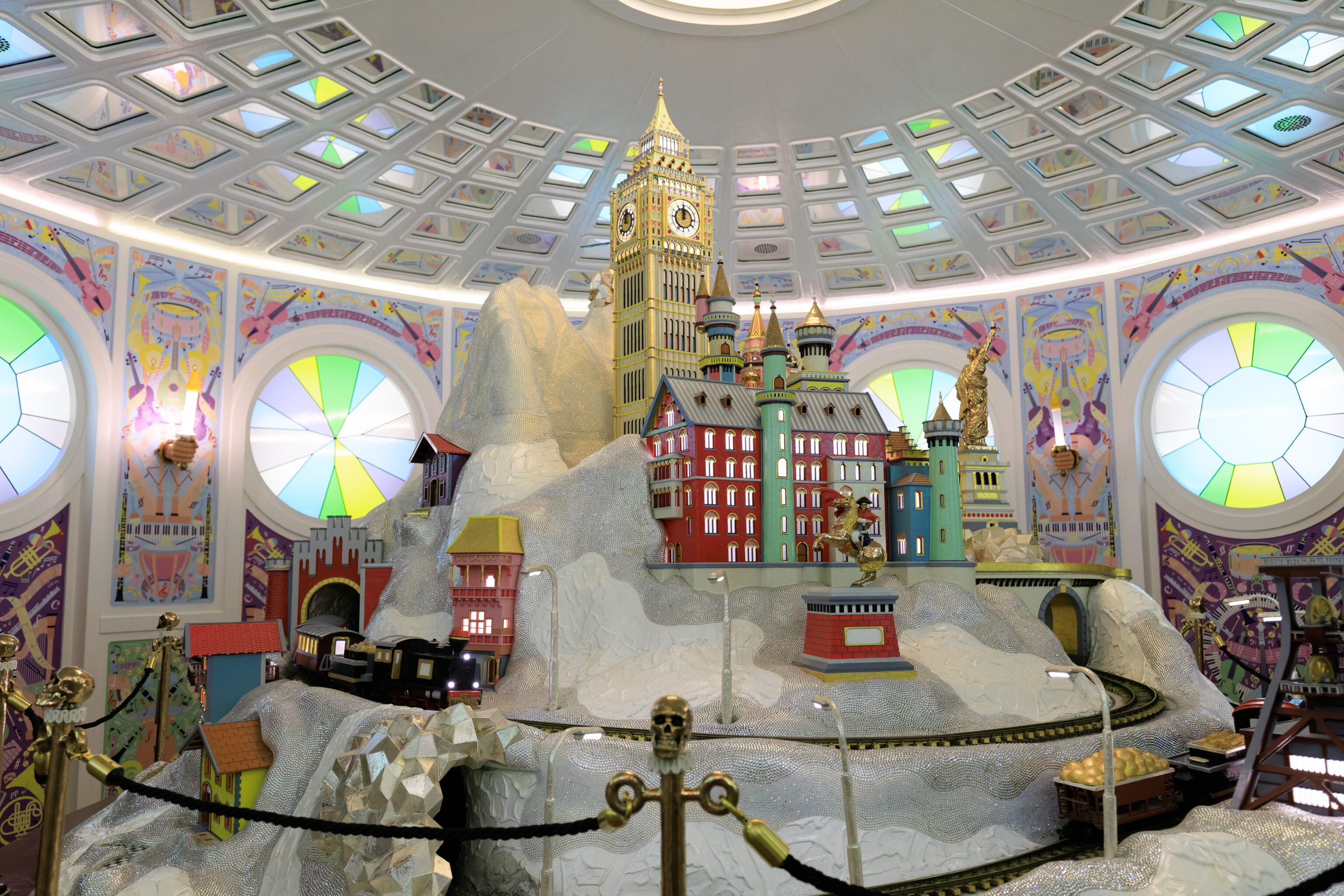

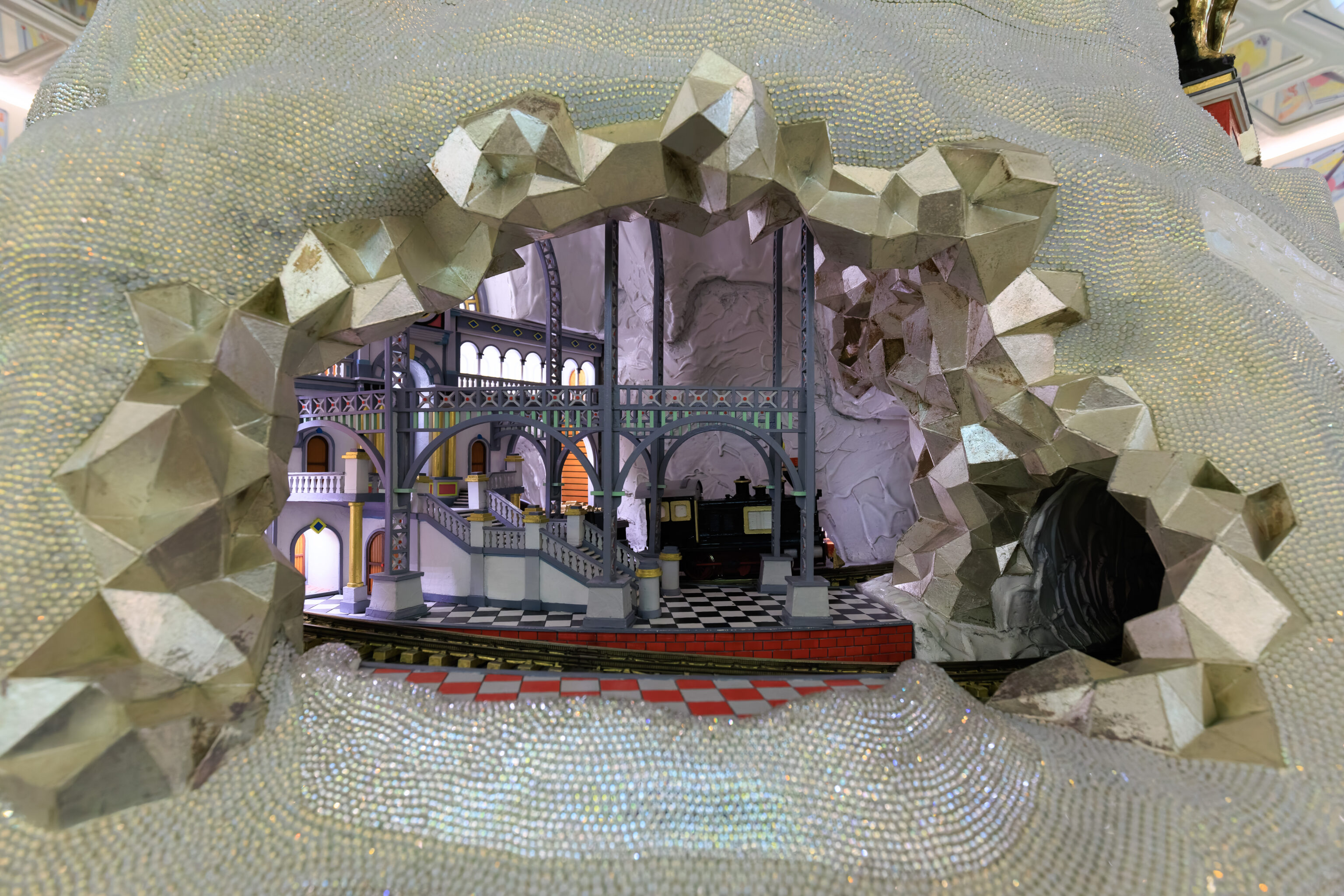
This circular room contained Wunderkammer (Wonder Chamber) by Studio Job. It is a model train running in a circle around a mountain with various scenes. Its kind of familiar yet different. What is the gold USMC Chinook doing up there? Was Donald Trump attracted by all the gold in this display?

This very dark room, La Primadonna Assoluta, features the soprano Jessye Norman singing within the Crystal Dome. And a big giant rock. Or more specifically, a huge natural crystal from Madagascar.

This room was titled Eden by the duo Fredrikson Stallard. It was basically a depiction of a path through a forest.
This next room was Pulse Voronoi by Rafael Lozano-Hemmer, a Mexican Canadian artist. It is a depiction of the Big Bang in crystal form and is composed of 7,000 crystals. There is an interactive element, though its not really obvious at all. There are heartbeat sensors in the room which set how the lighted crystals pulse. So presumably, if someone had an increased heart rate, they would pulse faster.
A video shows what we saw a bit better. Maybe we should have recorded for longer?

This next room, El Sol by Mexican architect Fernando Romero, contained a sphere in the center. As the Spanish name of the exhibit suggests, it depicts the Sun.
We also recorded a video of El Sol. Its not particularly interesting.
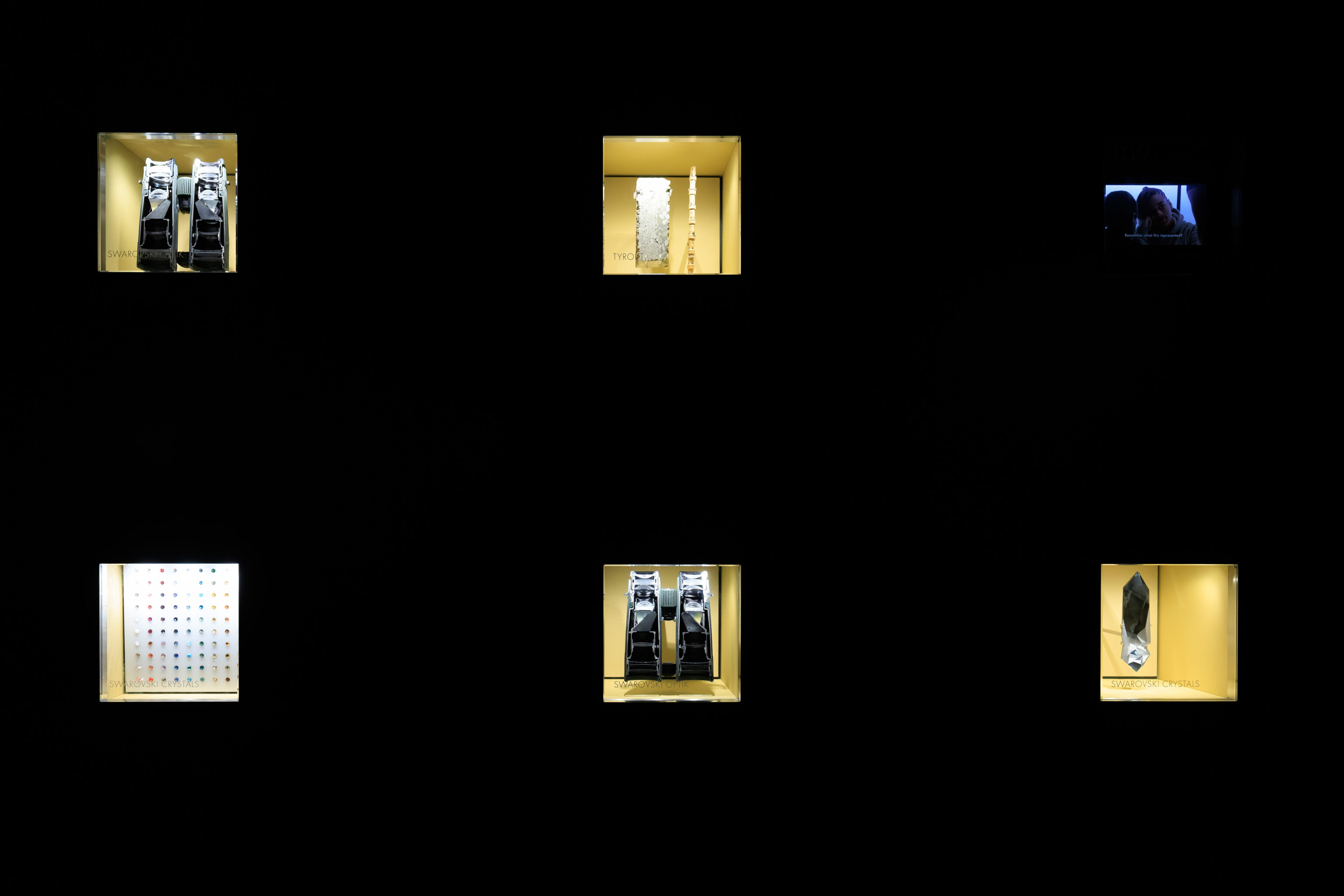
The final section of the museum was Timeless, which contains various Swarovski artifacts This was just a small portion of this section.
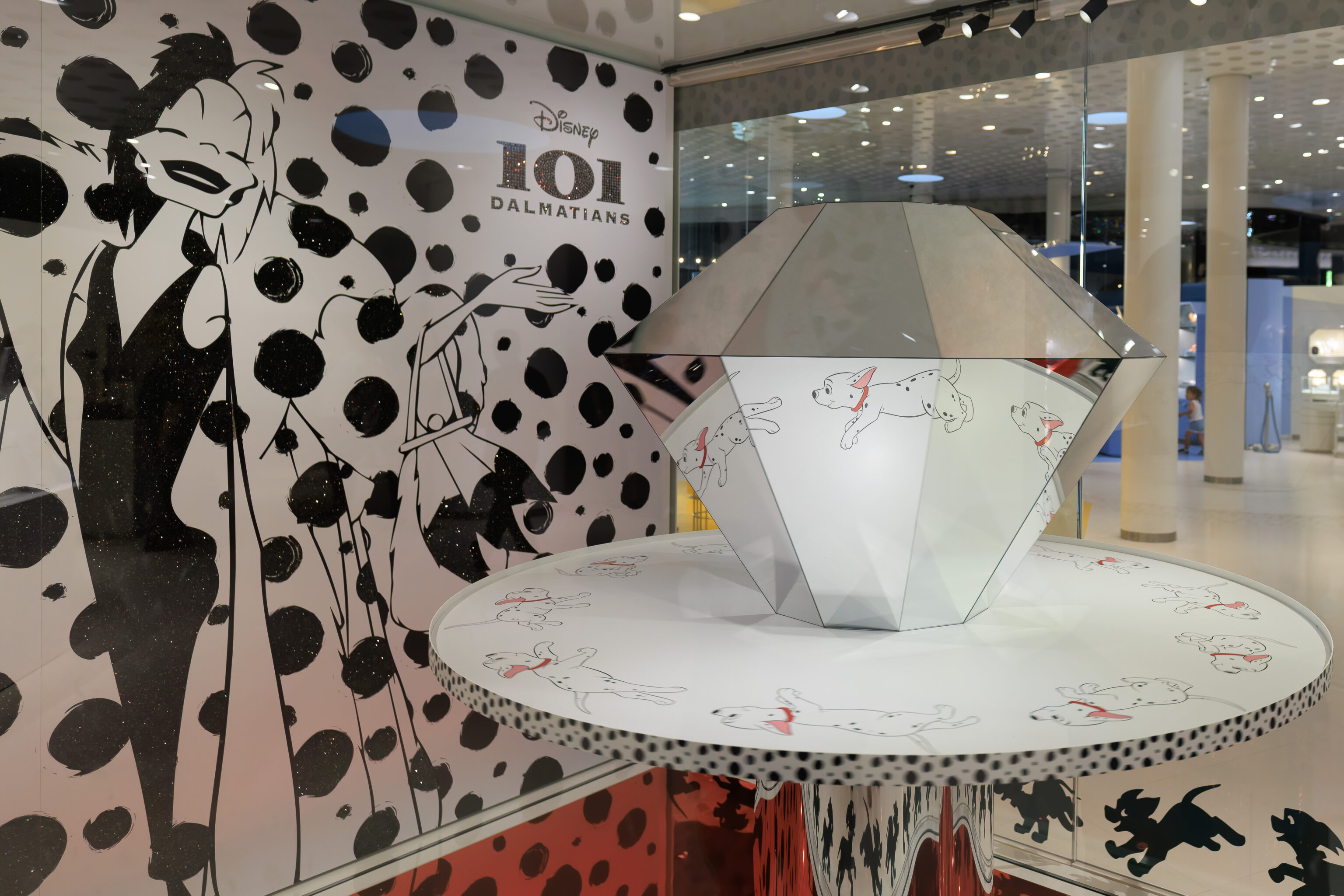
After Timeless, we walked into the store. There were some displays in here as well. This one was a rotating crystal for Disney‘s 101 Dalmatians. The rotation creates an animation effect from the reflections of the dalmatians on the outer edge of the circular platform below.
A video shows the animation effect more effectively than trying to describe it in words!
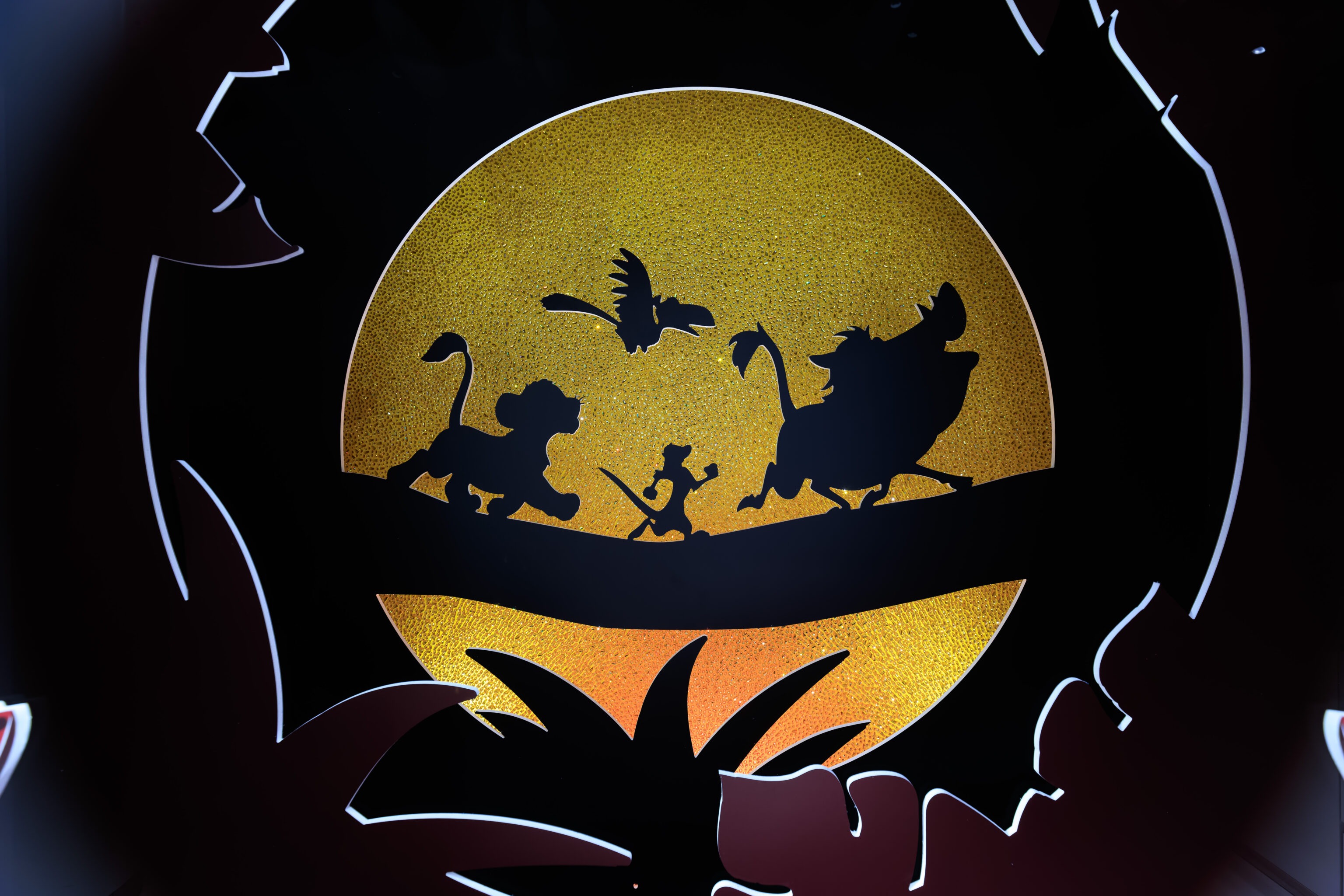
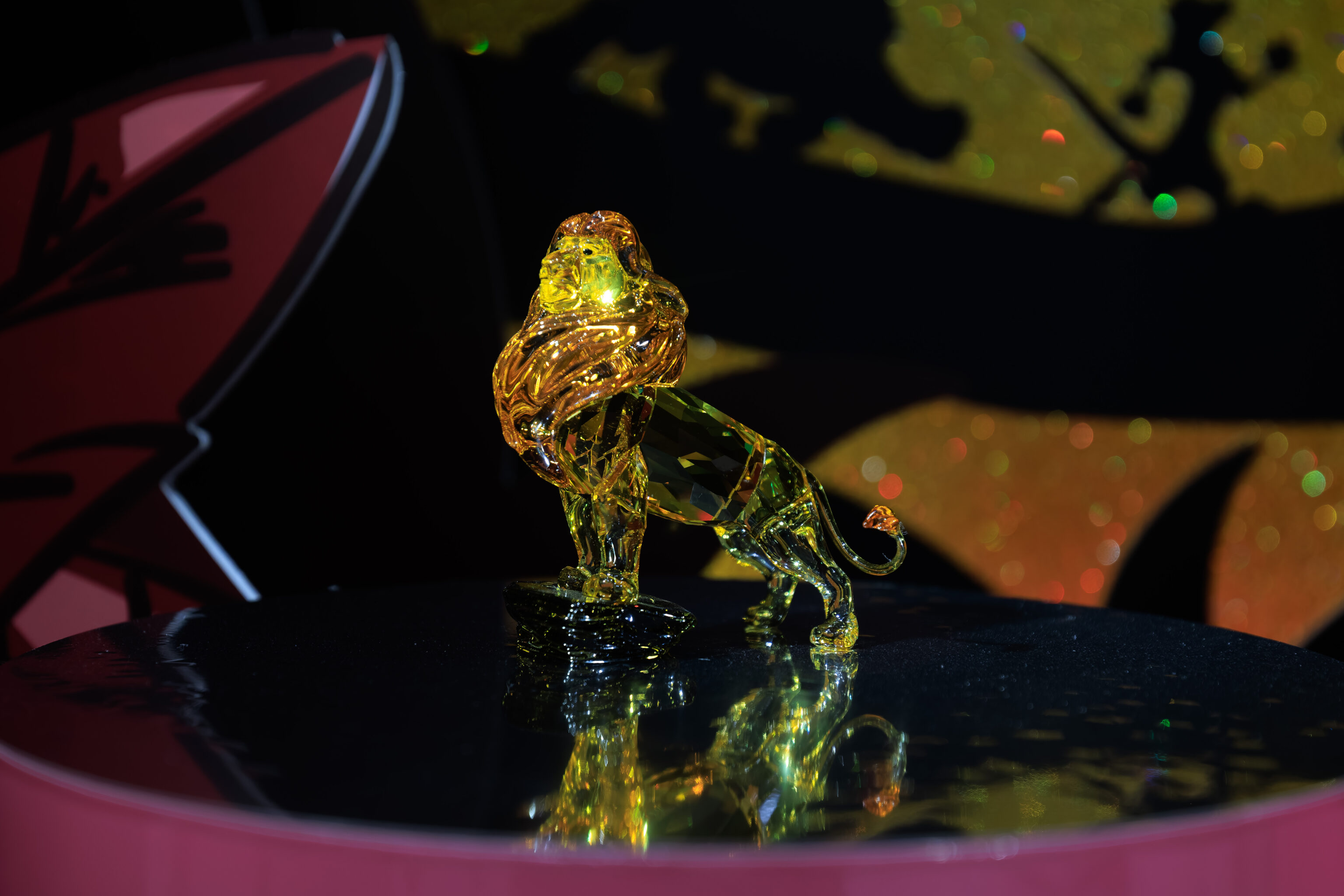

There were also Lion King crystal items on display and of course for sale.

It wasn’t all Disney though, obviously! We also spotted some leopards!

And, some very realistic and colorful finches!

This was just one of many nice displays showing Swarovski products.
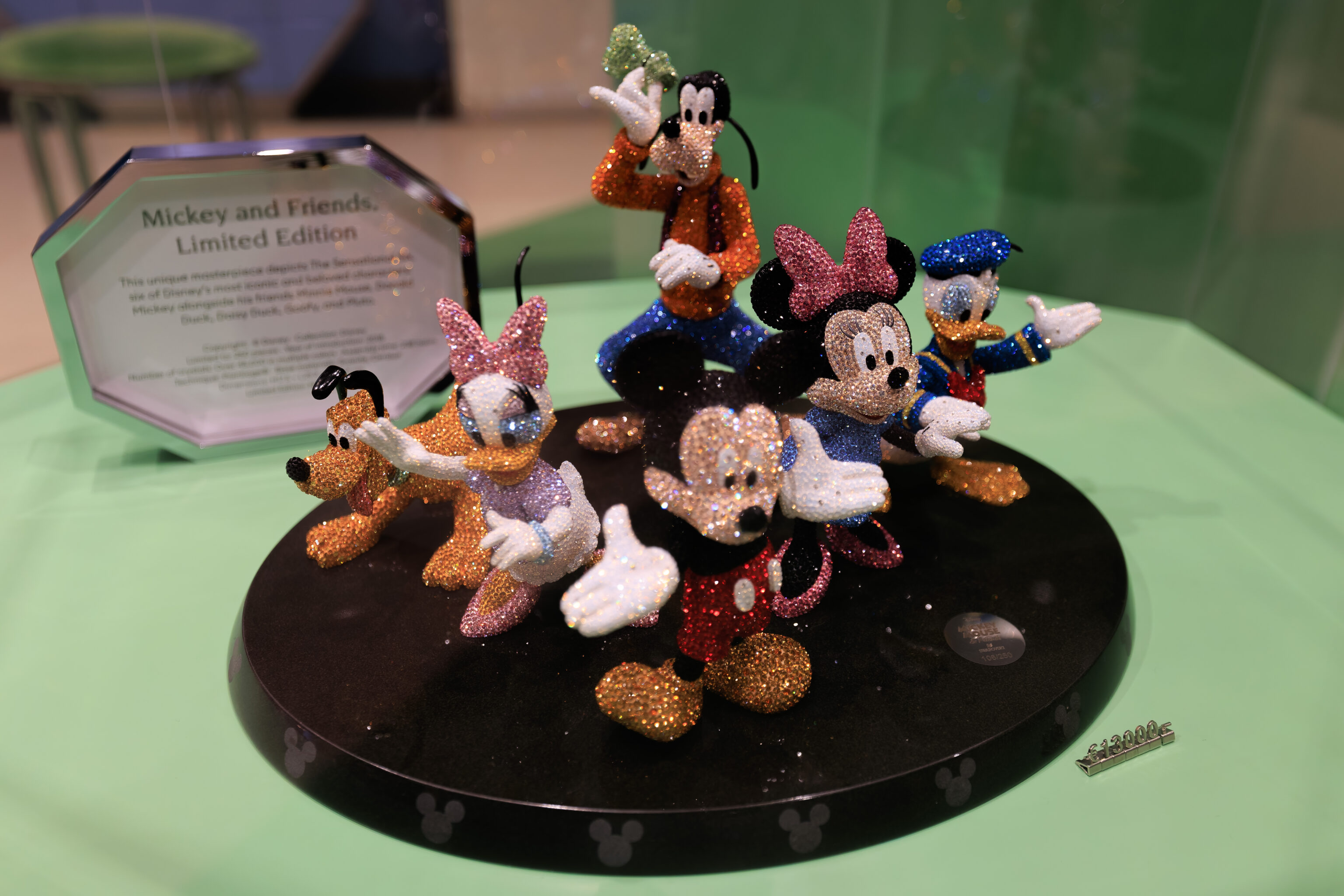
Some more Disney! This time, showing Micky Mouse and his friends.
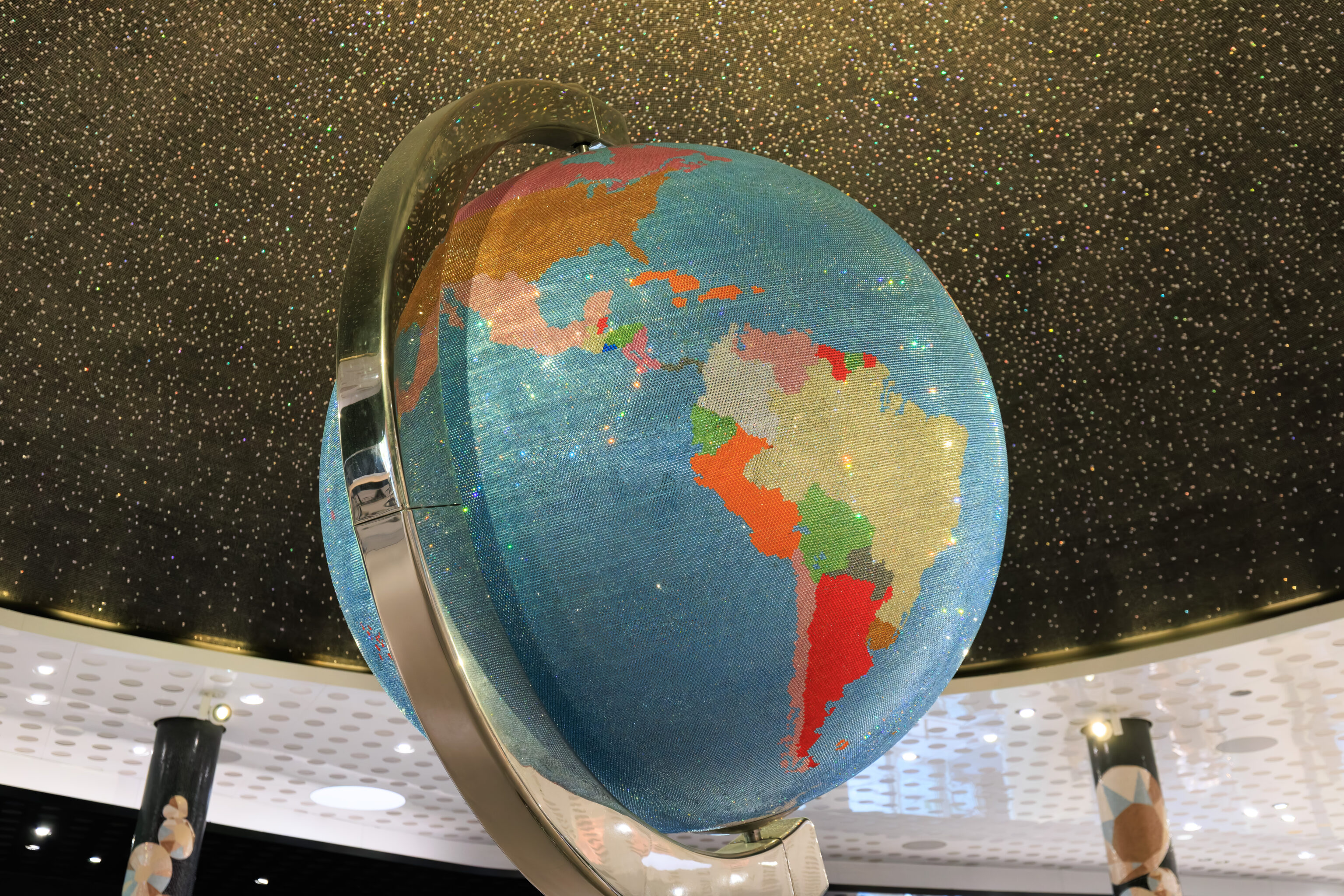
There was a huge slowly rotating globe near the check out area. Swarovski describes this globe as weighing 1,000 kilograms and containing half a million crystals!
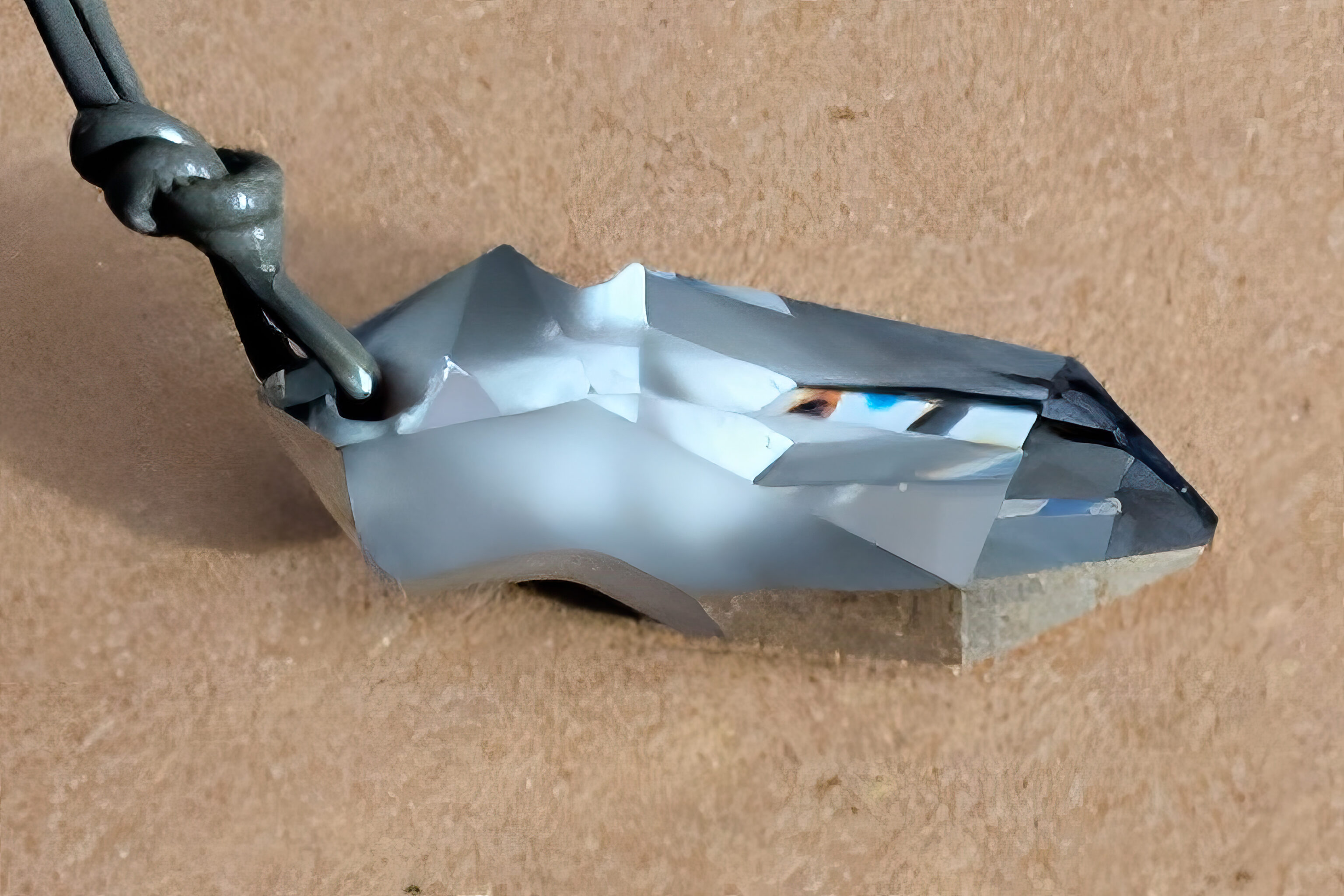

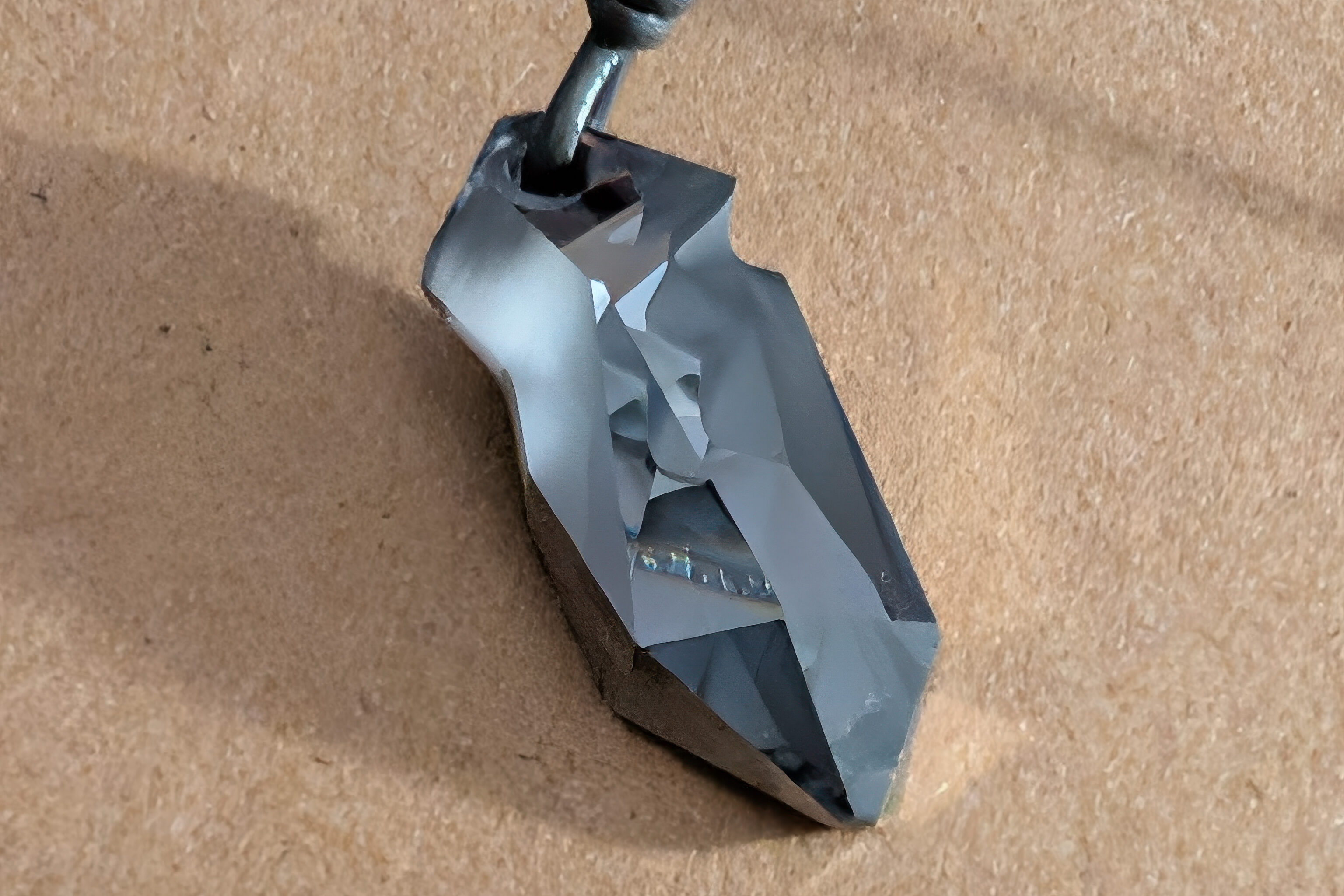
We did end up buying something from the store. It wasn’t this though.
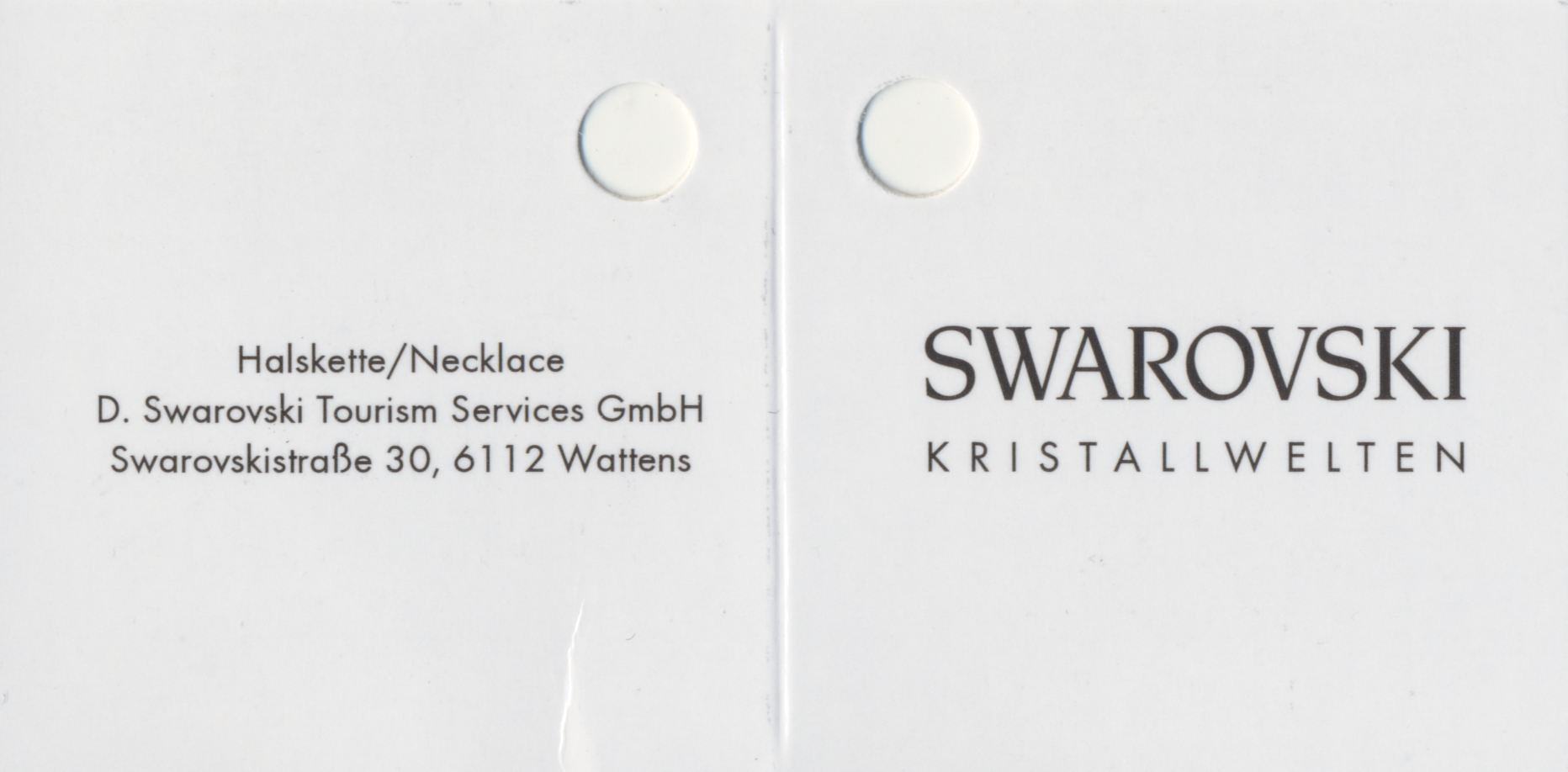
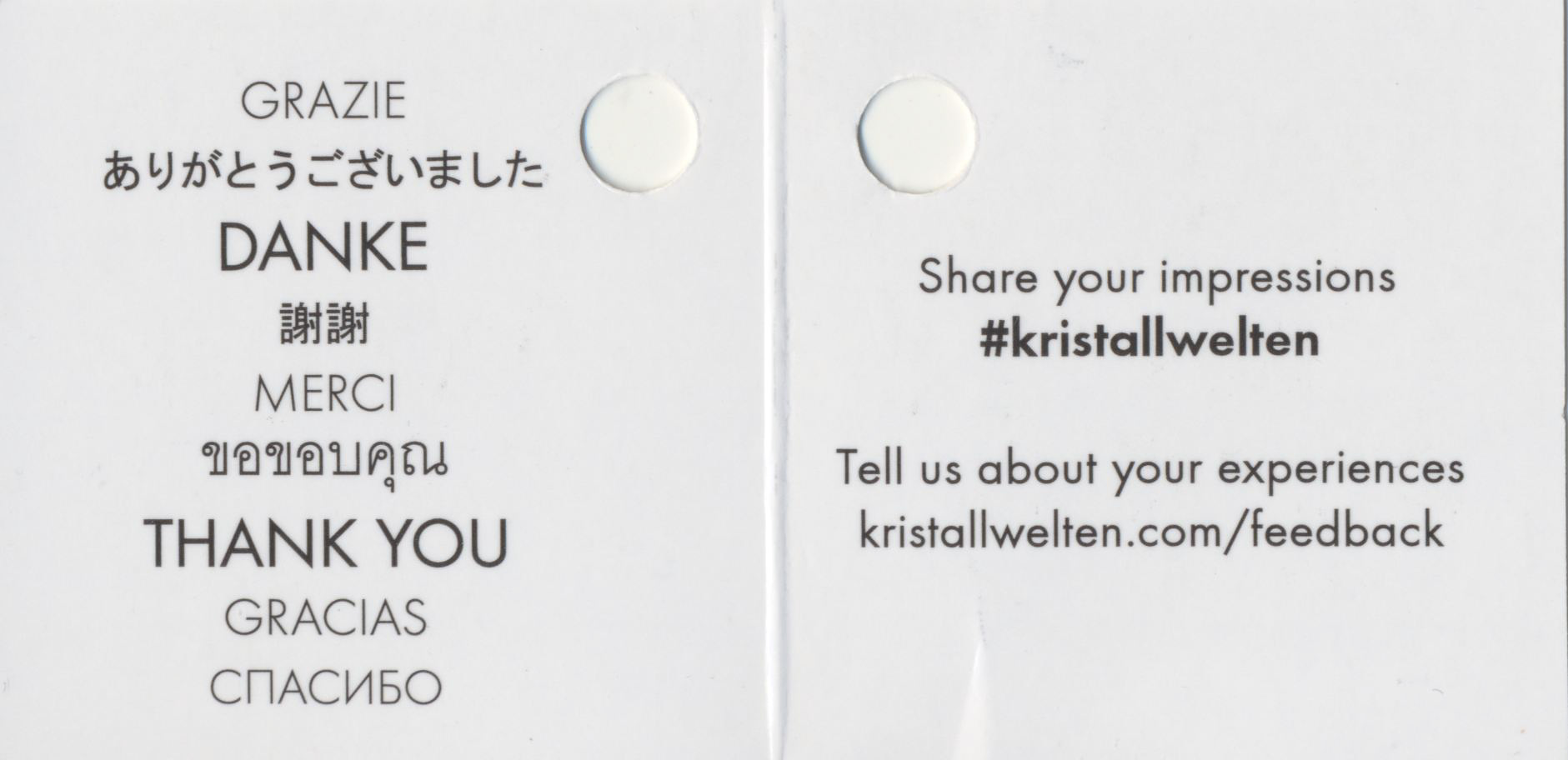
It was a little thank you gift. It seems like it is a plastic crystal.
We realized that after having walked through the entire museum, we hadn’t encountered the Circus of Asia exhibition. We ended up looking for information online. We realized that it wasn’t an exhibition but a literal circus! And that it was outside.

The website had a PDF which listed some events that take place throughout the day. So, instead of heading back to Innsbruck, we went to find the Circus of Asia.
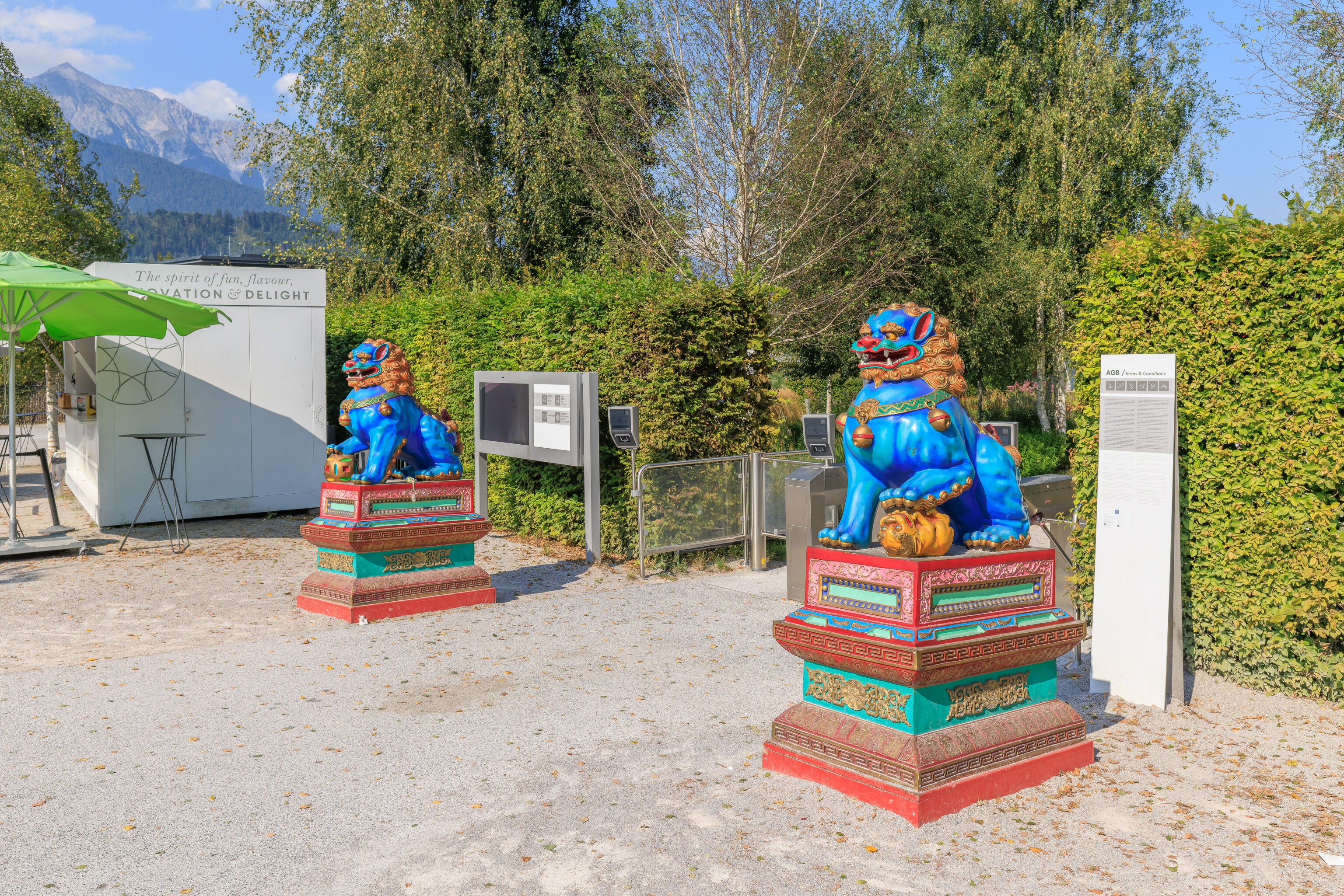
Well. It seems like this is the place!

Yes, this is it!
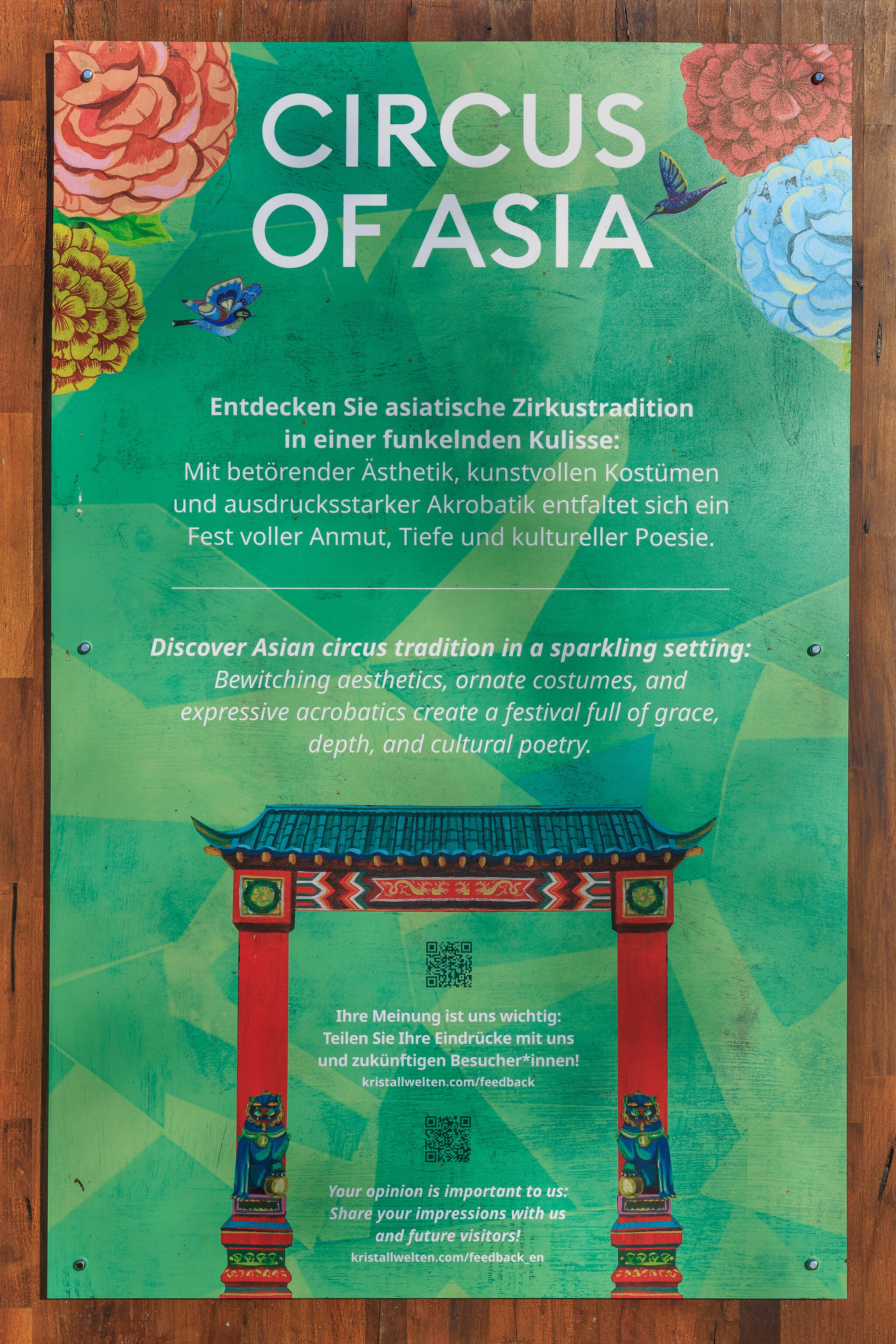
We also found a sign.
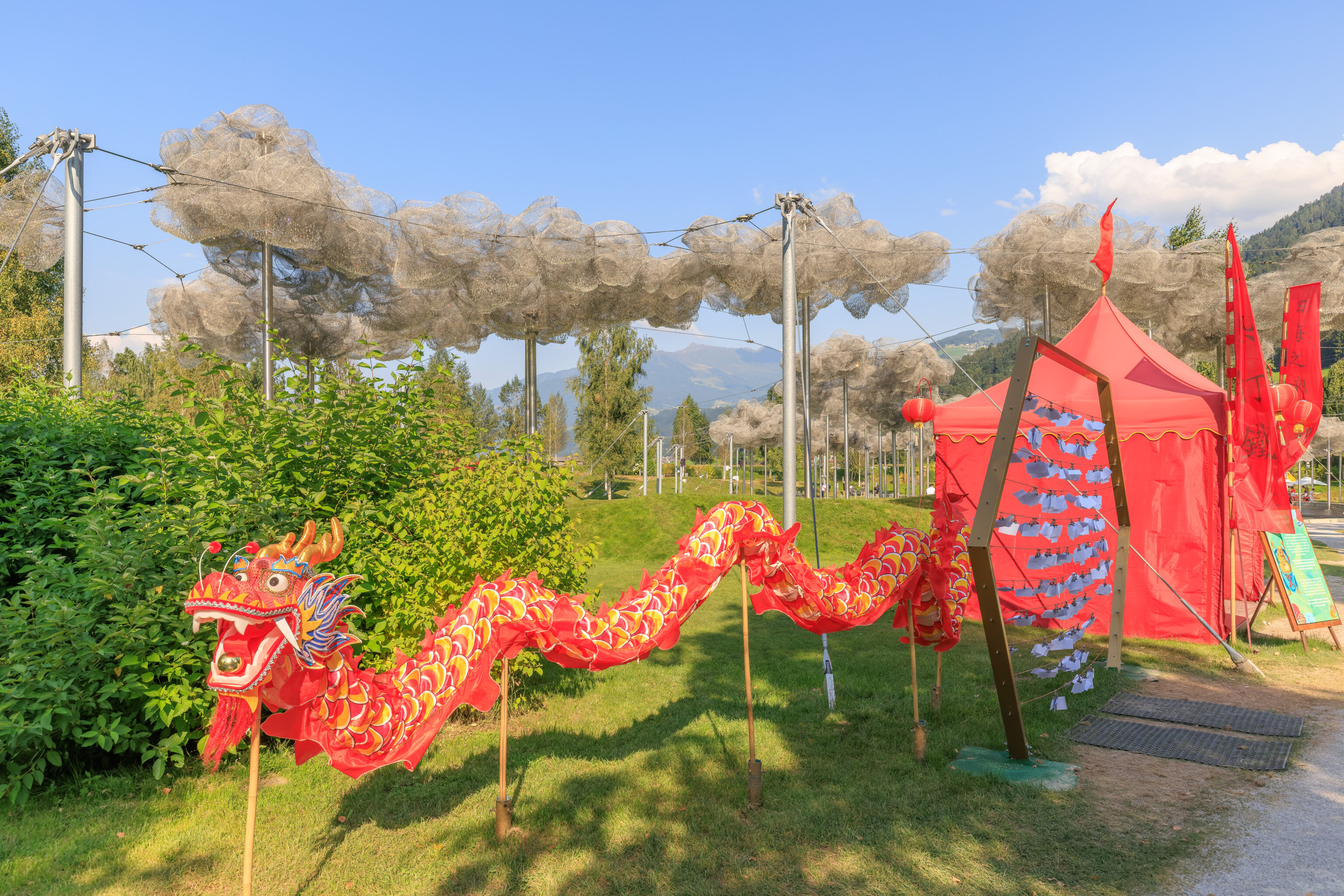

There was a dragon along with basically paper 絵馬 ema. While the event is described as Circus of Asia, it seems more Chinese than anything. Other than this part which is Japanese.


These large crystal clouds above are part of the Crystal Cloud & Mirror Pool.
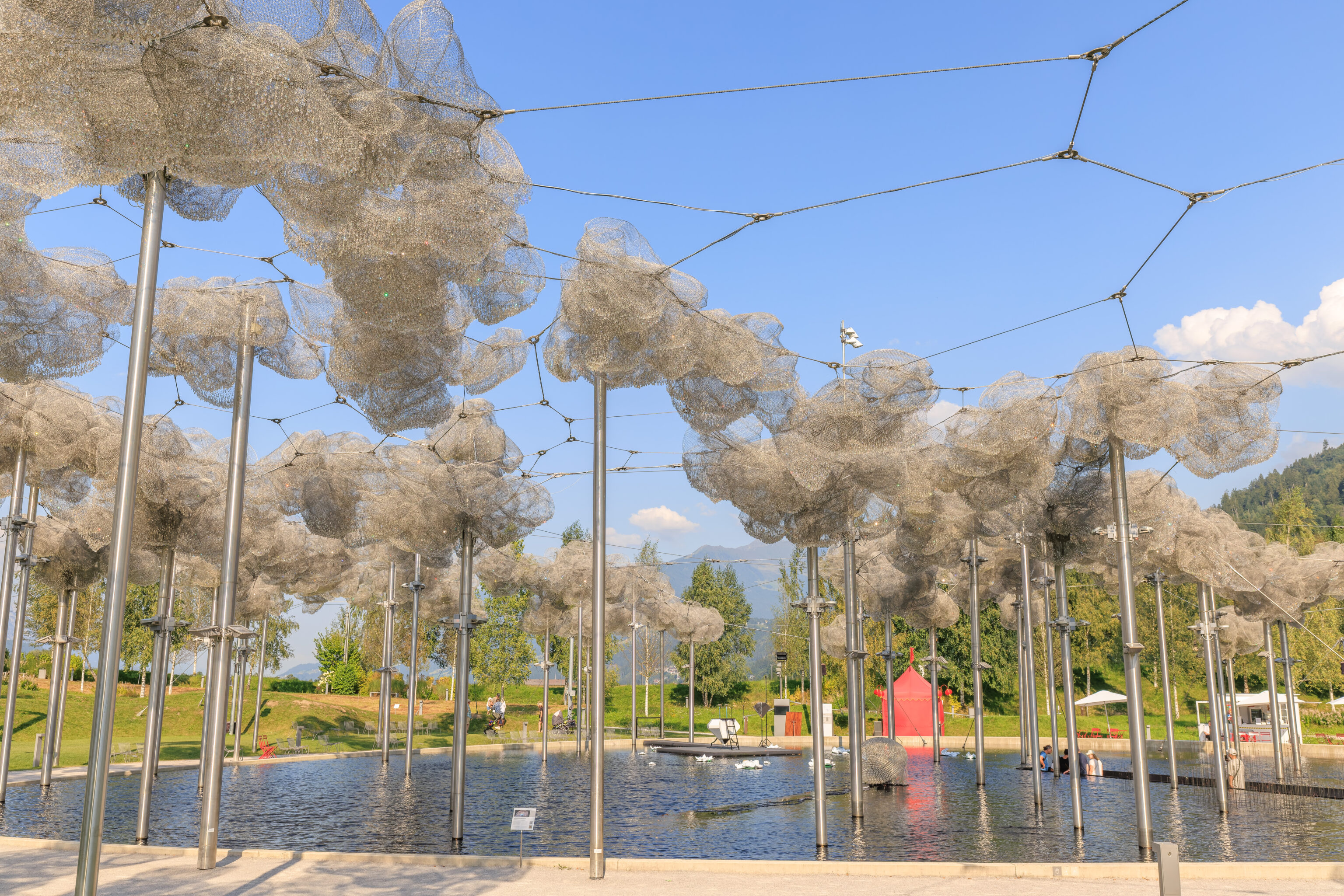
The clouds surround a pool of water.
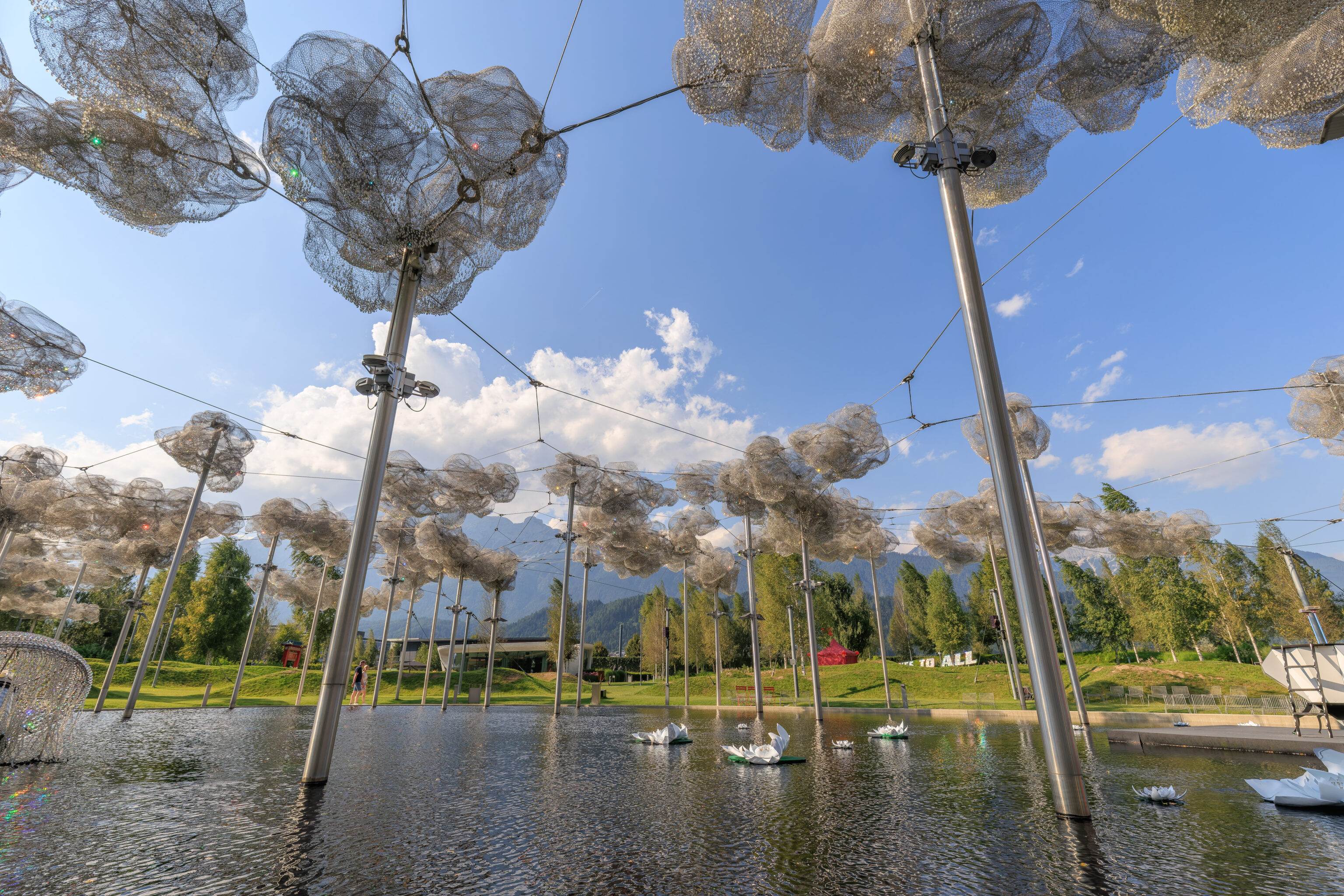
There is a dry path that descends down into the water so that you can see the water at eye level.
We recorded a short video showing the movement of the water’s surface as well as the music that was playing.
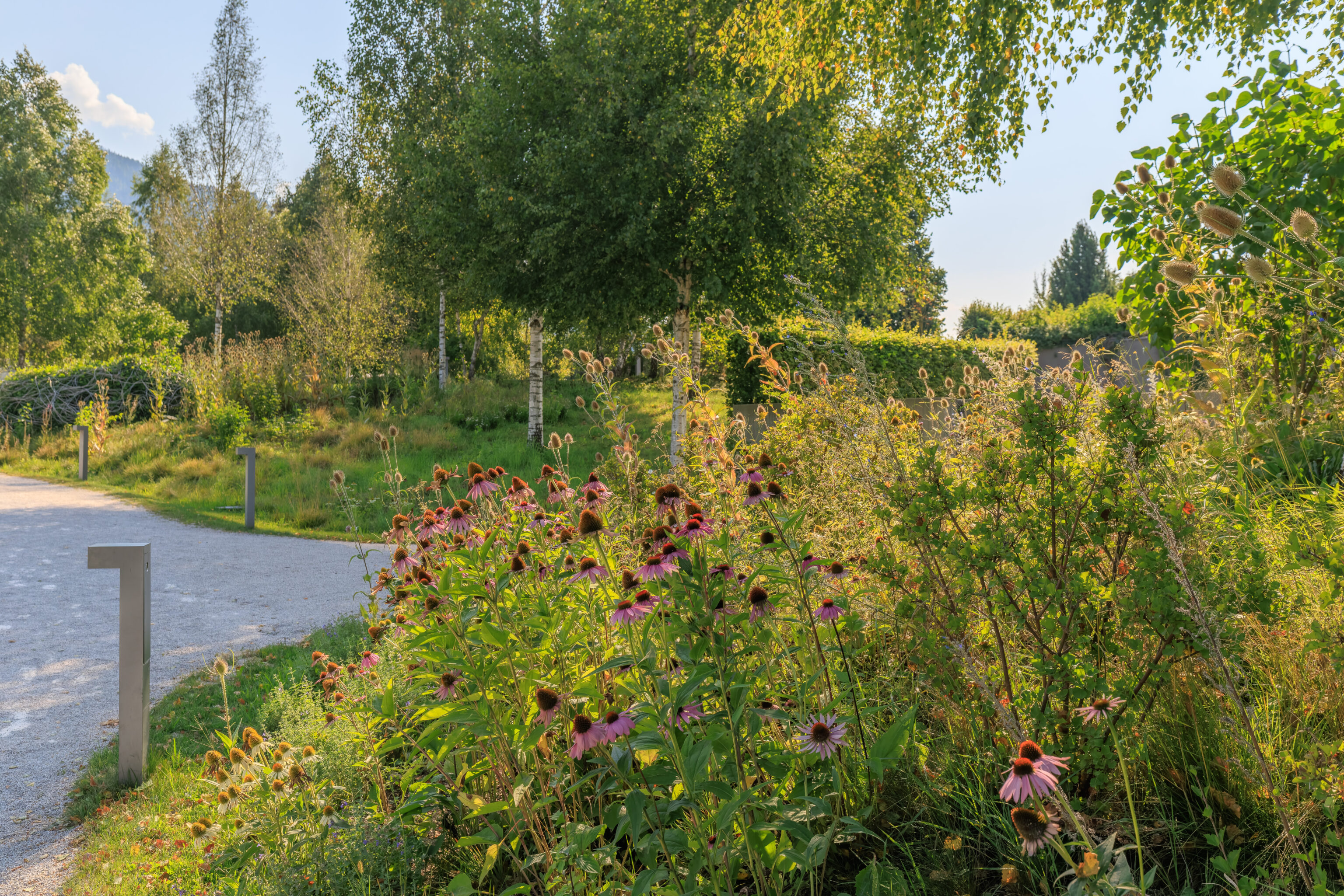
None of the activities seemed to be near this area though. There seemed to be some activity to the southwest. So, we started to walk in that direction. We passed by what seemed like coneflowers, a group of aster species native North America. It almost felt like we were walking through a local garden!
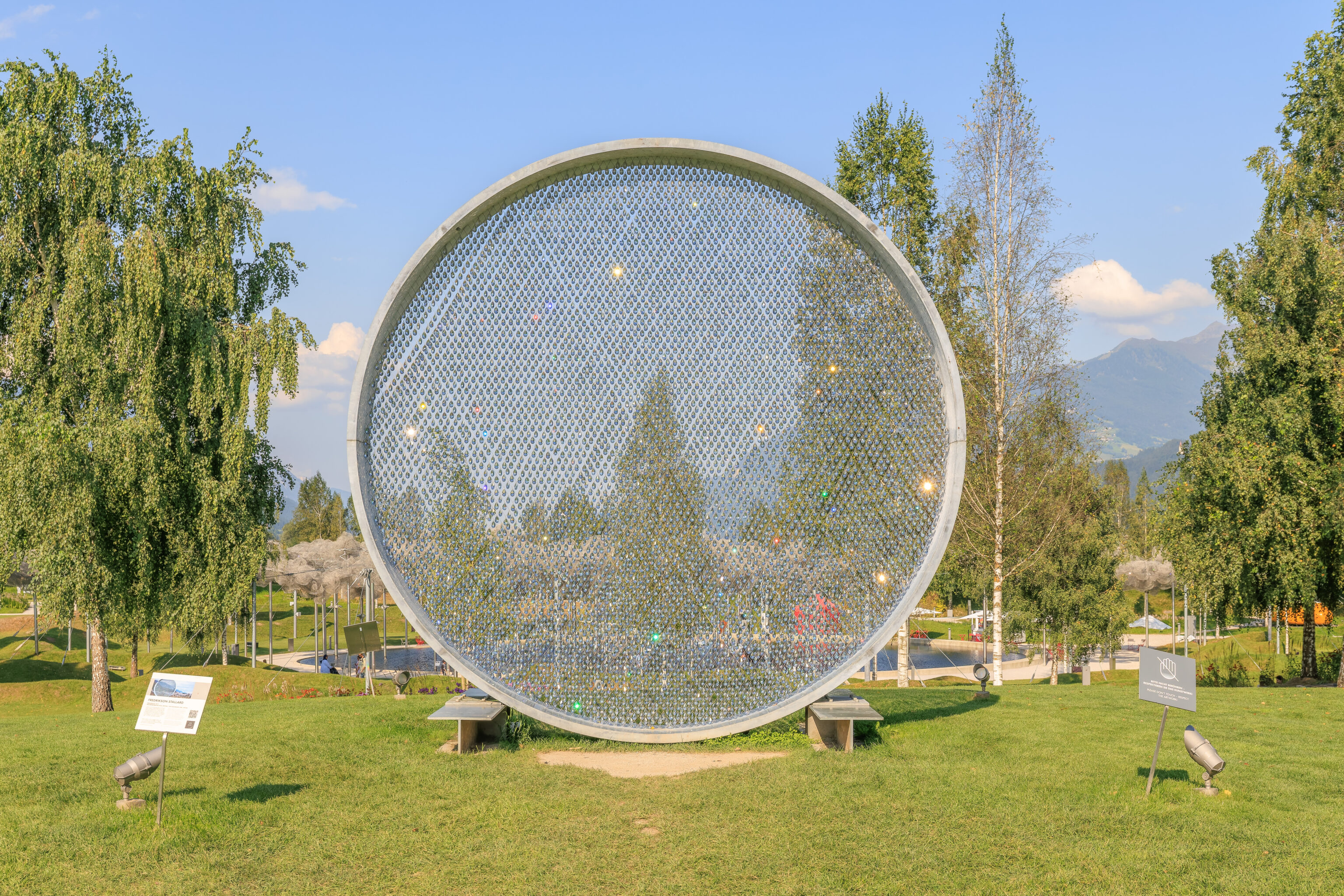
We found a tent along with this crystal display behind it. This is Prologue III by Fredrikson Stallard, the same duo behind the Eden exhibit that we saw within the museum.
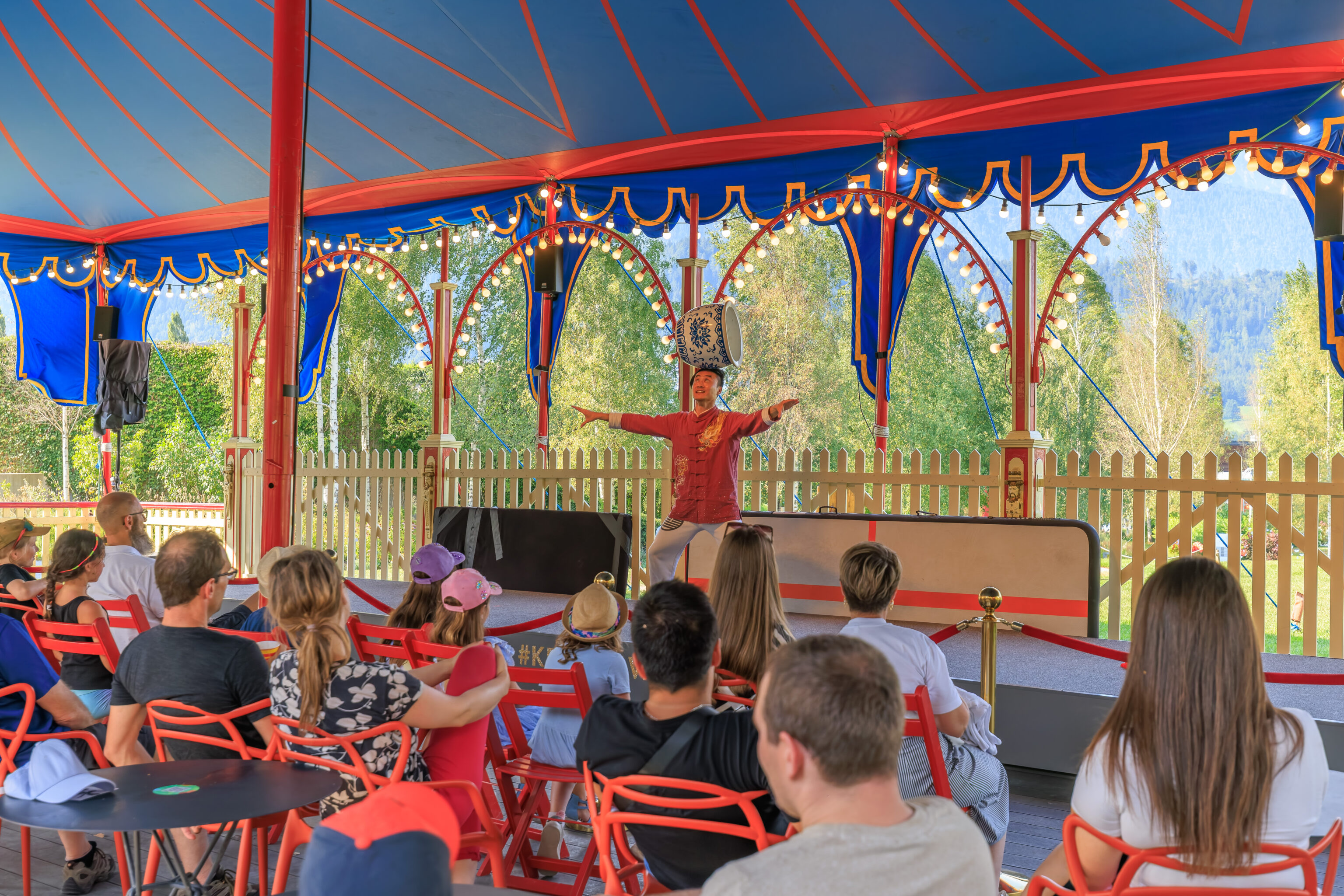
We heard that something was about to begin so we went to the opposite side of the tent to take a look. We saw a circus performer put on a very brief show. He was pretty good. The circus part of this event is by Circus Roncalli, which is from Germany.
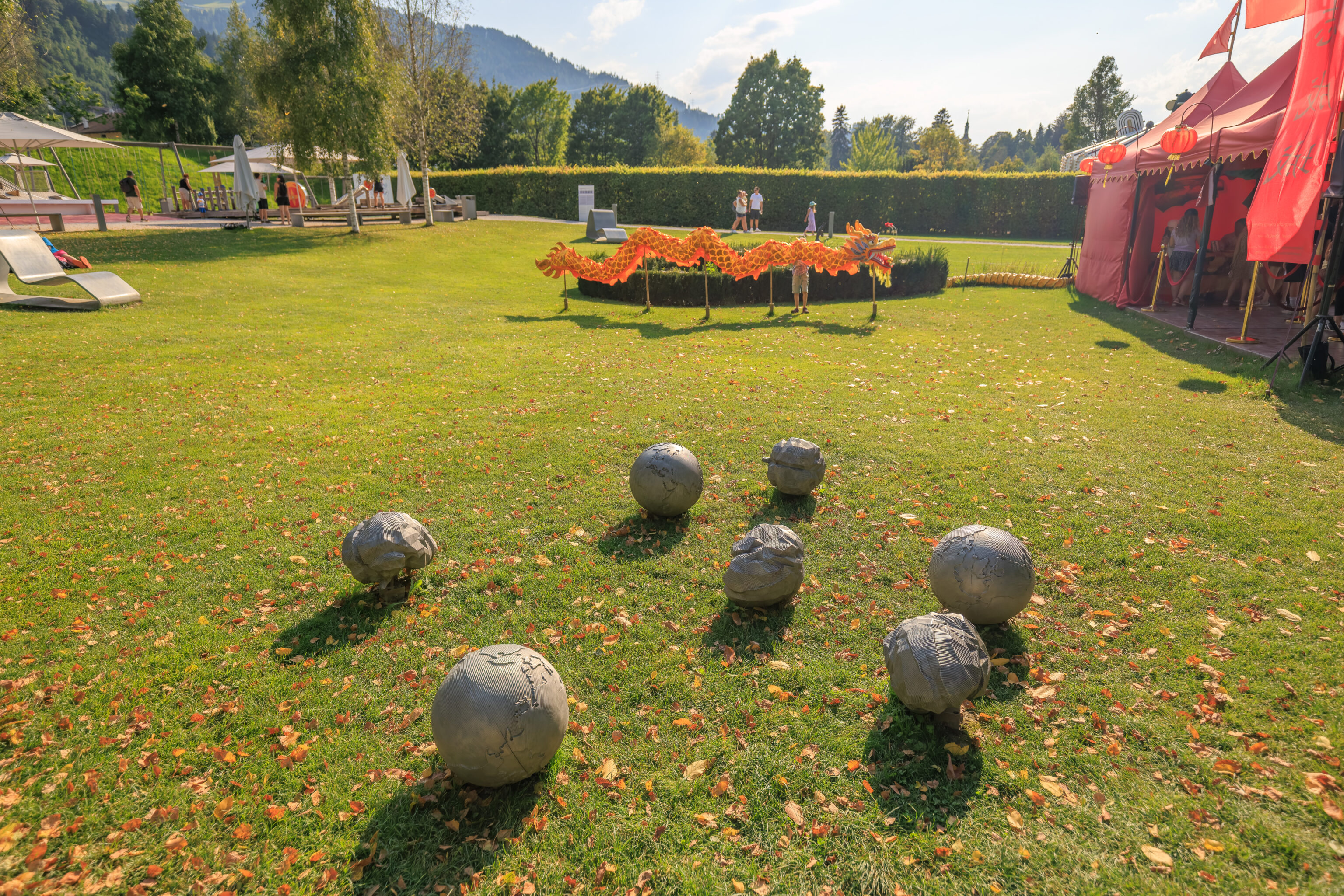
Outside, we spotted some spheres on the ground. They looked like globes, bells, and brains. A sign provides a better description:
PETER KOGLER
OHNE TITEL / UNTITLED, 2009
ALUMINIUMGUSS / ALUMINIUM CASTING
Peter Kogler makes our world, which is increasingly dominated by data, streams and electronic communication, his subject, along with two basic elements that distinguish it - the brain and the globe. The globe reflects the physical reality, the brain the unfathomable structures of the thought process.
Kogler studied at the School of Arts and Crafts in Innsbruck and at the Academy of Fine Arts in Vienna. After teaching engagements at the Städel School in Frankfurt und the Academy of Fine Arts in Le Mans, France, he is currently teaching at the Academy of Fine Arts in Munich.
Please do not climb on the artwork.
So, some of the spheres really are brains! There are no bells though.

We found a path that led up a hill.
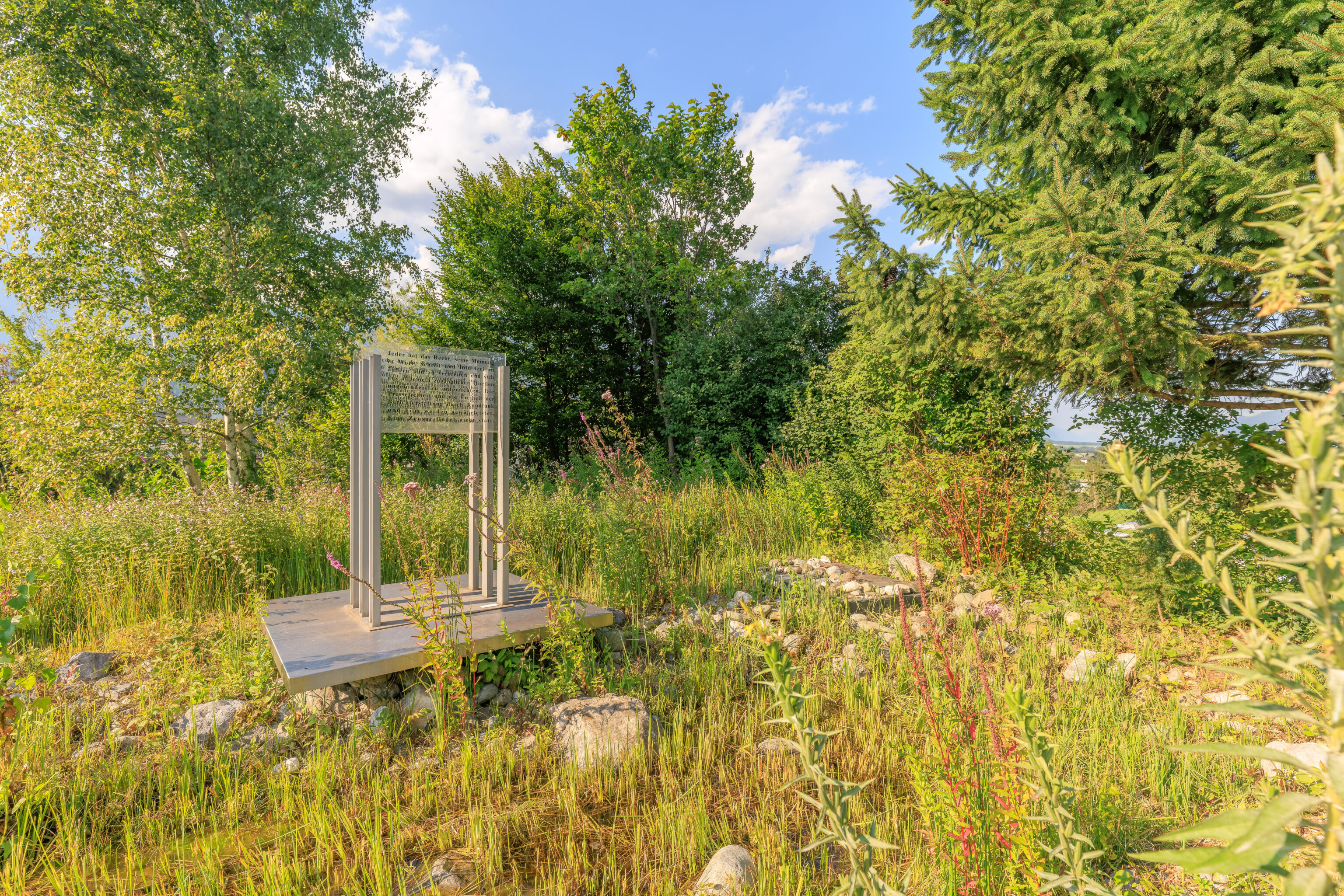
We saw an installation, Eyebright by Hans Magnus Enzensberger. A sign explains:
HANS MAGNUS ENZENSBERGER
AUGENTROST / EYEBRIGHT, 2008
GLAS UND STAHL / GLASS AND STEEL
The installation "Eyebright," consisting of a series of glass panels arranged in consecutive rows, contains a passage from Germany's "Basic Law" on the fundamtenal rights for all citizens. However, the text is only legible if you are looking at the panels from just the right perspective.
This homage to law and justice was created by Hans Magnus Enzensberger, born in 1929 in the Allgäu region. He was a distinguished writer, essayist, author of radio plays, publisher, translator, and editor - and also one of the most important German poets after 1945.
Please do not climb on the artwork.
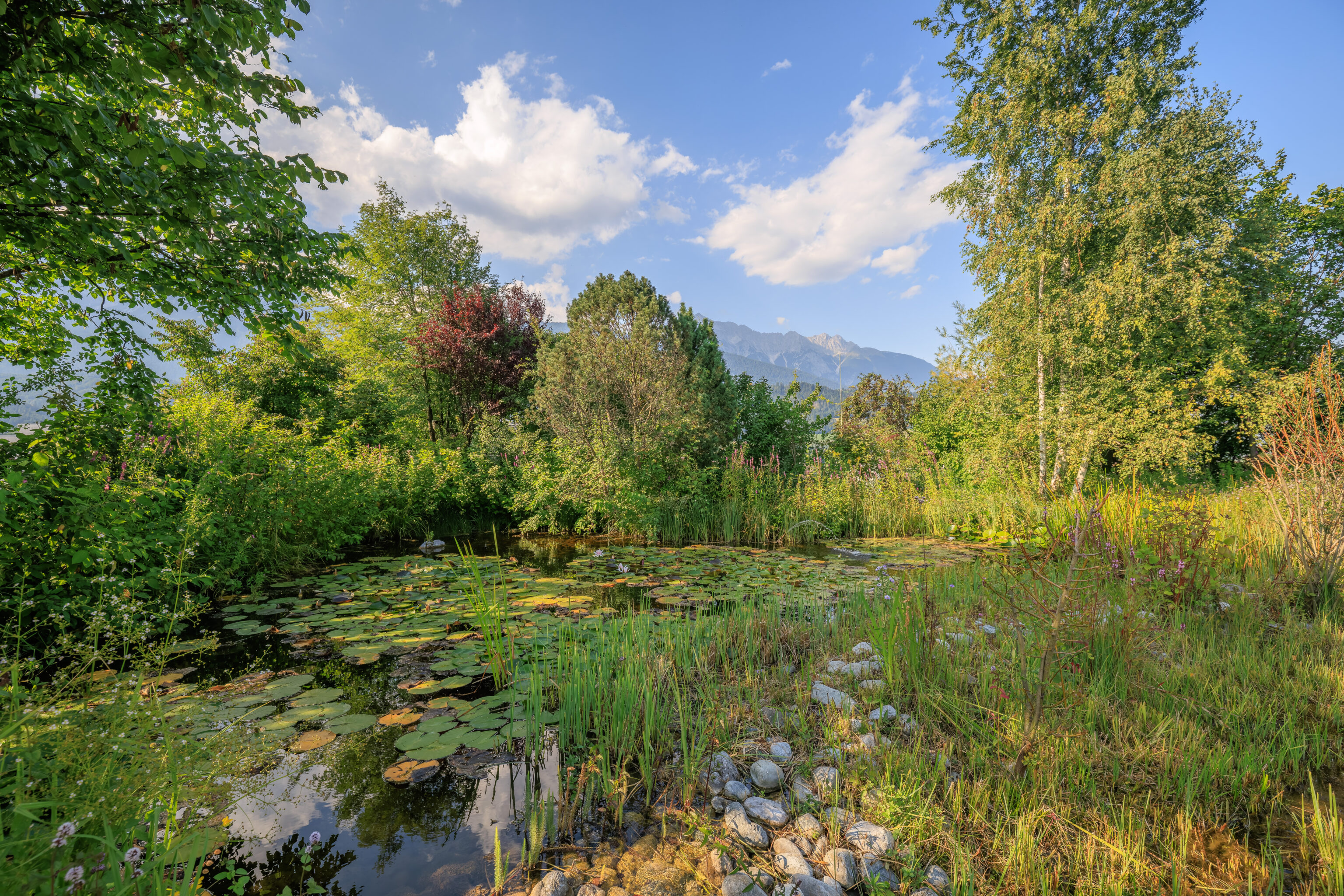
This hill, complete with pond, was actually the roof of part of the museum building.

We found another way down from the hill.
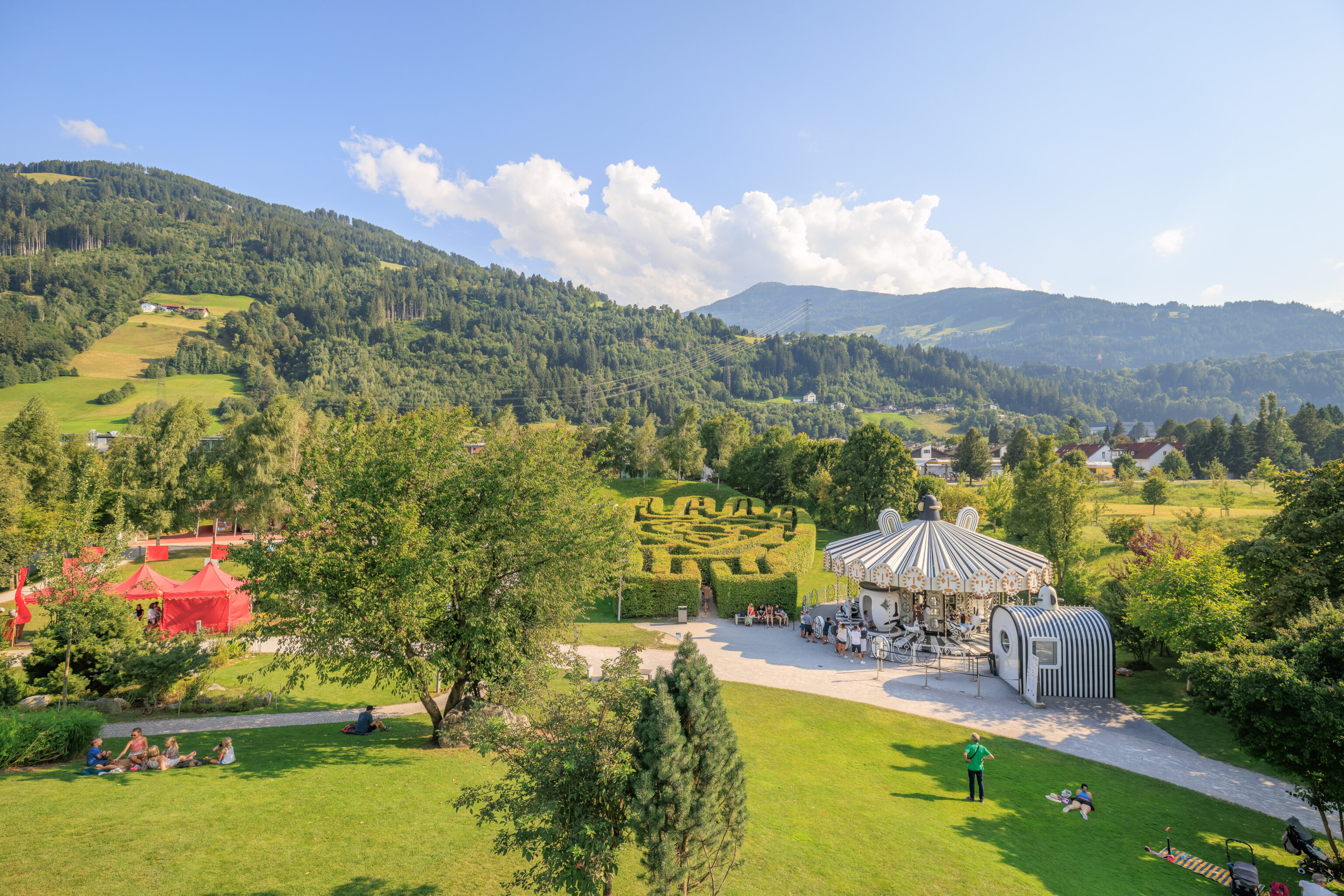
There was also a metal observation platform. We walked up to take a look. This was the view to the south.
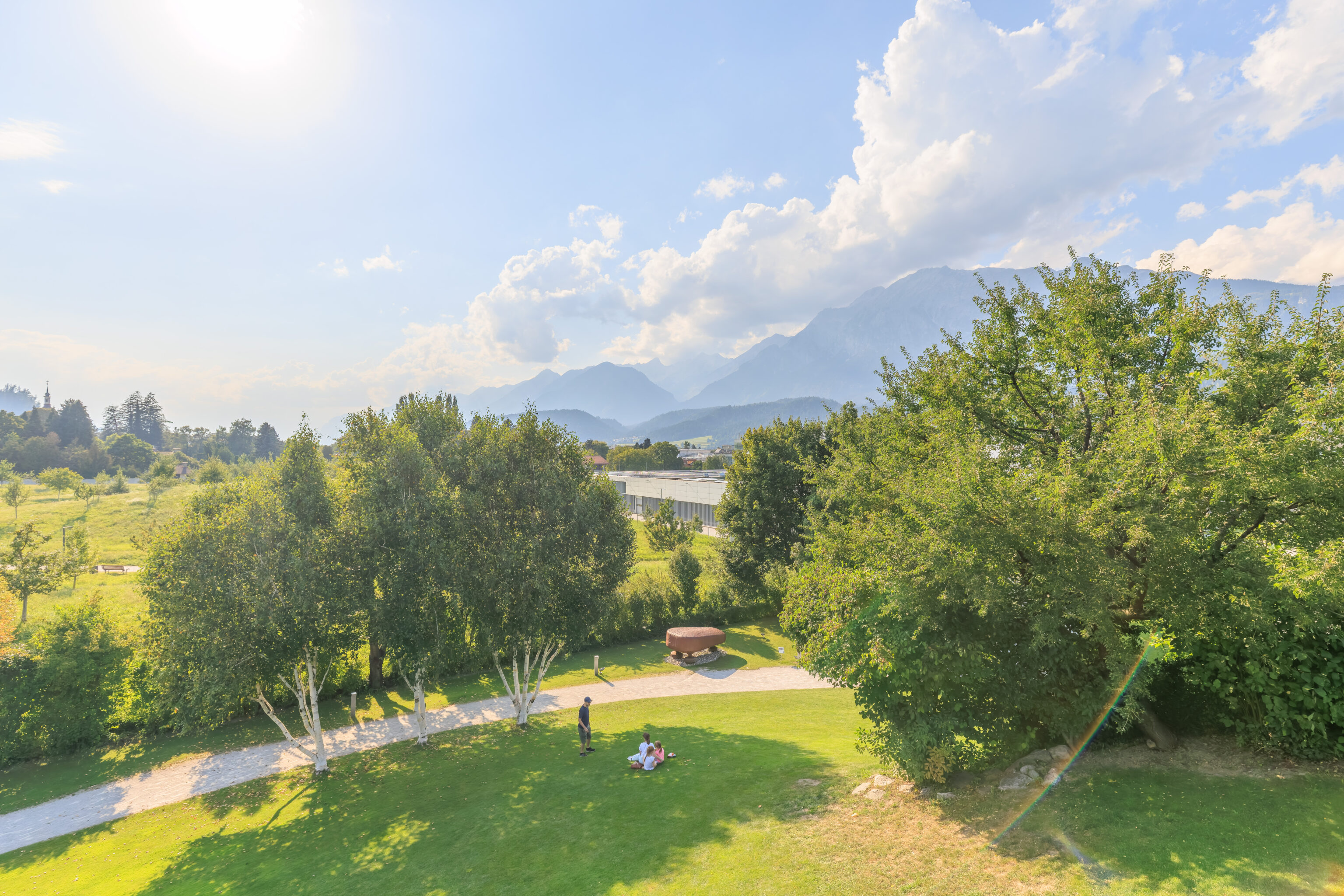
And to the west, into the sun.
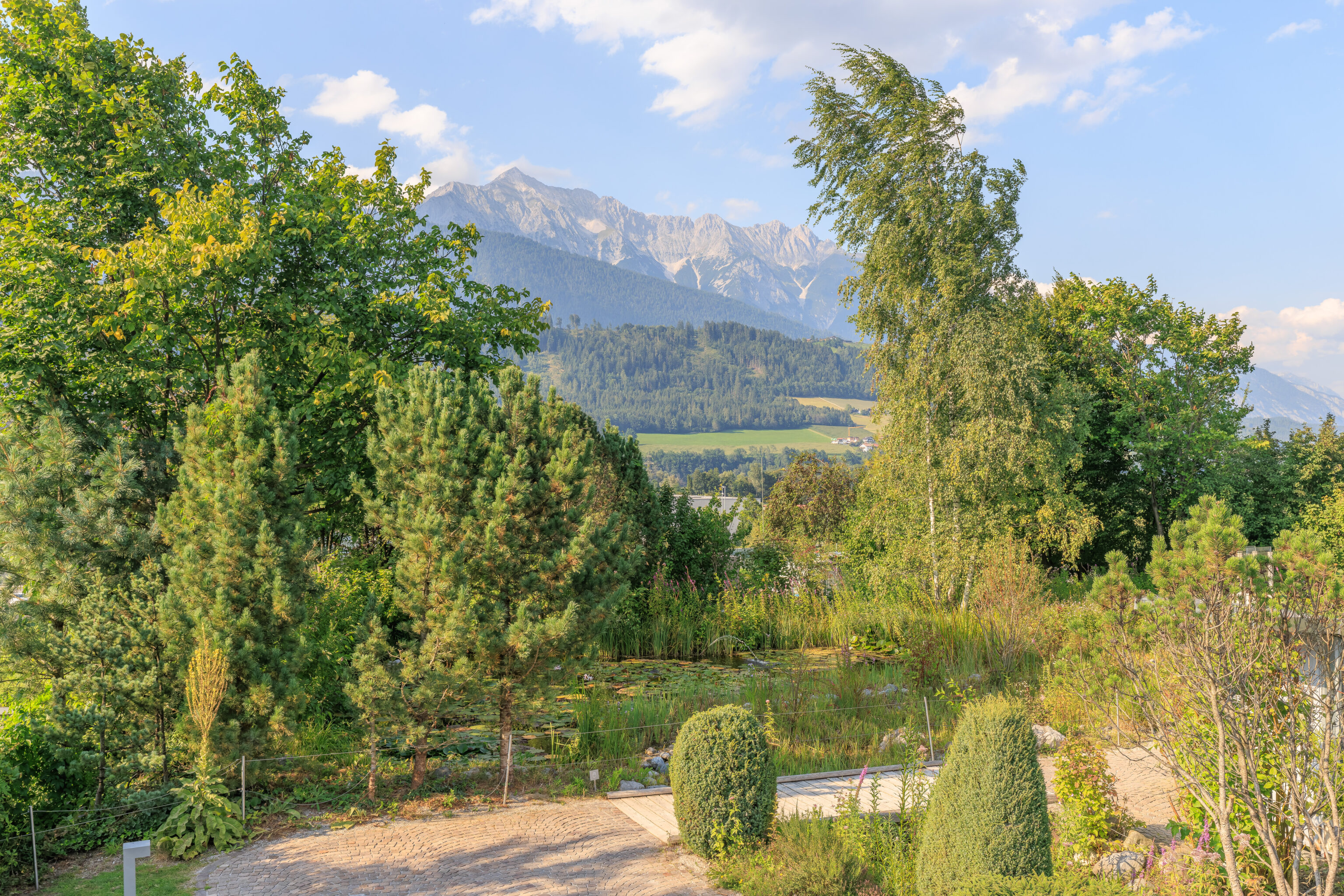
The view to the north was mostly obscured by trees.
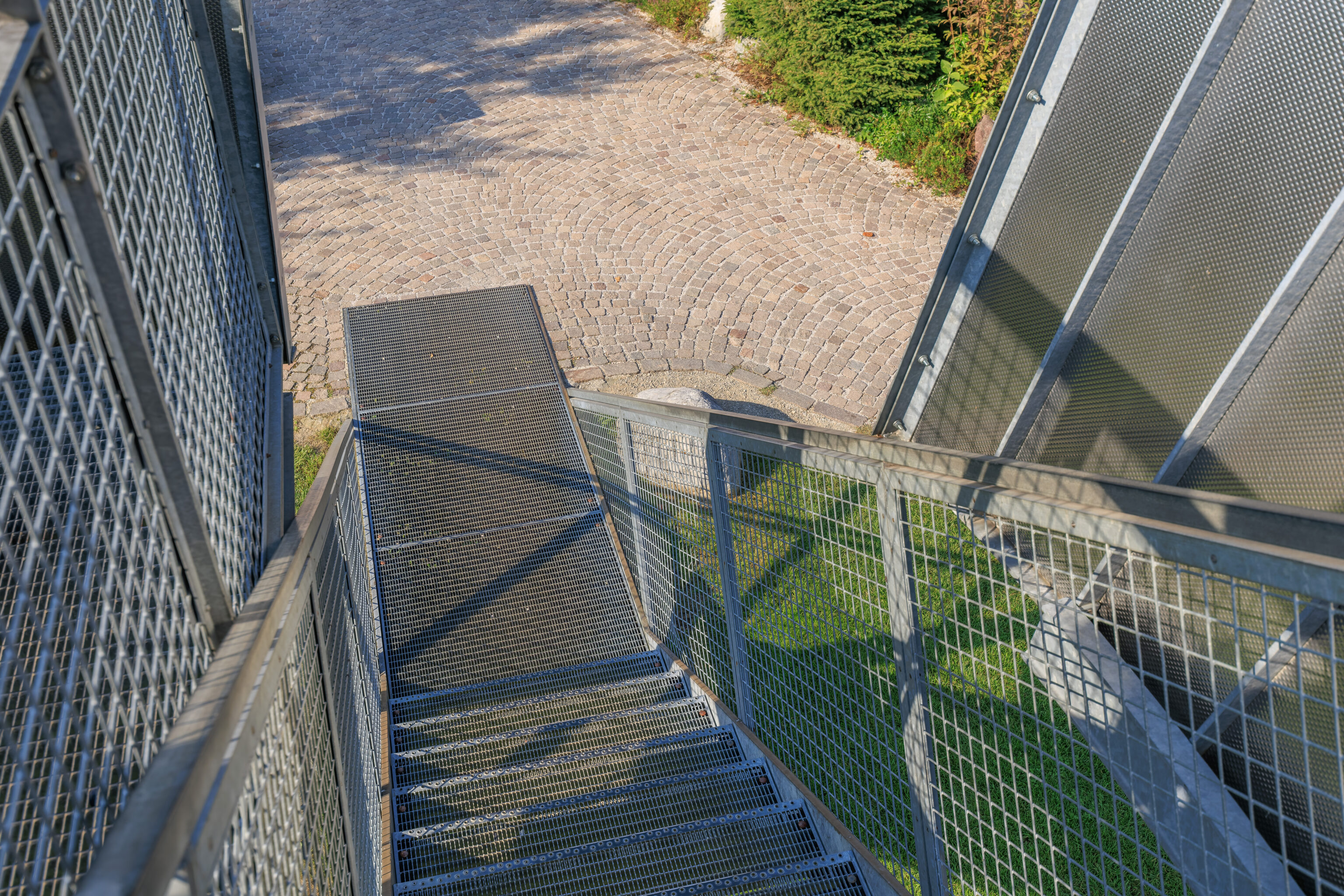
We headed back down the stairs.
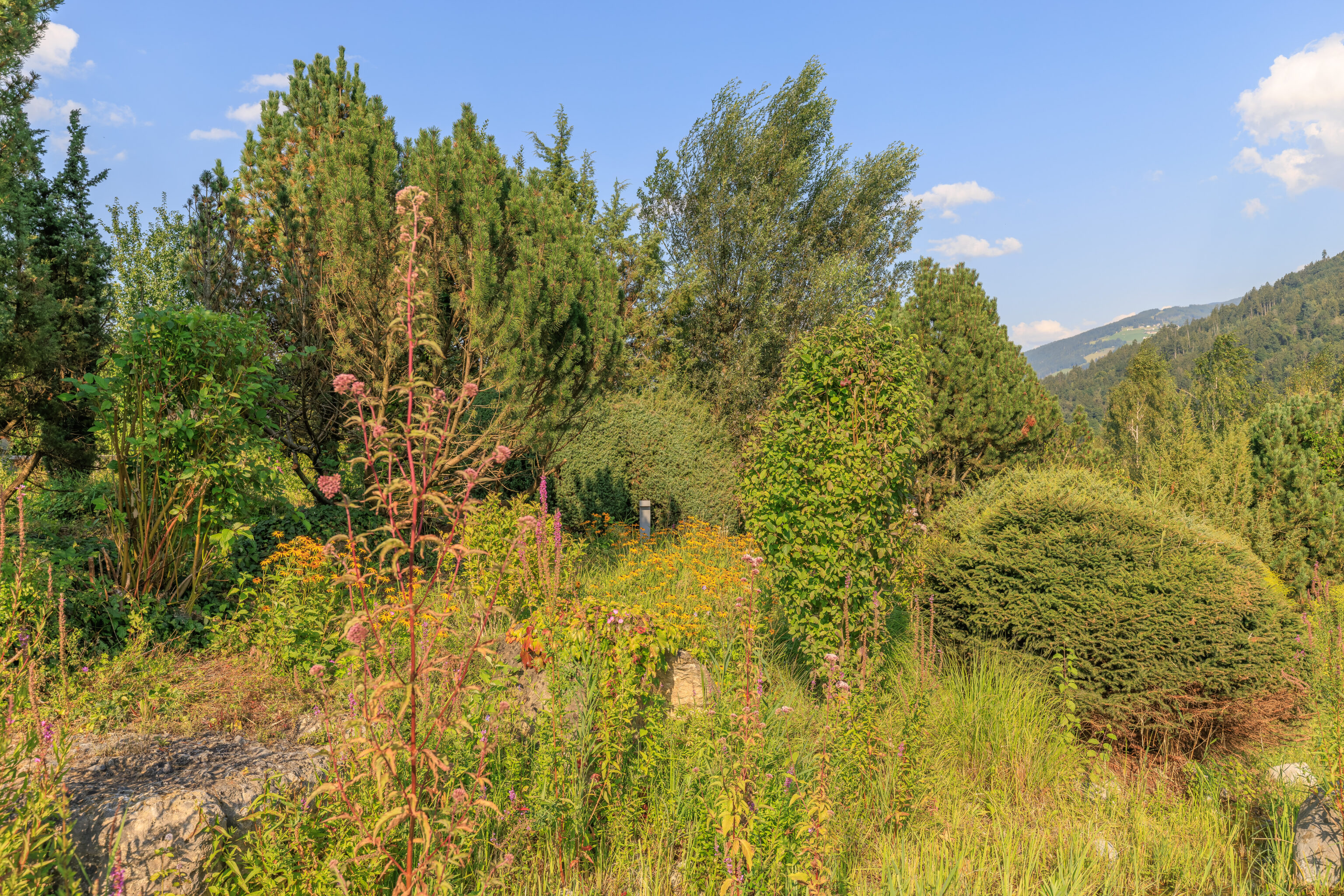
Some of the plants and flowers here on this rooftop hill.

We then headed clockwise around the hill, hoping that we would be able to exit from this direction as we had entered from the other side. We were able to get a good view of the observation platform from the west as we were walking by.


We found some more art on the left side of the path. This seemed a bit like some sort of spaceship. A sign revealed that it was not:
ALOIS SCHILD
KLAVIER DER NATUR / PIANO OF NATURE, 1998
STAHLSKULPTUR / STEEL SCULPTURE
"Nature's Piano" is a large sounding body made of steel that recalls the musicality of nature. Visitors can interact with this work of art themselves by creating sounds on it.
Alois Schild's works are often inspired by the scenic features of Tyrol, his home region. Because Alois Schild was fascinated by metal as a creative material, he studied at the Academy of Fine Arts in Vienna under the guidance of Bruno Gironcoli. Both his smaller sculptures and his large-scale ones are displayed in prominent places wordwide.
Please do not climb the artwork.

These also seemed a bit alien. Again, a sign provided an actual description:
GEORG HEROLD
AIRS AND GRACES, 2012
BRONZE UND SWAROVSKI KRISTALL / BRONZE AND SWAROVSKI CRYSTAL
The works of Georg Herold, for which he uses materials like roof timbers, caviar, bricks, and buttons, combine anti-aesthetics with the provocative use of luxury goods. In his sketch-like human figures, he shows how civilization has influenced humans.
Georg Herold was born 1947 in Jena. He has been a professor at the Art Academy in Düsseldorf since 1999. Herold lives and works in Cologne, and his art was recently displayed in individual exhibitions in Los Angeles, Dallas, and Oslo.
Please do not climb the artwork.

We headed out this way.
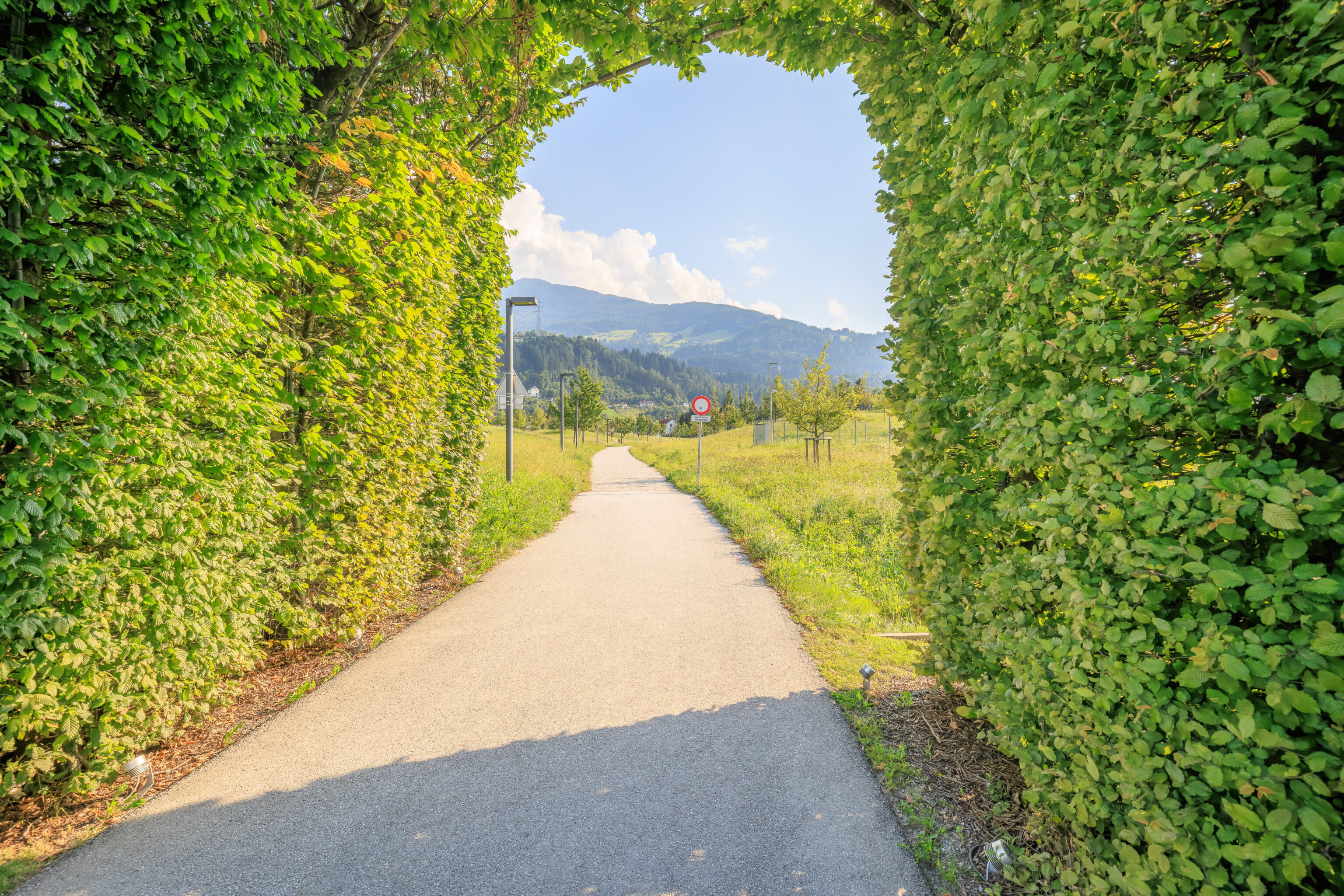
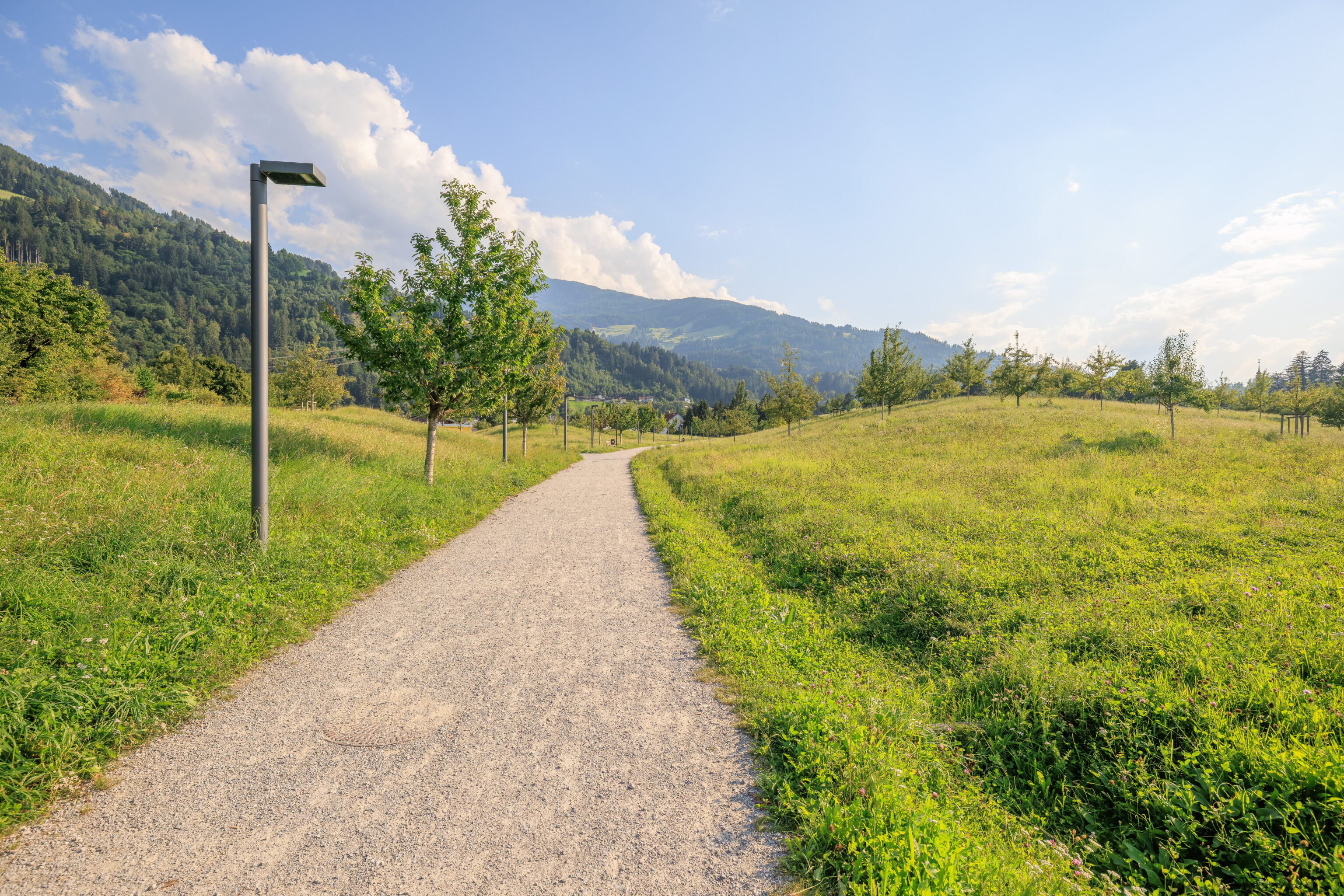
And walked back to the bus stop to take a bus back to Innsbruck. The bus ride was busier as it was around rush hour.
Innsbruck
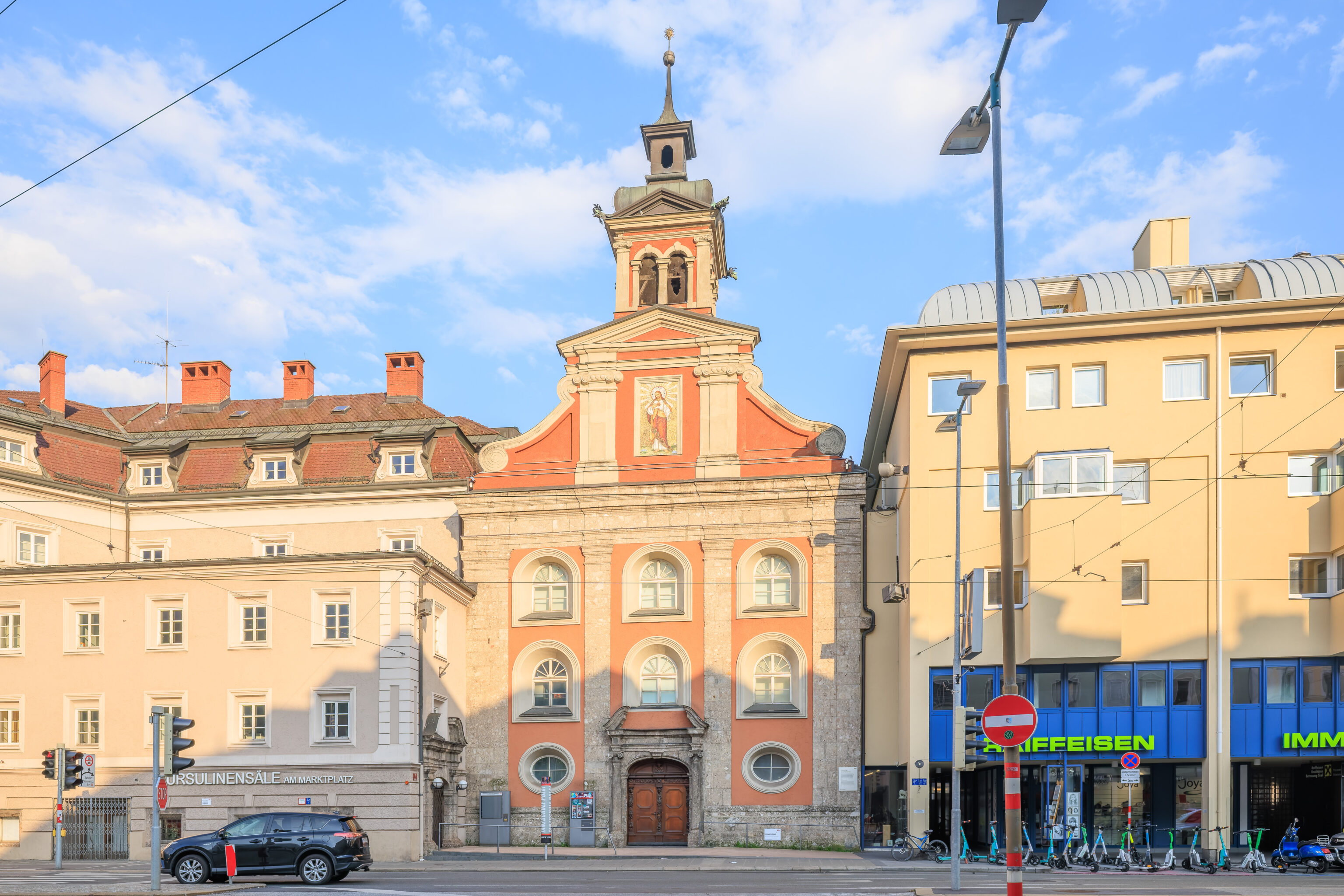
We got off the bus at the Innsbruck Terminal Marktplatz stop. As the name suggests, it is right by the Marktplatz (Market Square) which is in front of the Markthalle (Market Hall). This view was to the southeast from the southern corner of the Marktplatz.
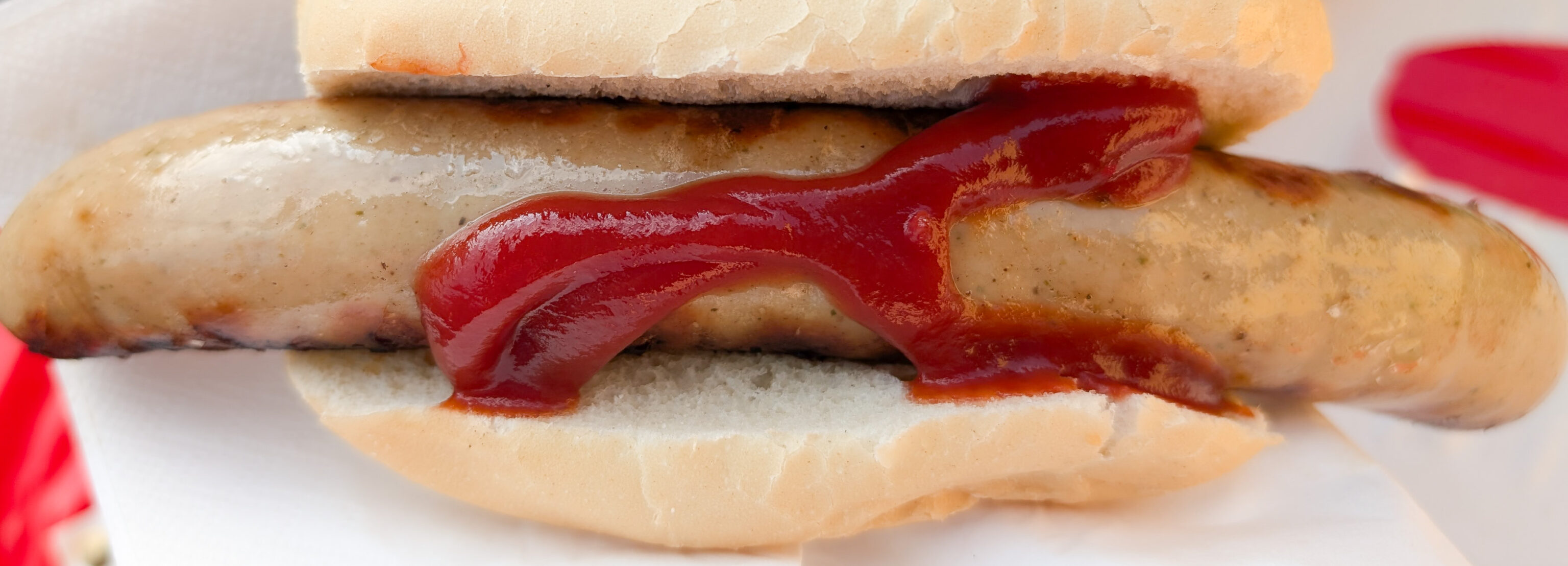
The small Marktplatz was filled with vendors. We ended up getting a bratwurst weiss, basically, a grilled version of the Bavarian weisswurst. We definitely like it better grilled than the traditional simmered or poached or whatever the proper term is.
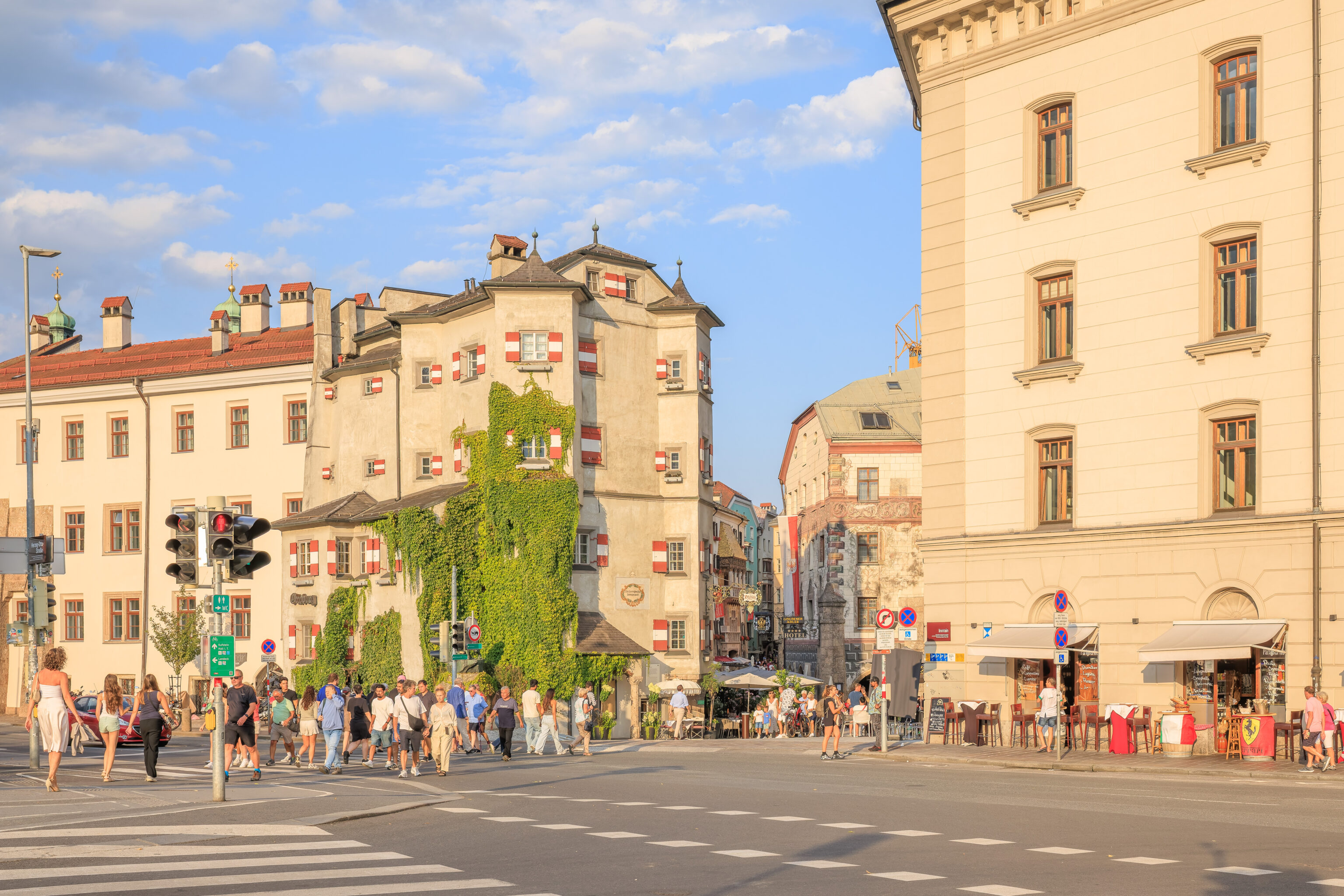
The view looking to the east into the Altstadt (Old Town).

We decided to walk over the river Inn via the modern Innbrücke (Inn Bridge). A much older bridge once stood here which gave Innsbruck its name. The small sign on the right explains:
Inn Bridge
Named after the bridge over the Inn River, first documented in 1180, which also gave the city its name and is featured in the city's coat of arms.

The bridge has a sculpture near the center depicting the crucifixion.

The view to the southwest.
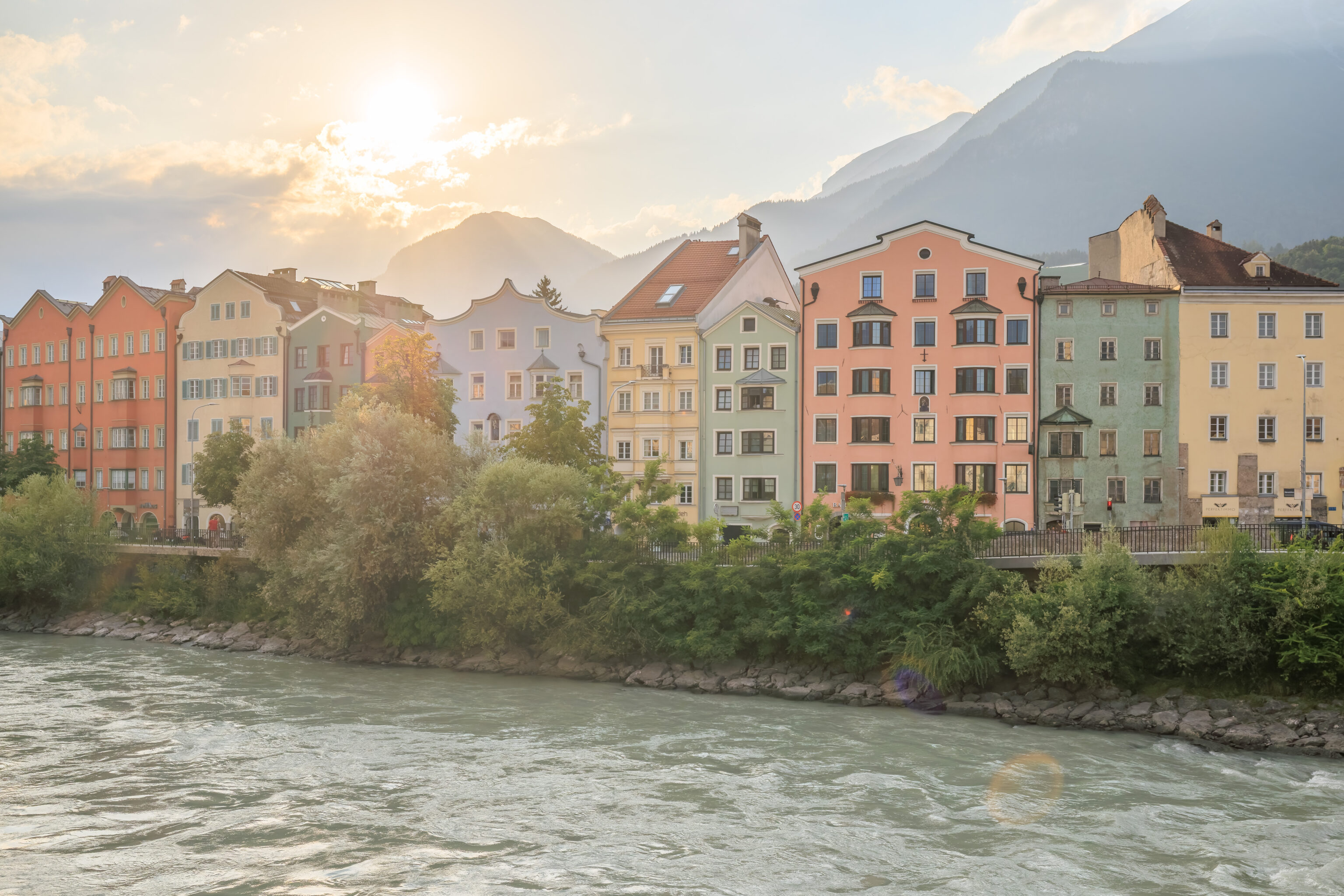
These colorful buildings form the center of a famous view of Innsbruck from the south side of the Inn with the higher peaks of the Nordkette in the background. The riverfront area next to the bridge to get this view was being occupied by the market vendors so we just enjoyed it from a different perspective.

We continued to walk to the northern side of the Inn.
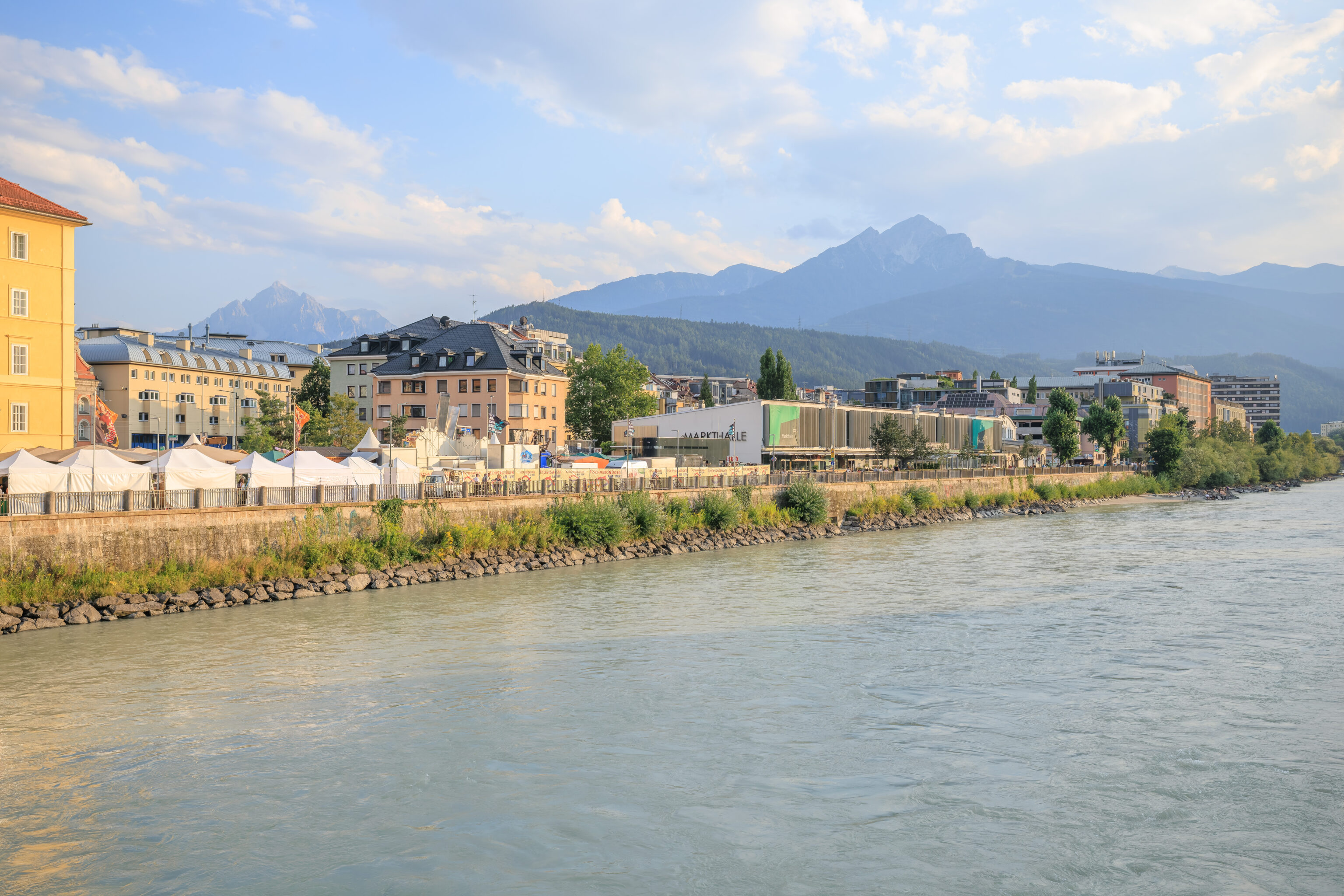
The view from the north looking back at the Marktplatz and Markthalle.
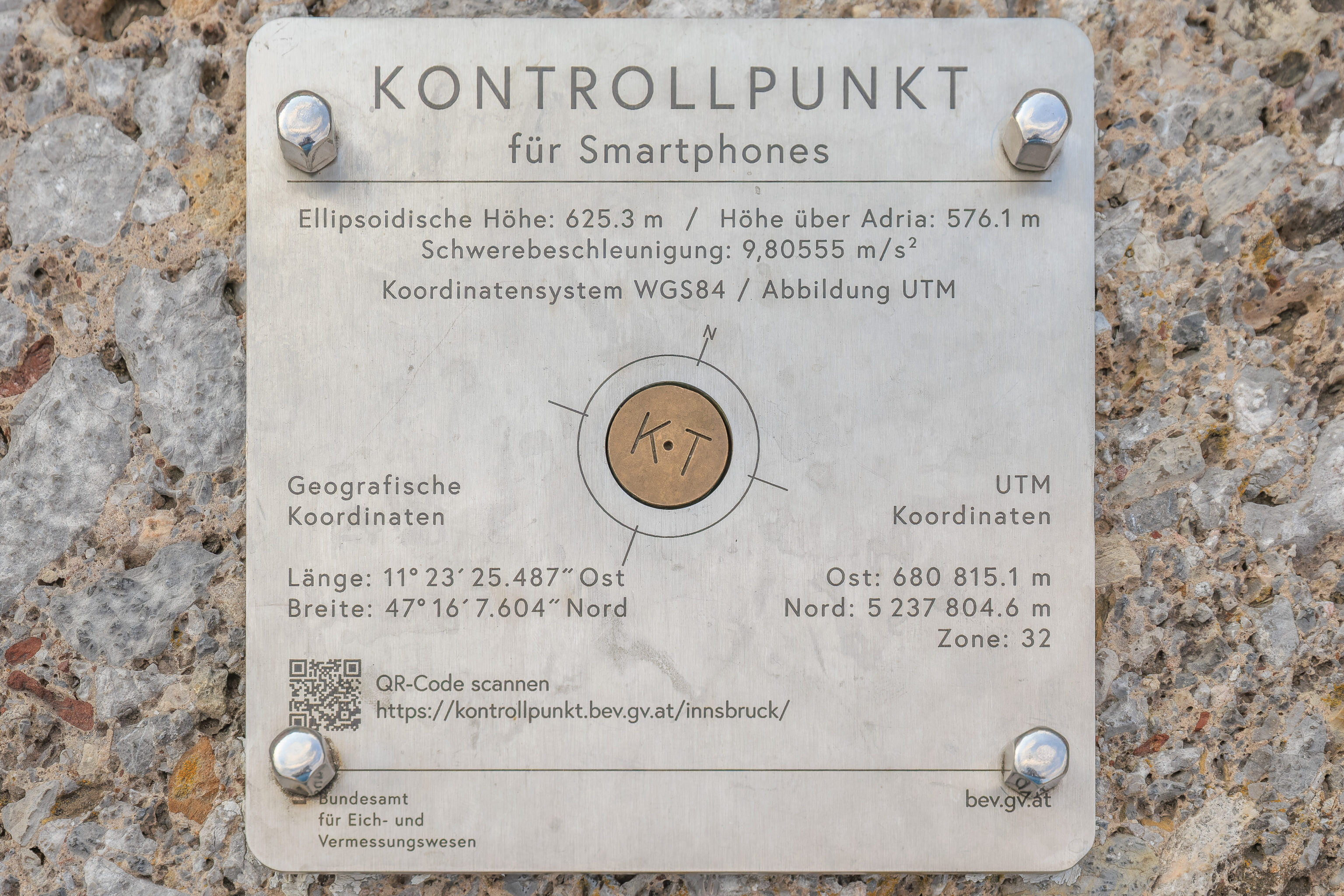
We didn’t photograph it, but there was a drinking water fountain nearby. We ended up refilling our water bottles with the ice cold water, which was fantastic as it has been a hot day. The fountain was extremely slow though!
Nearby, we saw this control point for smartphones. It provides a way to check the accuracy of the GPS, or more generally GNSS as there are other non-US positioning systems, on your phone. These control points are provided by the Austrian Federal Office of Metrology and Surveying.
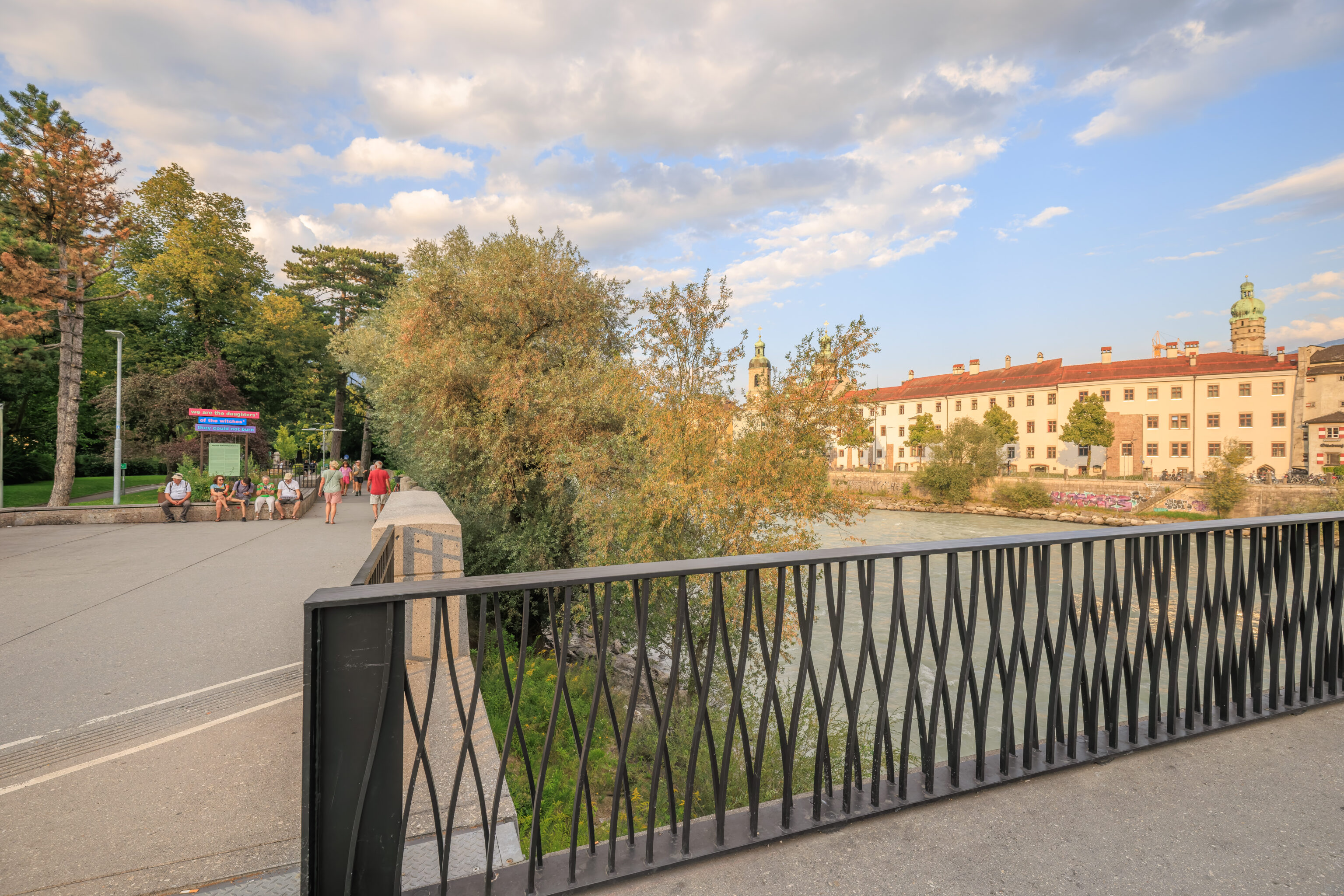
We crossed the street to return to the south side of the Inn via the northeastern side of the bridge. In the background on the left, the colorful signs contain the text:
we are the daughters*
of the witches*
they could not burn
What does this mean? This appears to be a feminist statement that comes from a 2015 book, The Witches of BlackBrook by Tish Thawer.
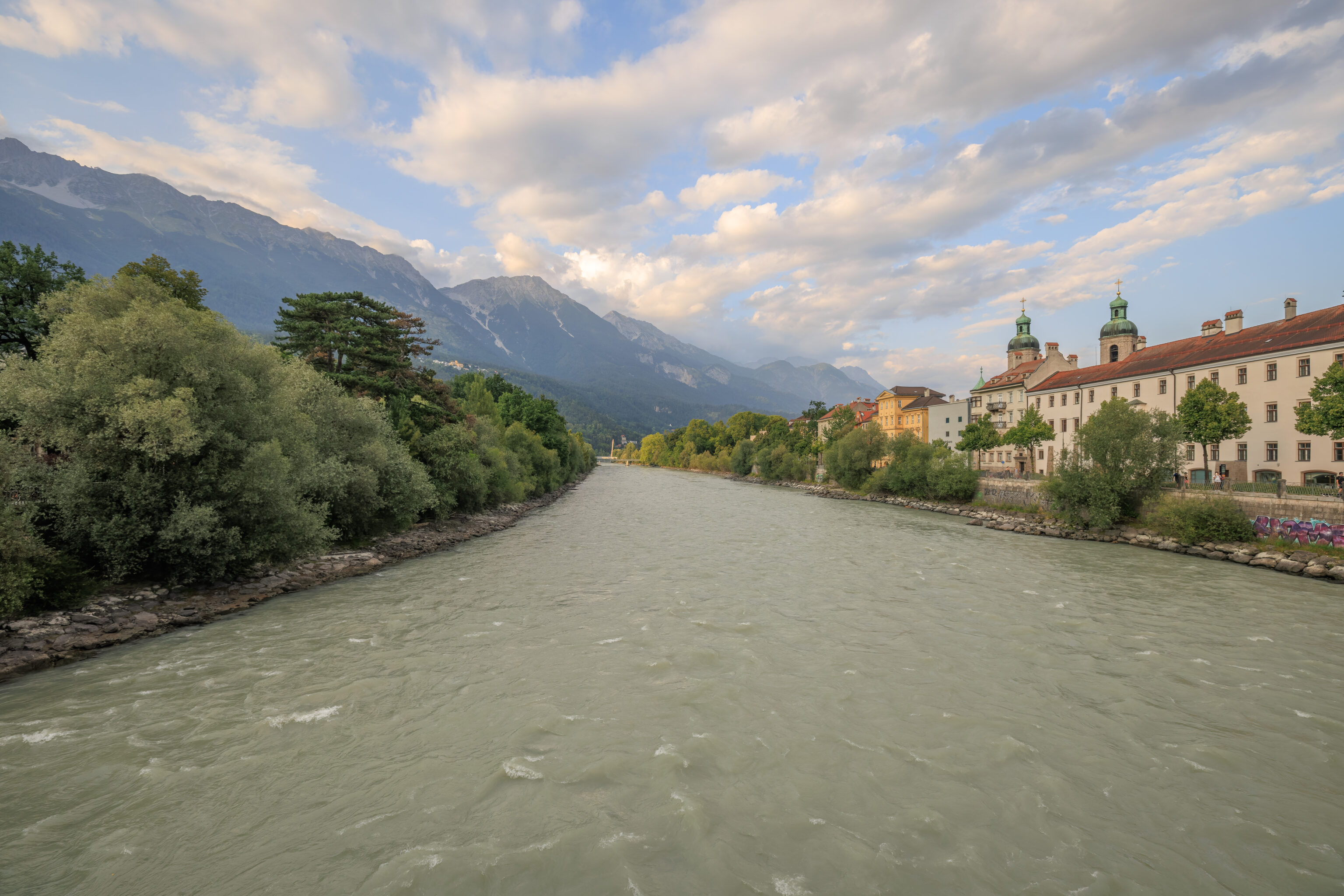
The view to the northeast from around the middle of the bridge.

Zooming in a bit, we can see more bridges ahead. And, part of the railway for the funicular that goes up to Hungerburg, which we rode on our first day here in Innsbruck.
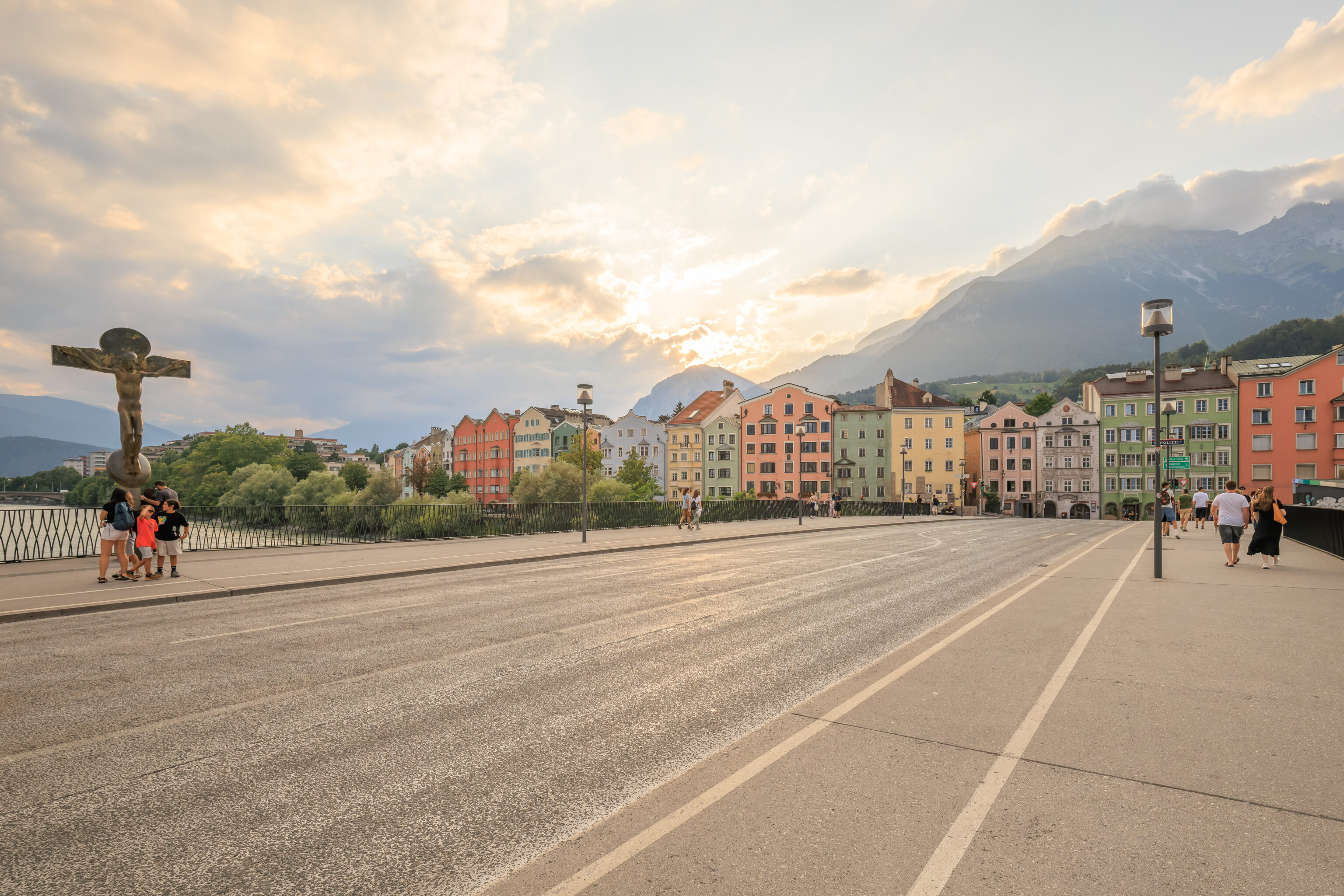
The view looking back towards the Sun.

After returning to the southern bank of the Inn, we could either cross the street and enter the Altstadt or follow the river.


We decided to follow the river to the northeast.
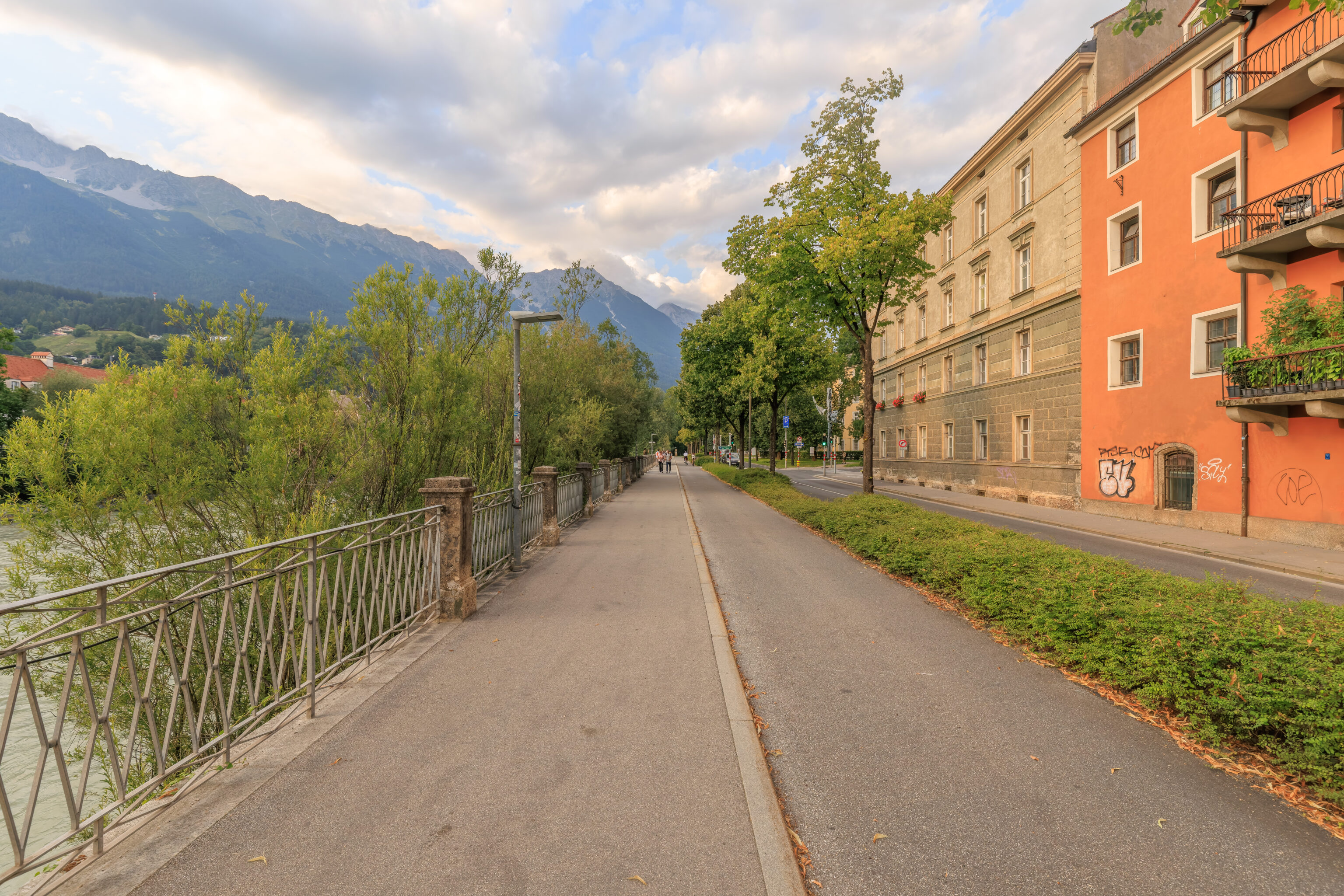
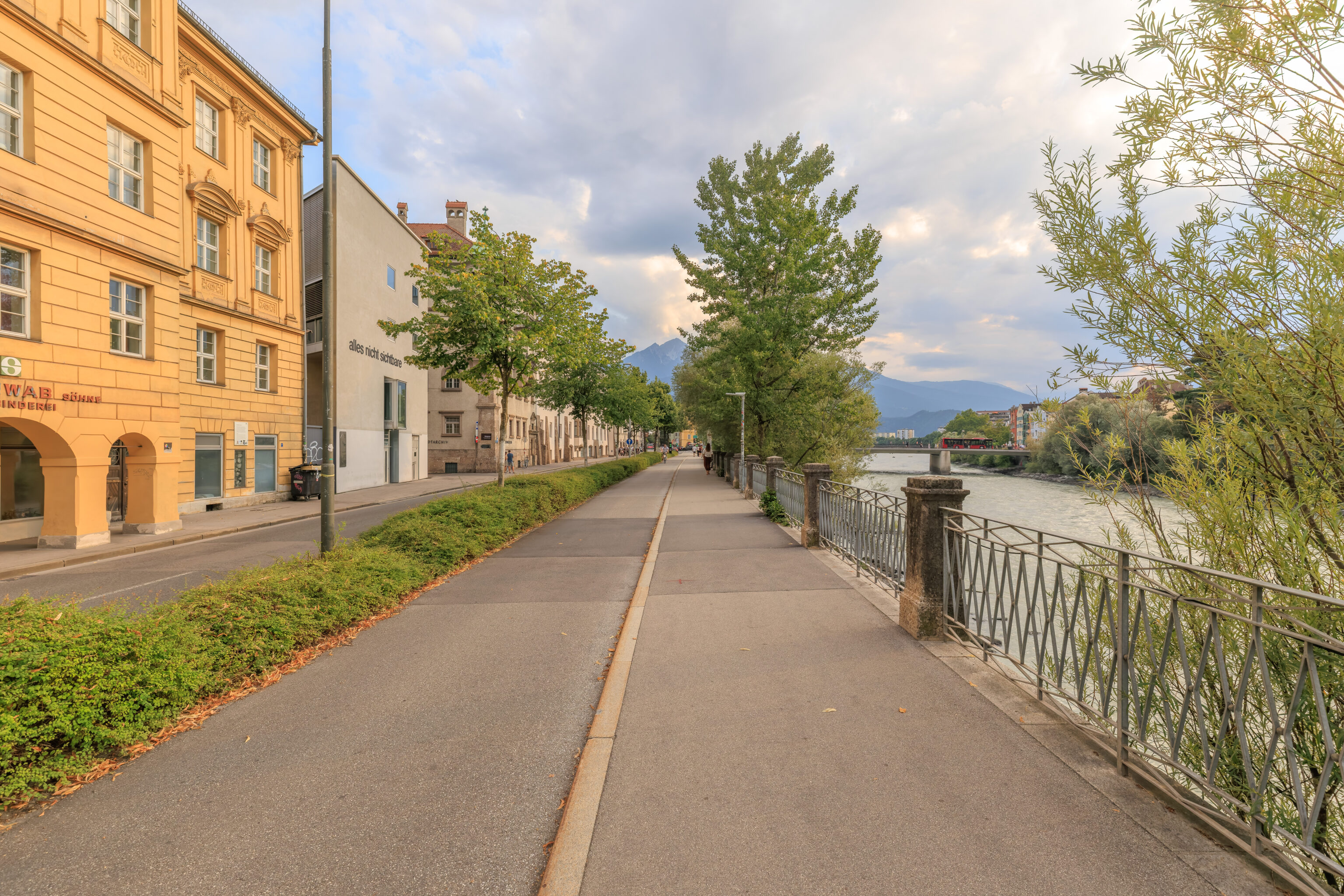
This area, at the edge of the Altstadt, was pretty quiet.


We walked for about three blocks or so.
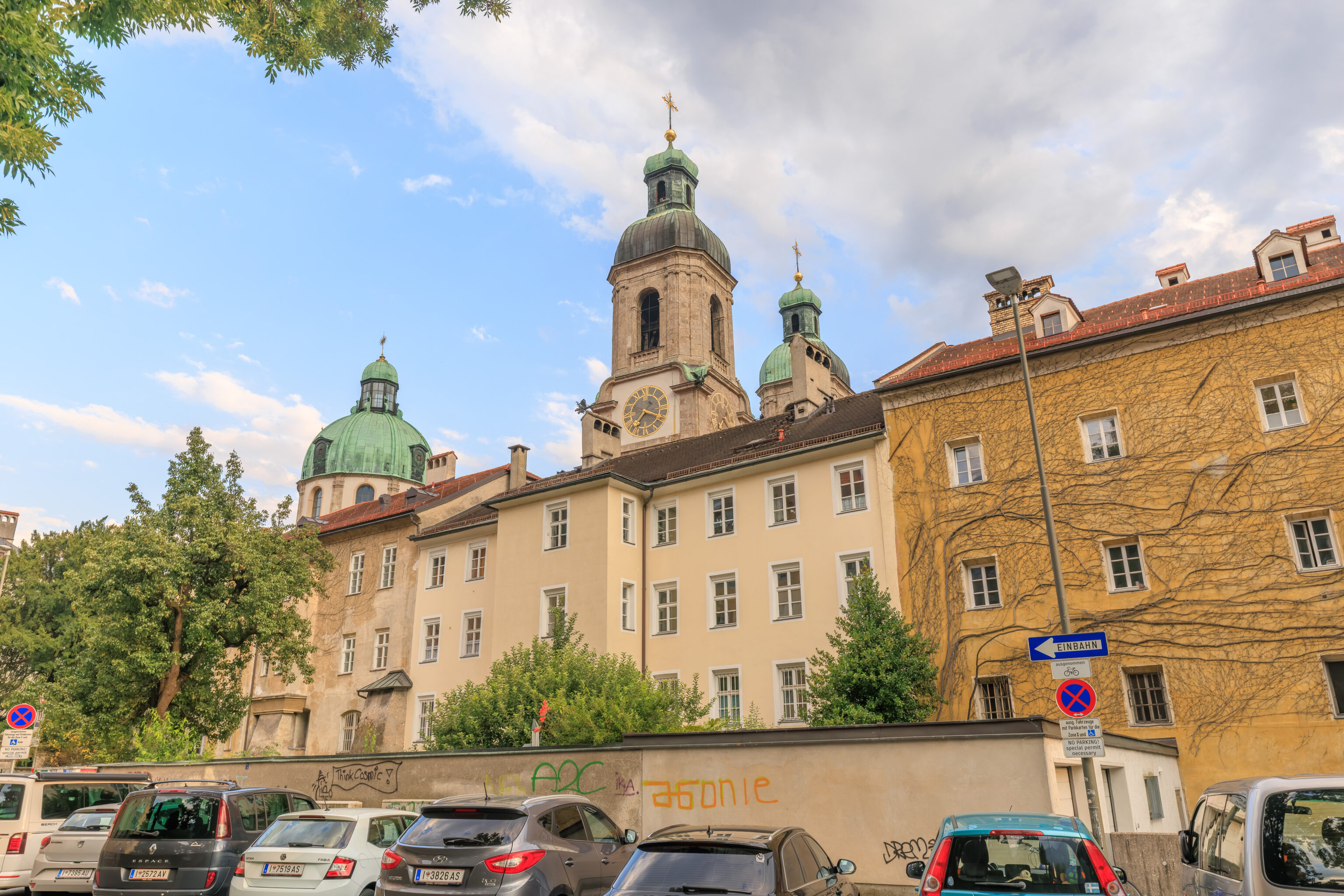
We decided to turn and visit the Dom zu St. Jakob (Cathedral of St. James), also known as the Innsbruck Cathedral. We were going to visit on our first day in the evening but ended up walking past it and having dinner instead.

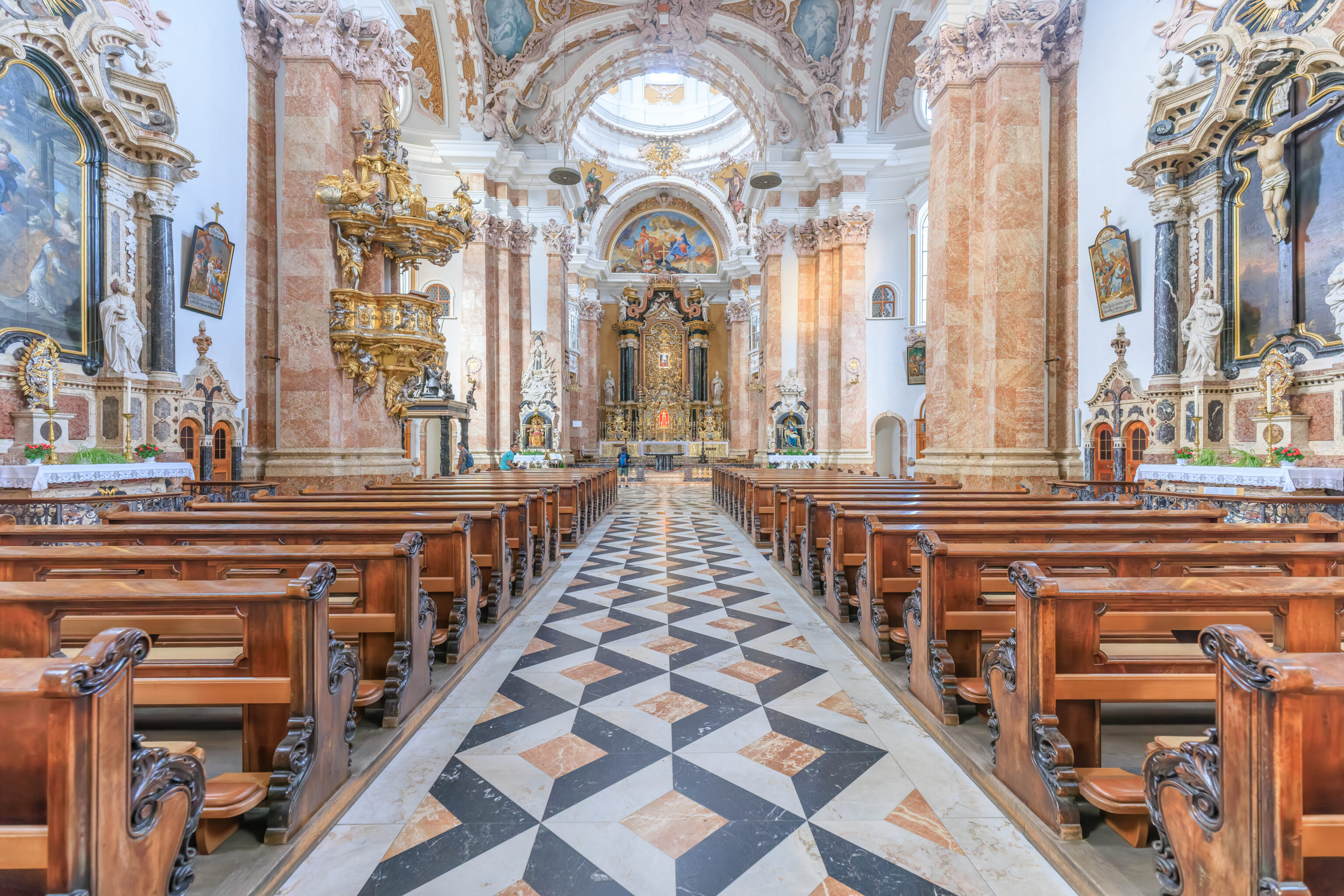
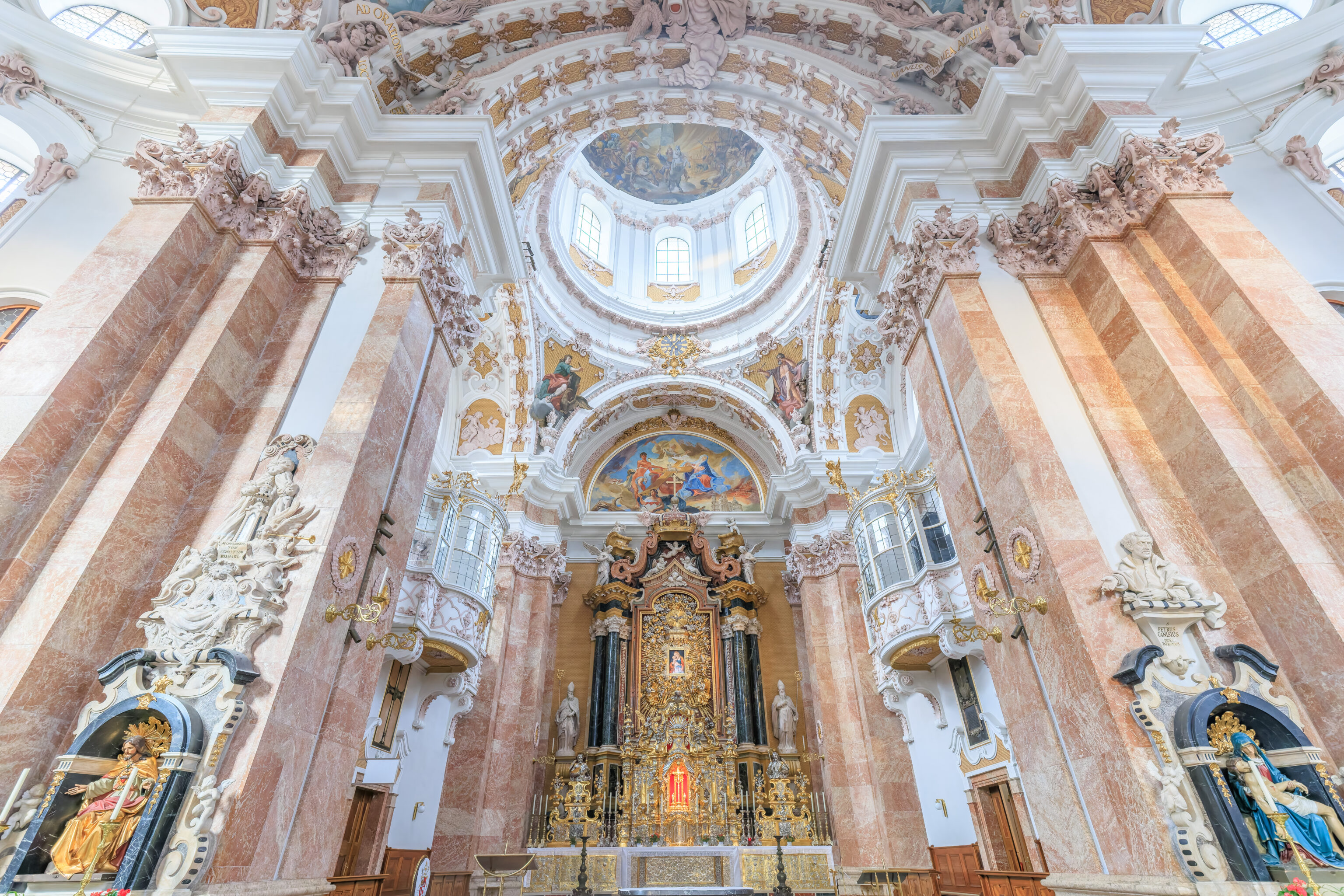



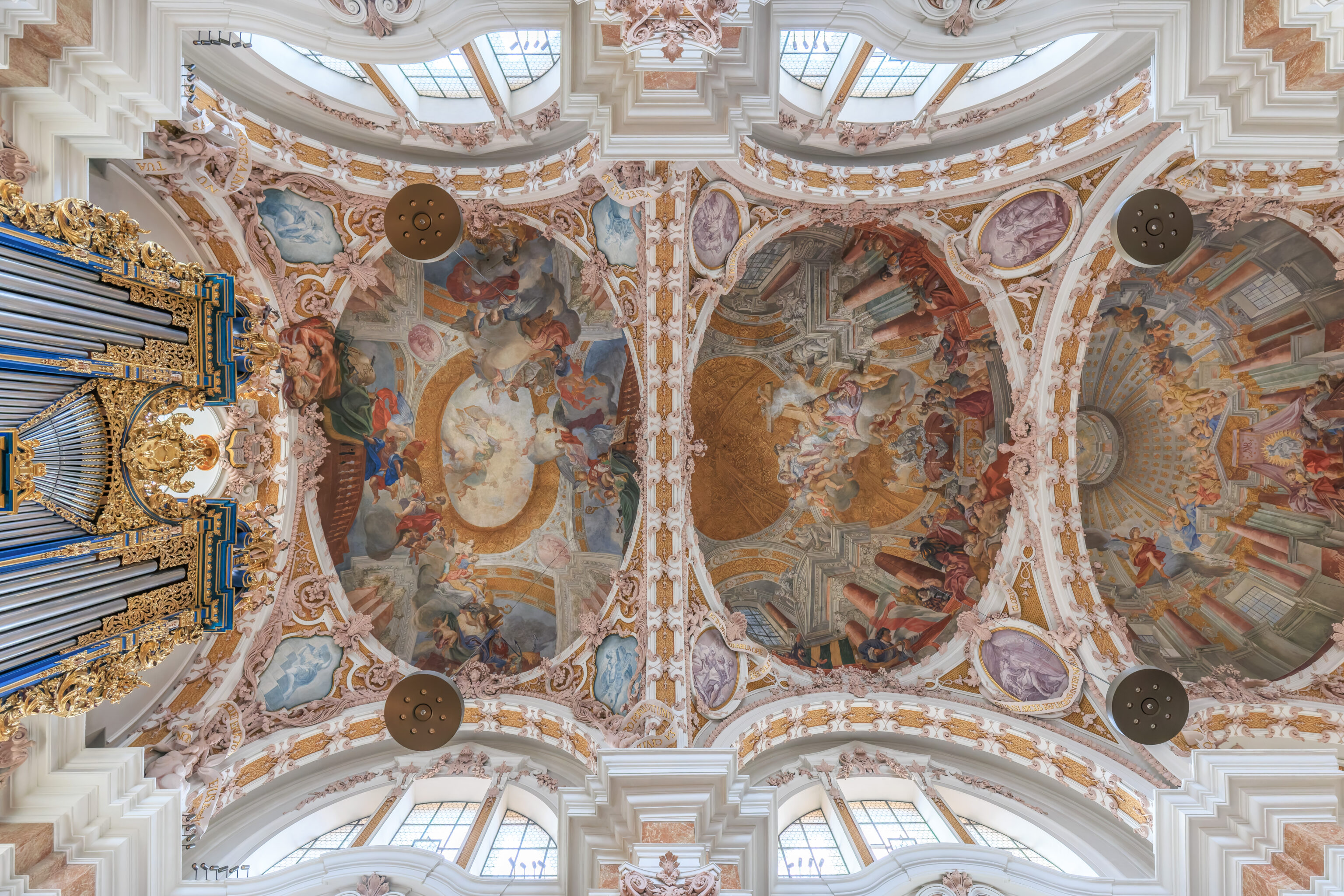
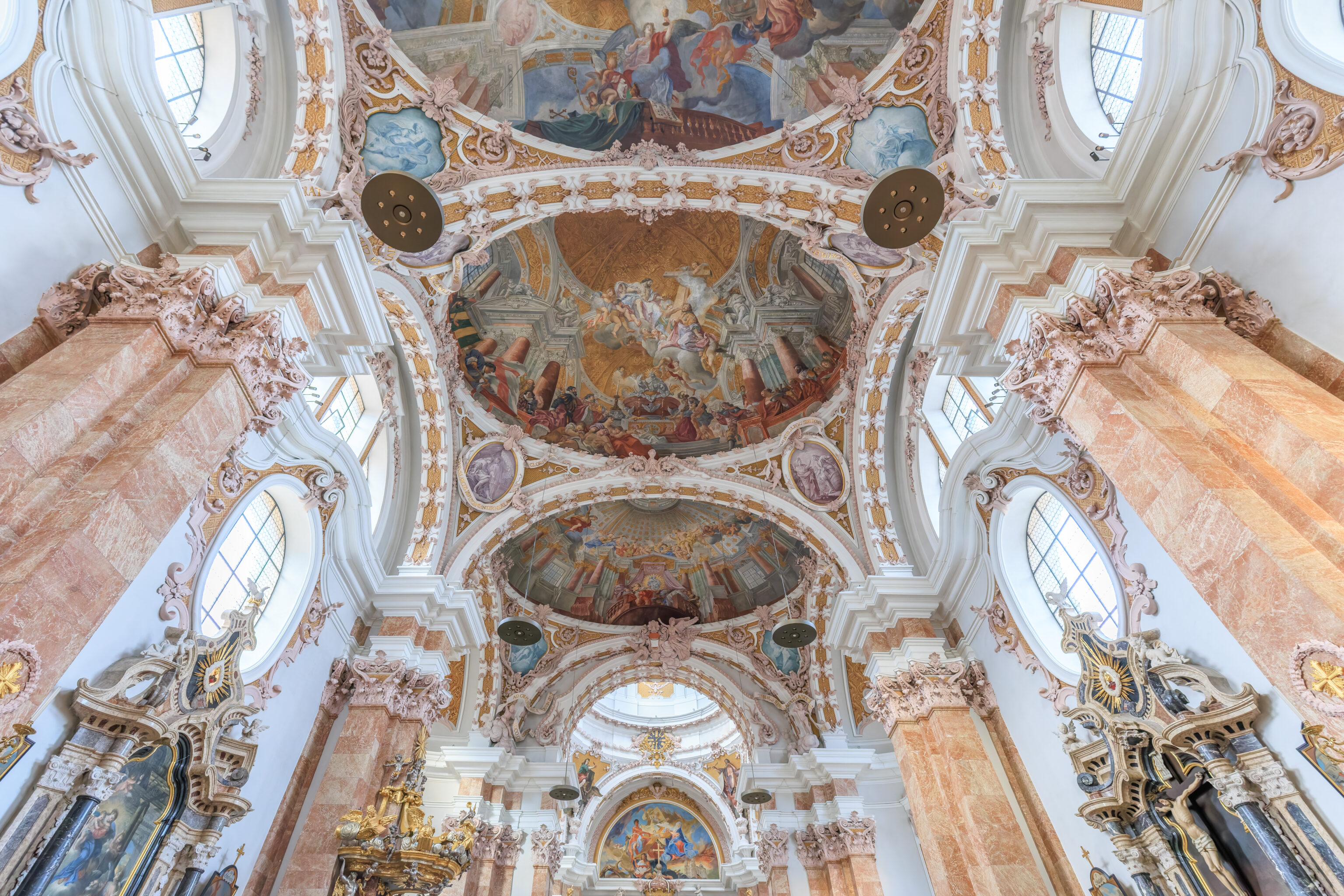
The interior was pretty grand and had white walls, marble, and many paintings.

We spent a few minutes inside before heading back out.

We walked to the little park in front of the church to sit for a bit. We noticed this rainbow bench in the park!
As we were about to leave, the cathedral’s bells started to ring. They seemed to ring for a long time so we started to record a video. It kept on going for longer than expected!

We started to head back to the AC Hotel.
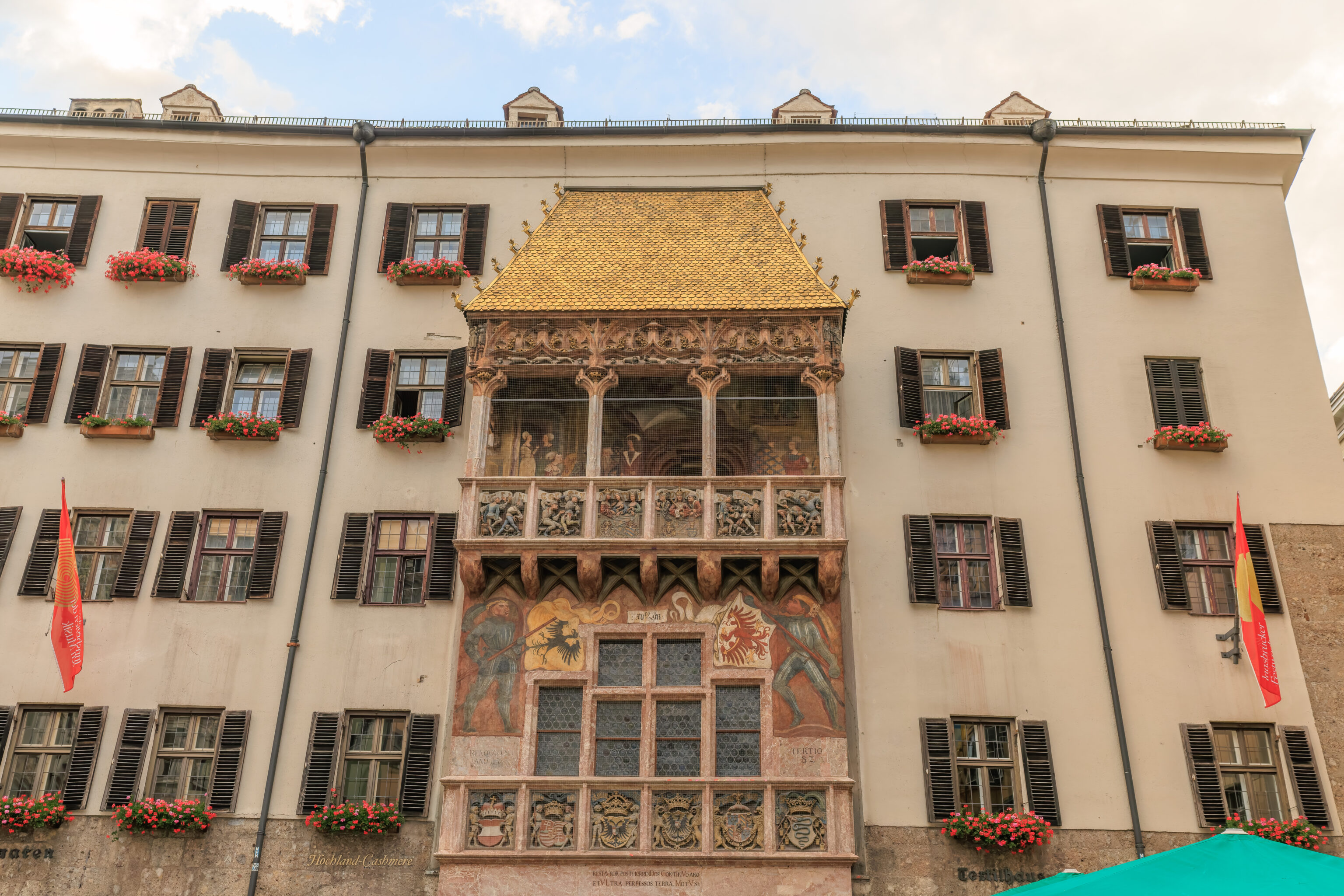
We passed by the Goldenes Dachl (Golden Roof) on the way. It didn’t look as impressive as when we first saw it the other day when the Sun was shining directly onto it.
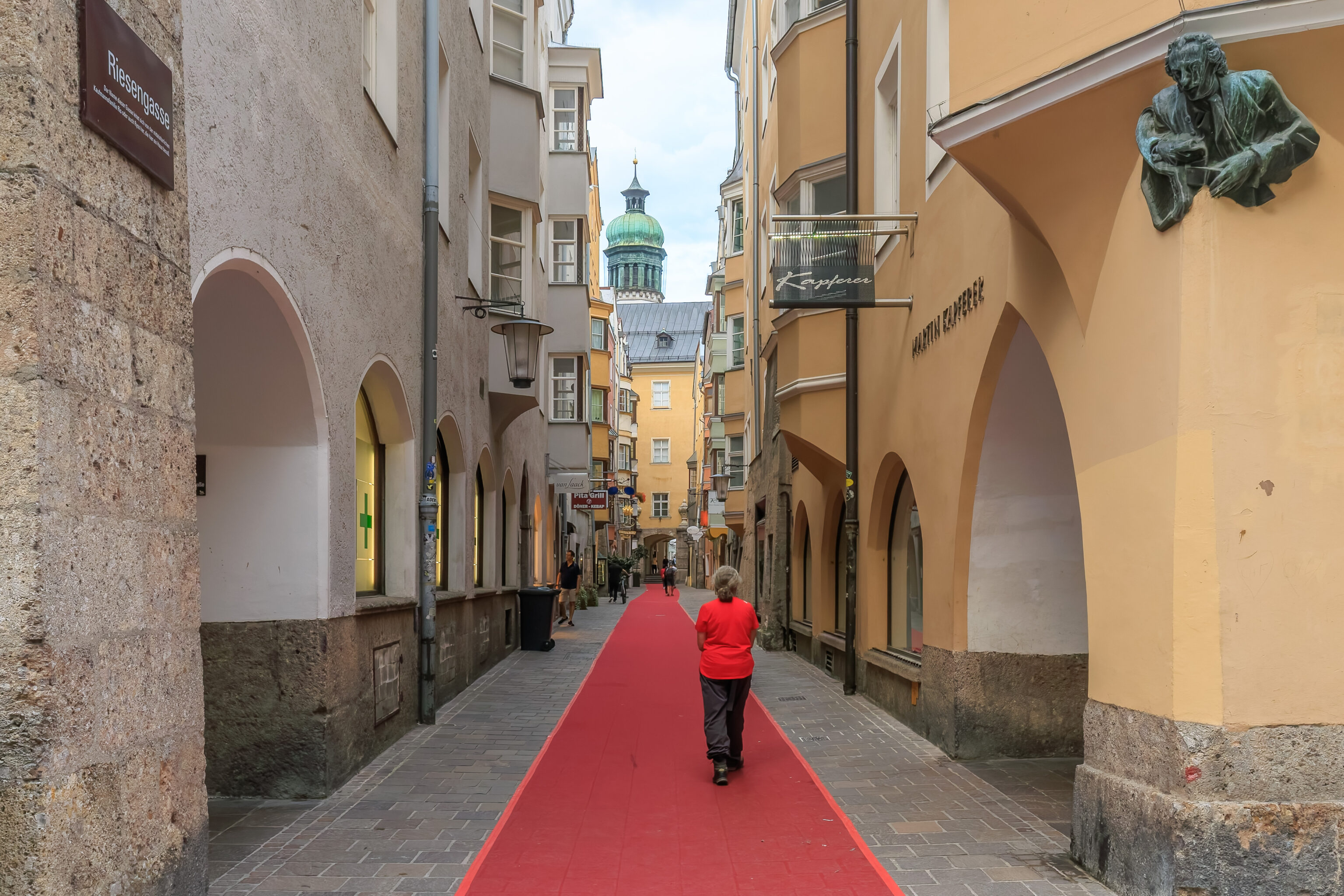
There was a red carpet on a side street! We don’t recall noticing it on the previous two days that we’ve been in Innsbruck. It’s possible we just didn’t pay enough attention, or maybe it is new.
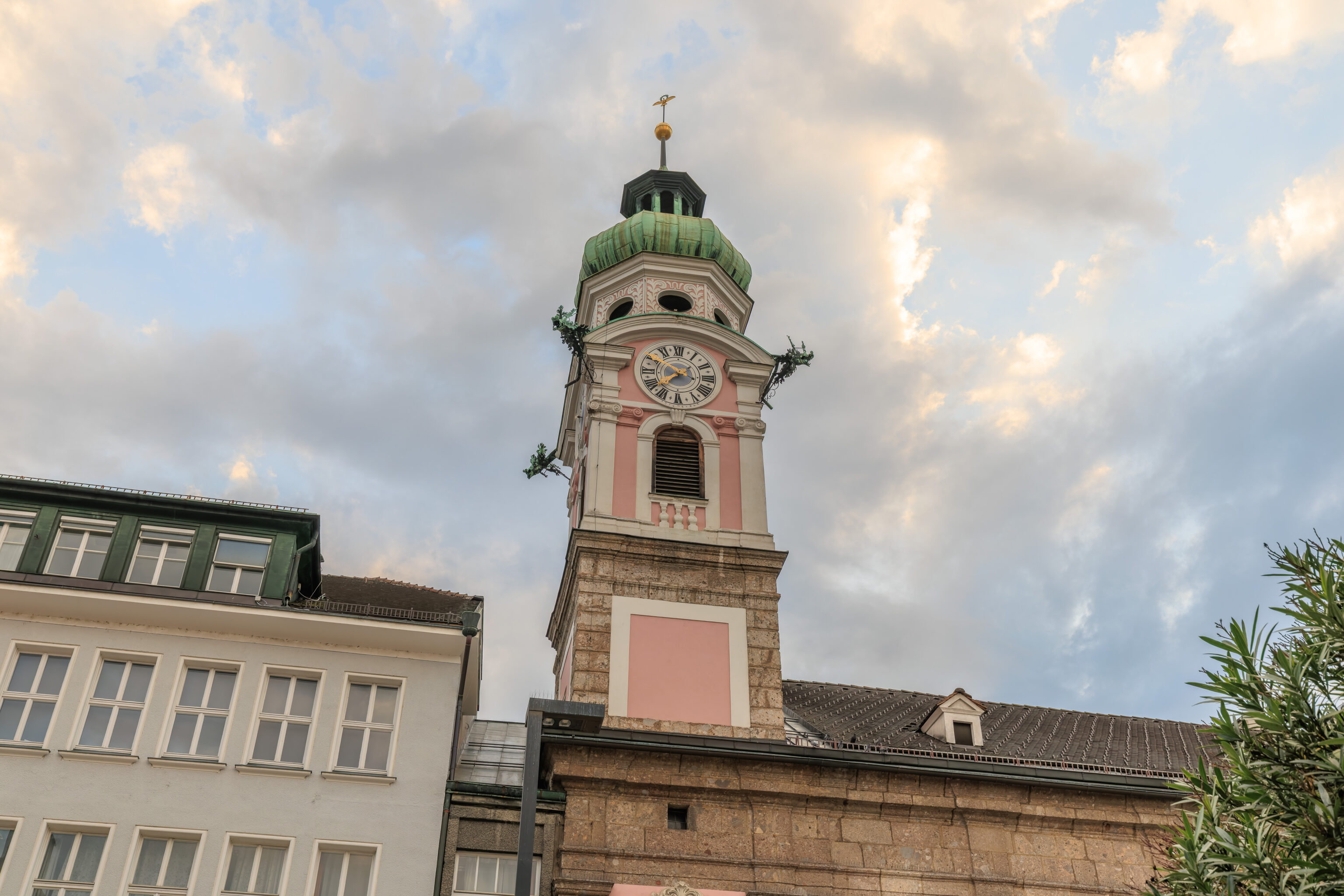
We walked by the Spitalskirche zum Heiligen Geist (Hospital Church of the Holy Spirit), which we briefly visited yesterday.
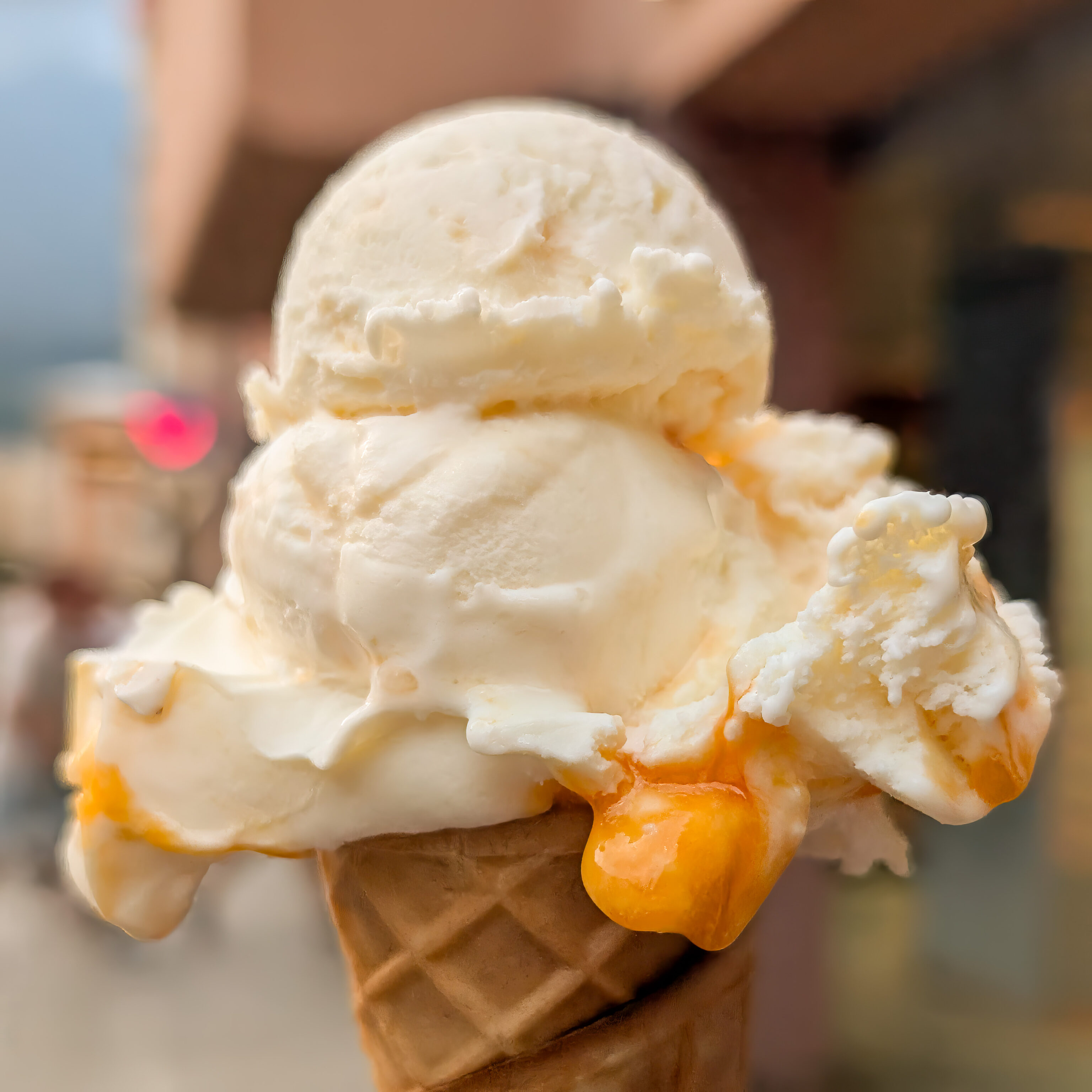

We visited Tomaselli Gelateria again and got two scoops of peach but also a scoop of passion fruit. It was excellent!
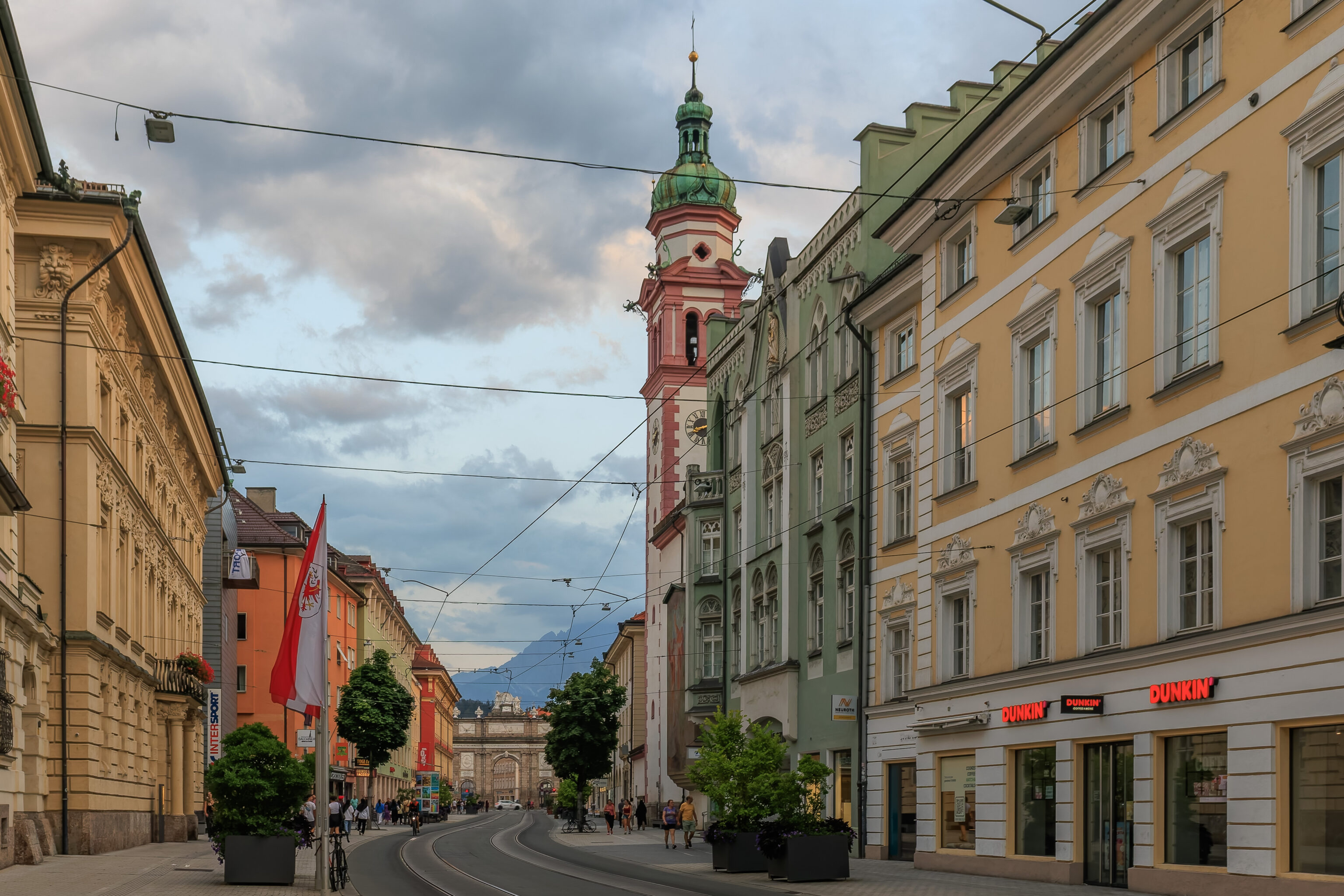
We continued walking south towards the AC Hotel.
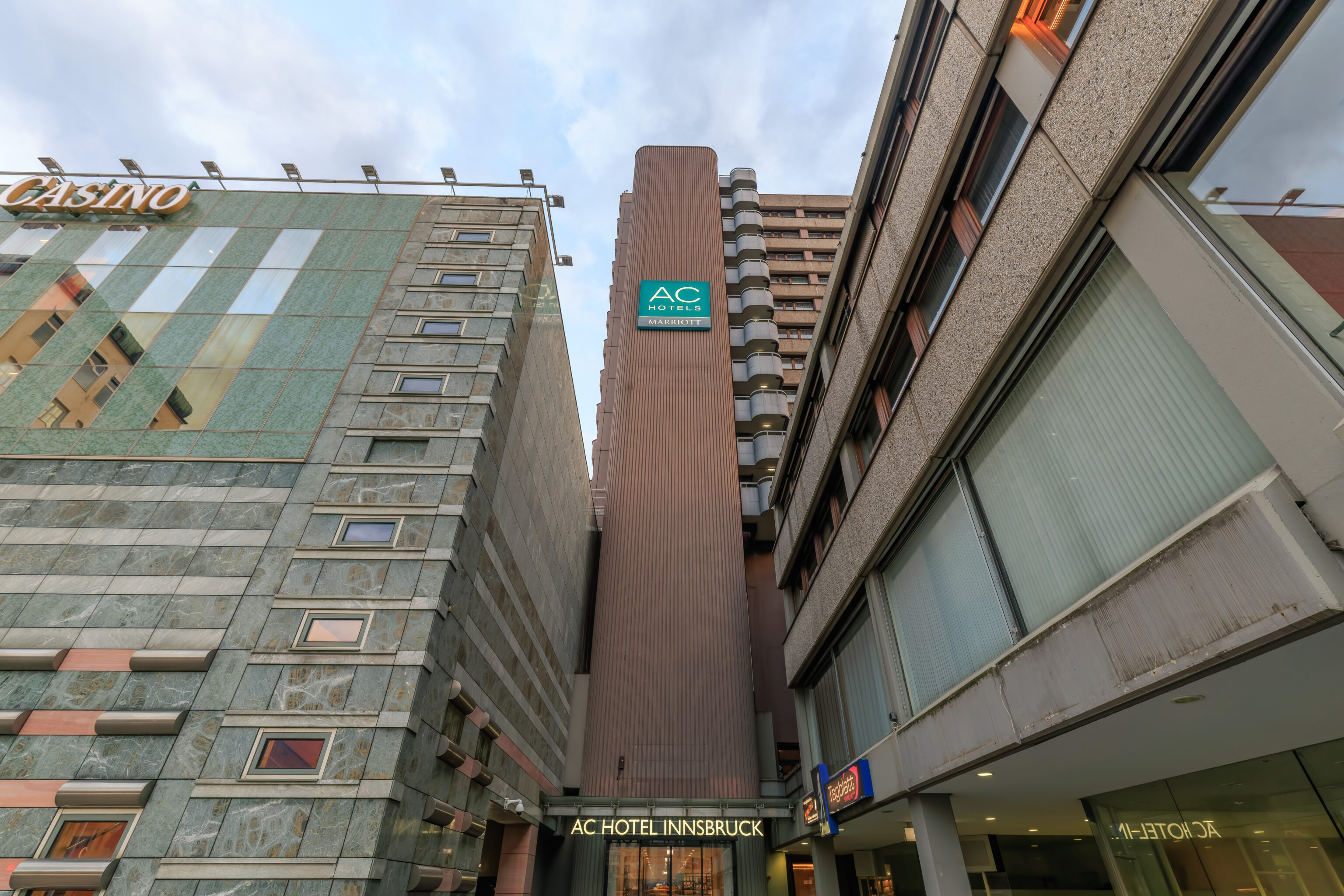
We returned at around 8:20pm.
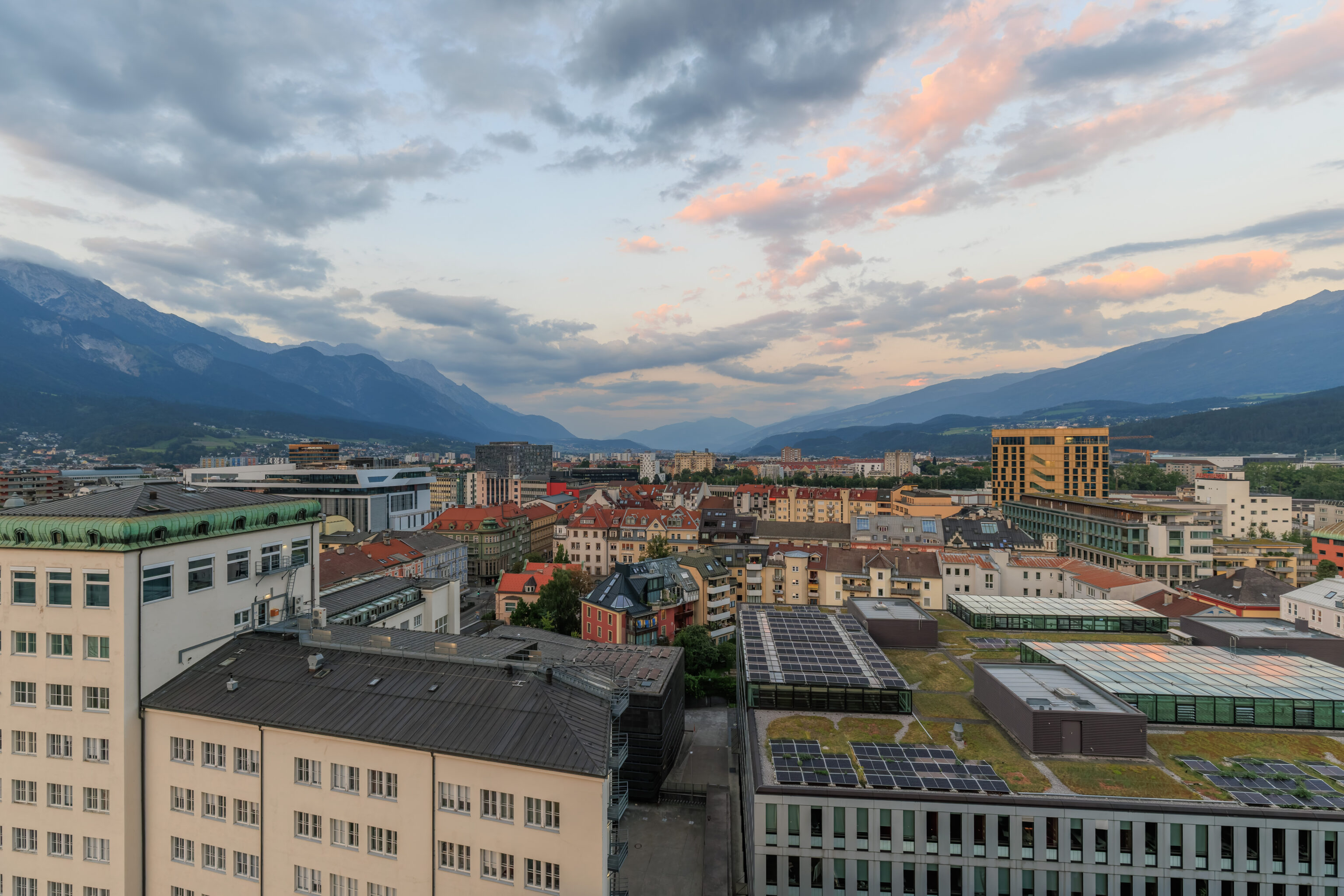
The view right before sunset from our room. By now the Sun had already descended below the mountains though, as is often the case when in a valley. There was just a bit of color in some of the clouds.
